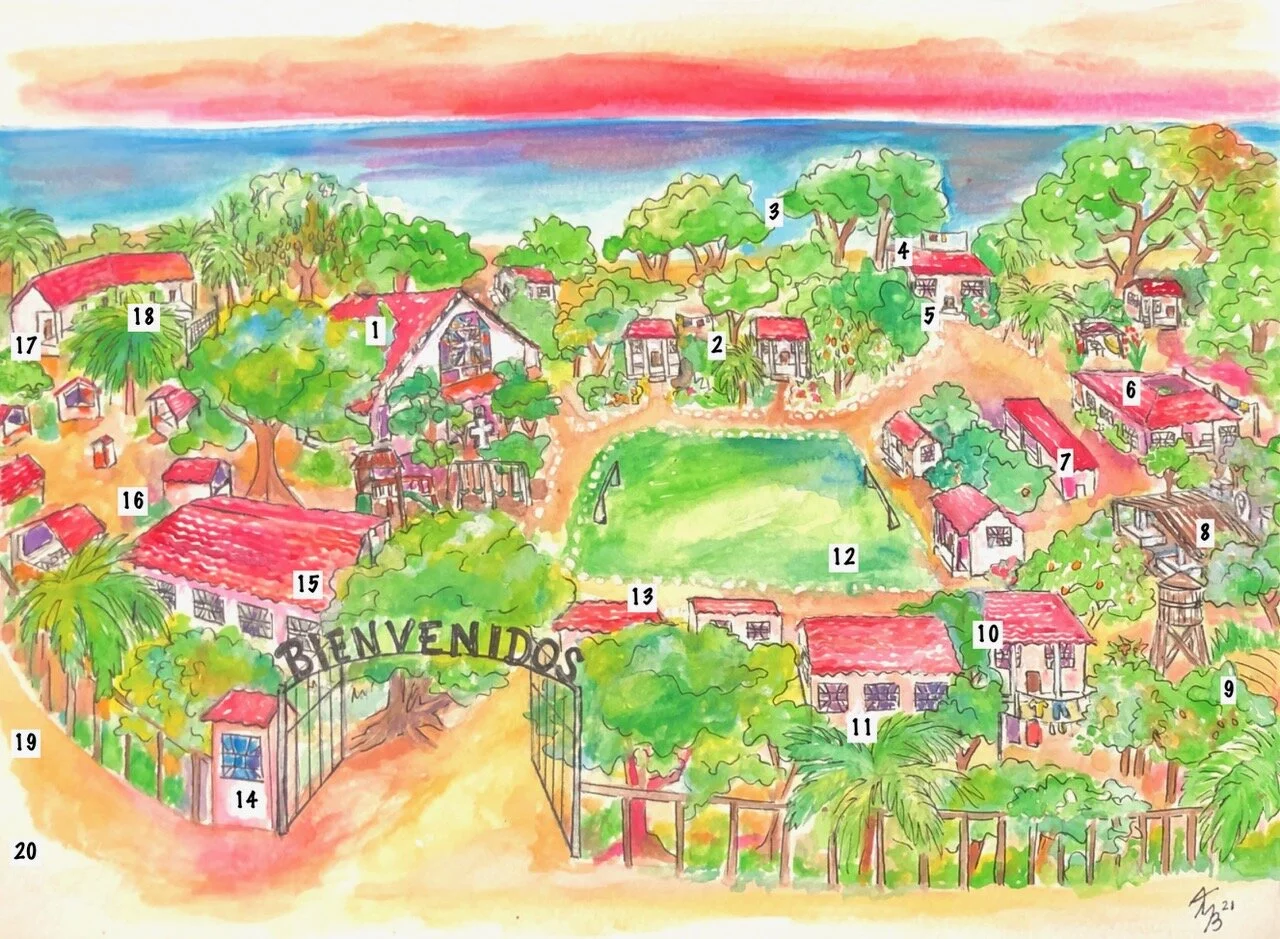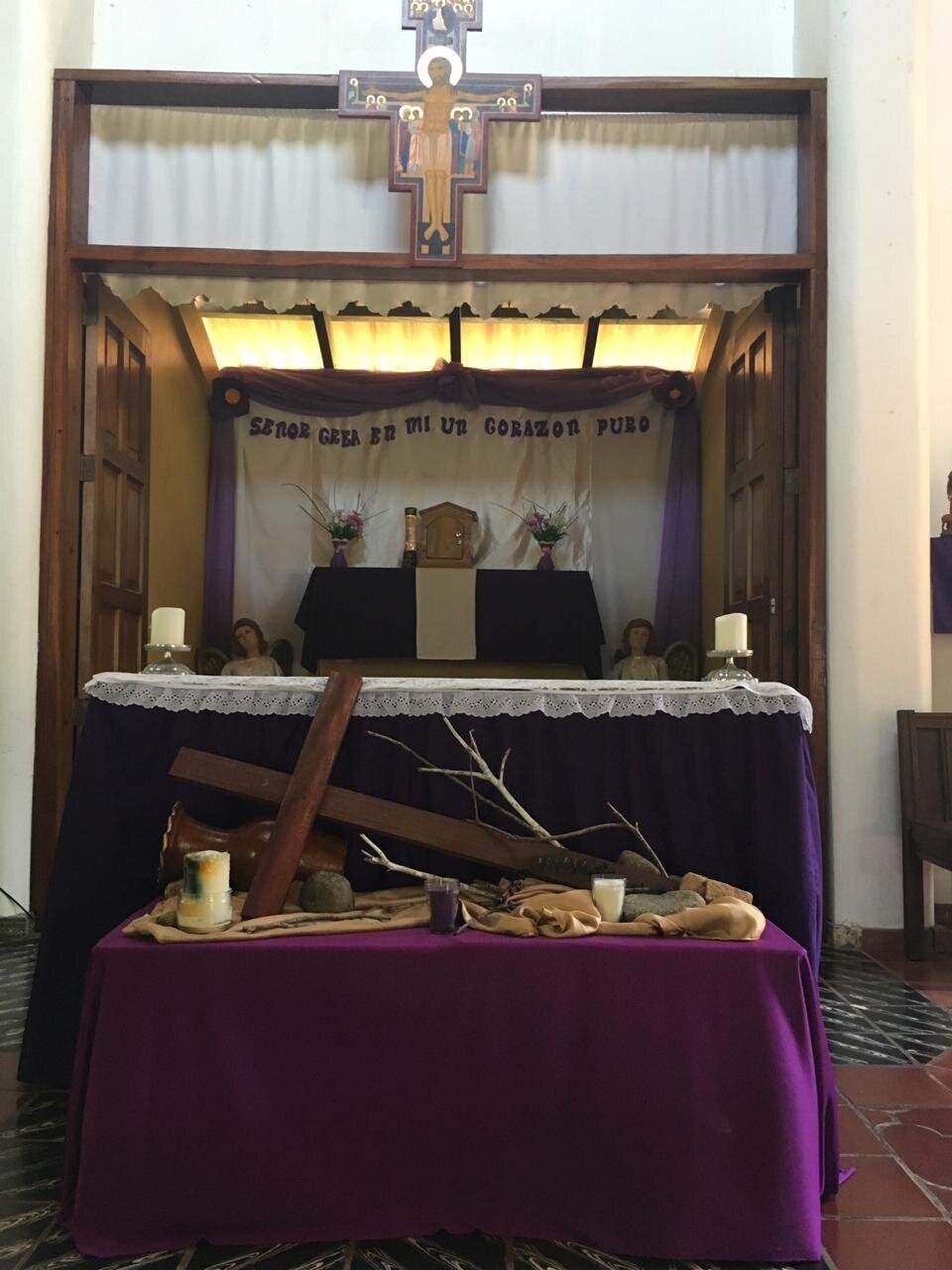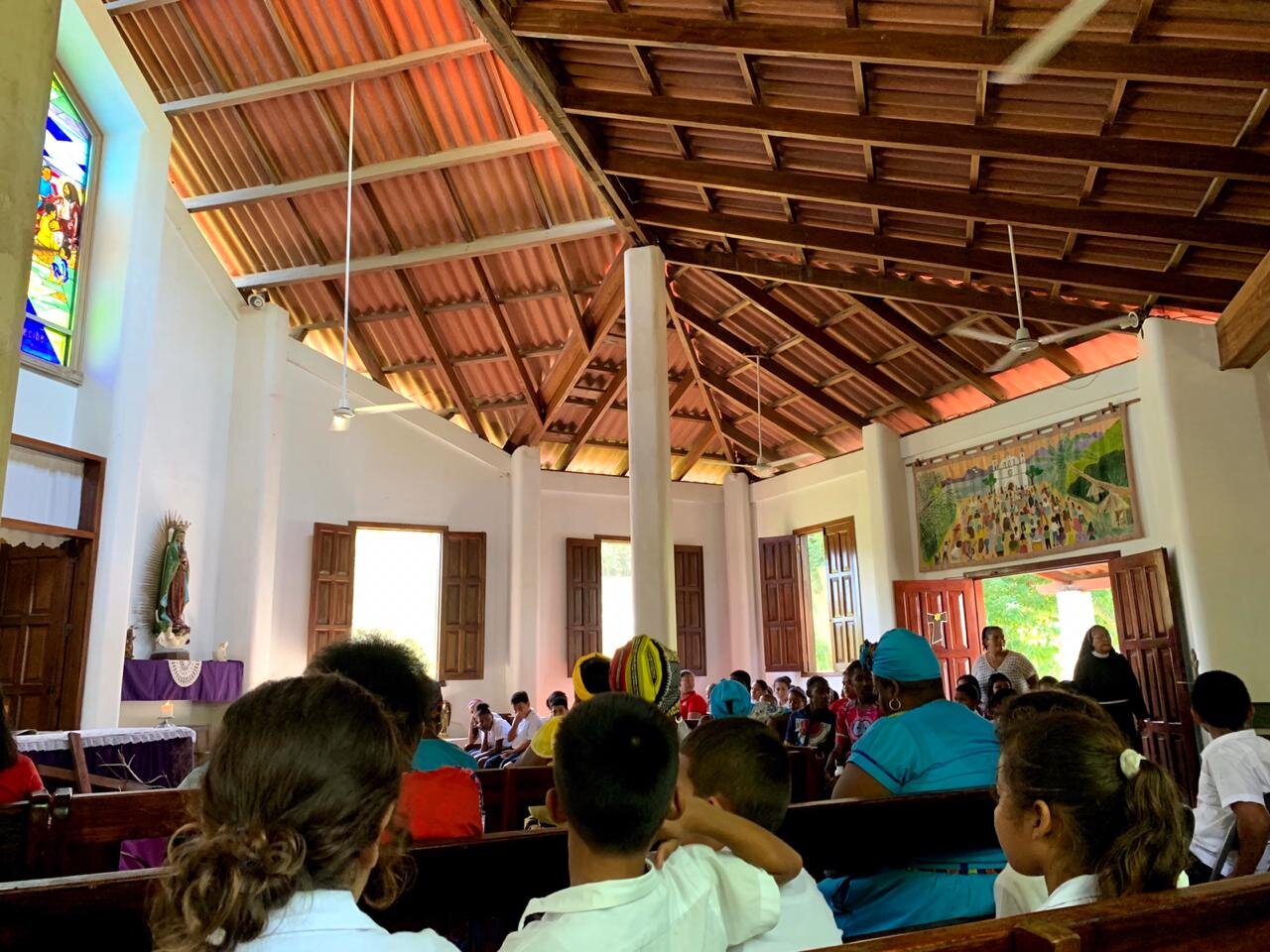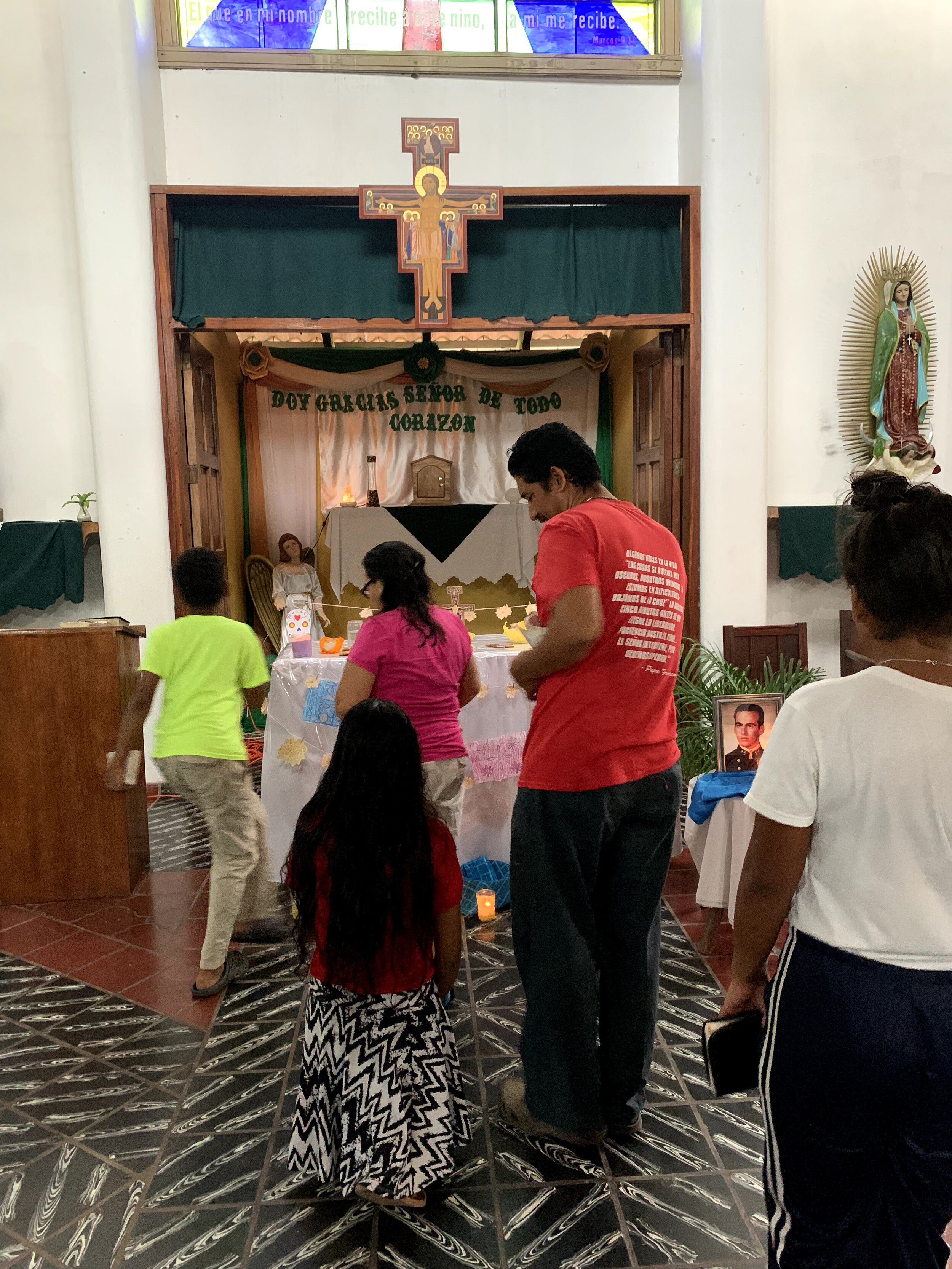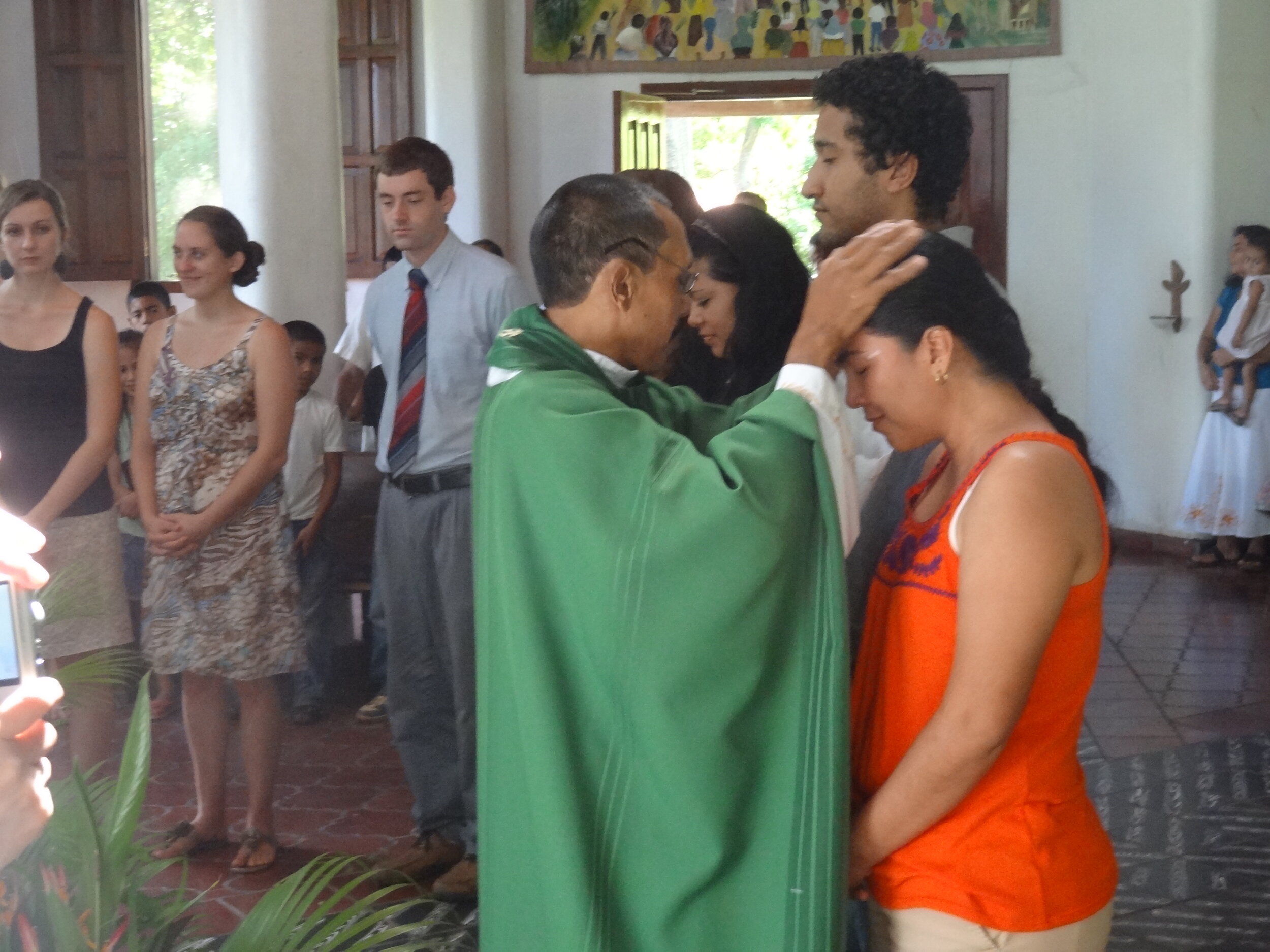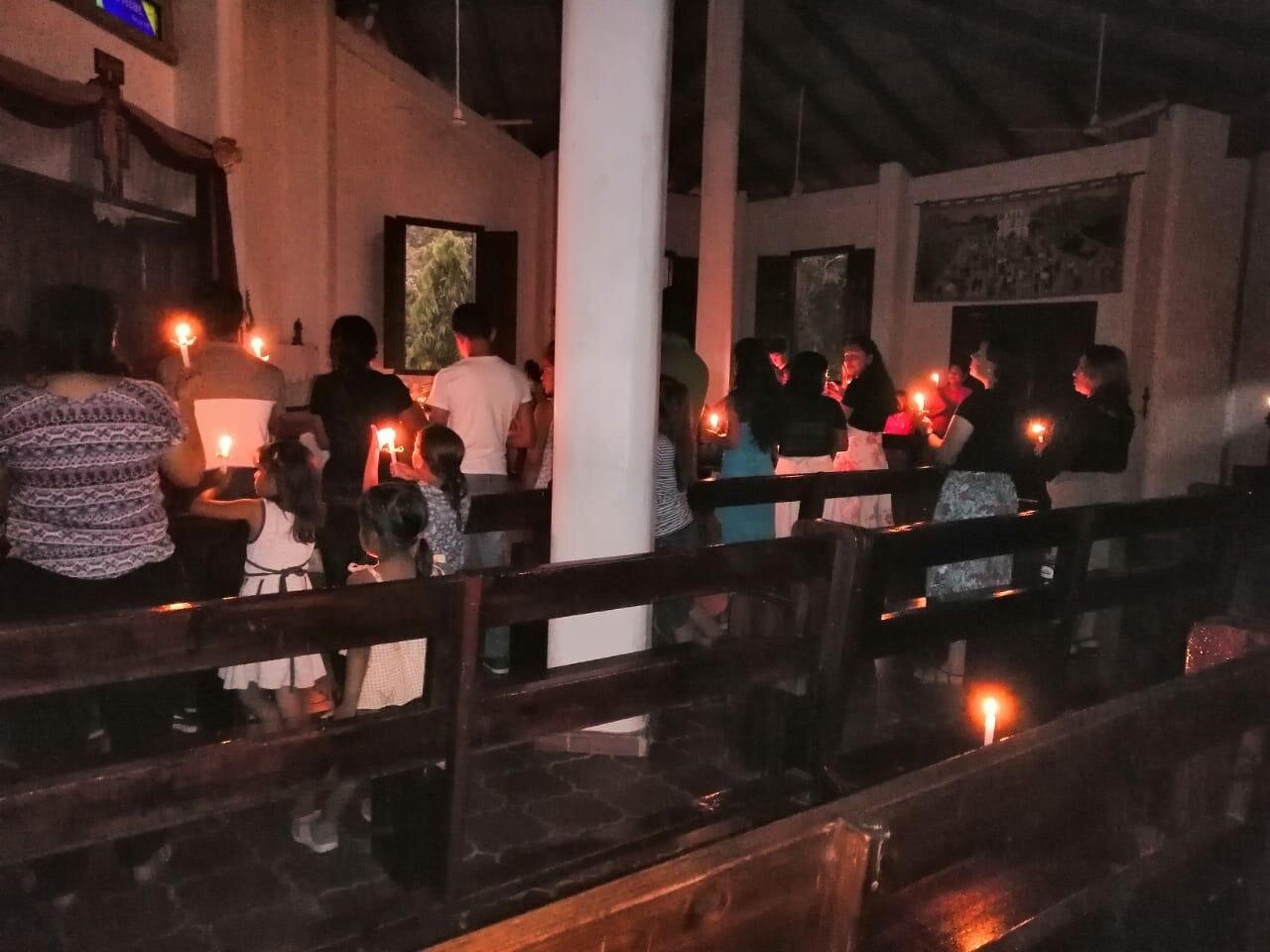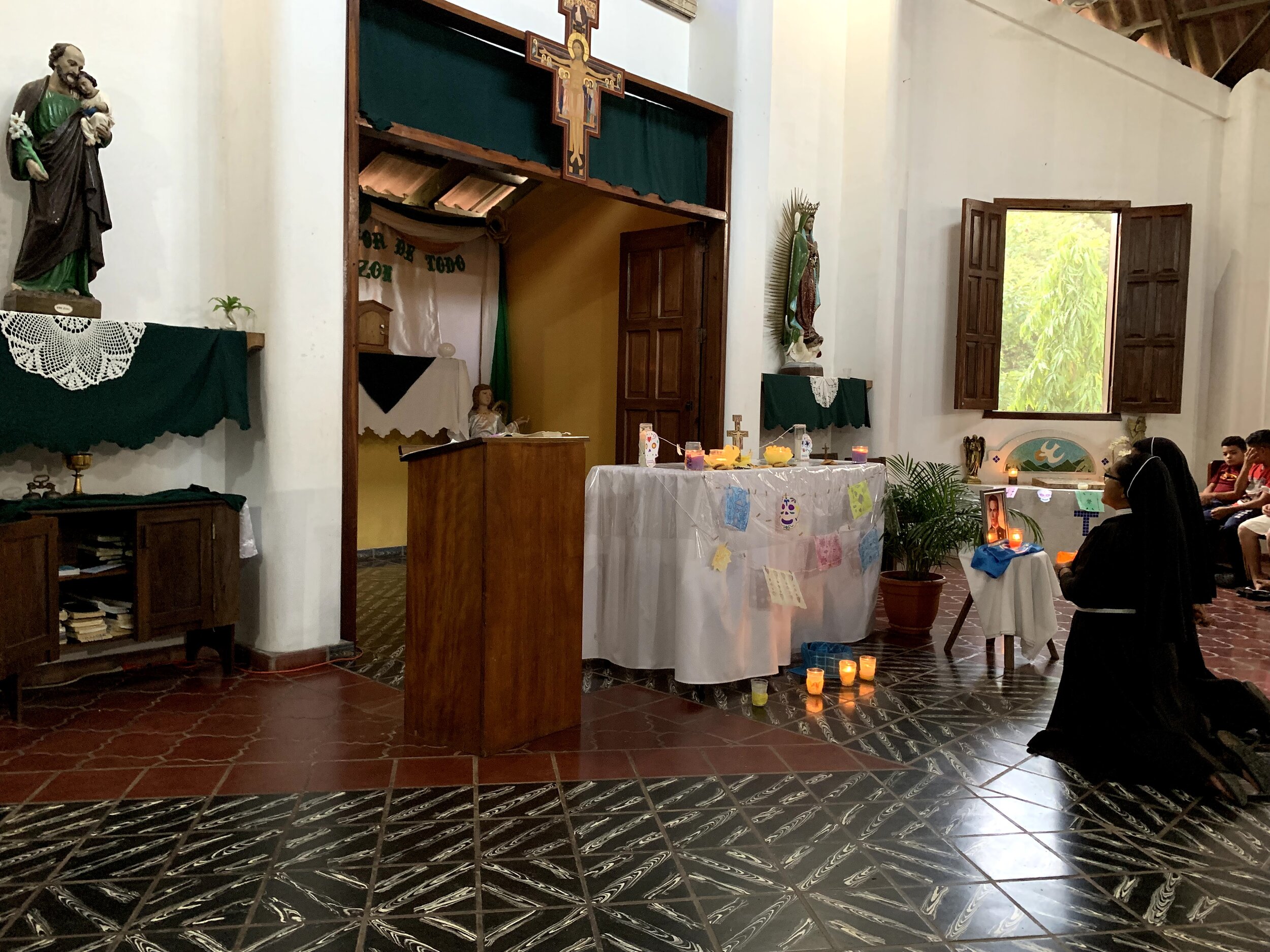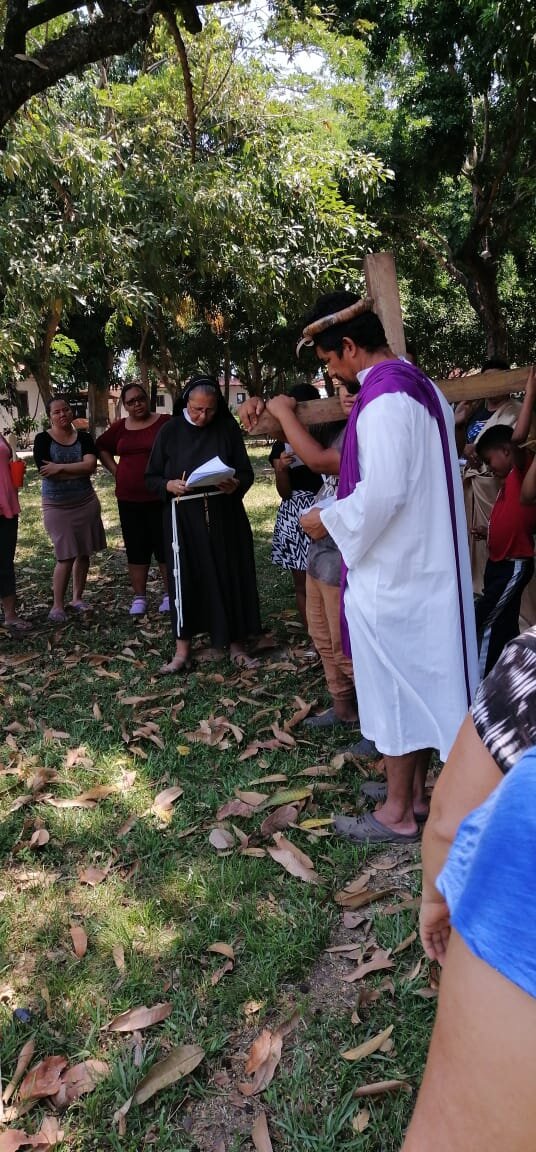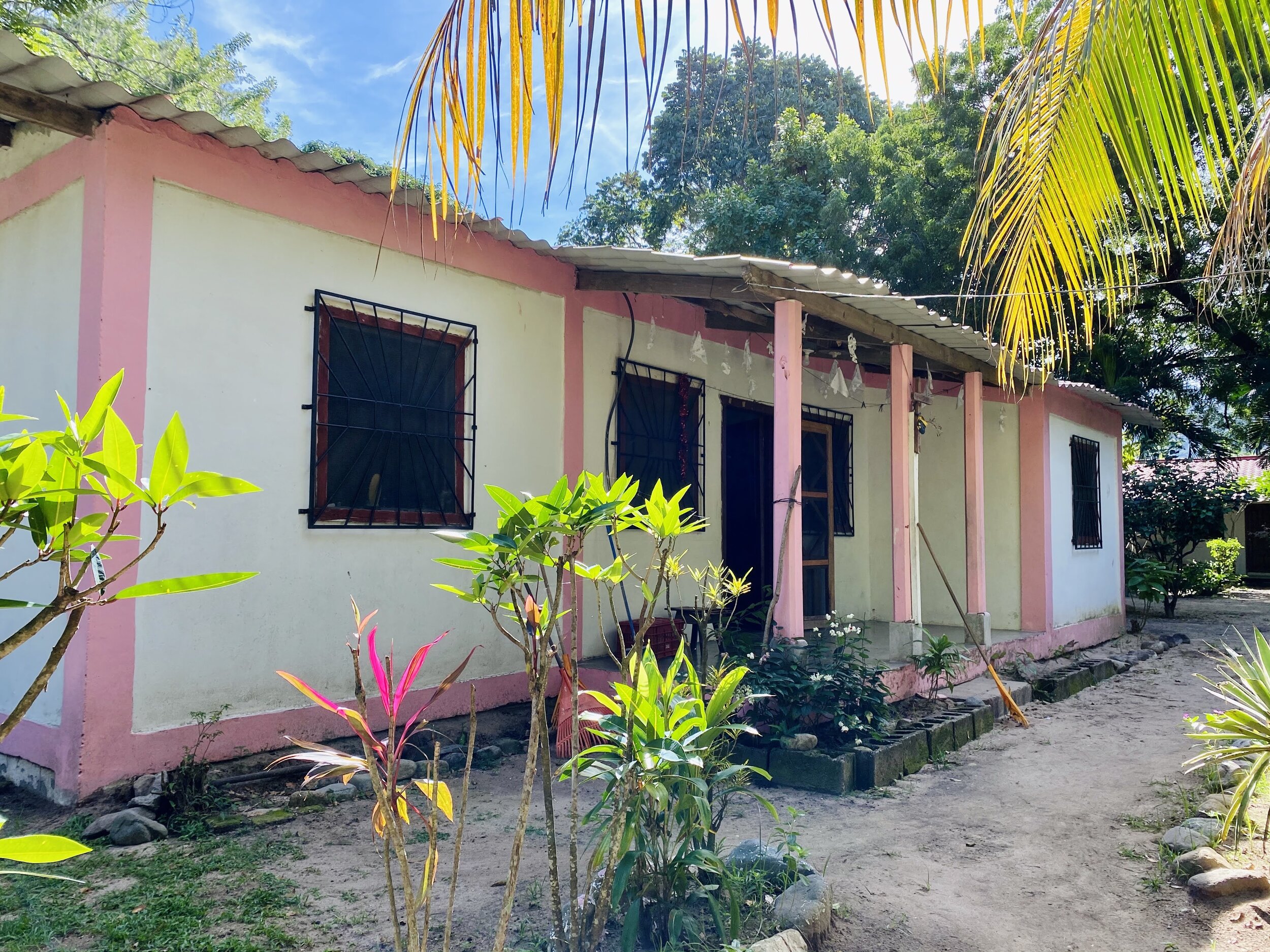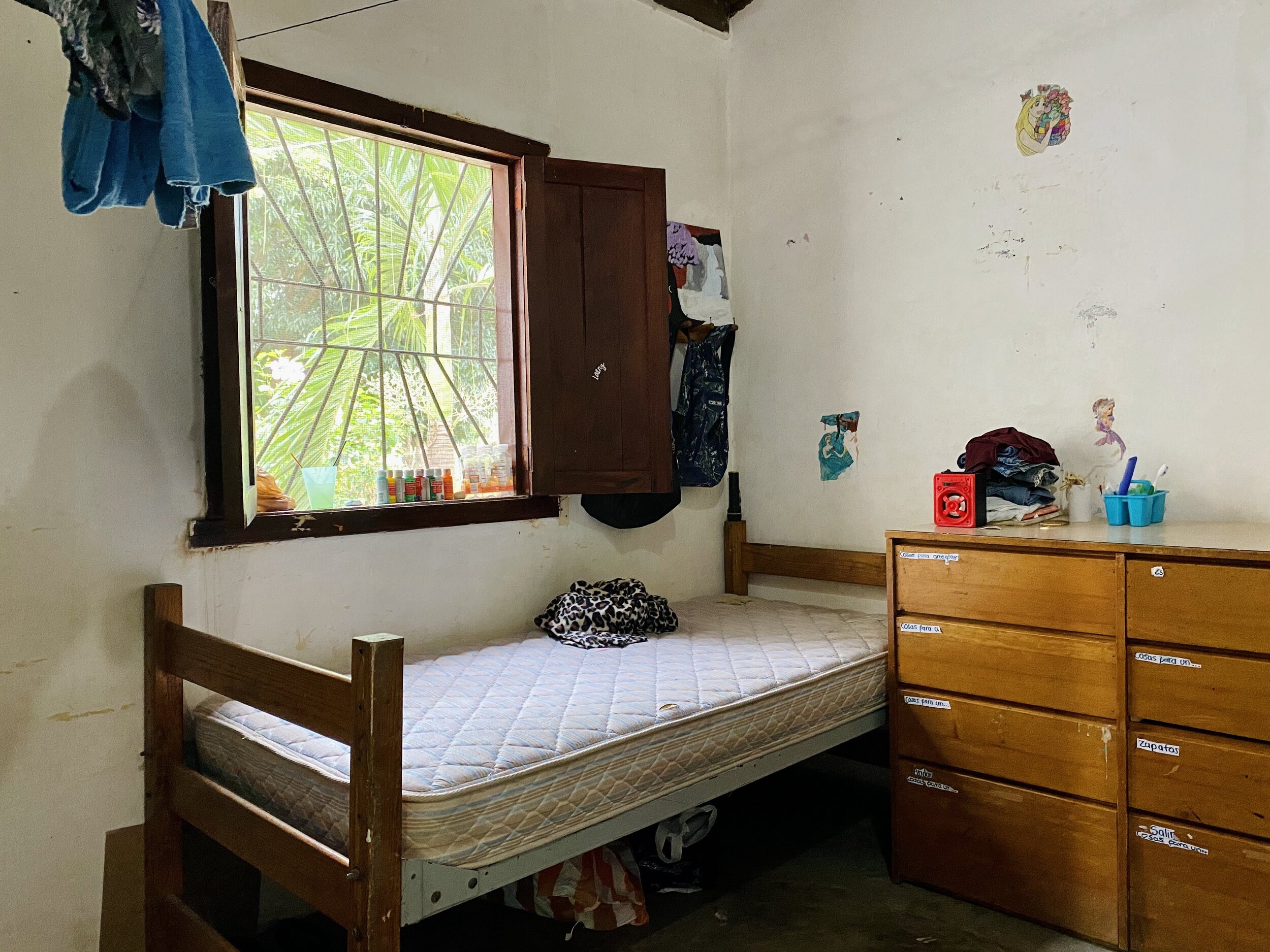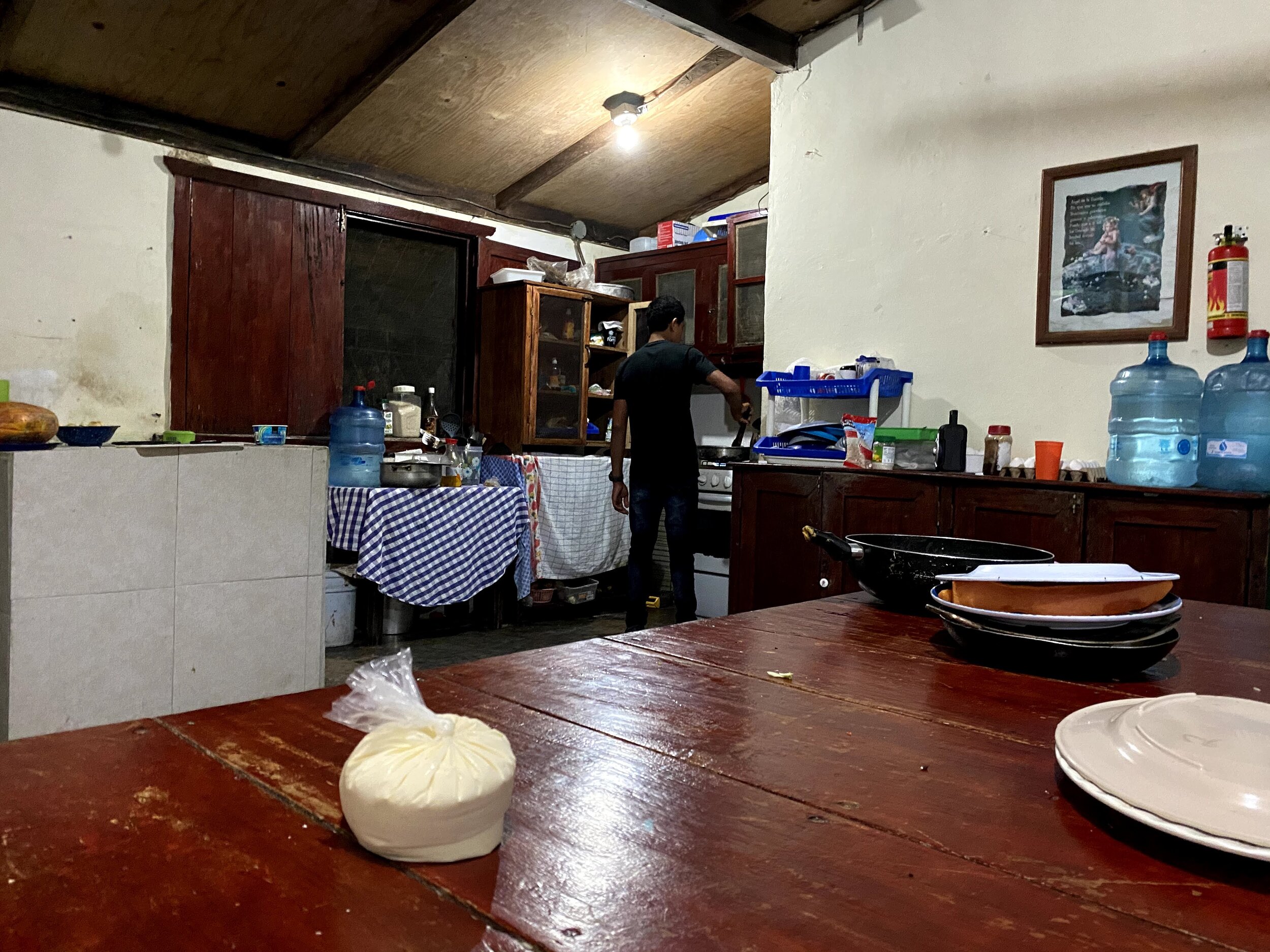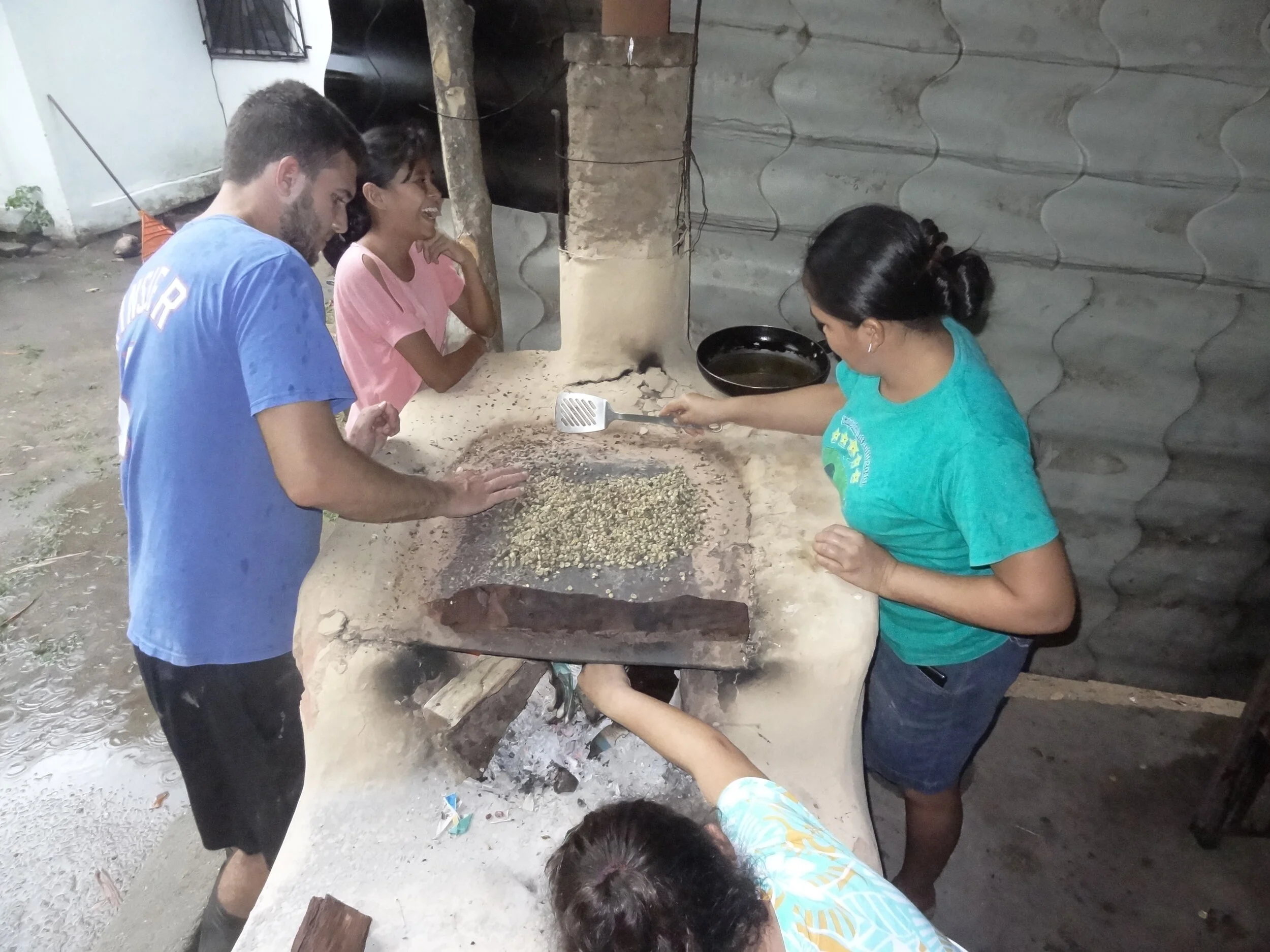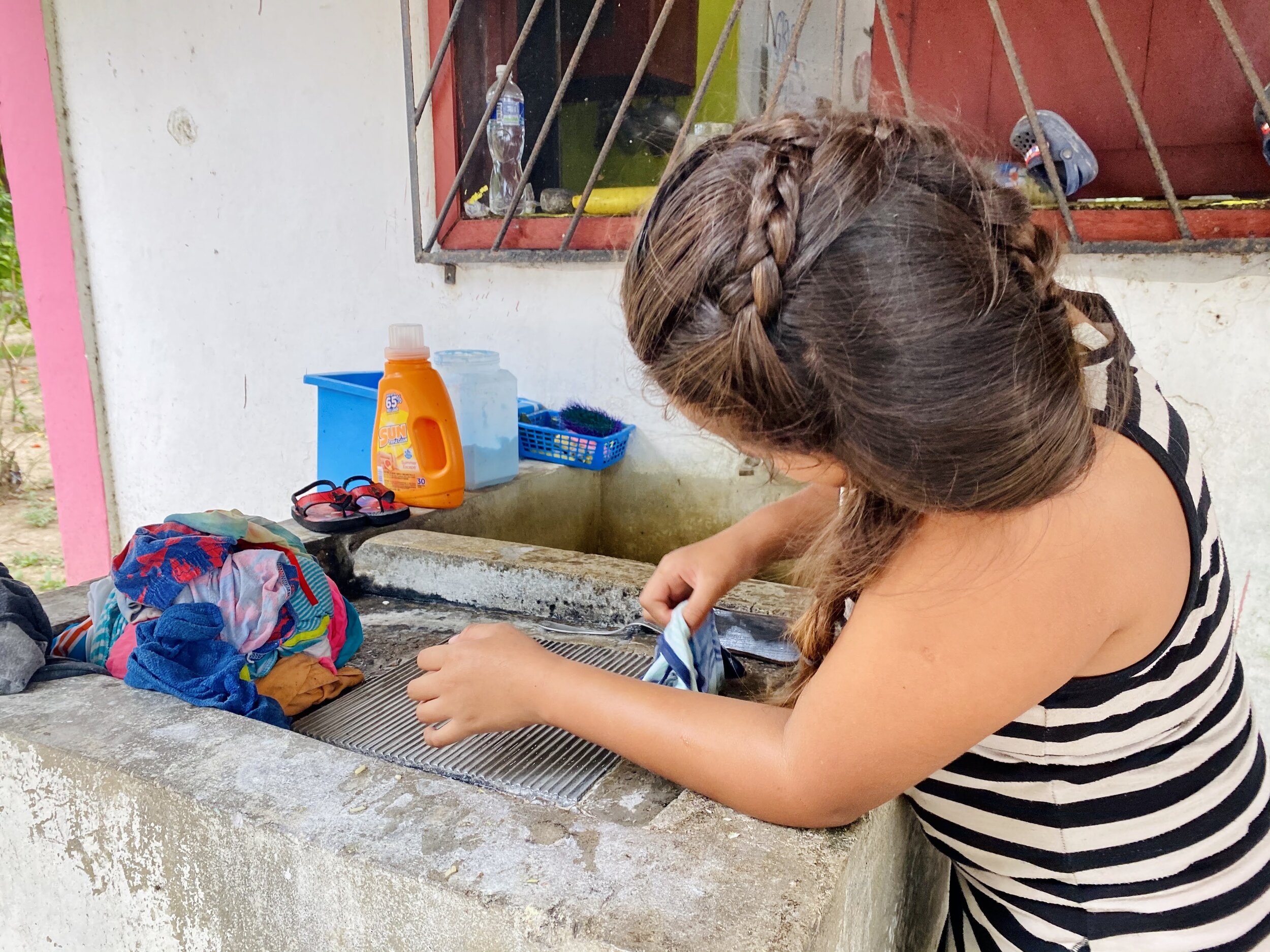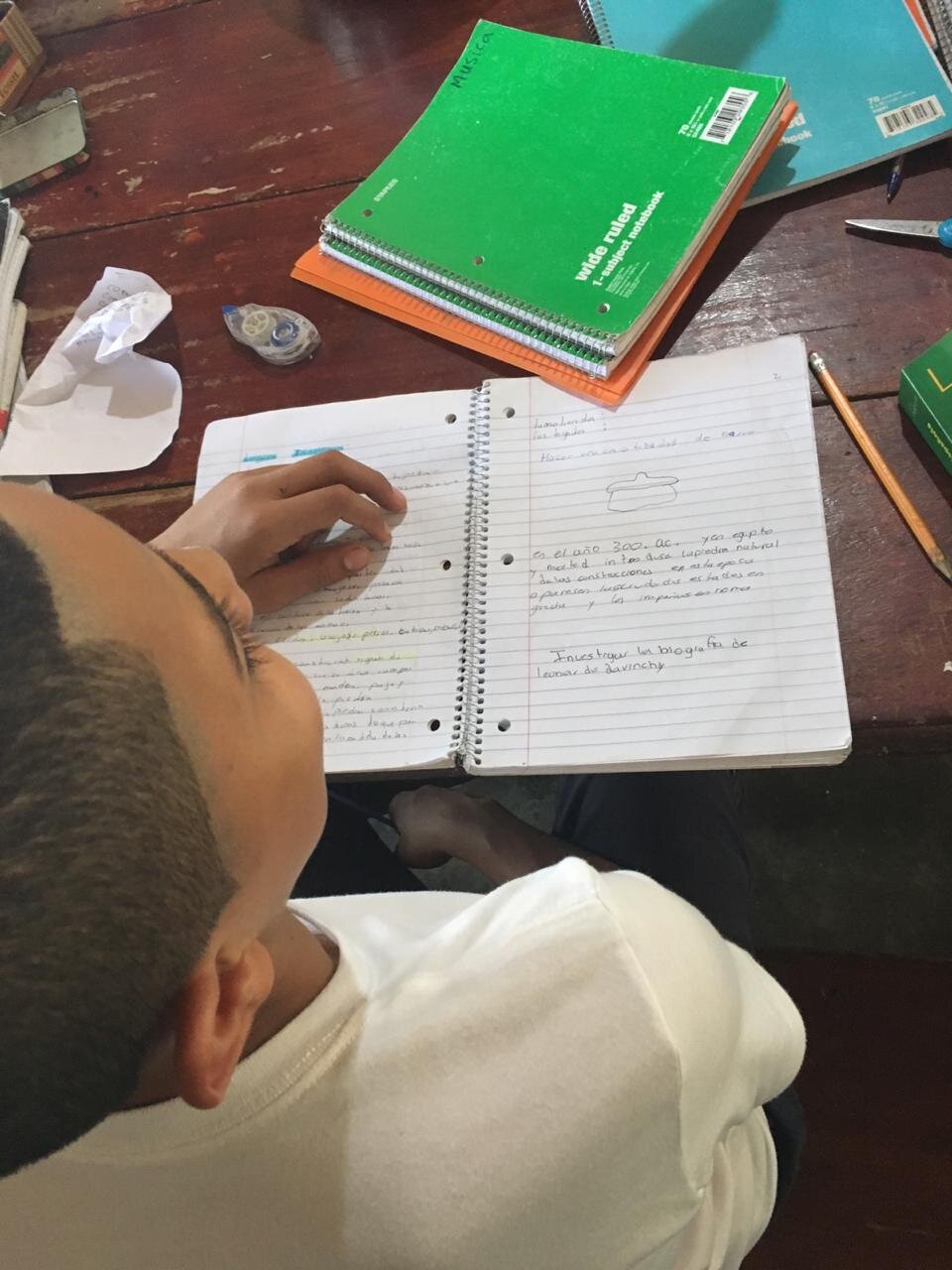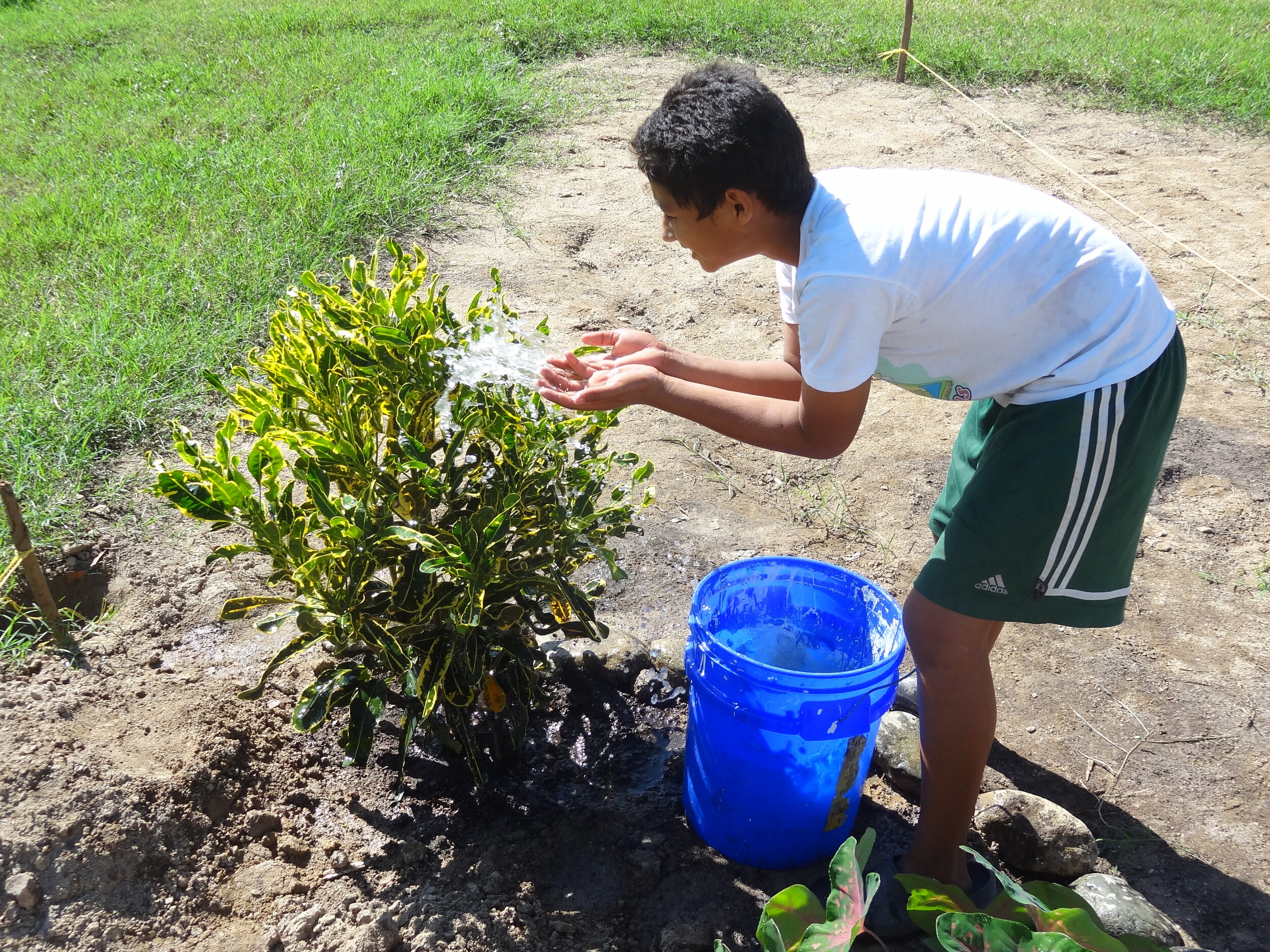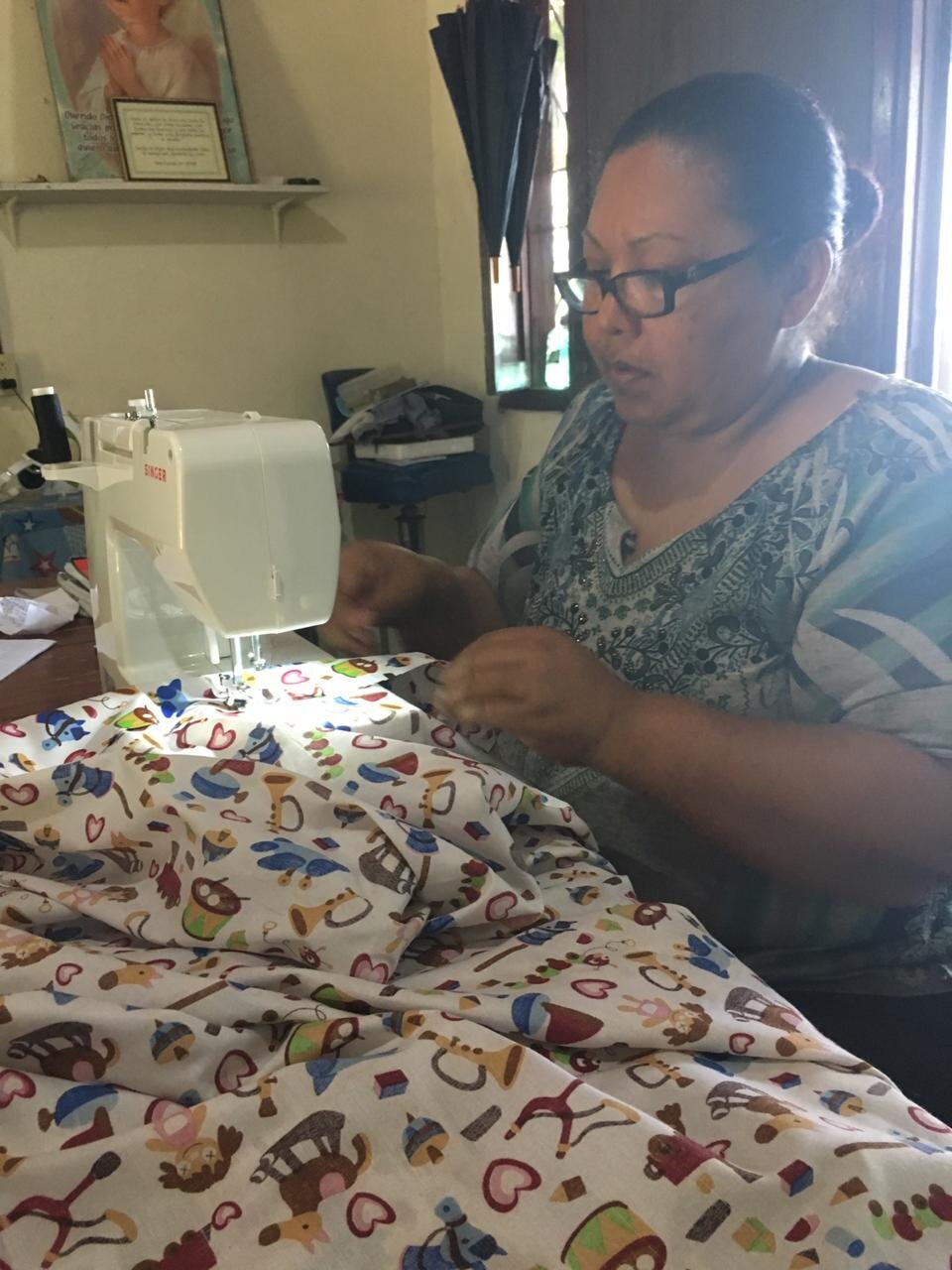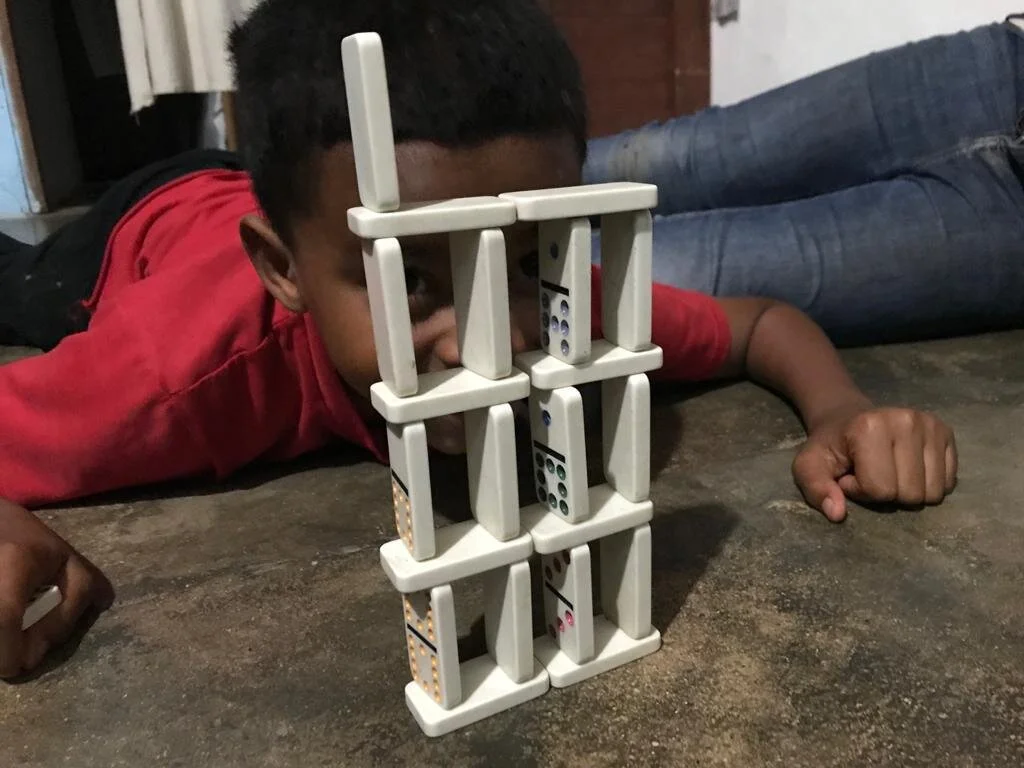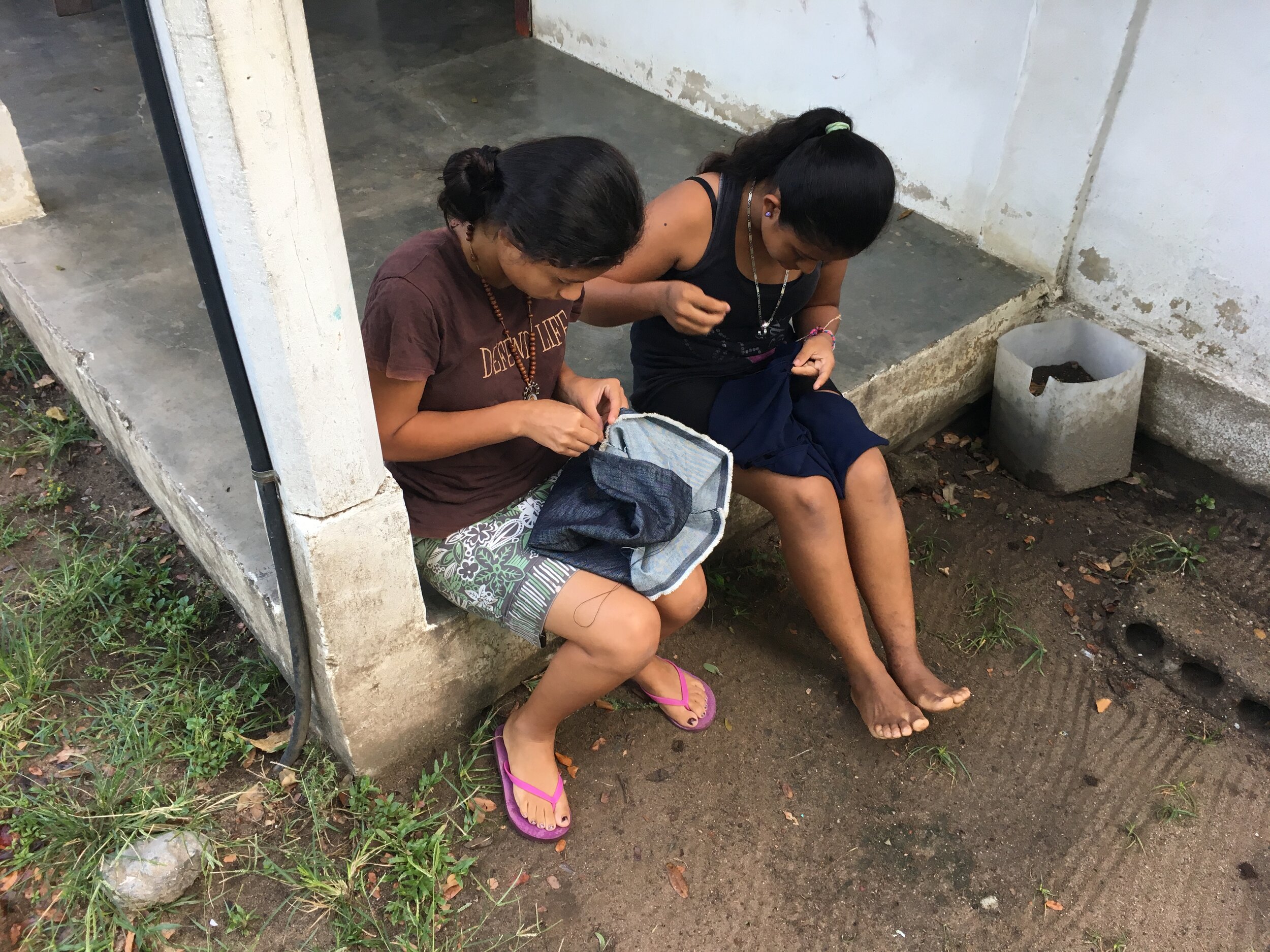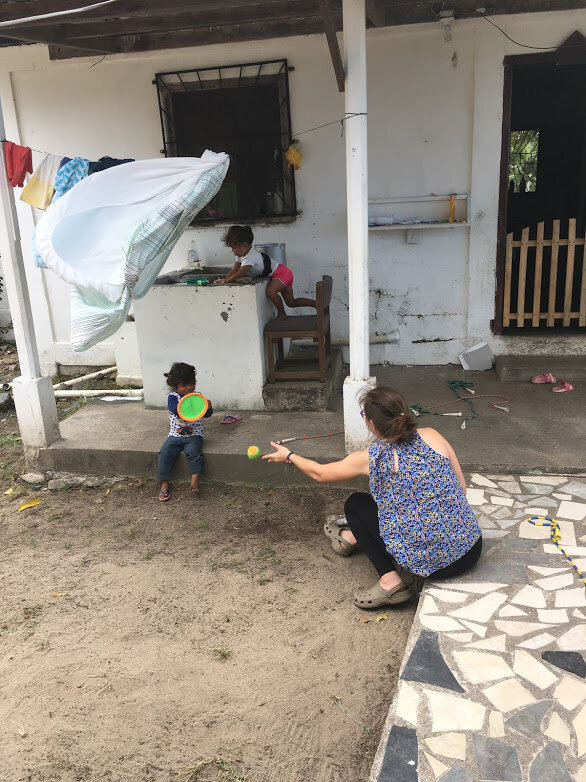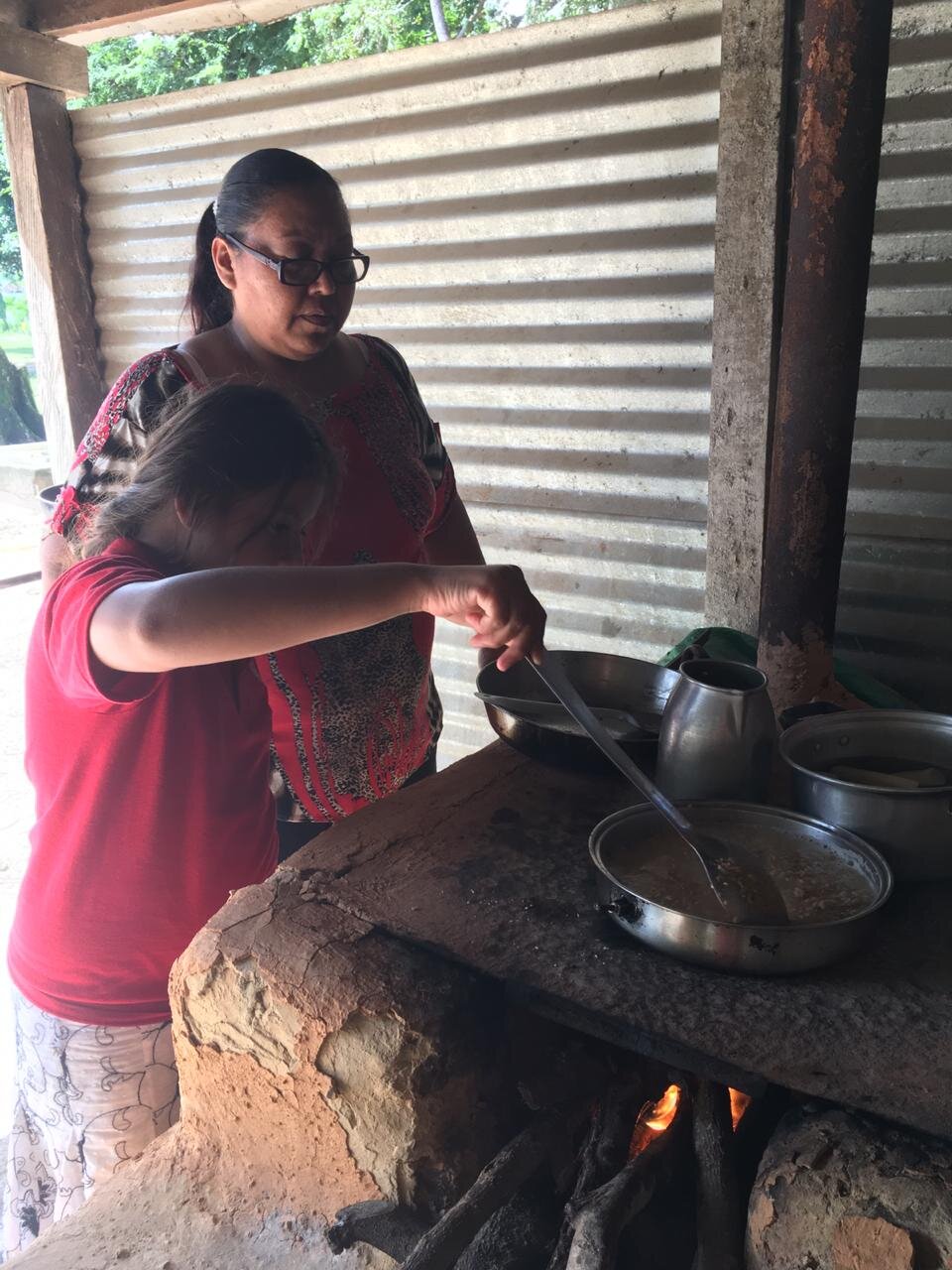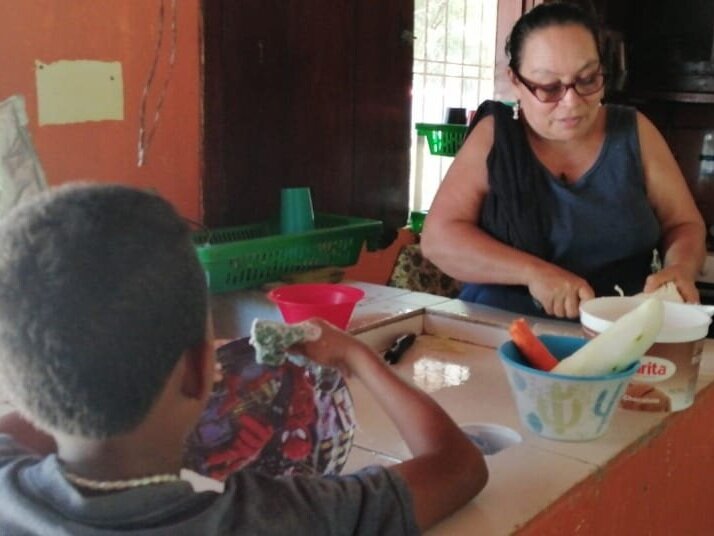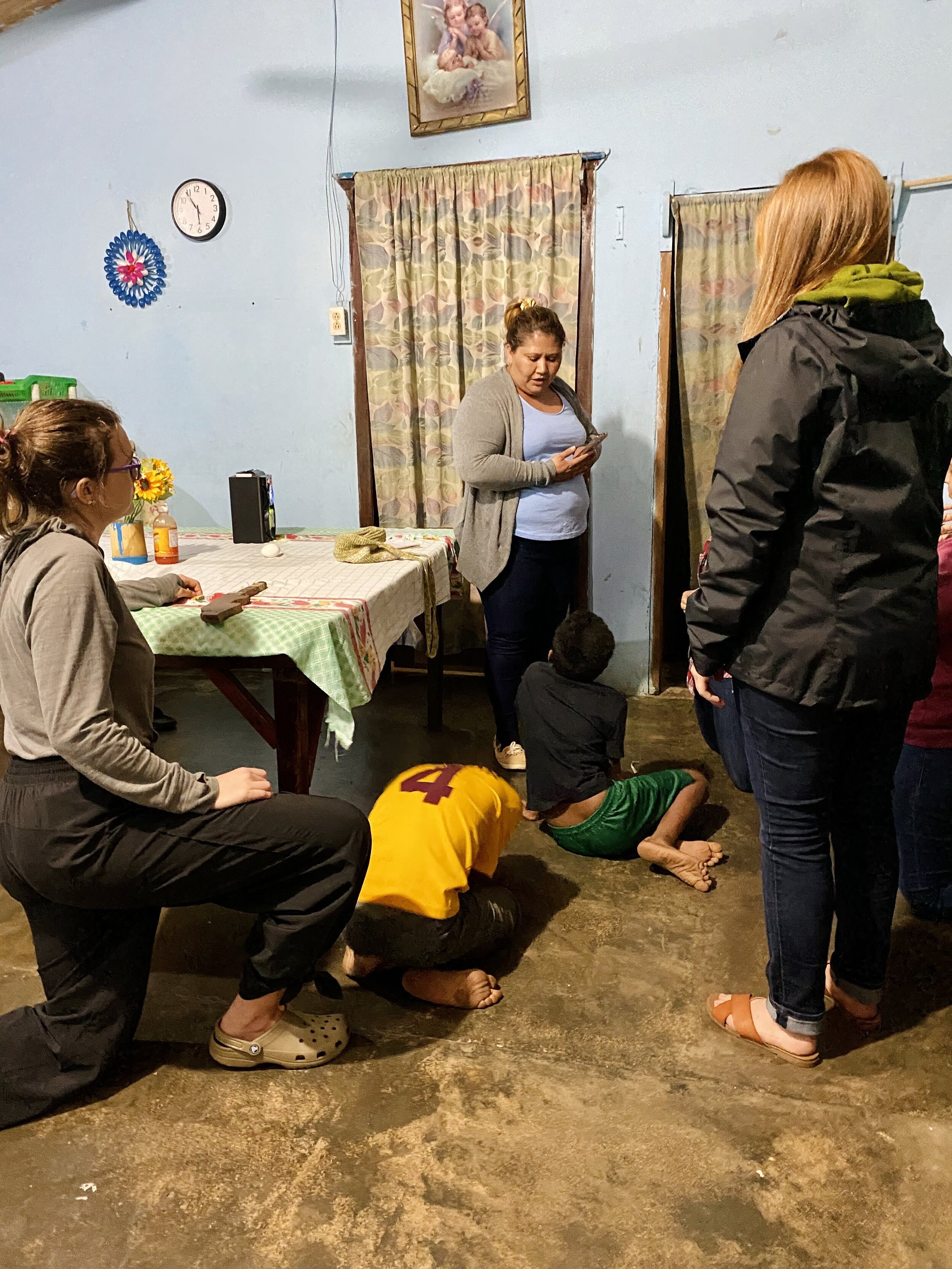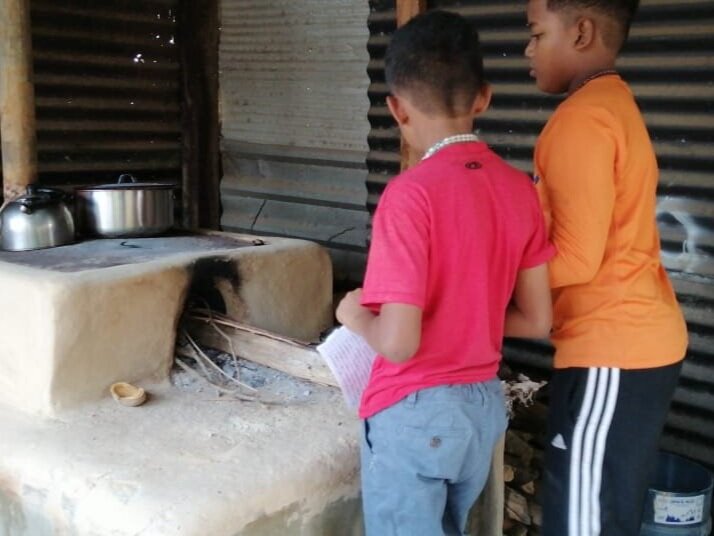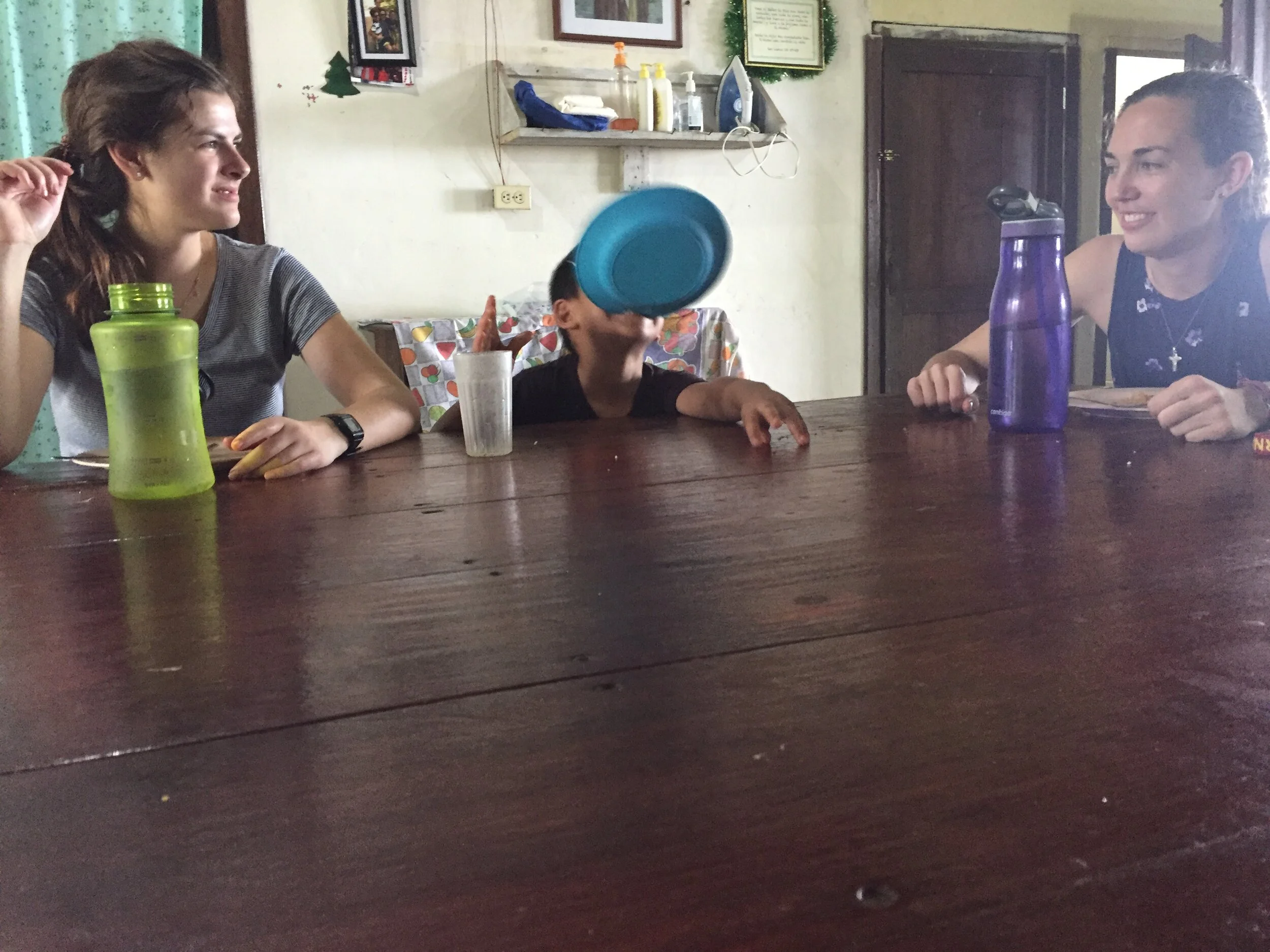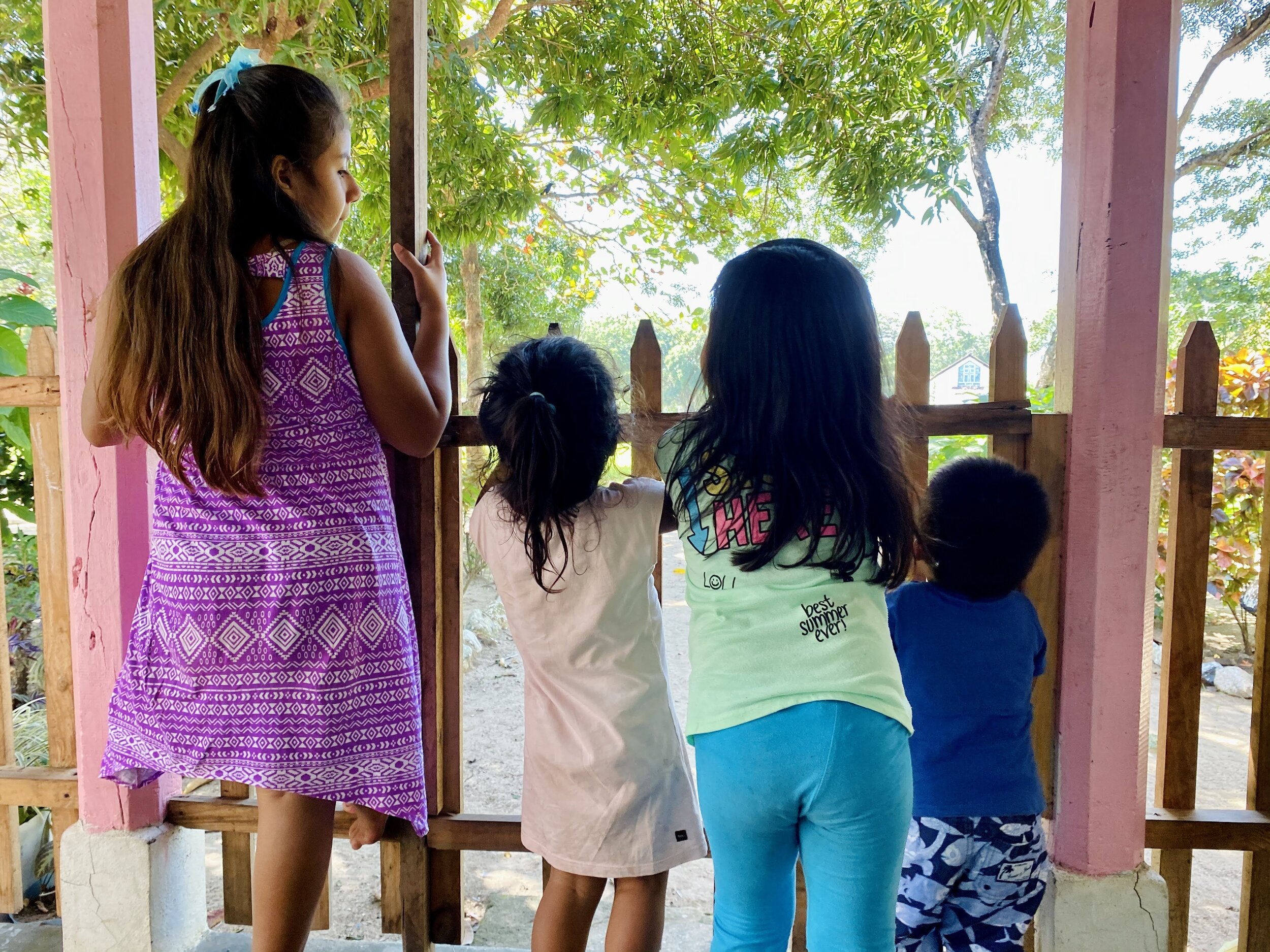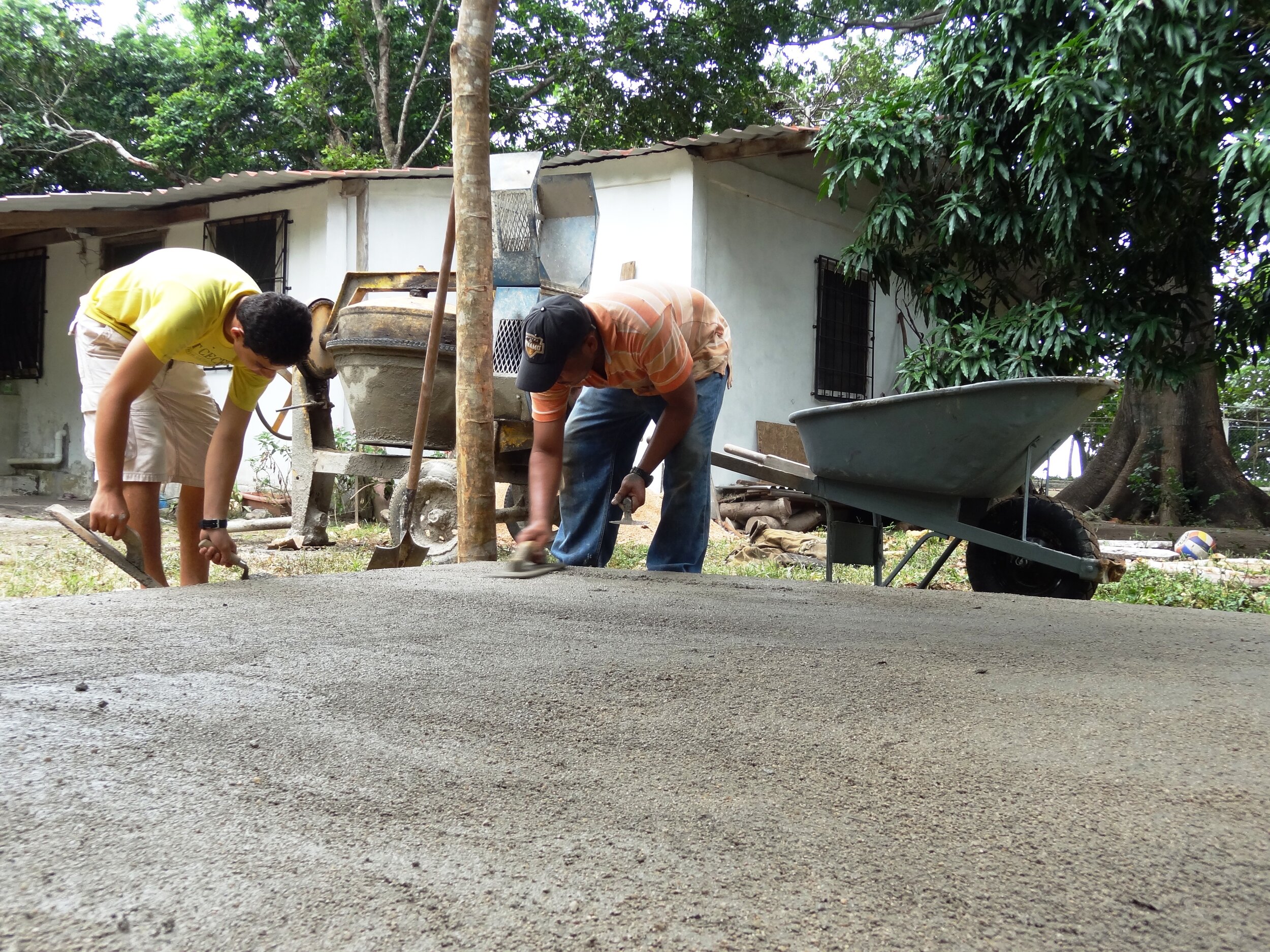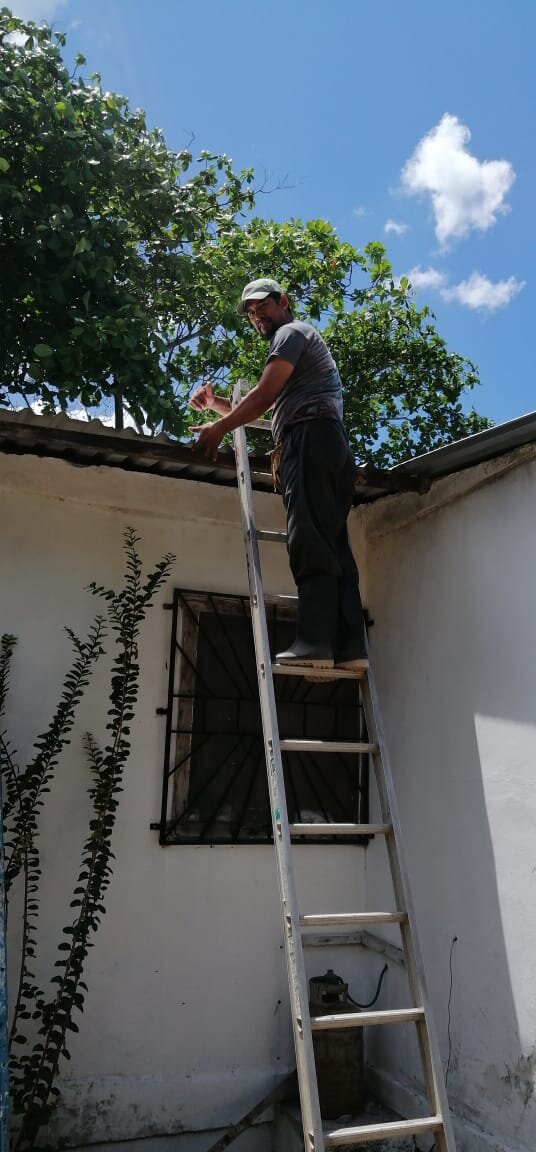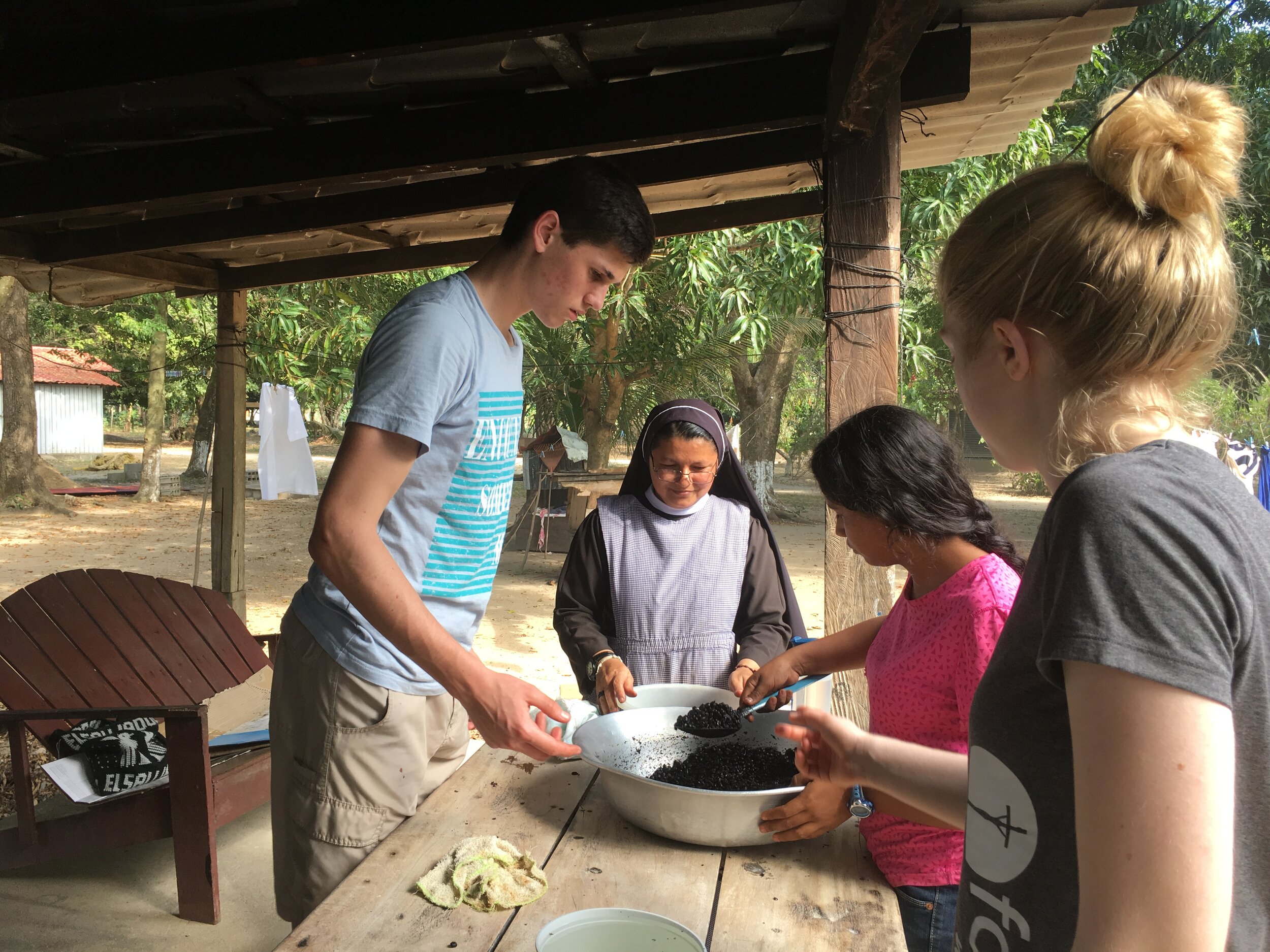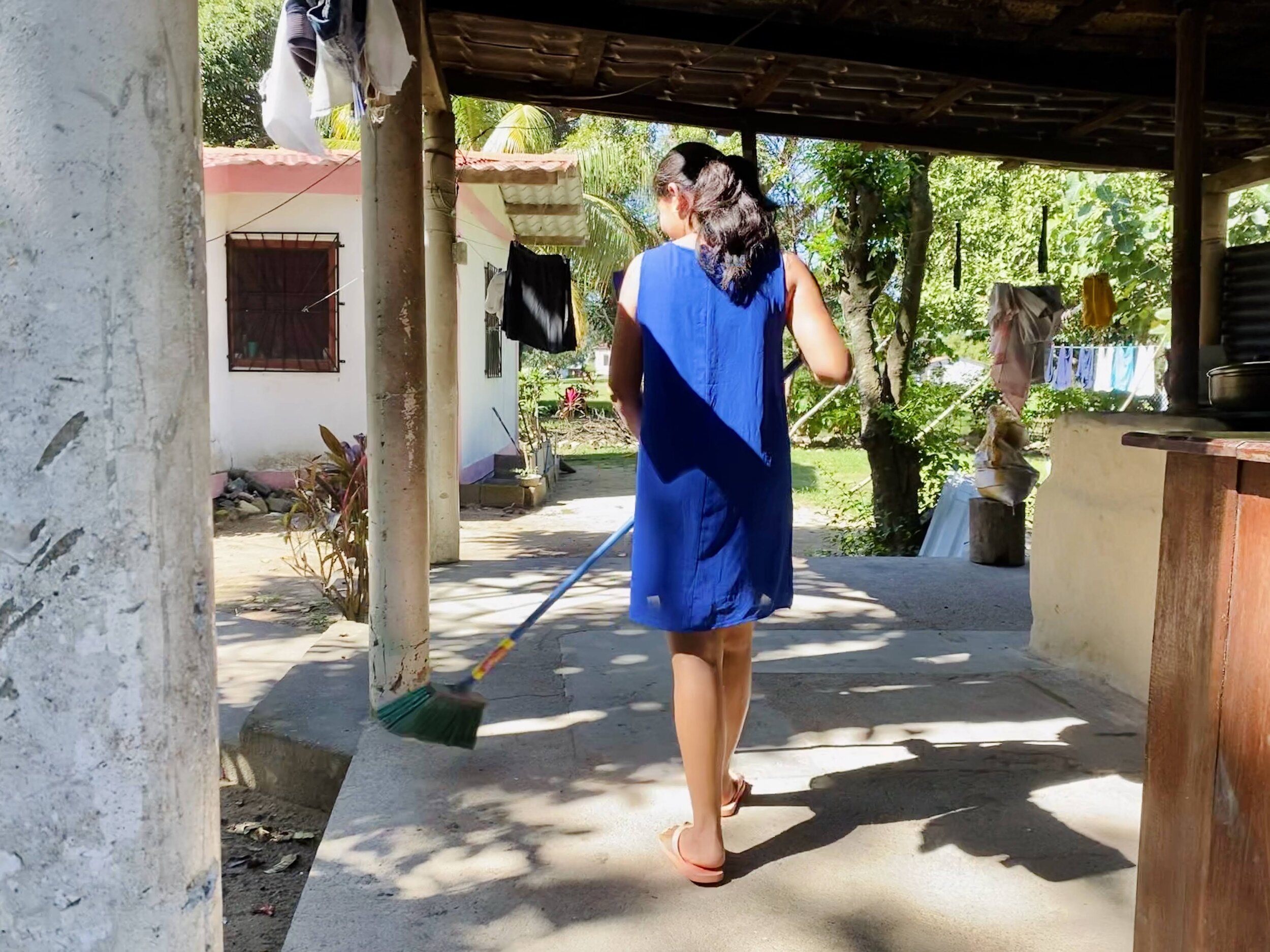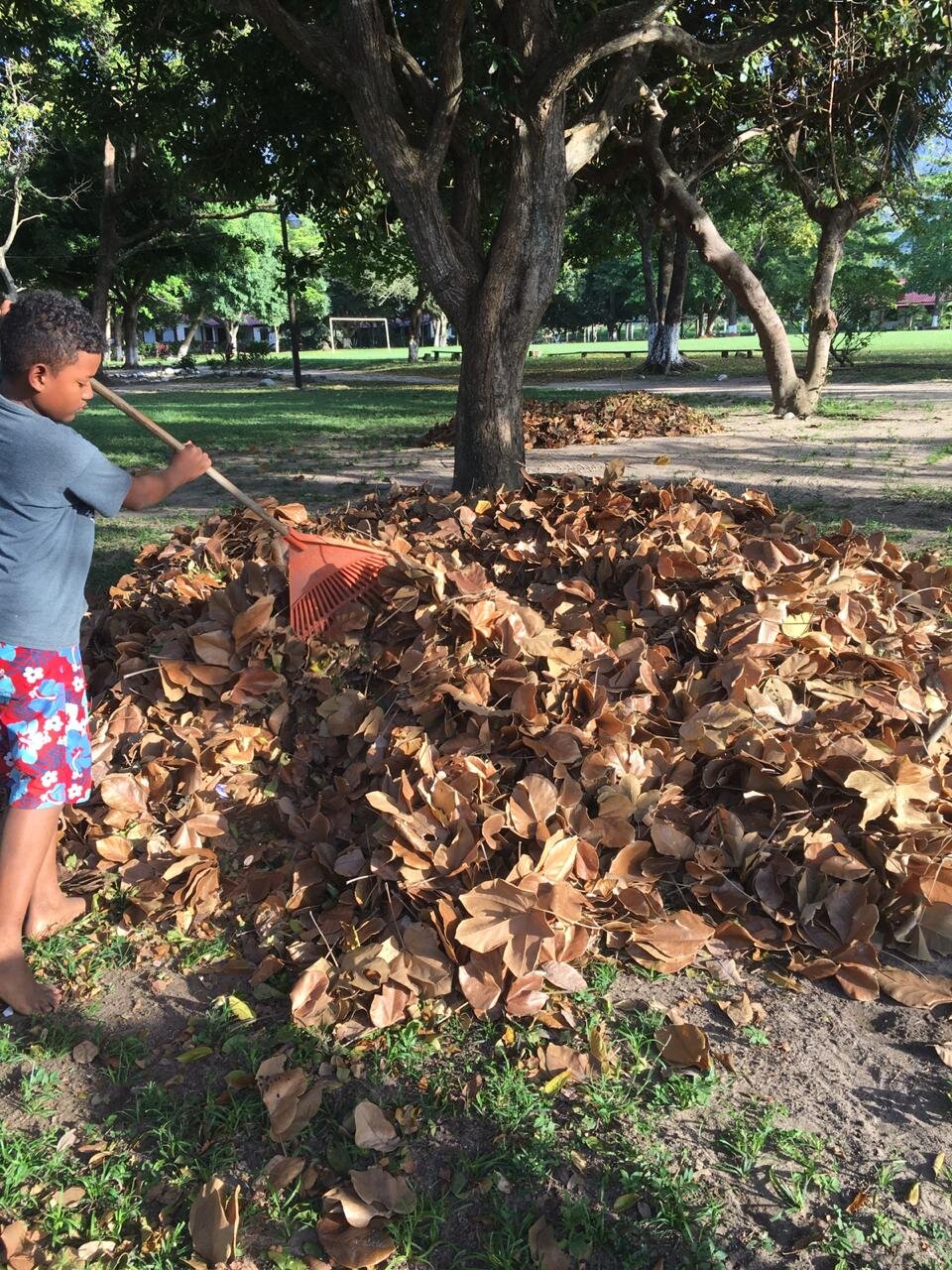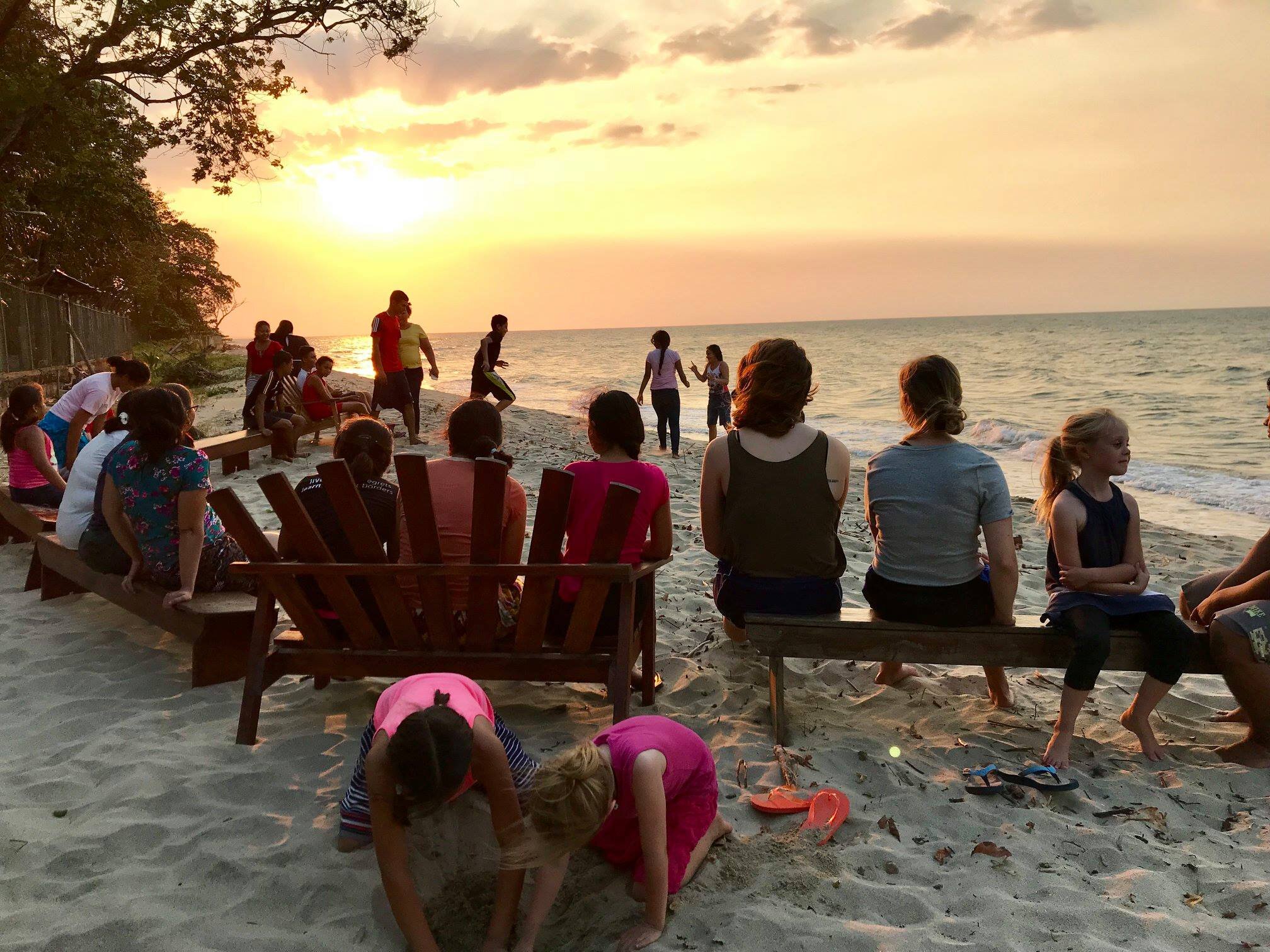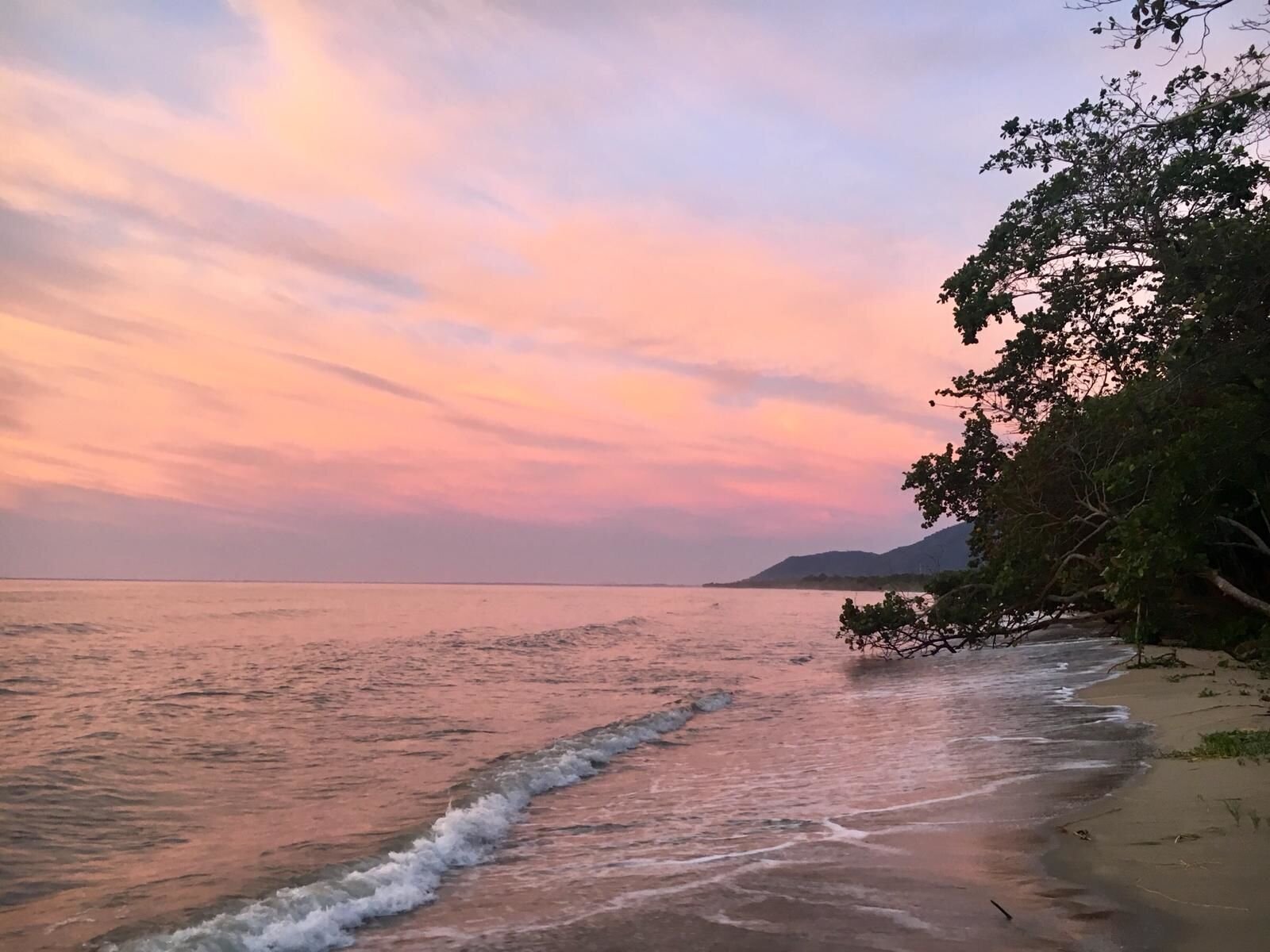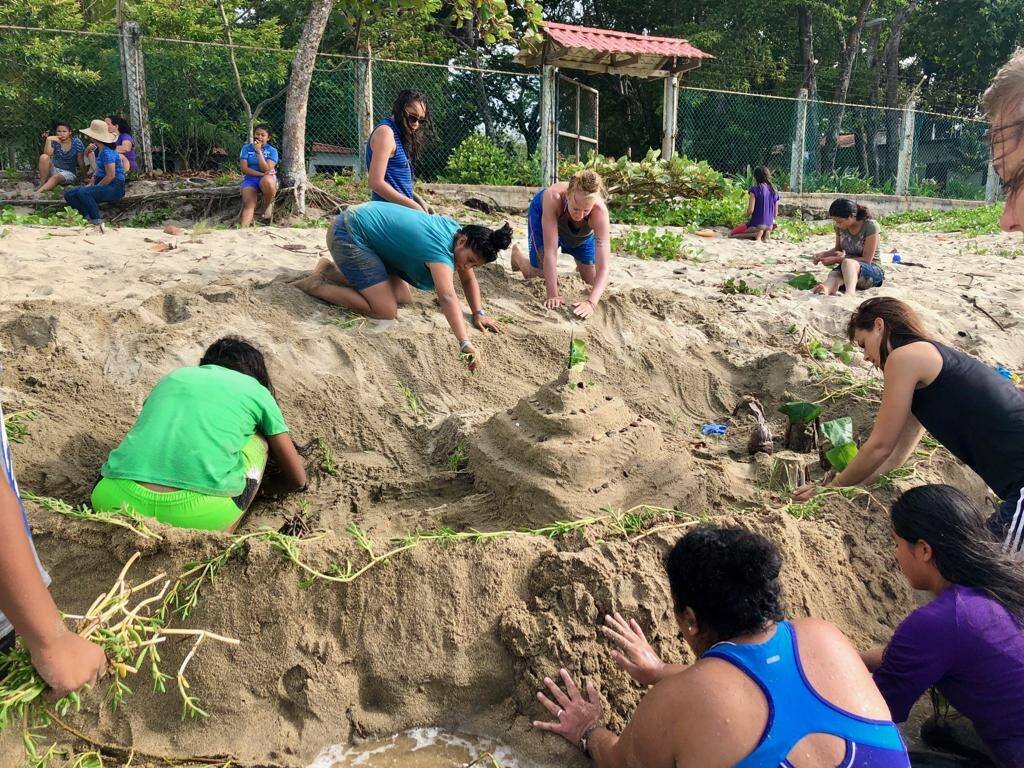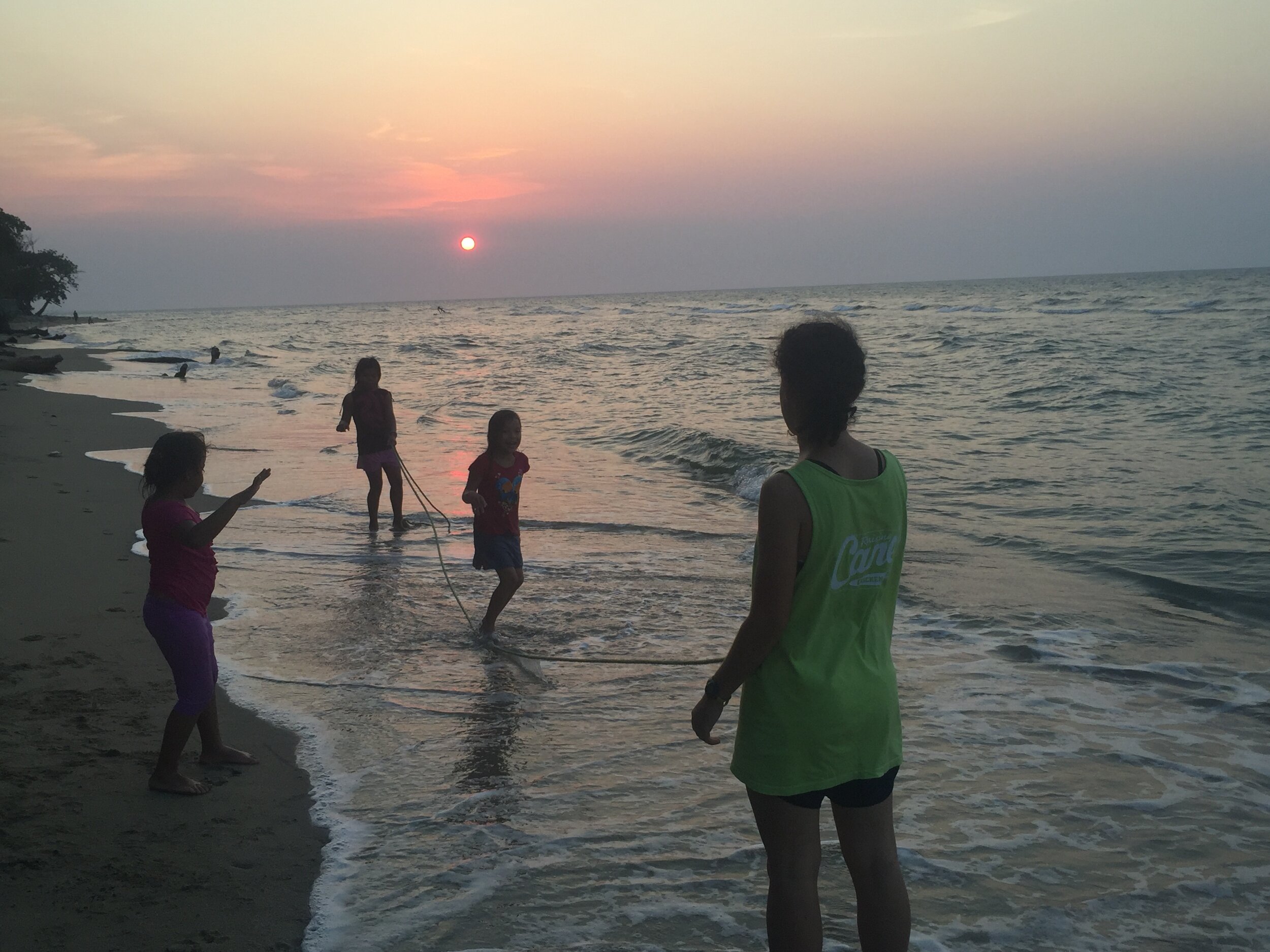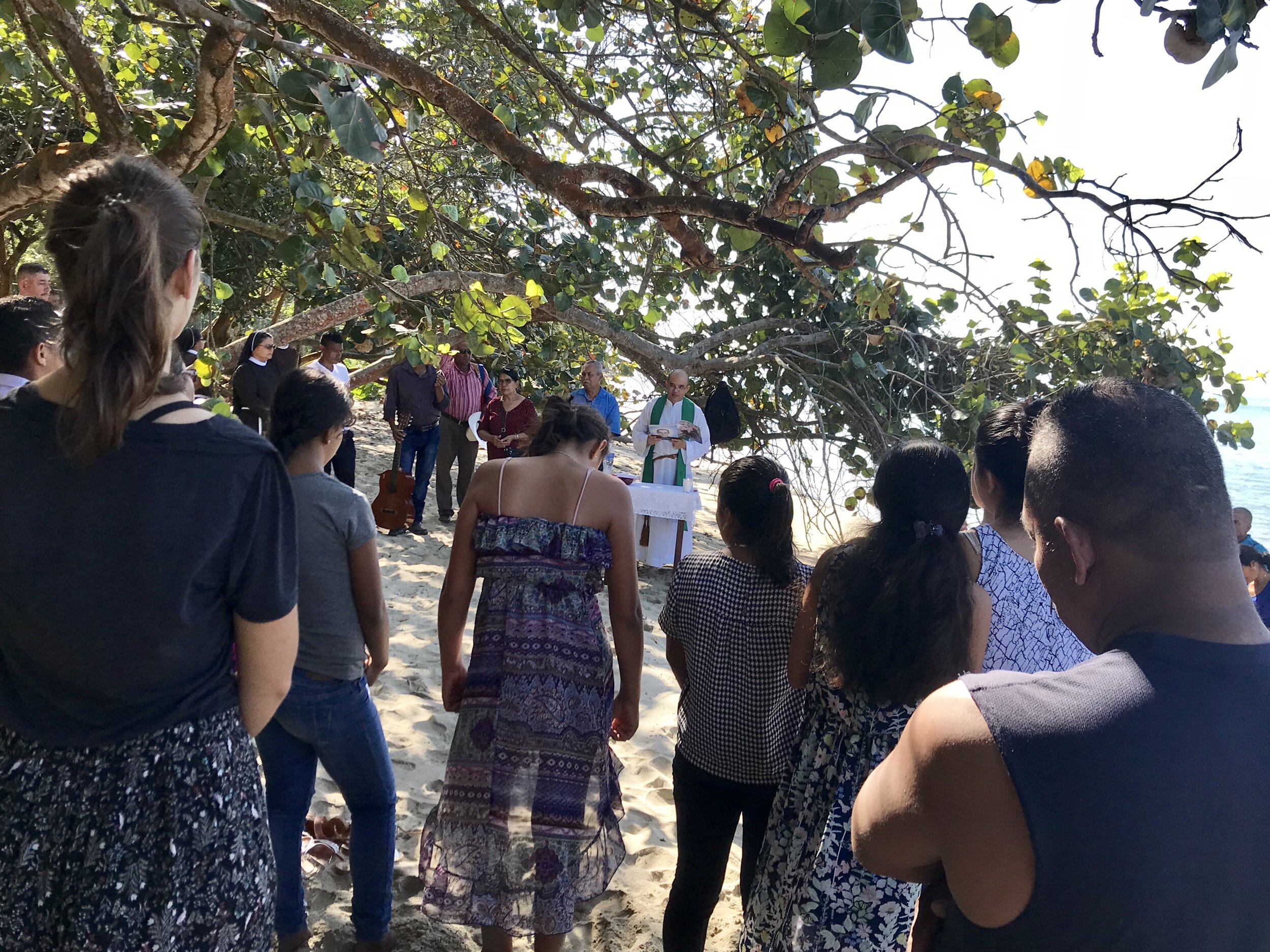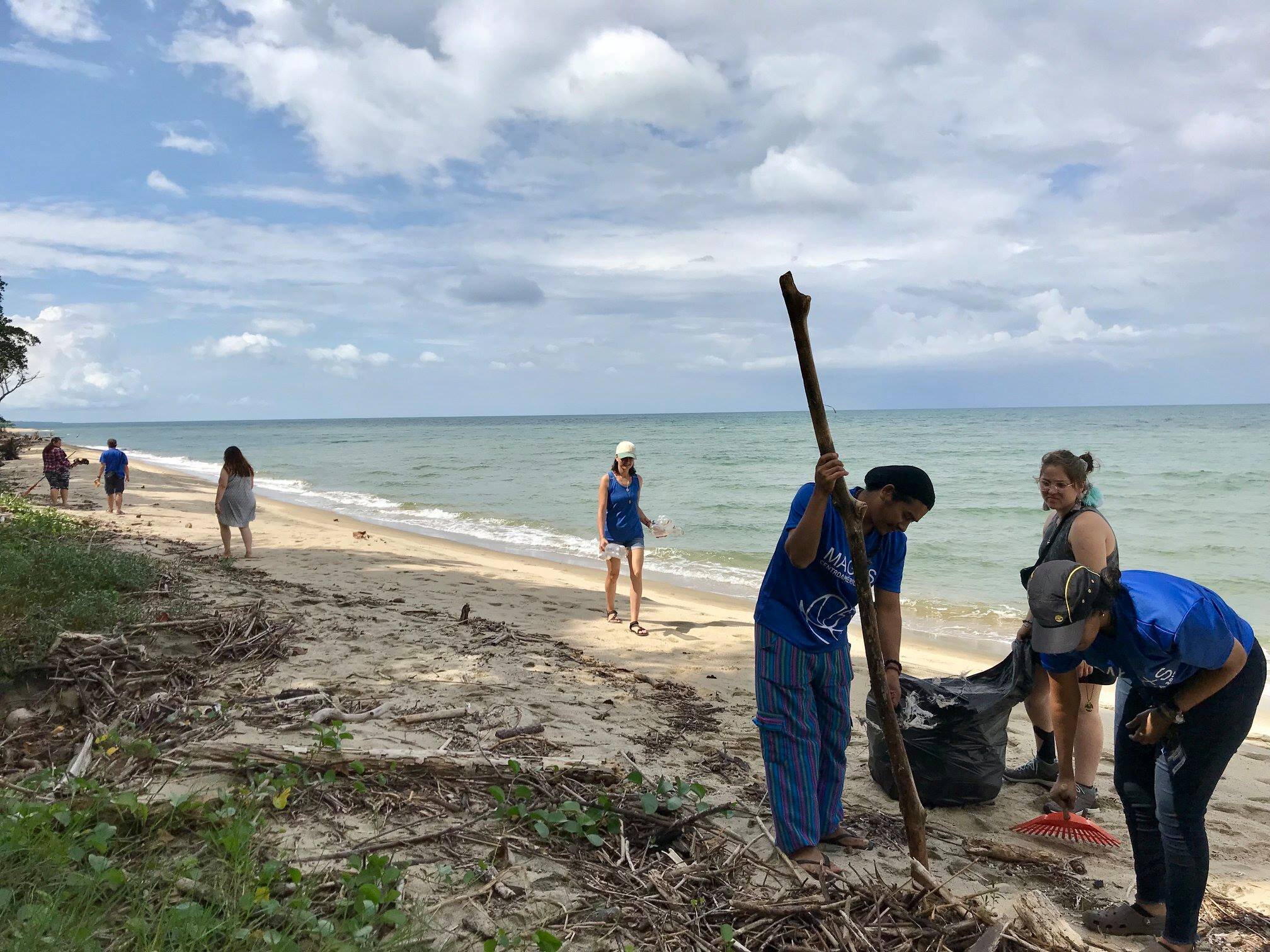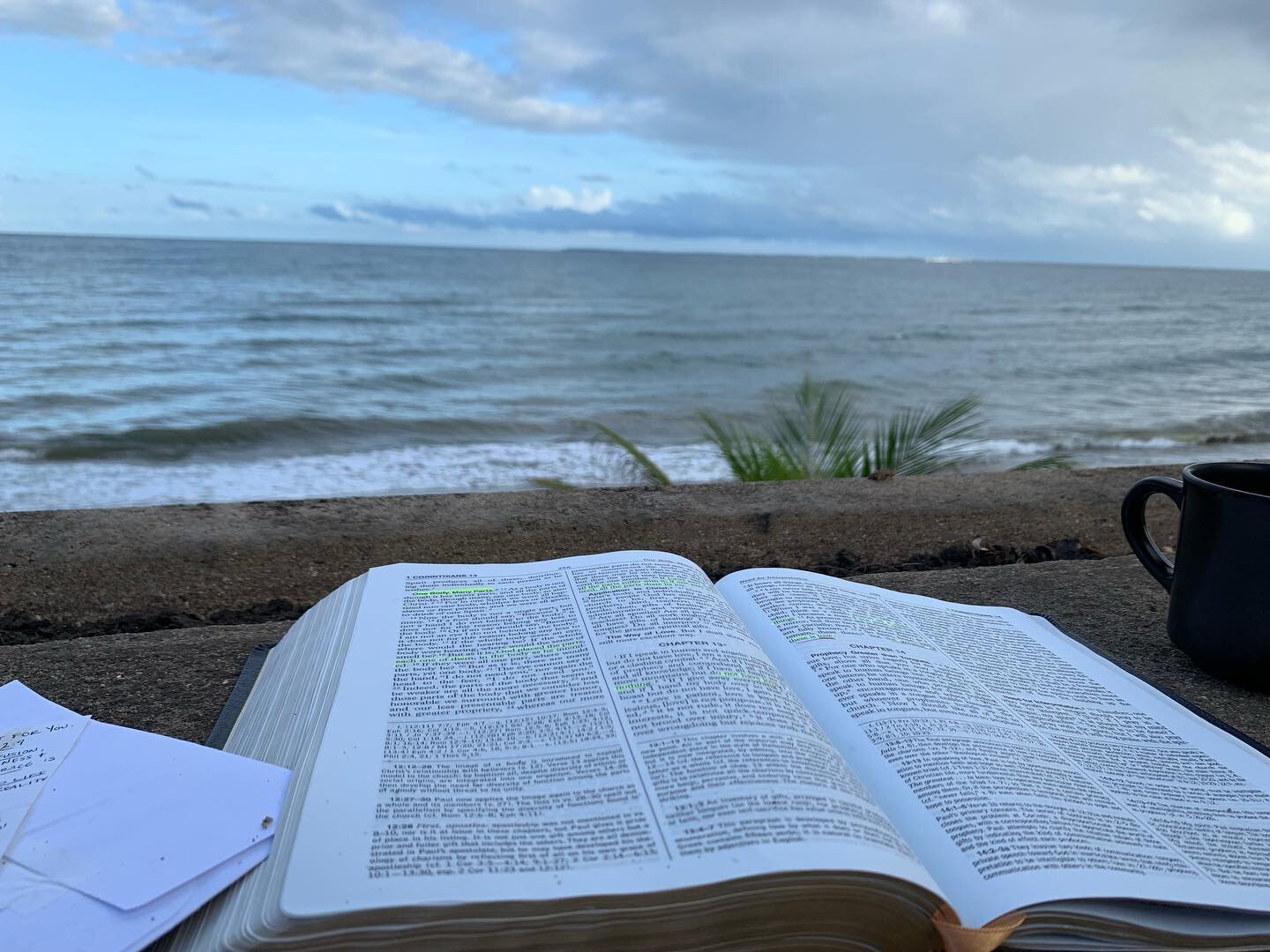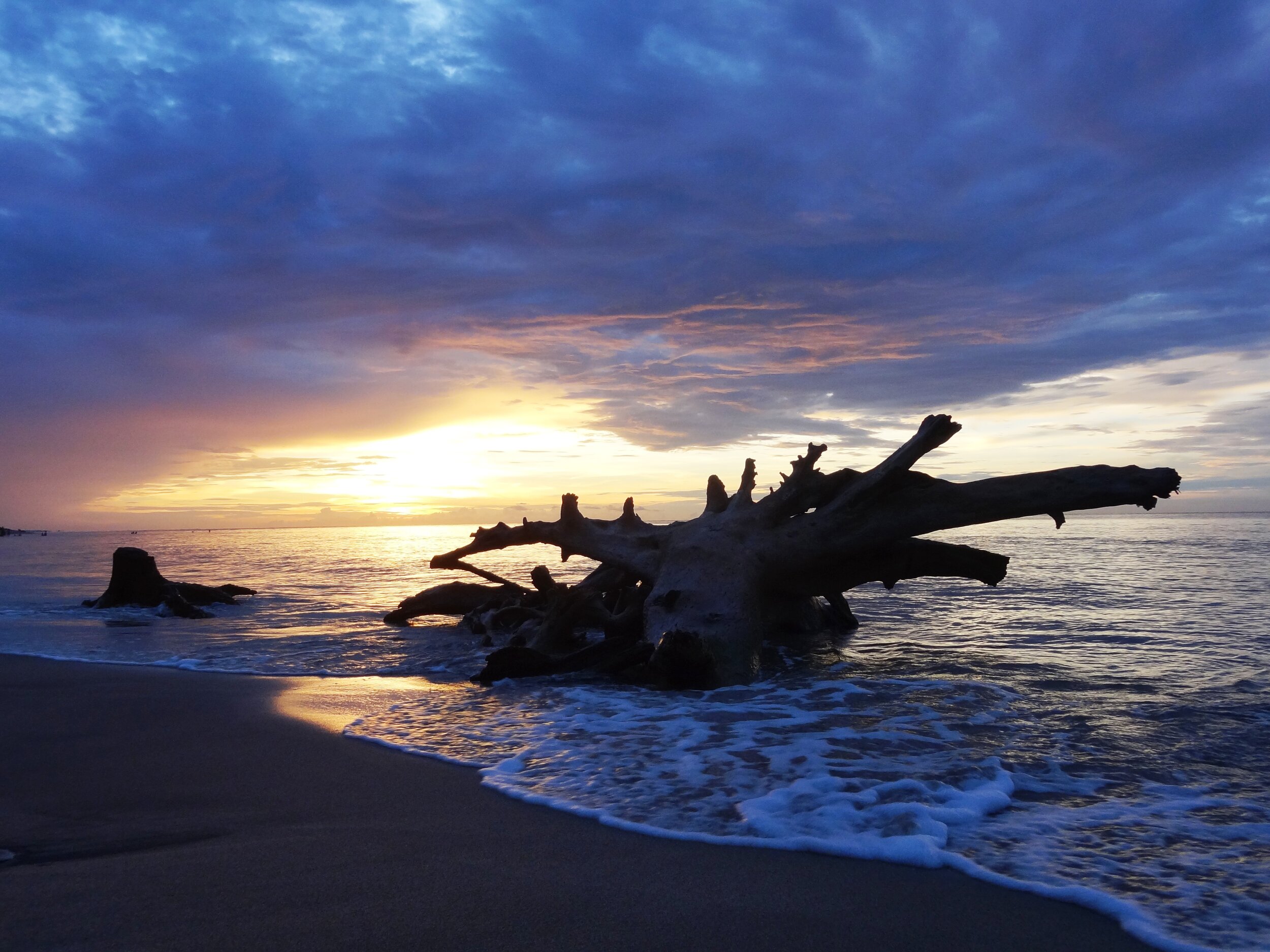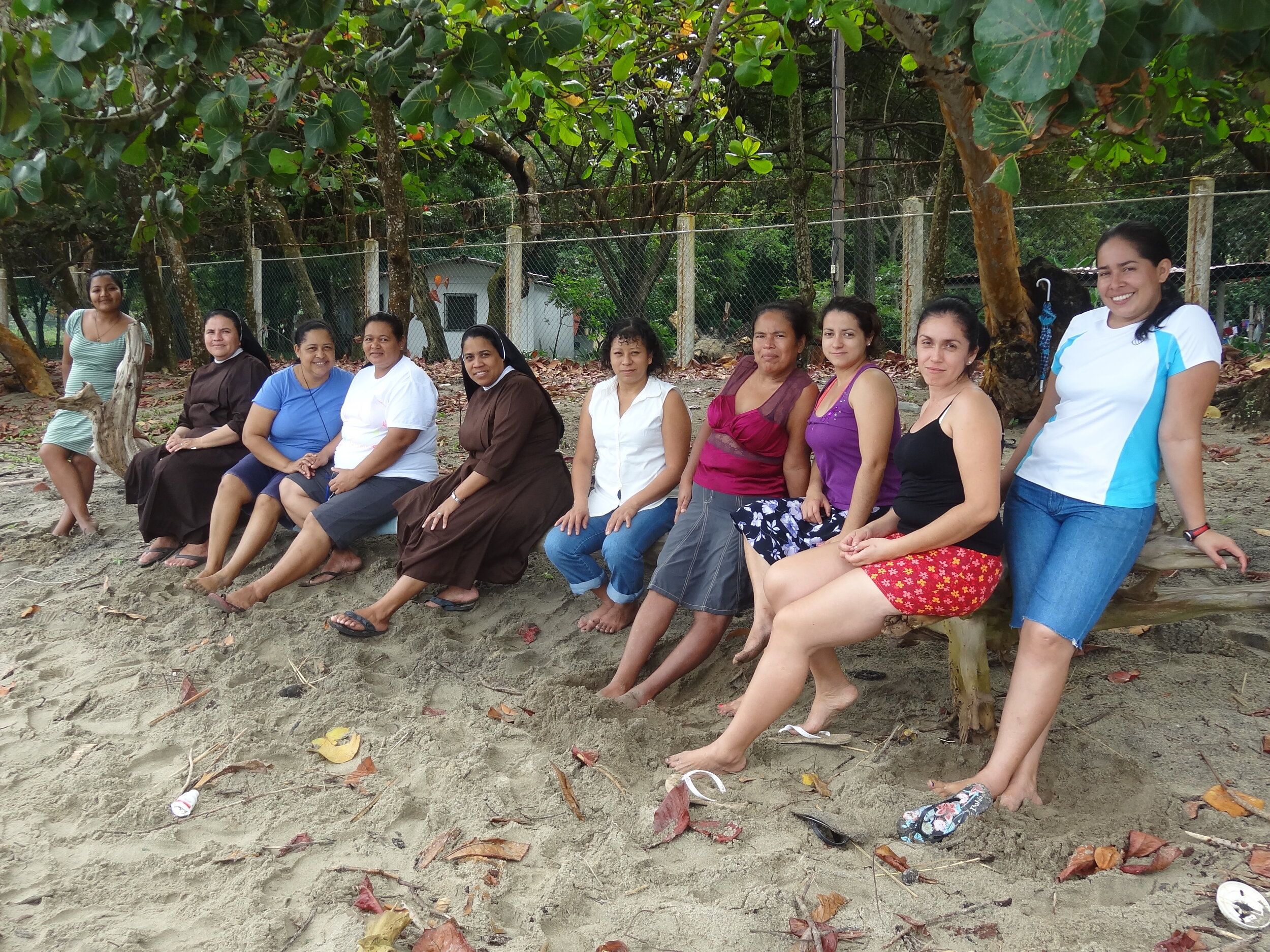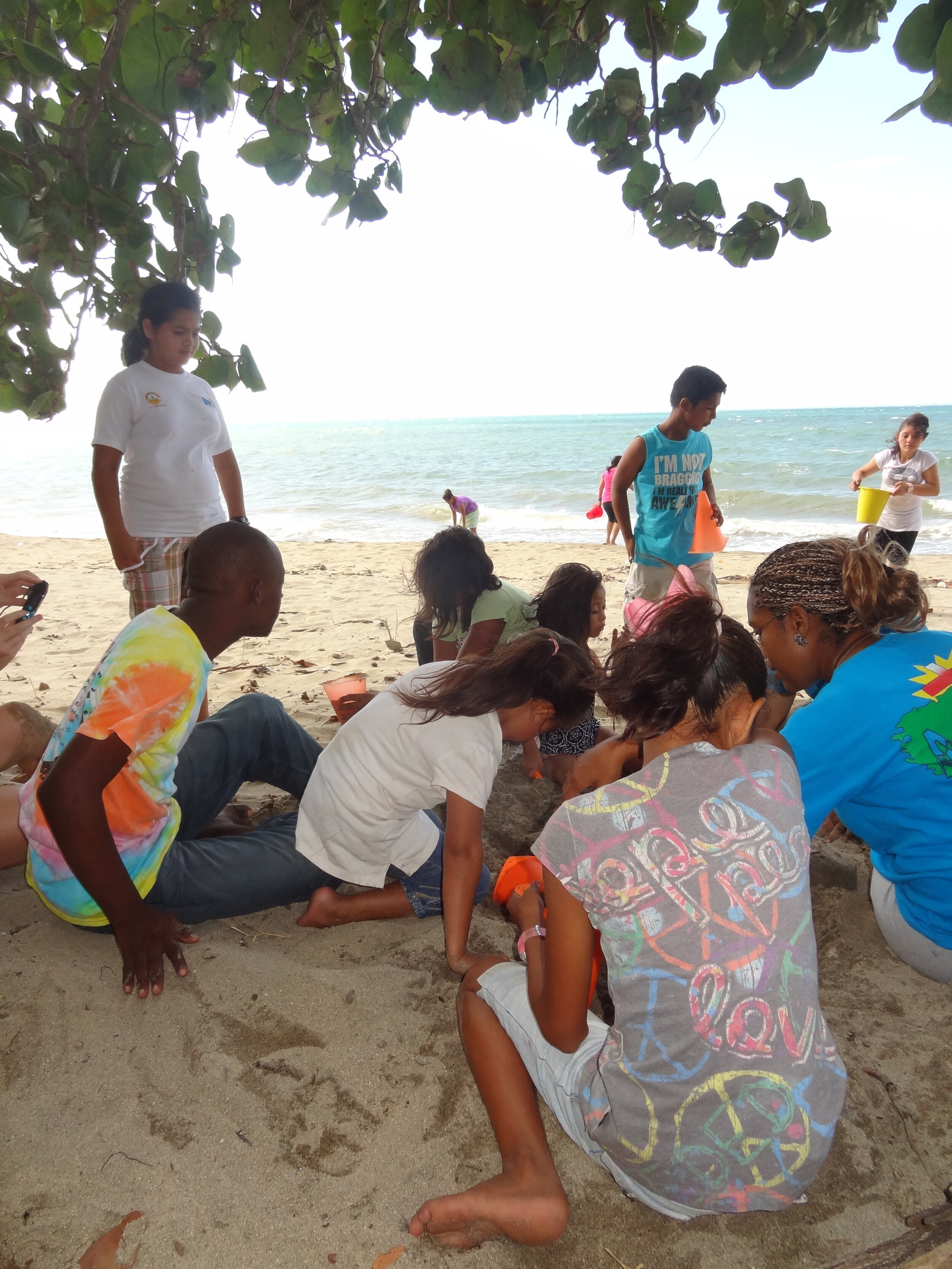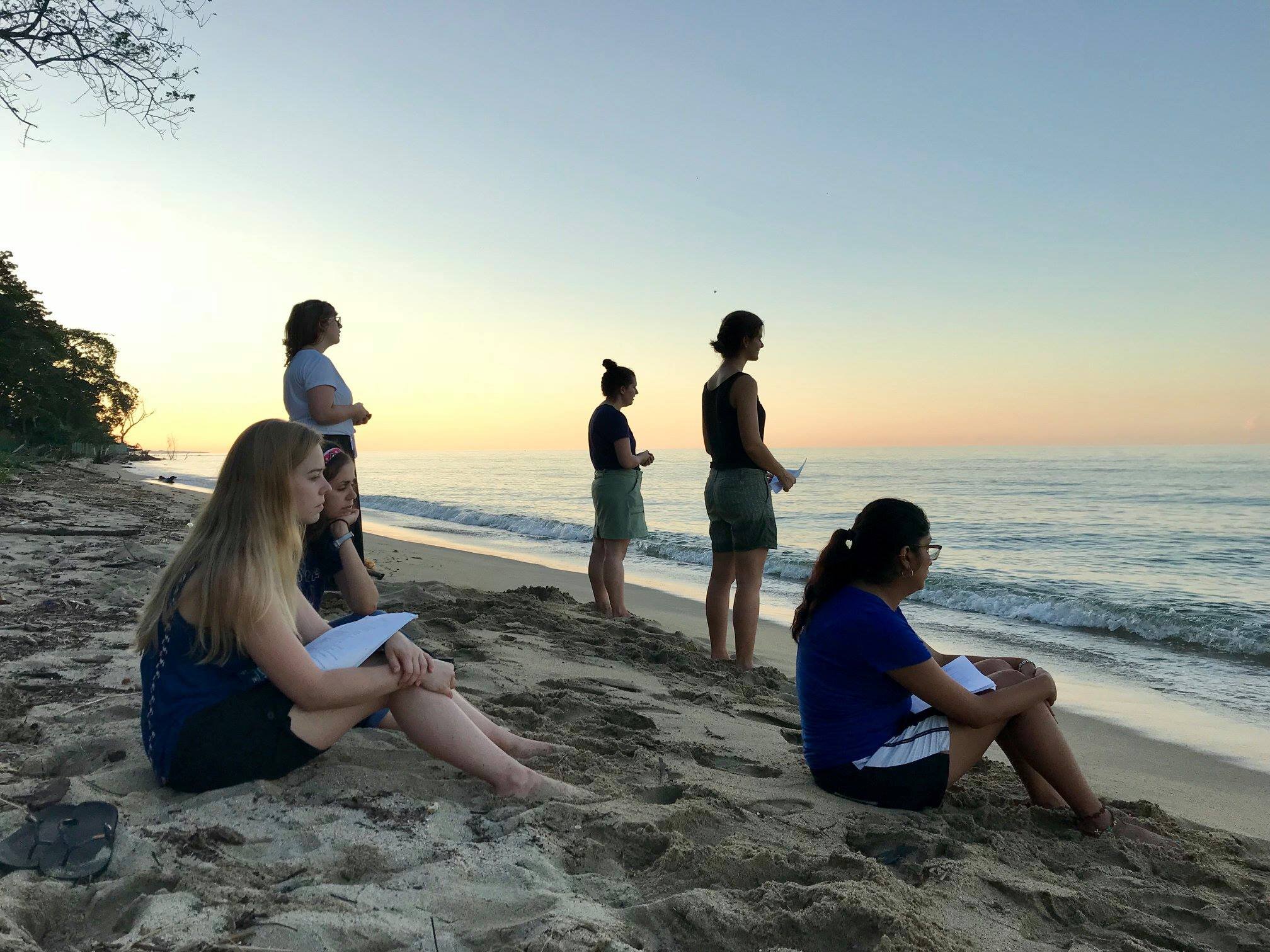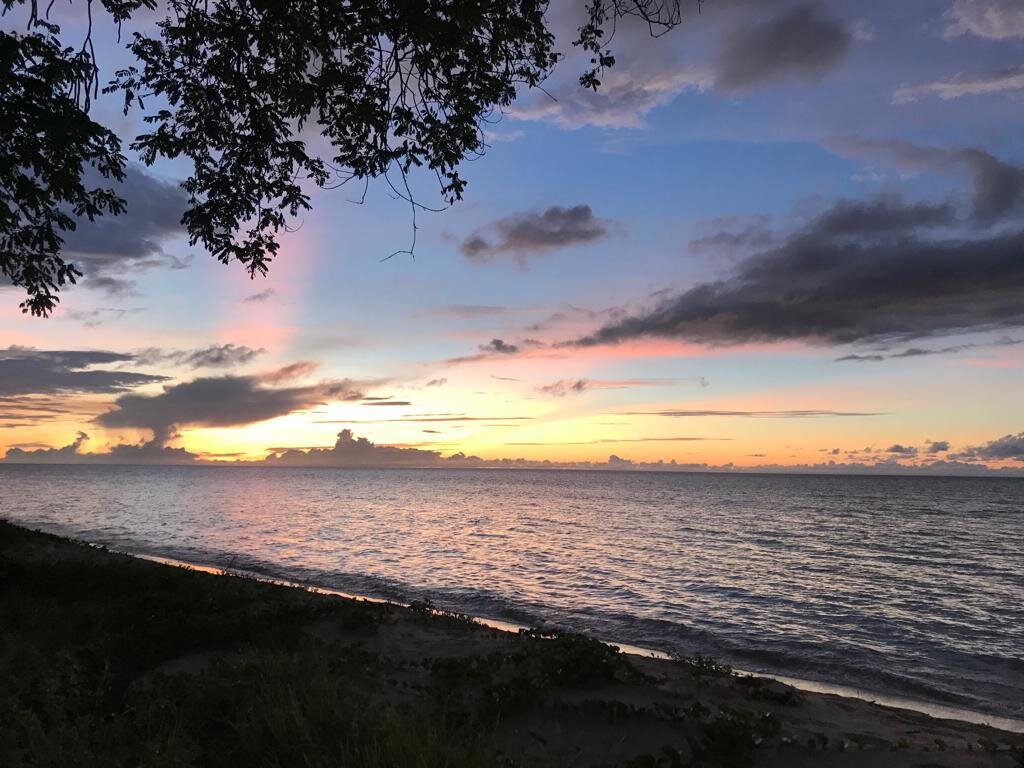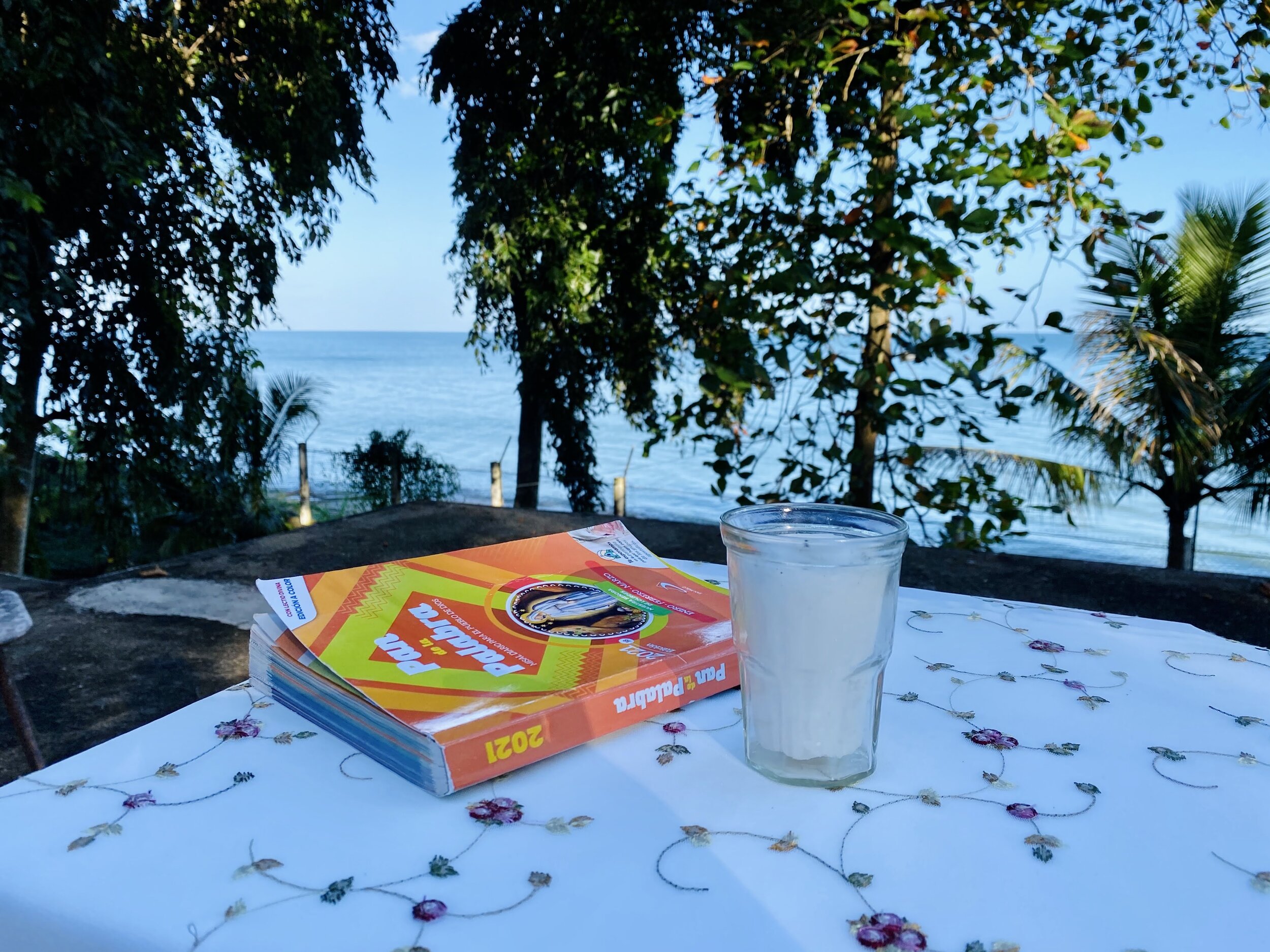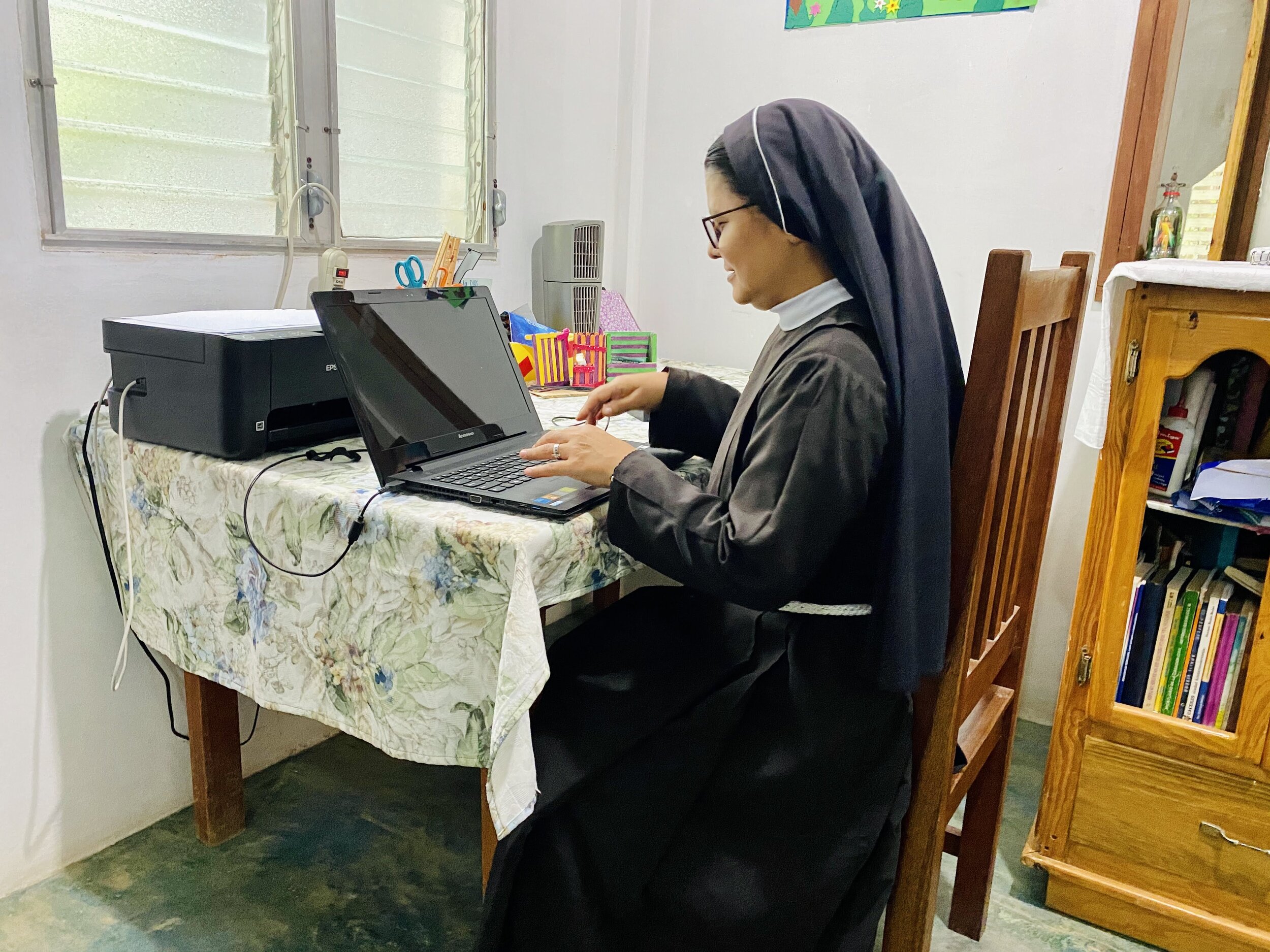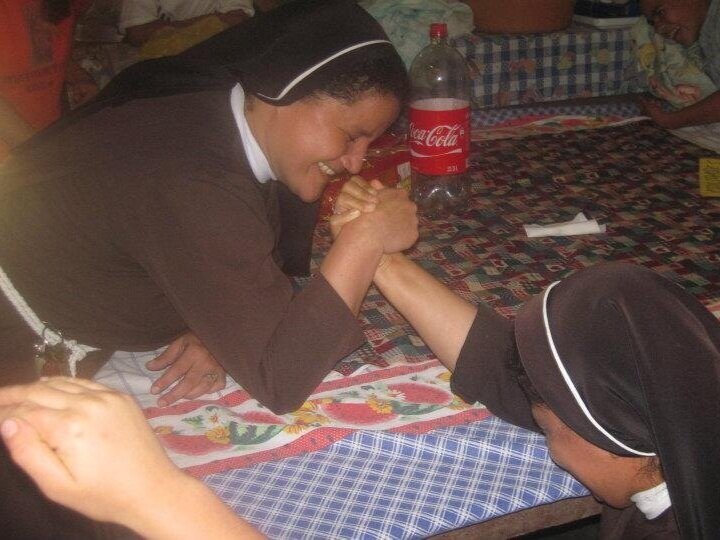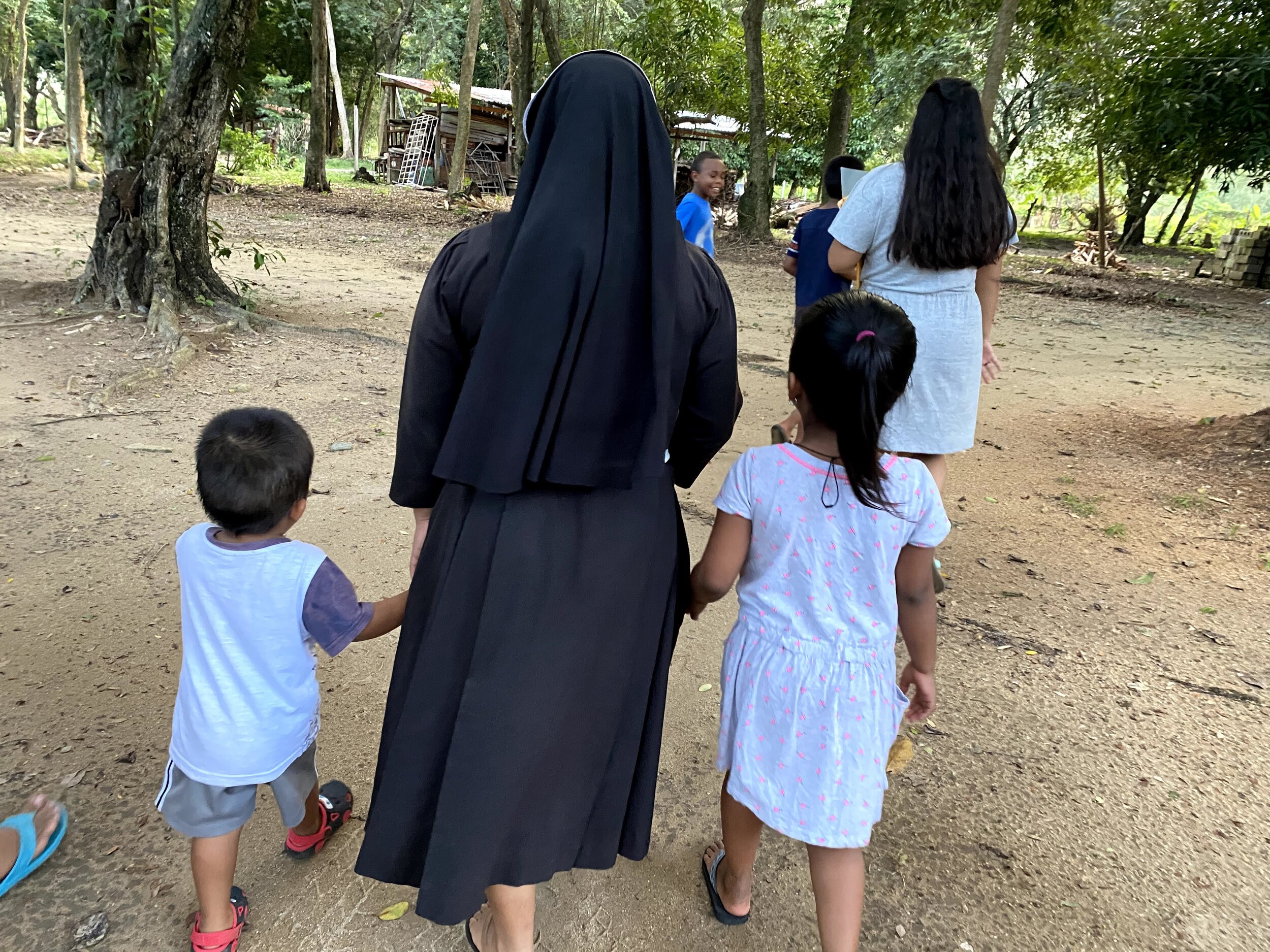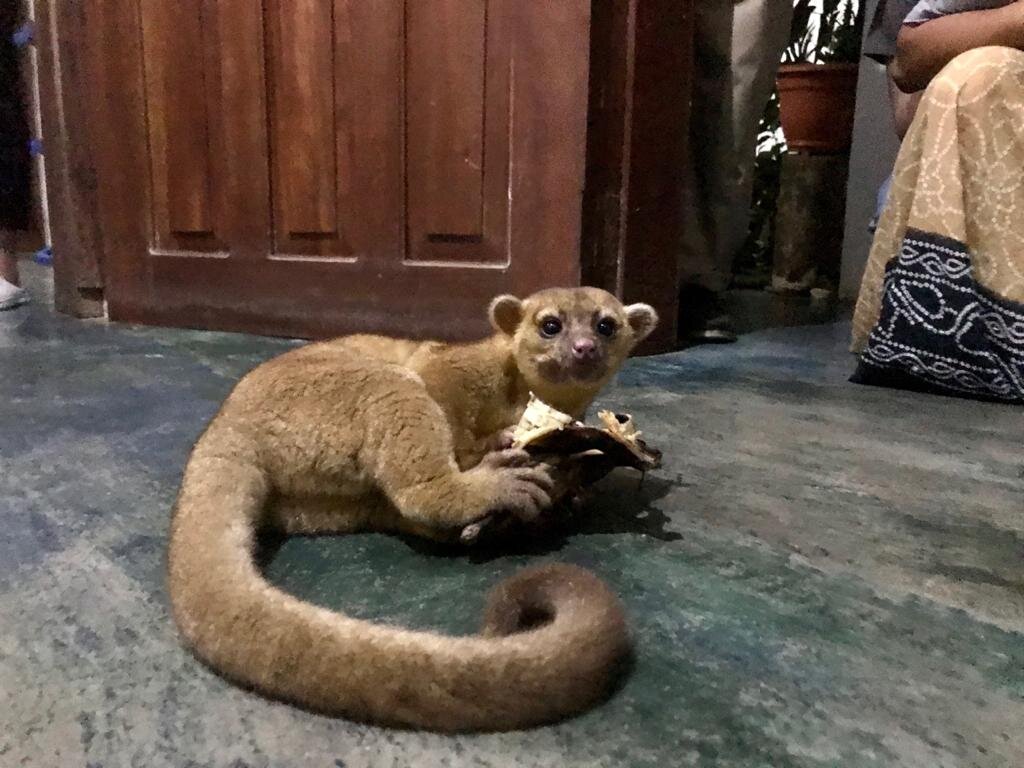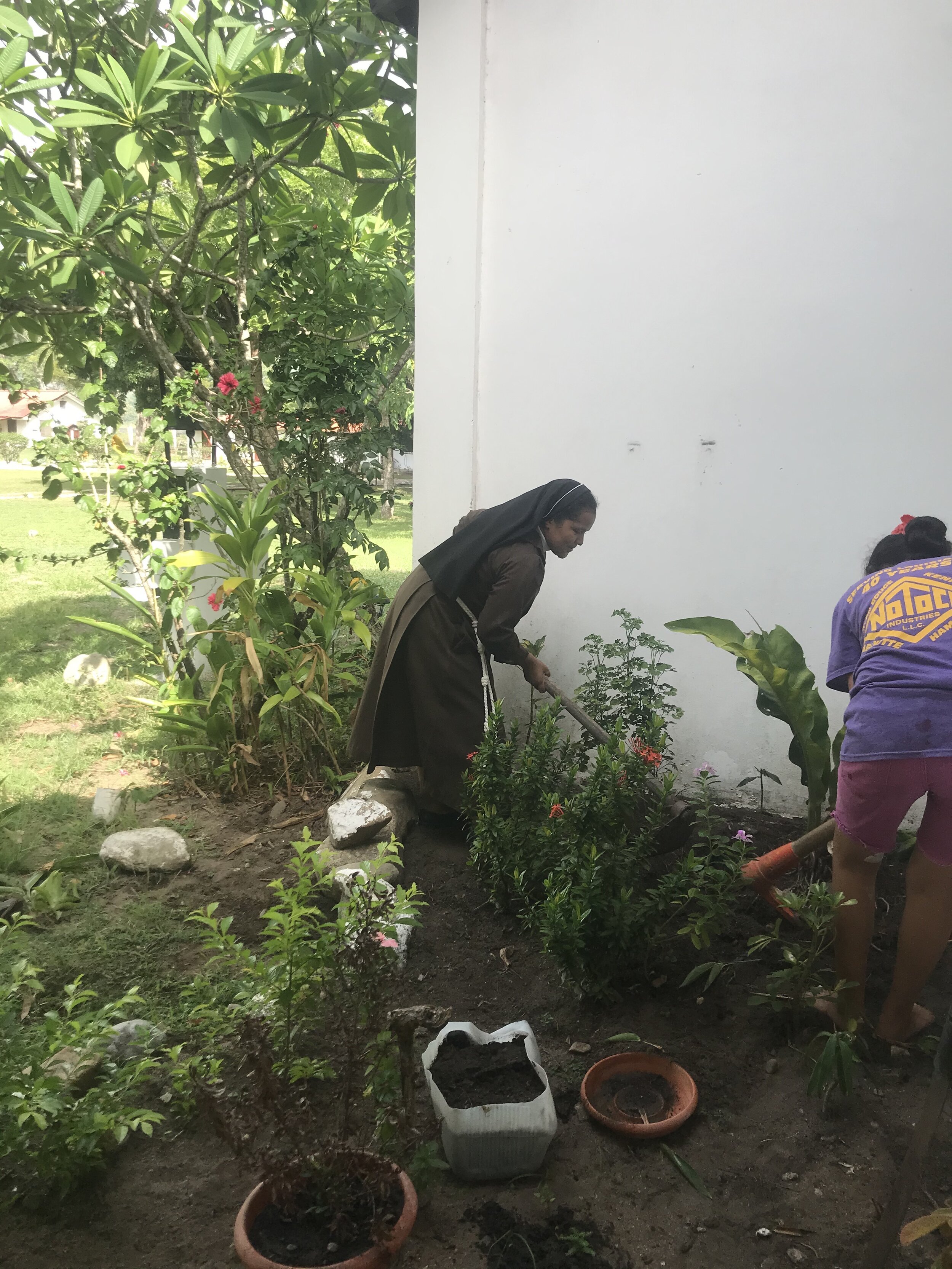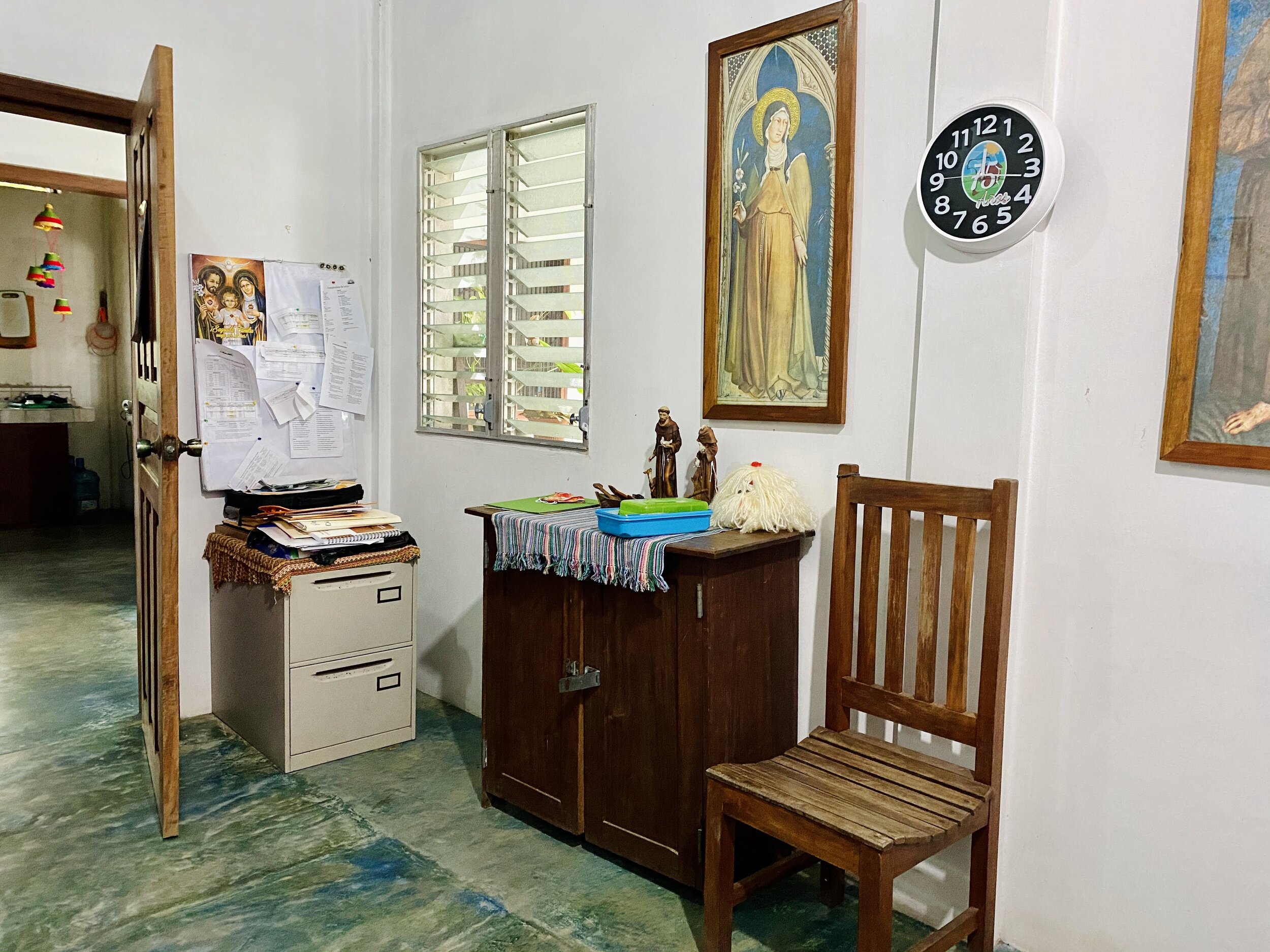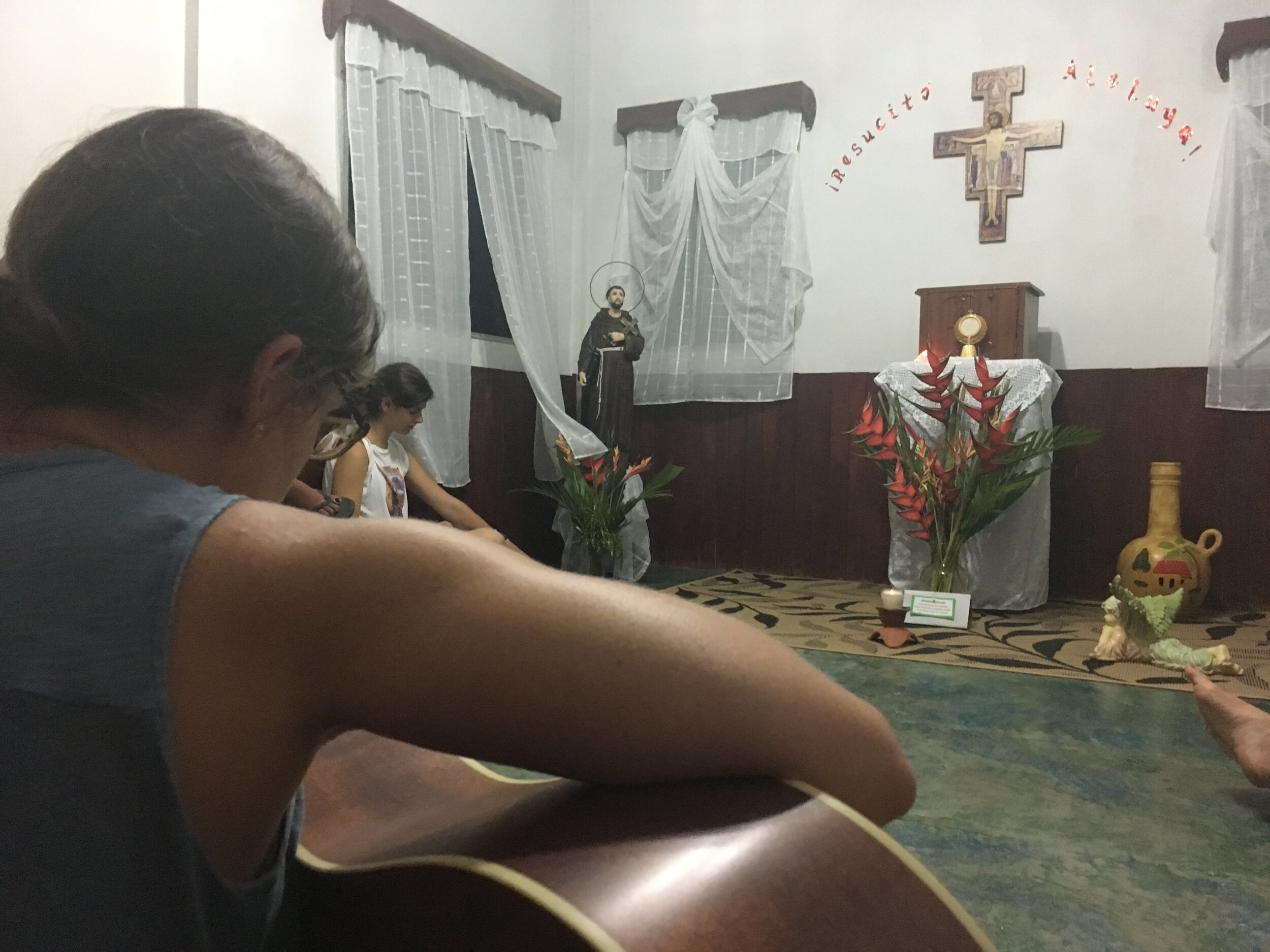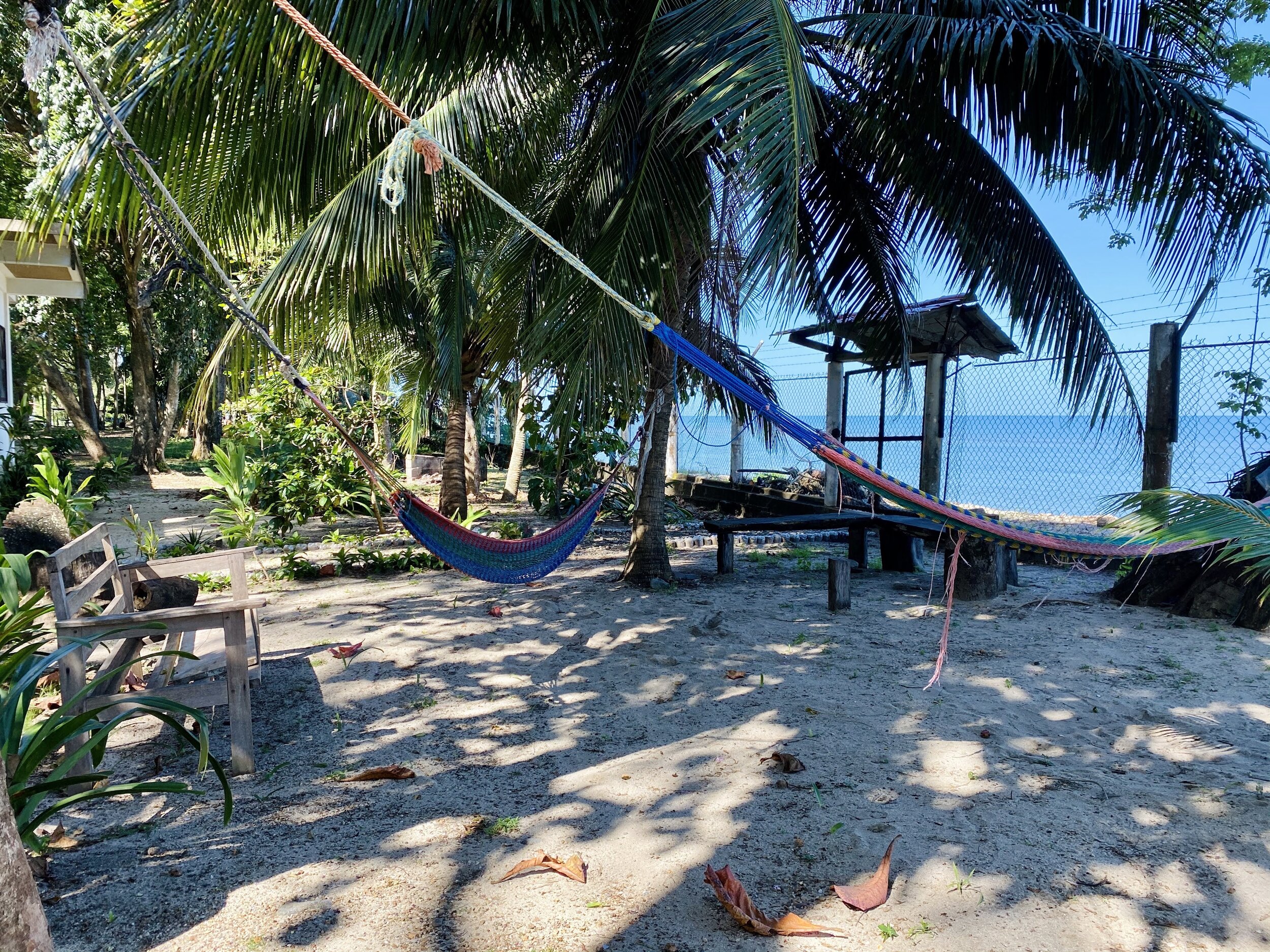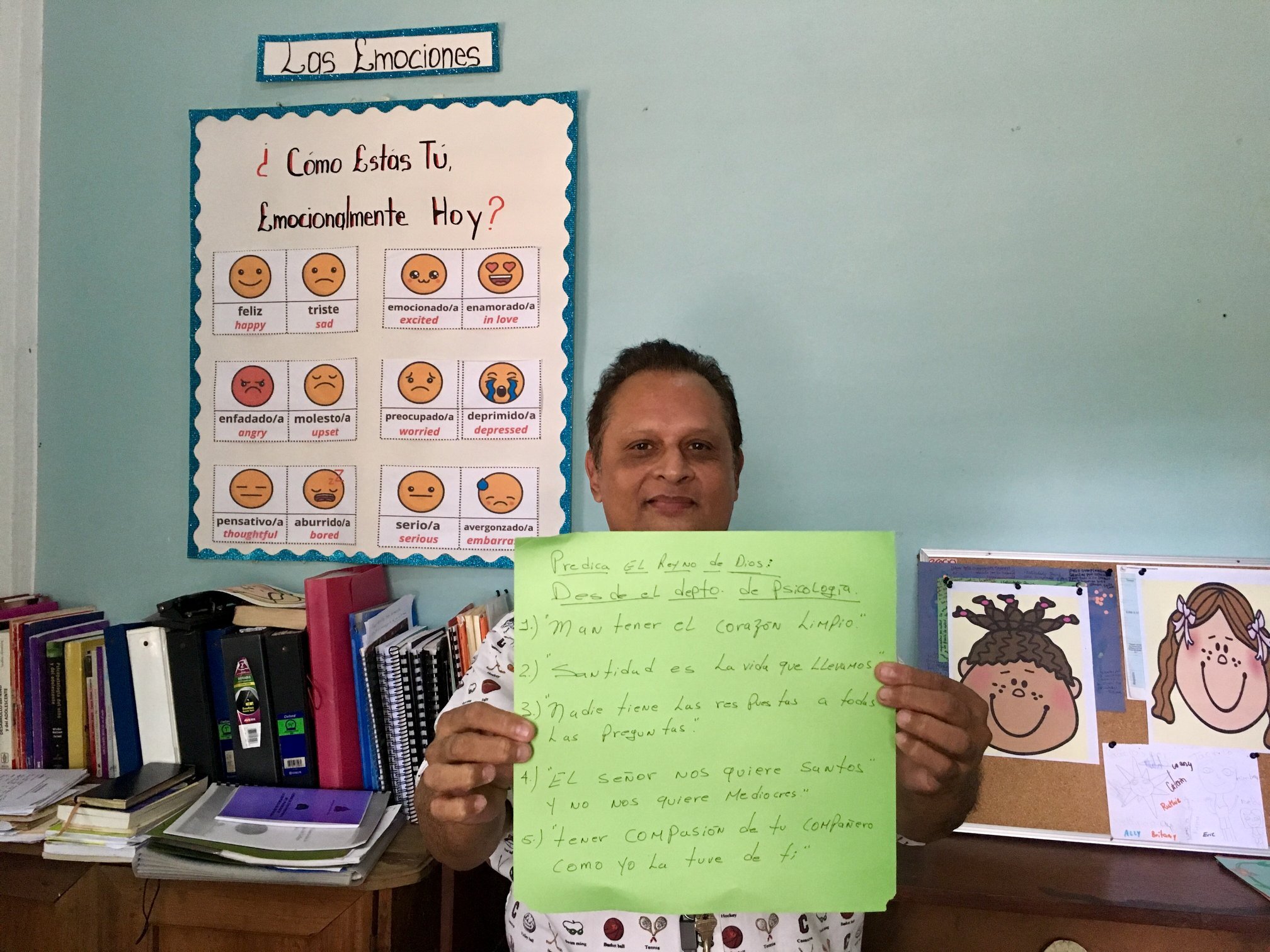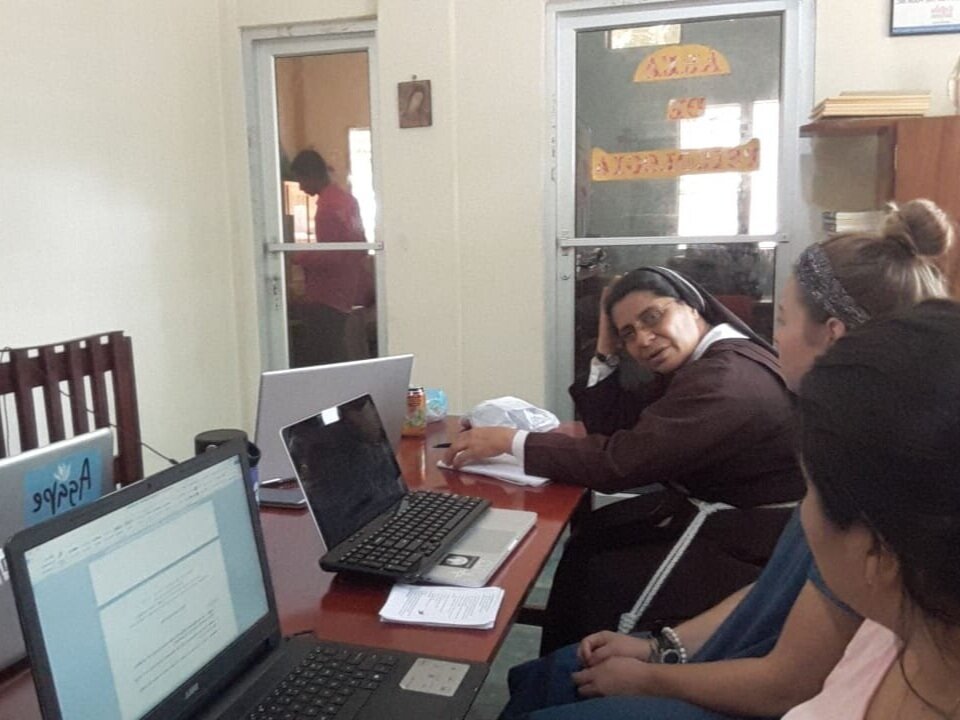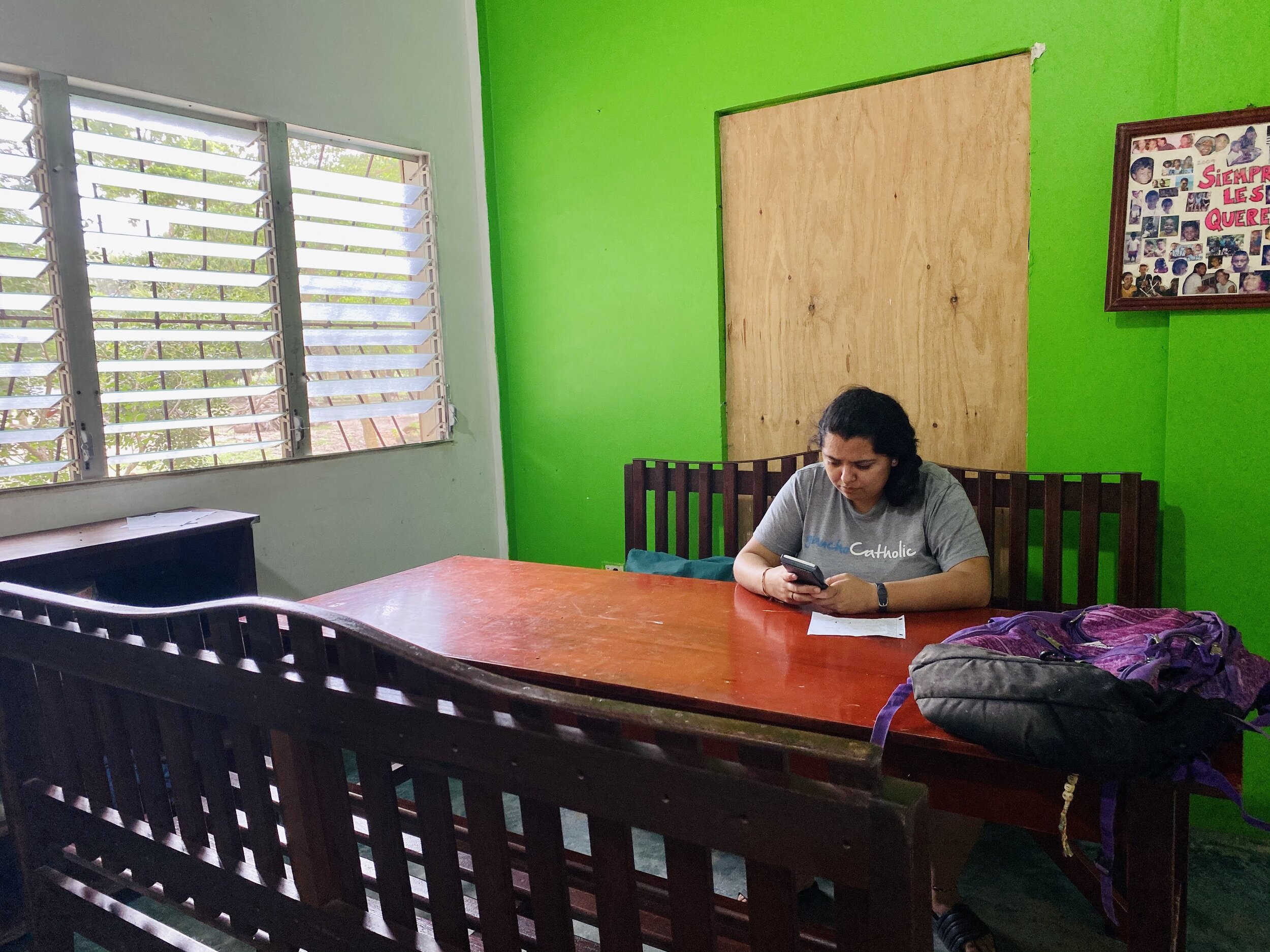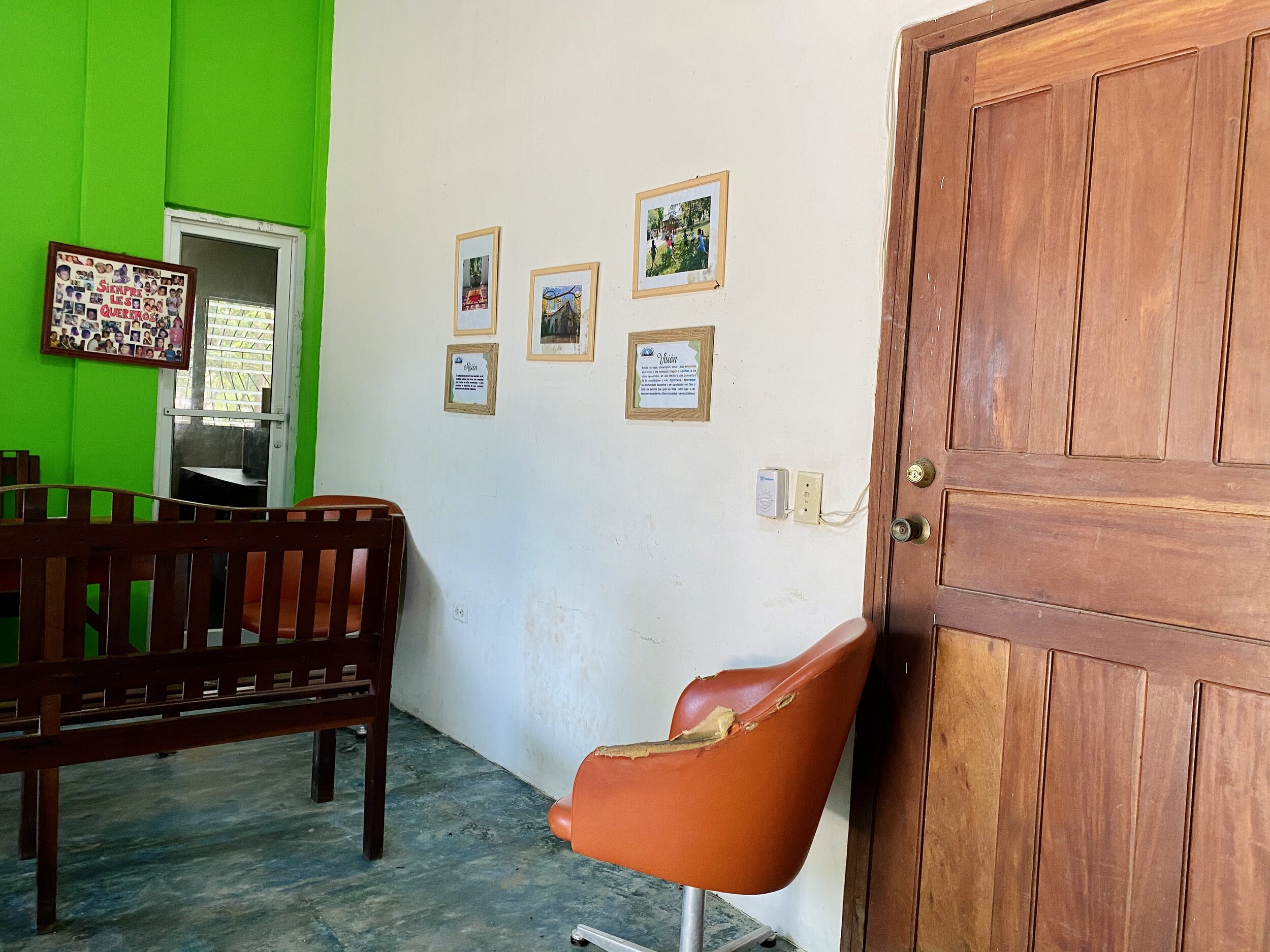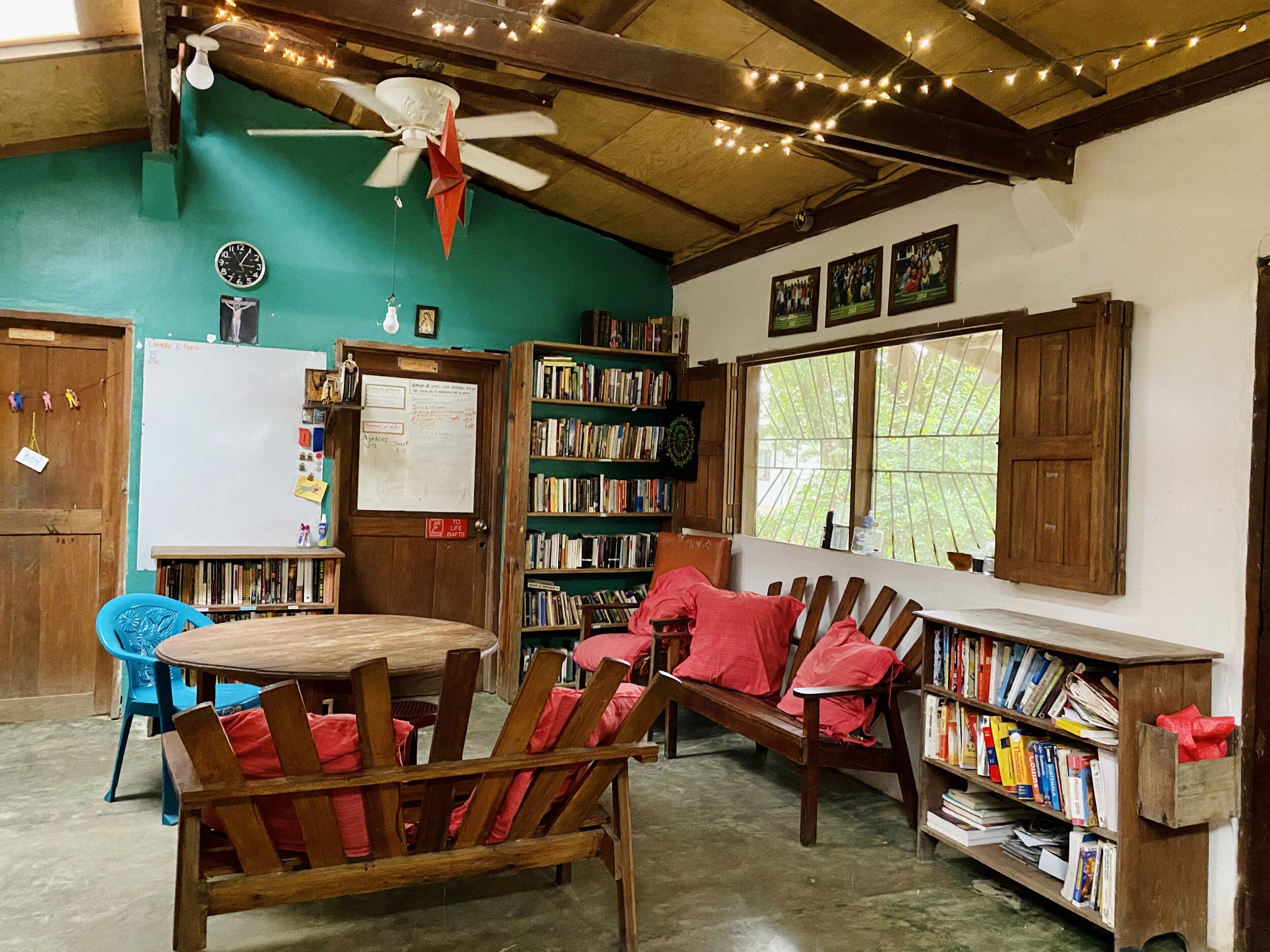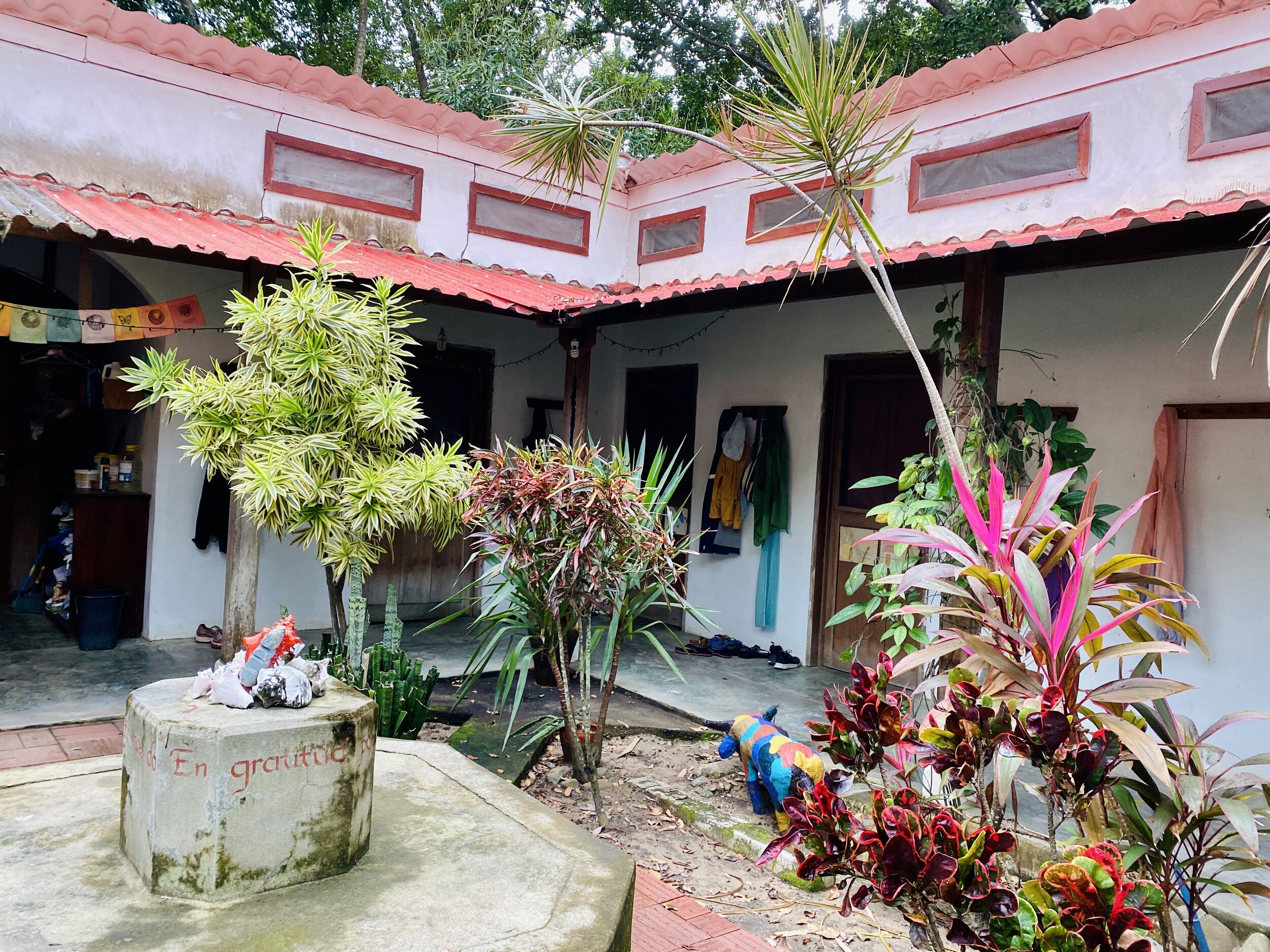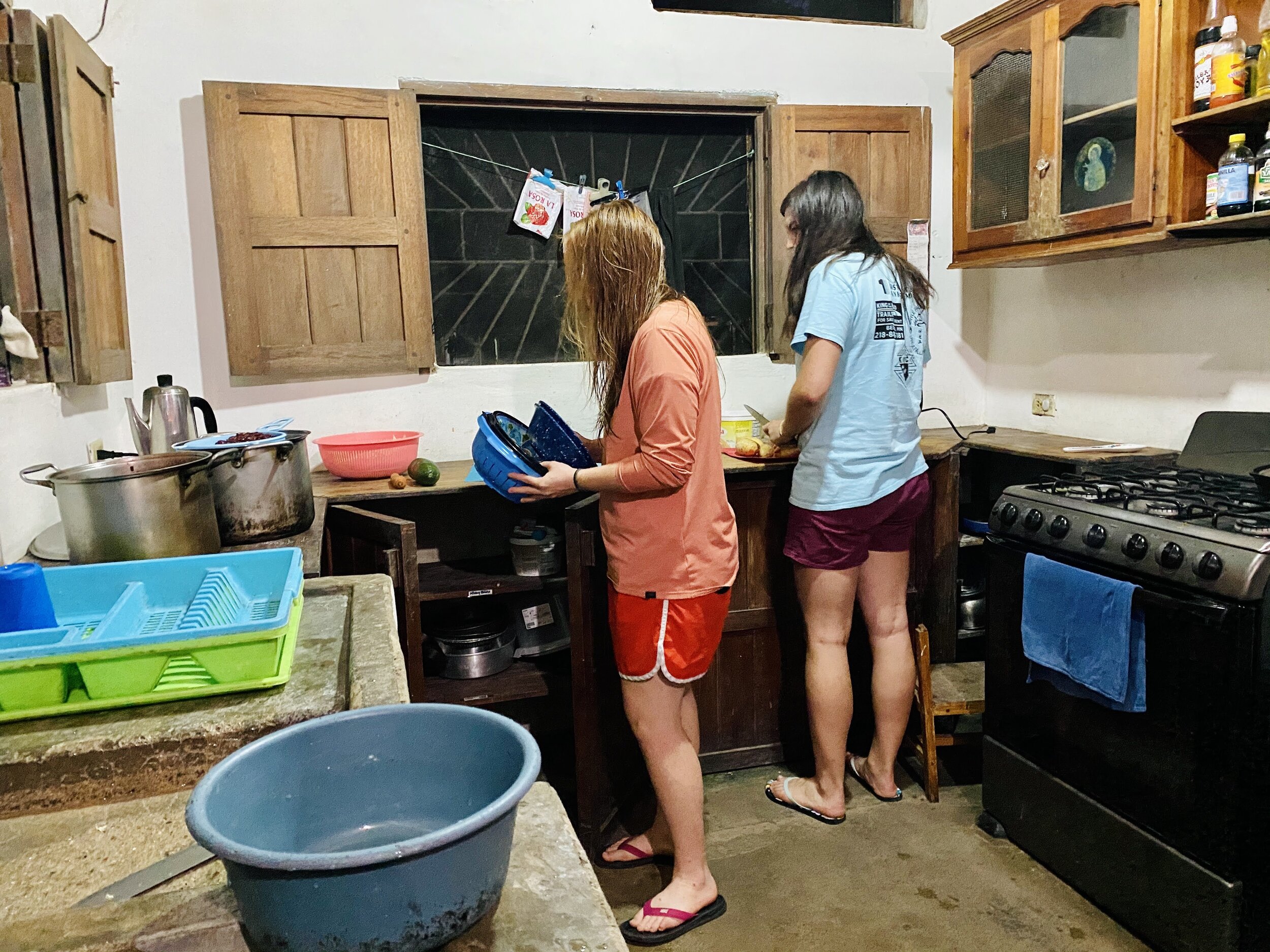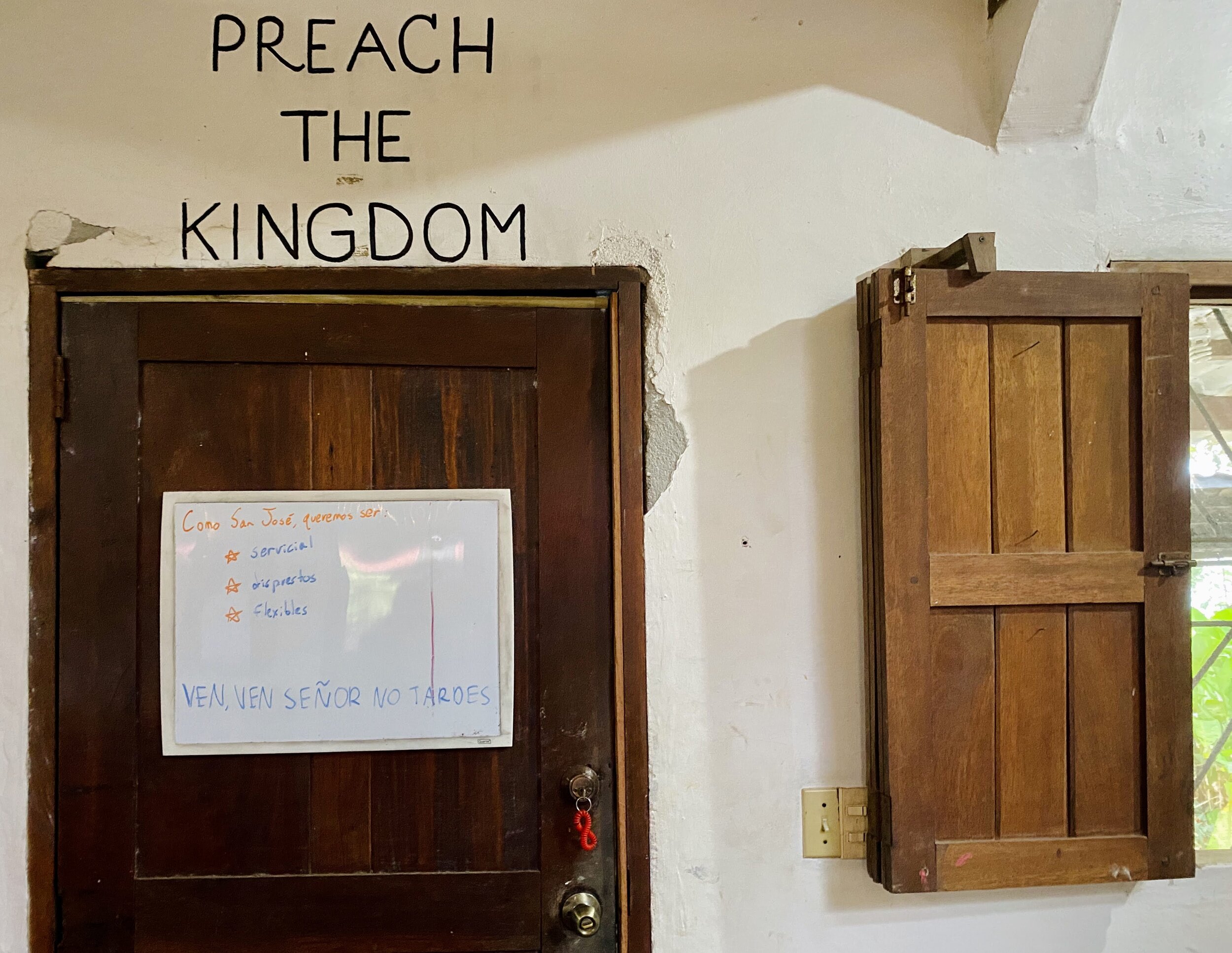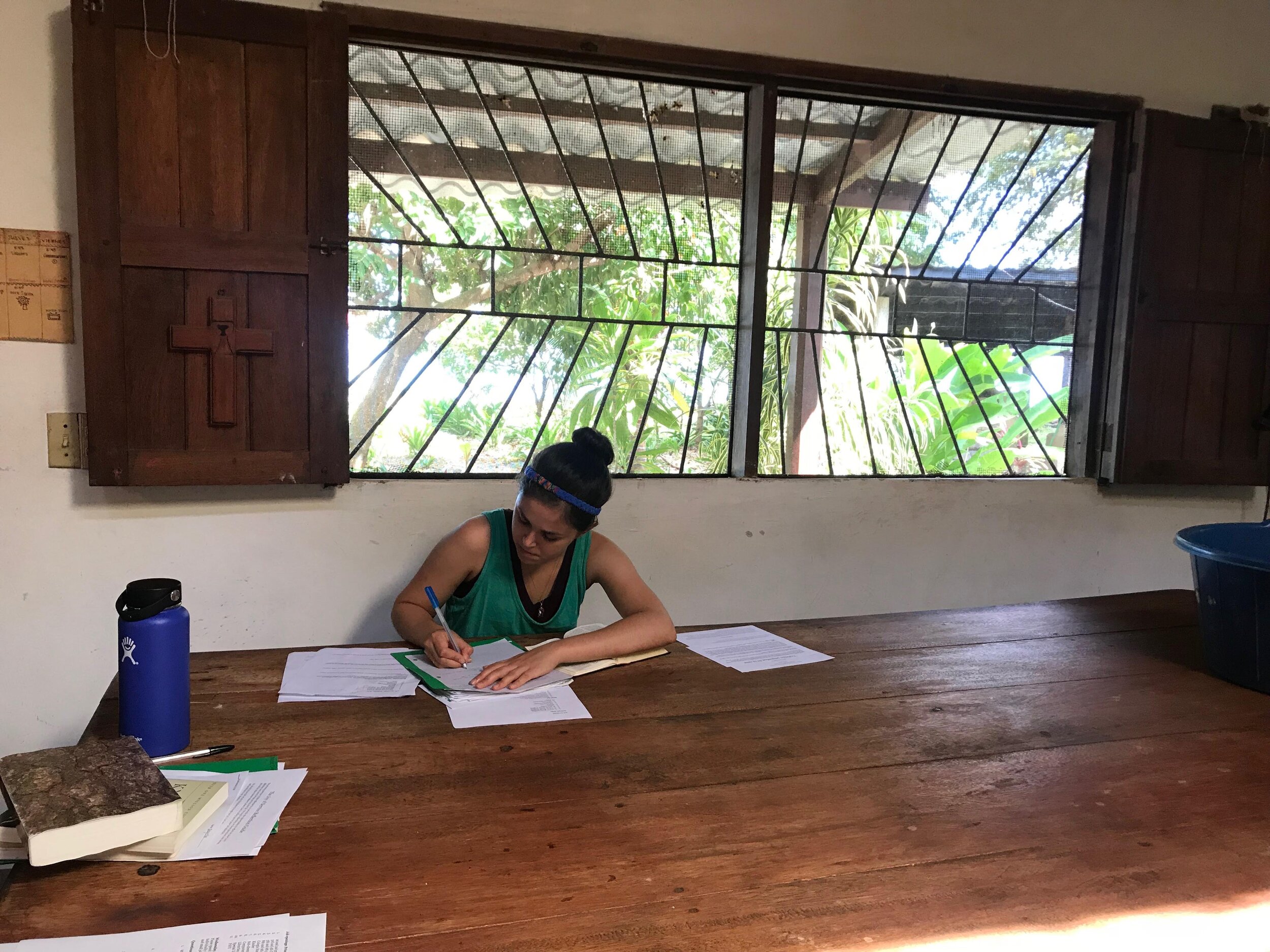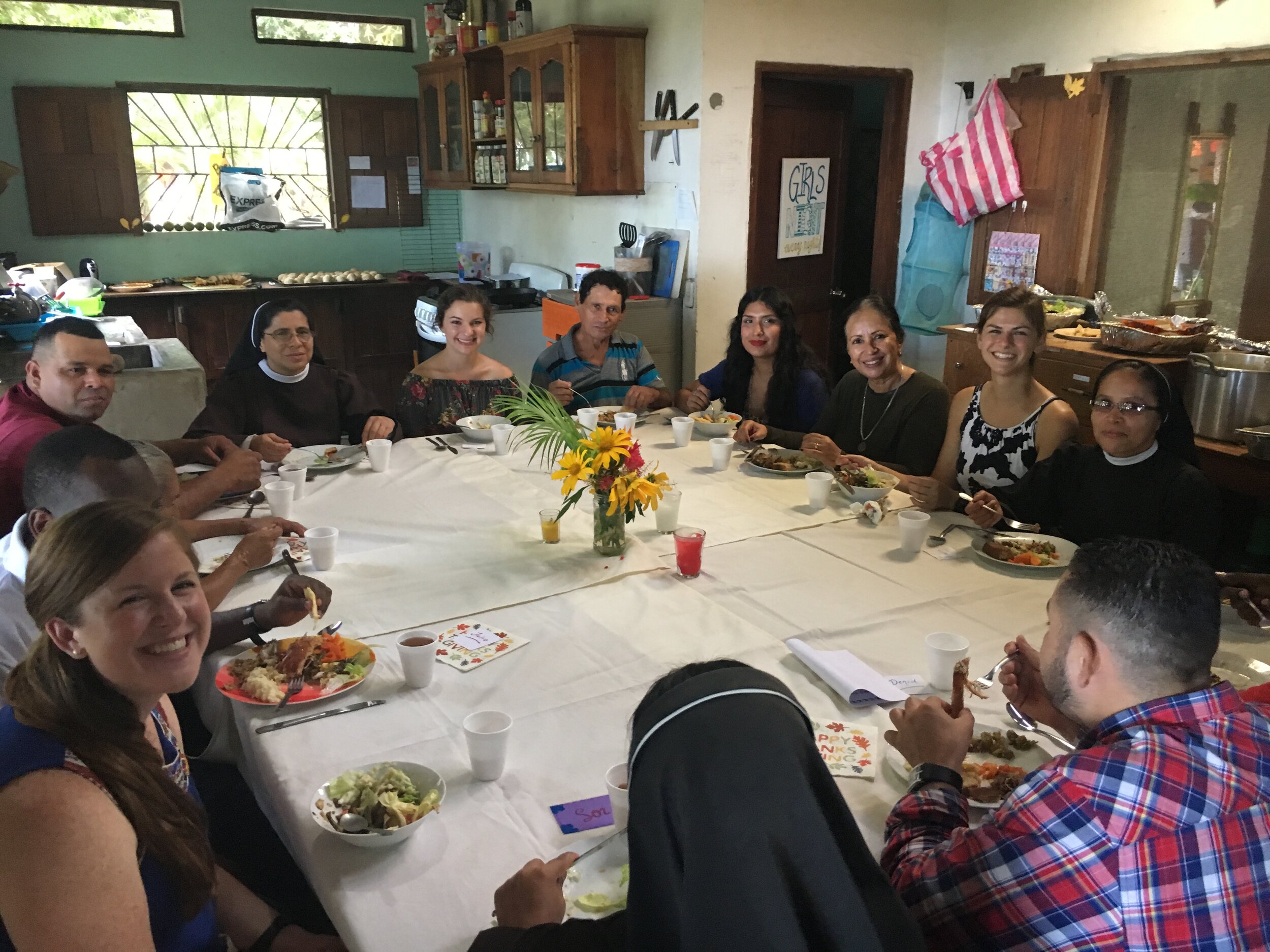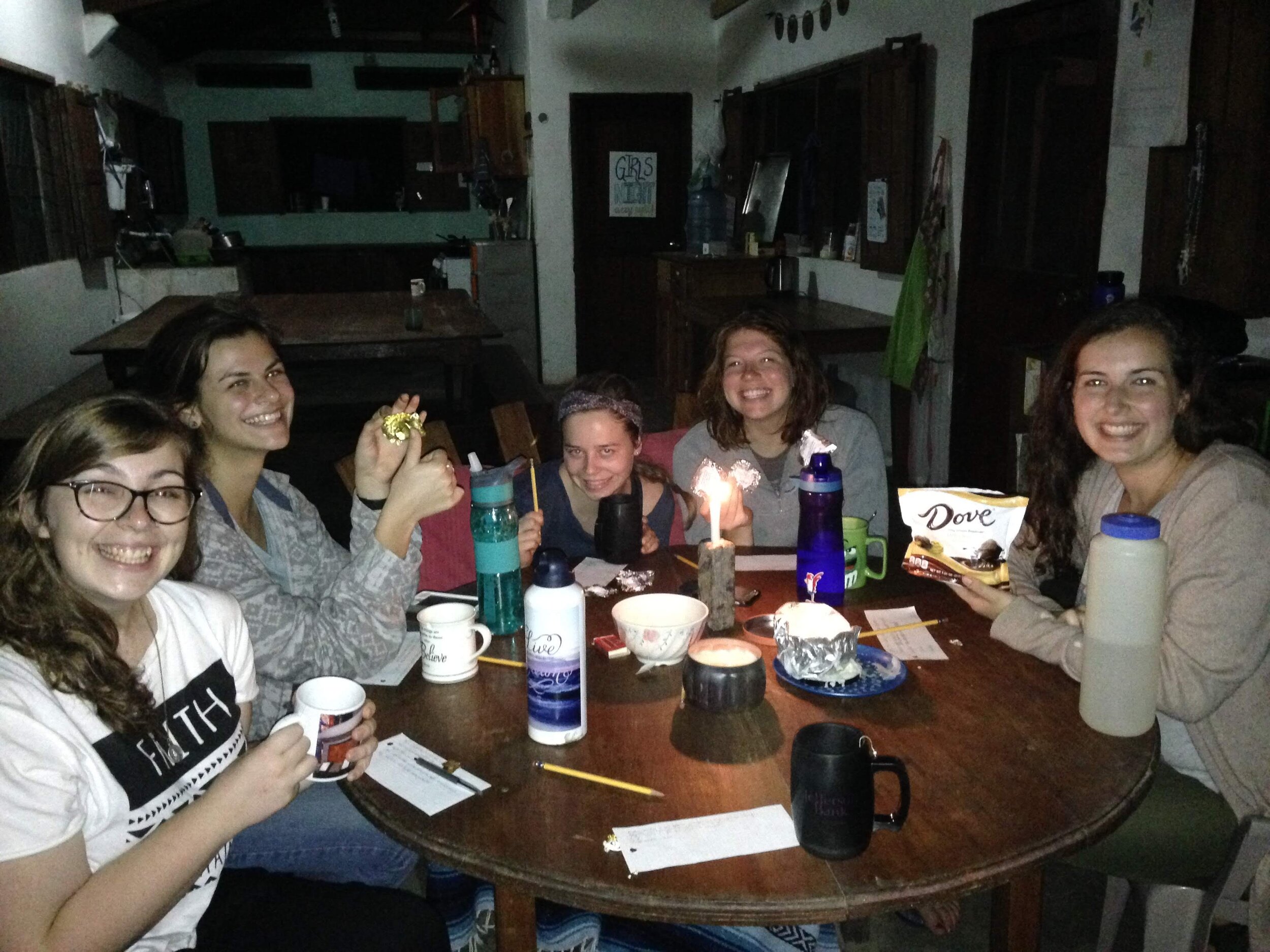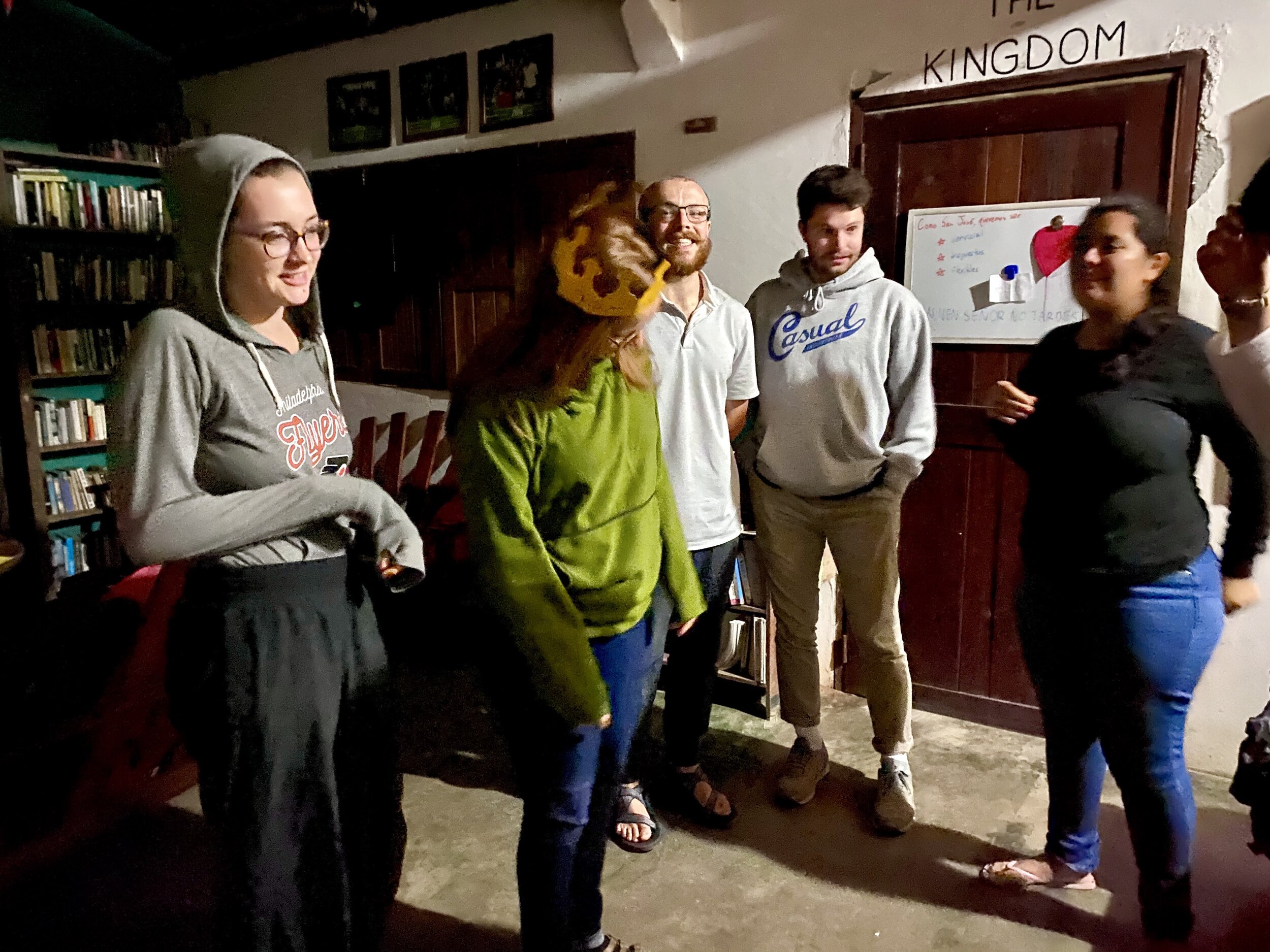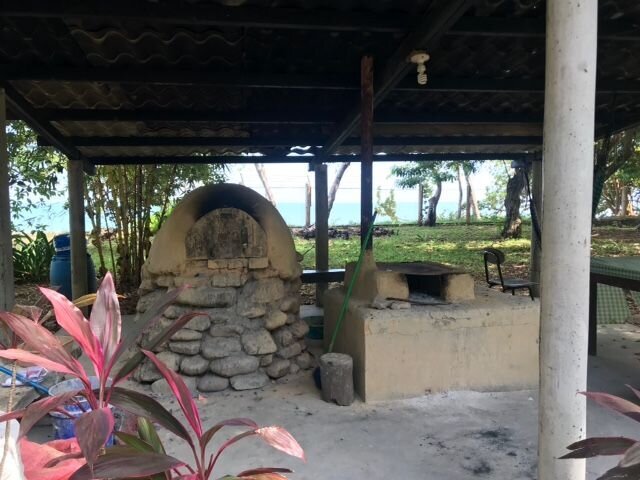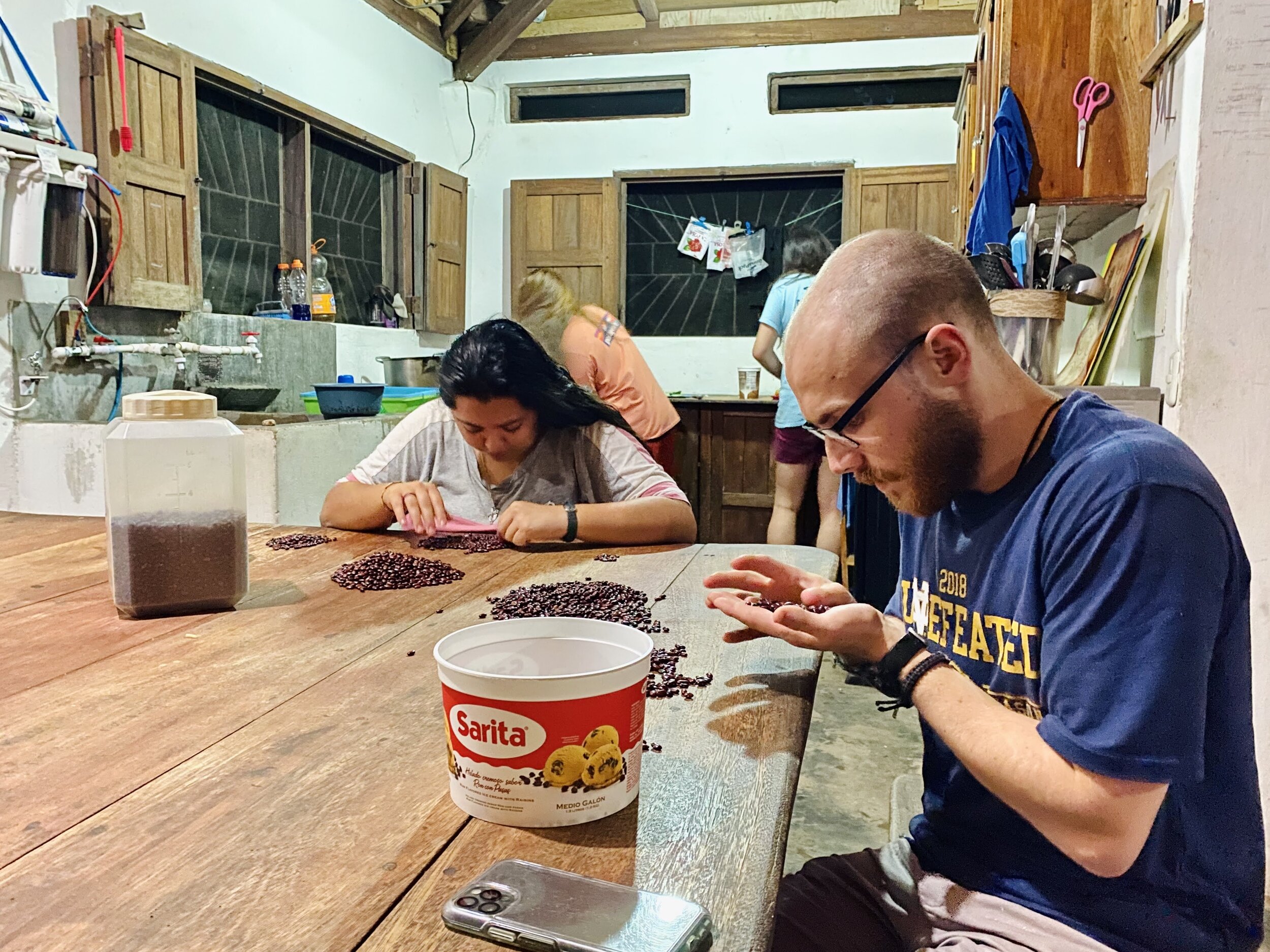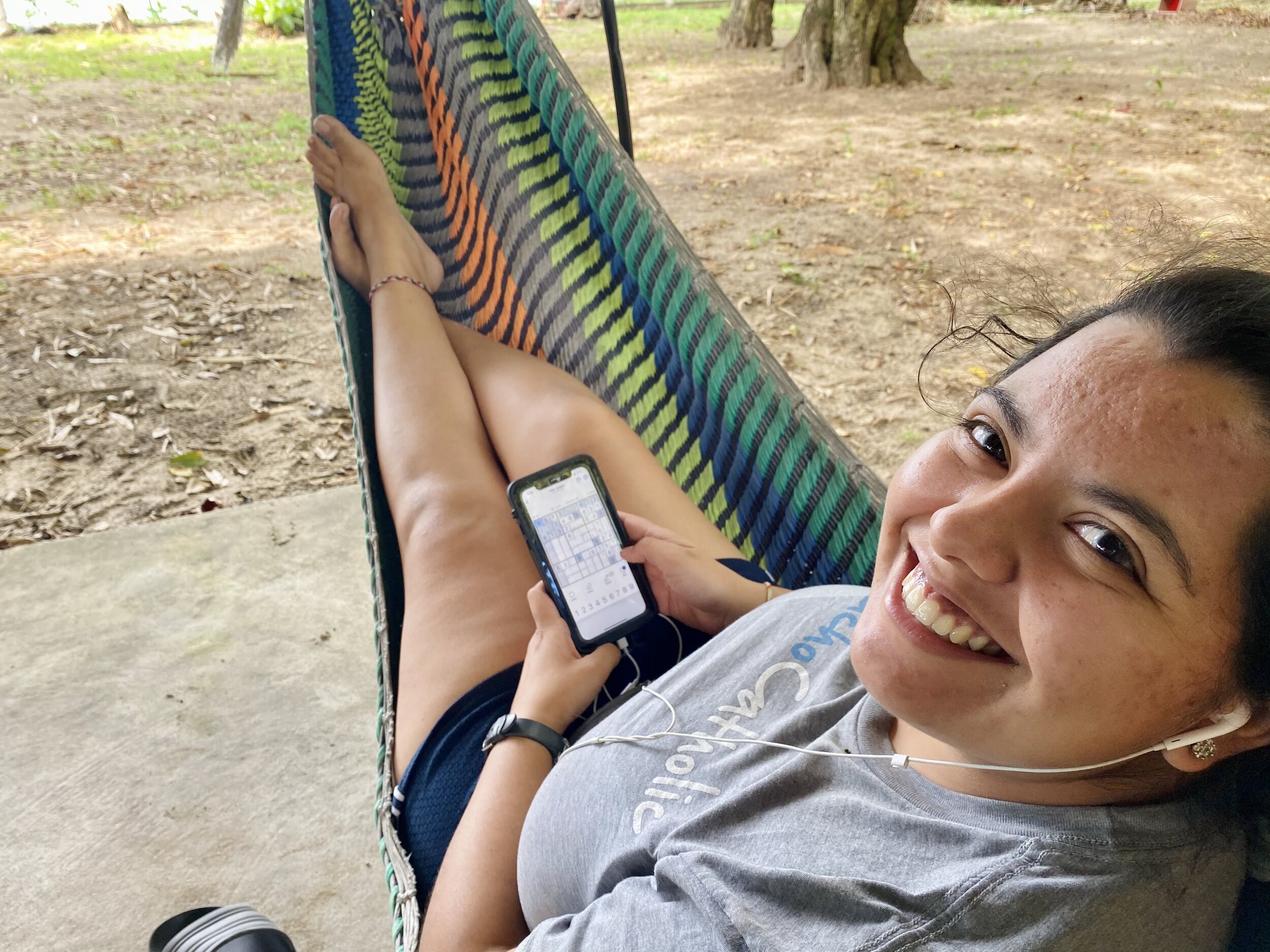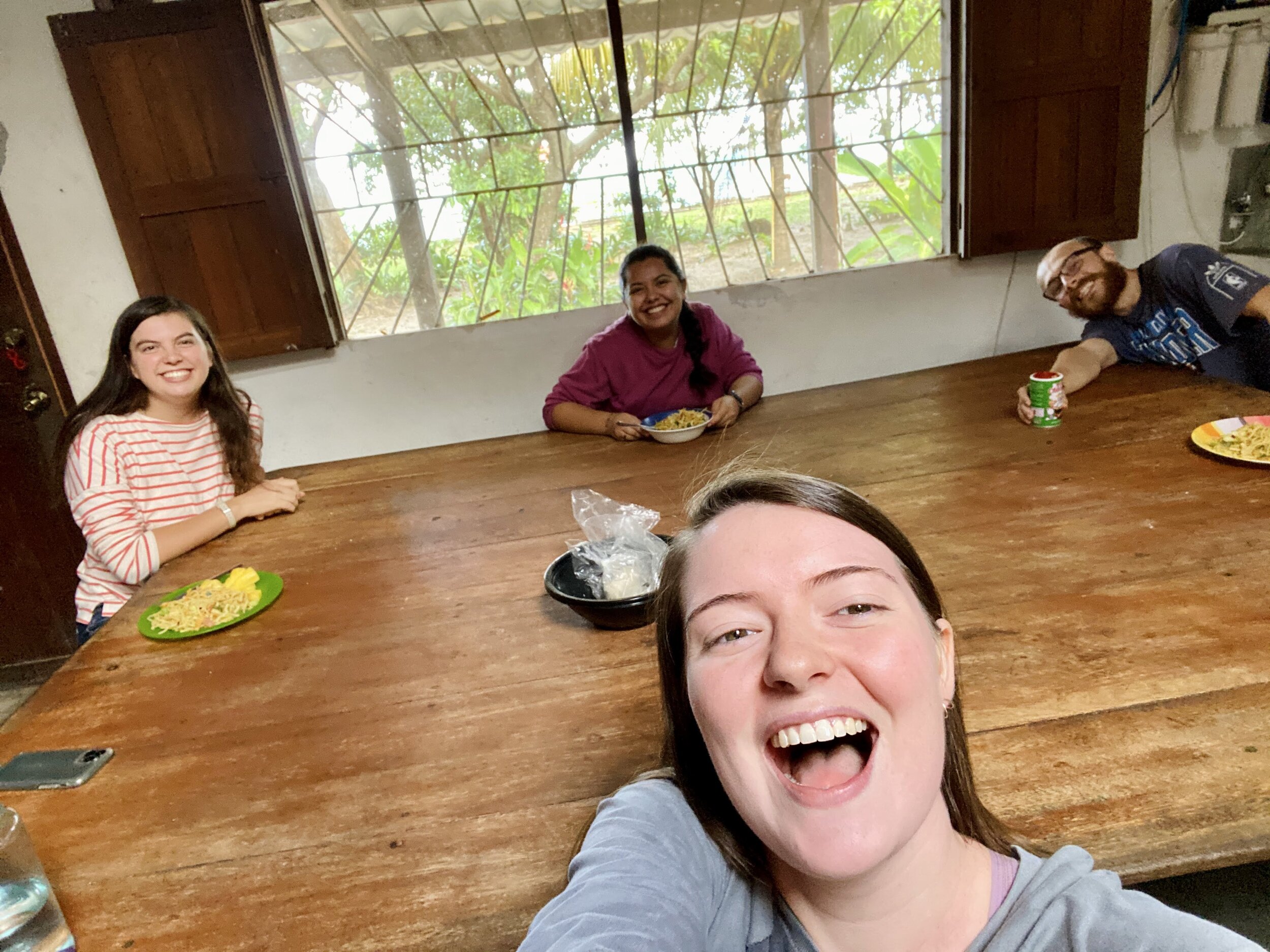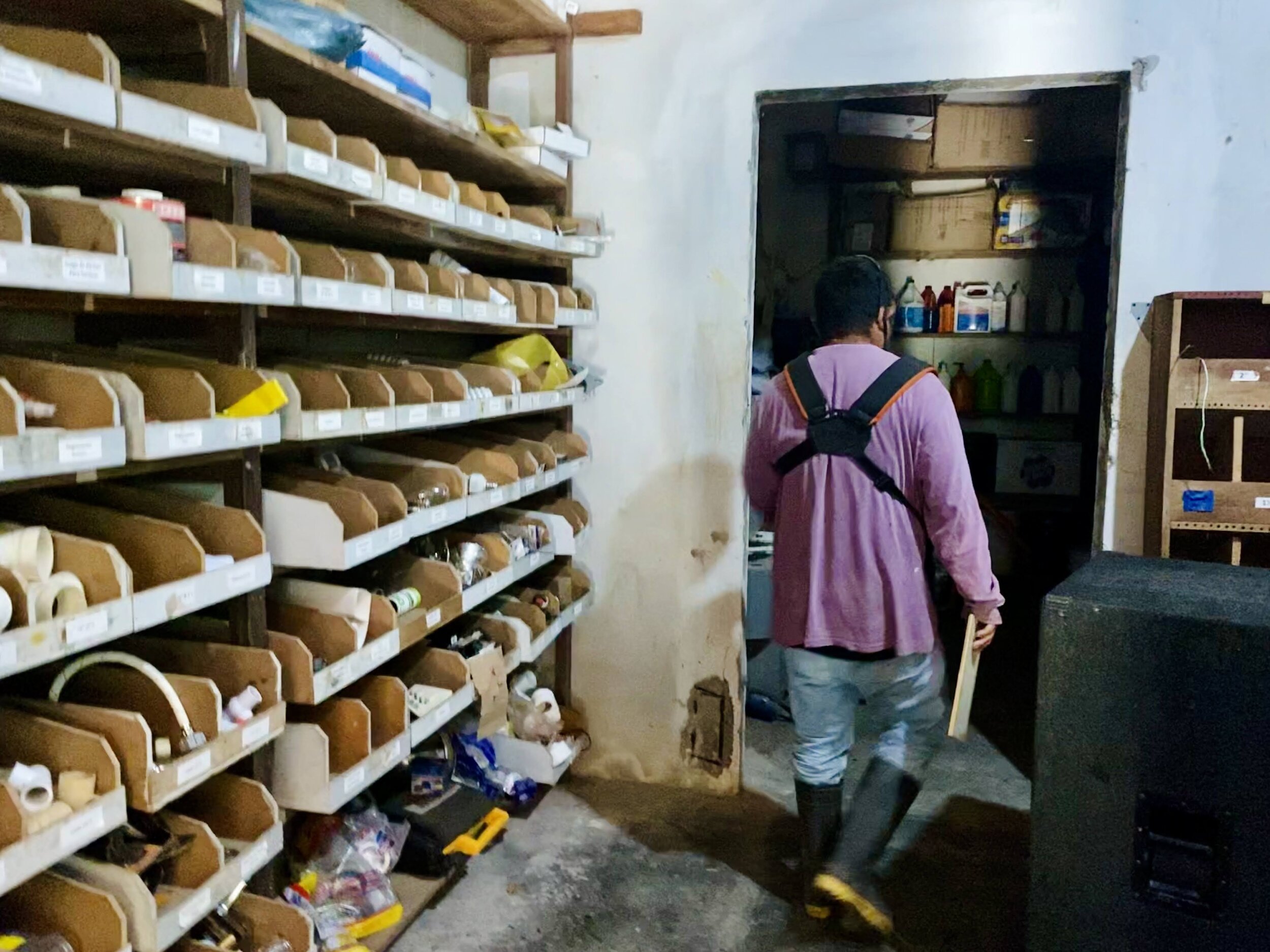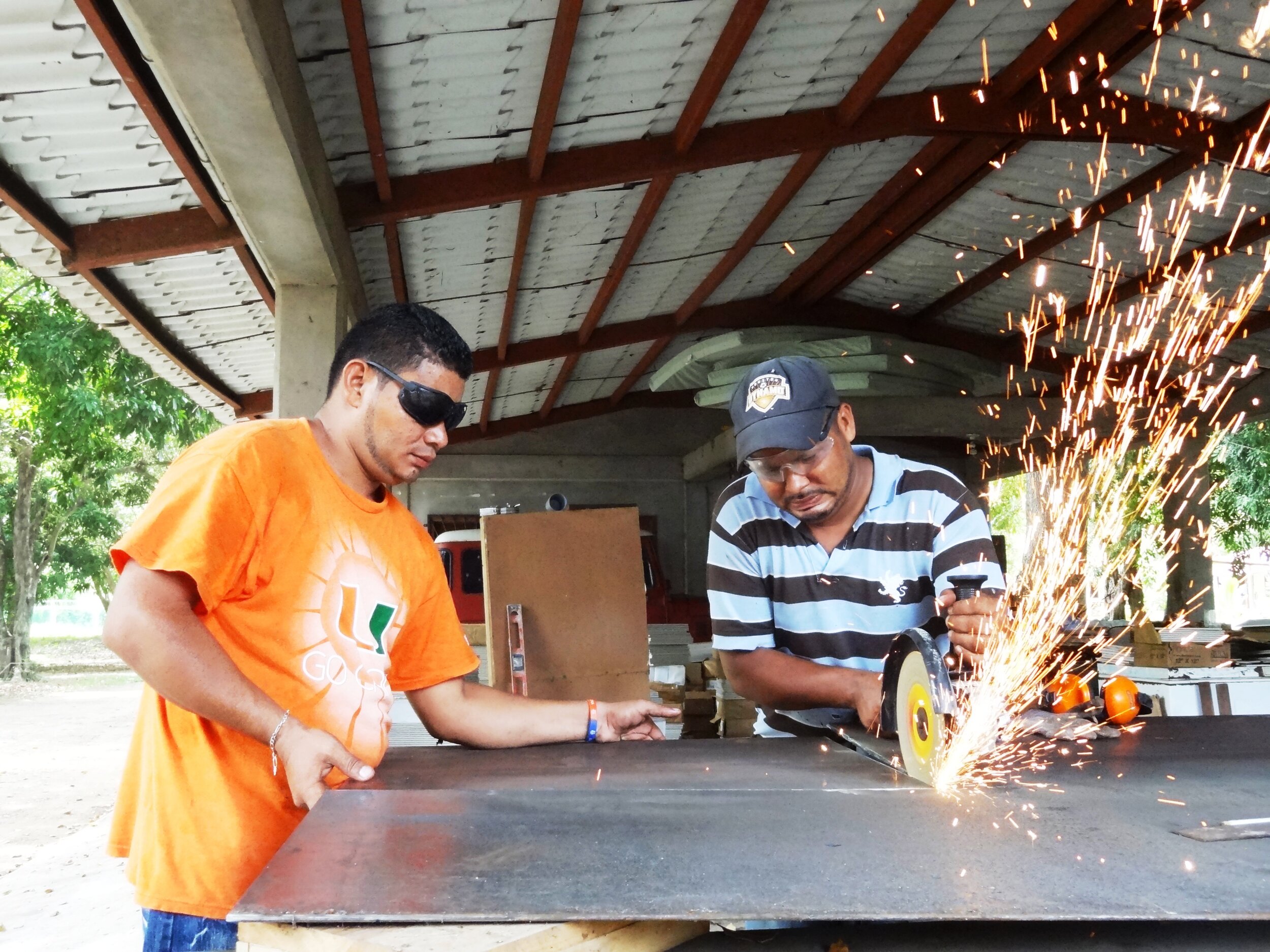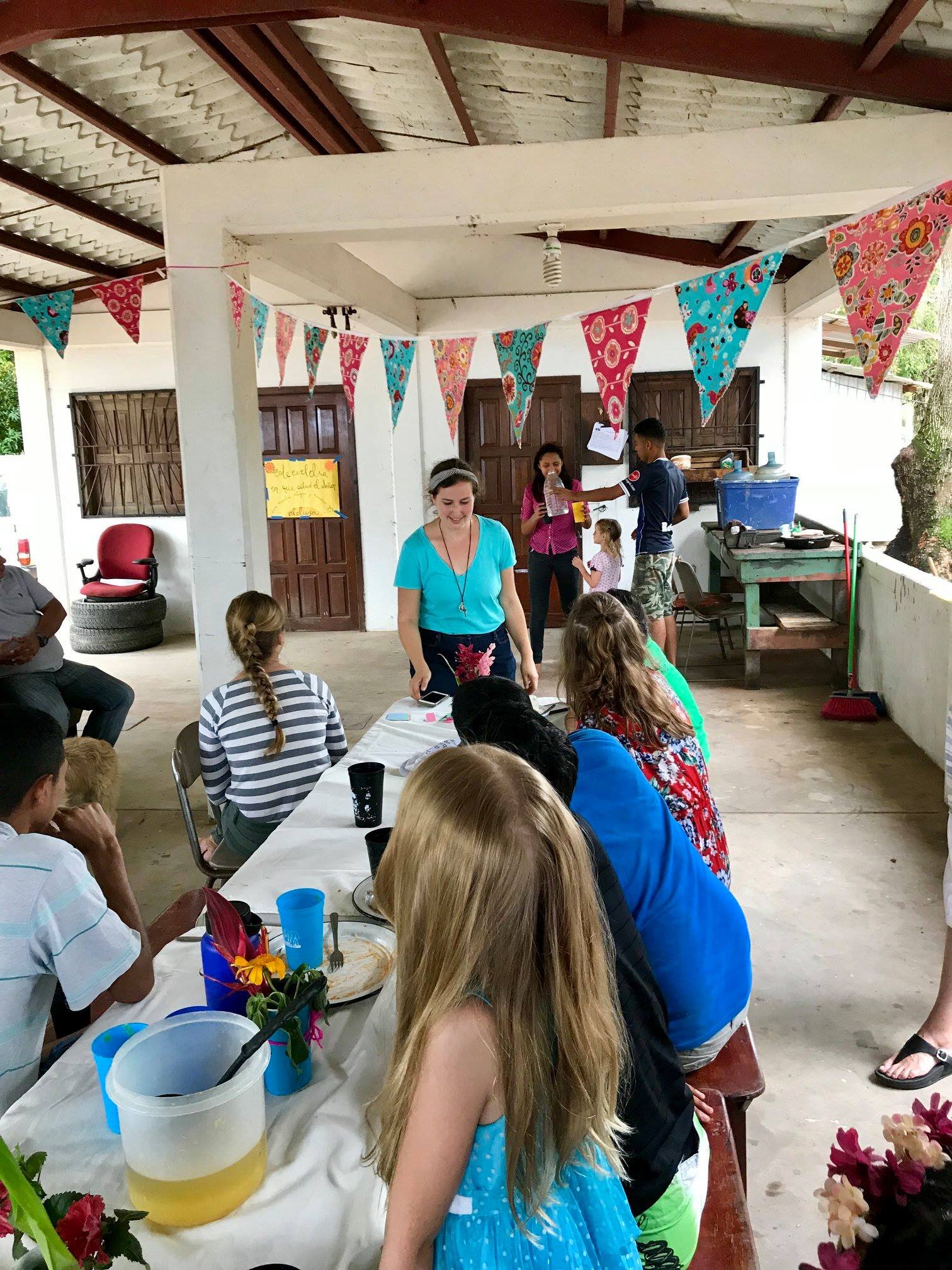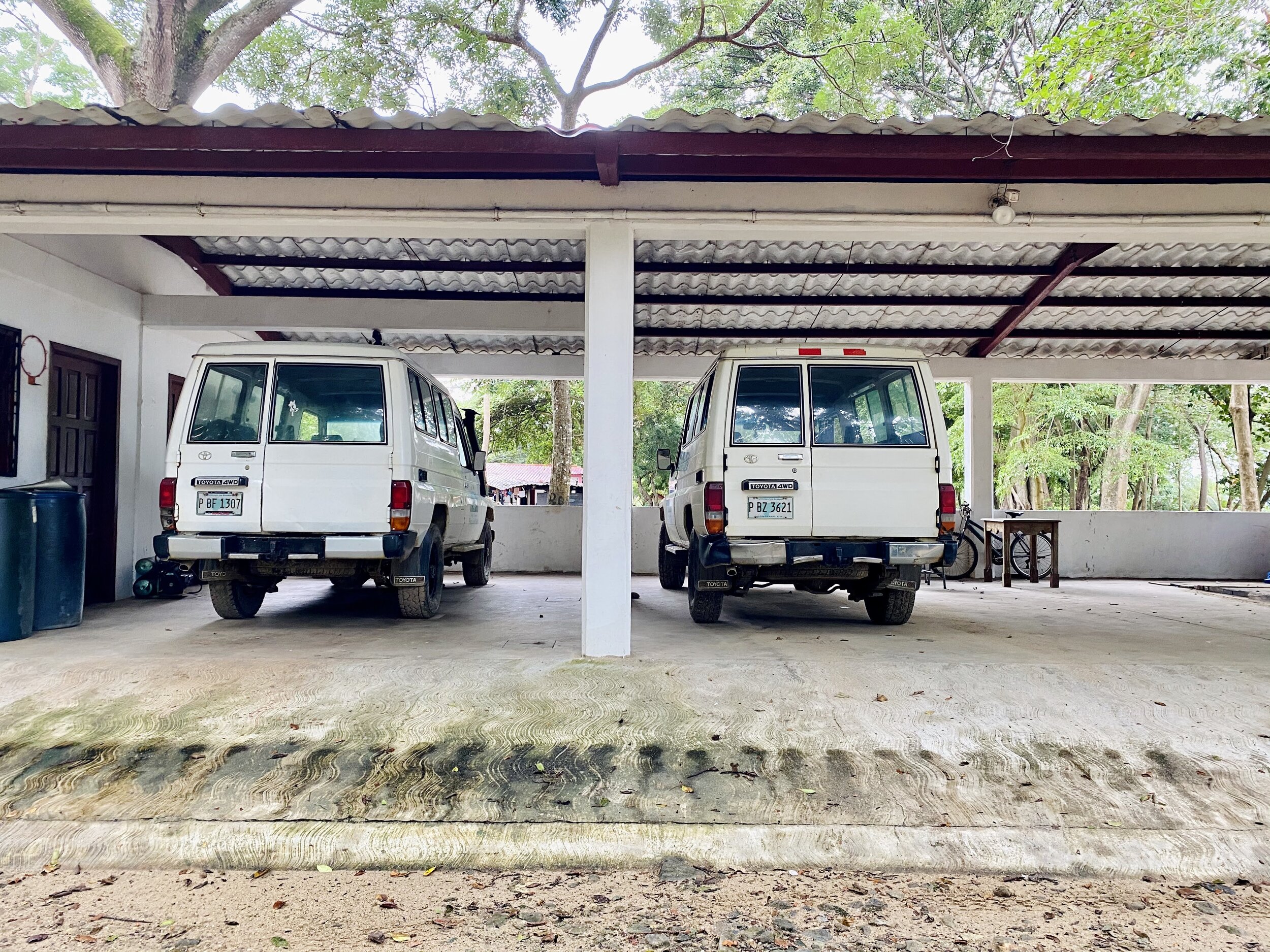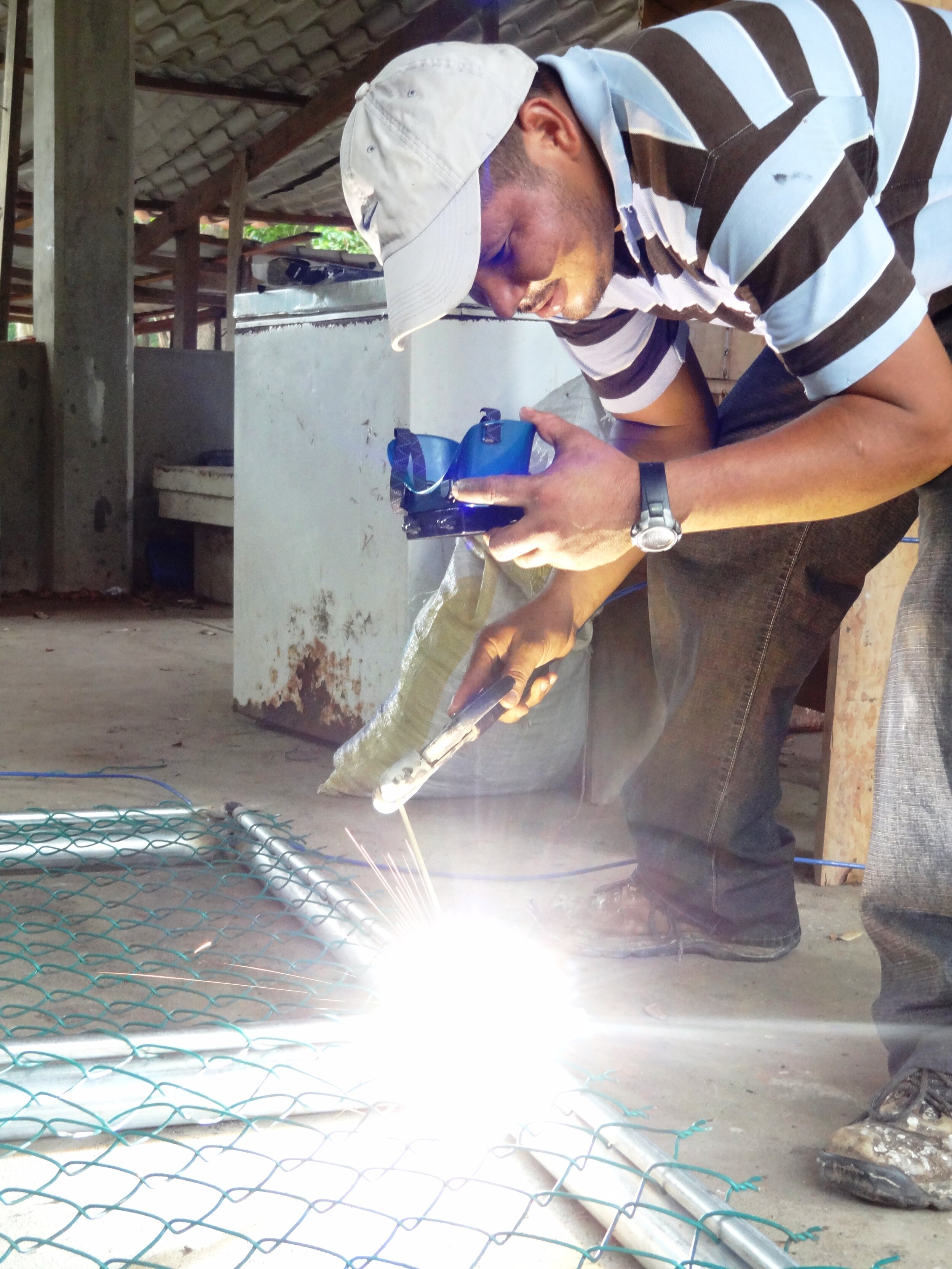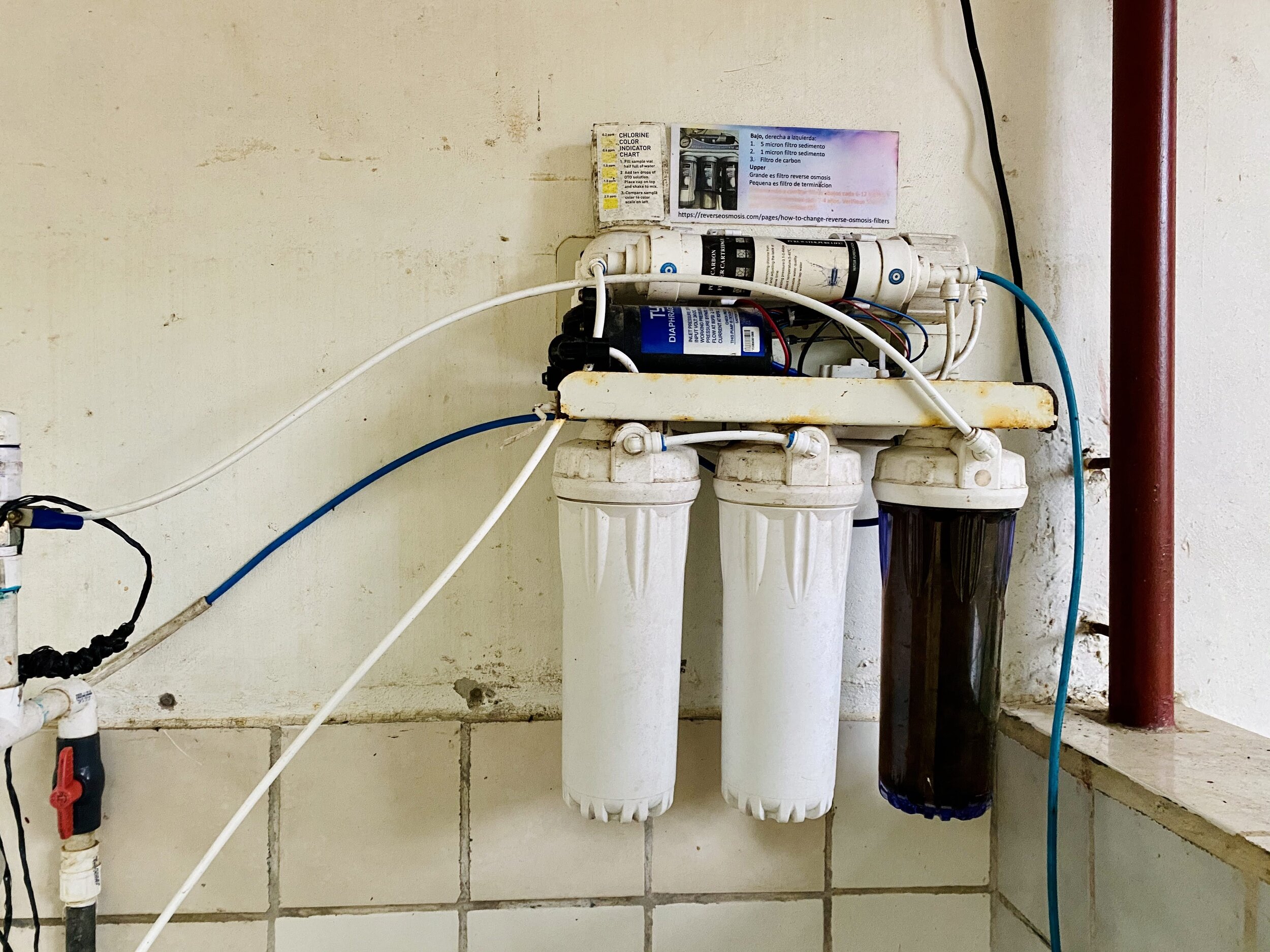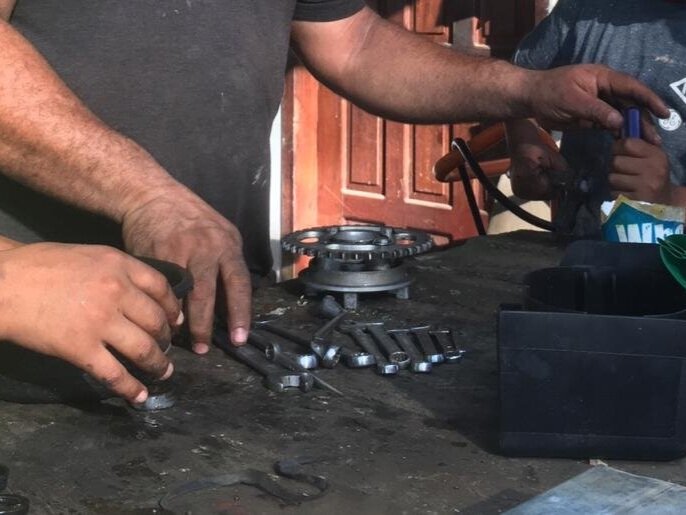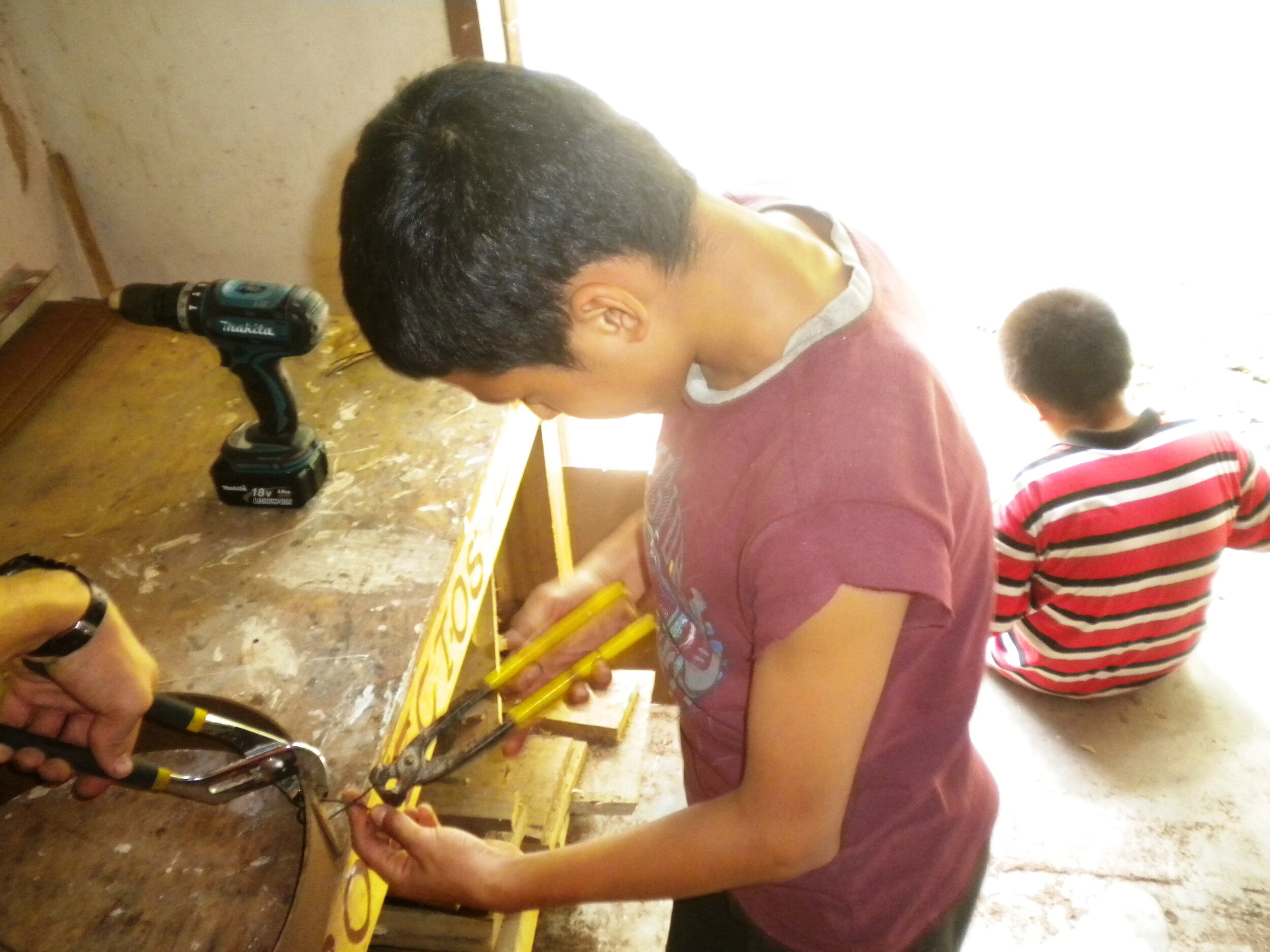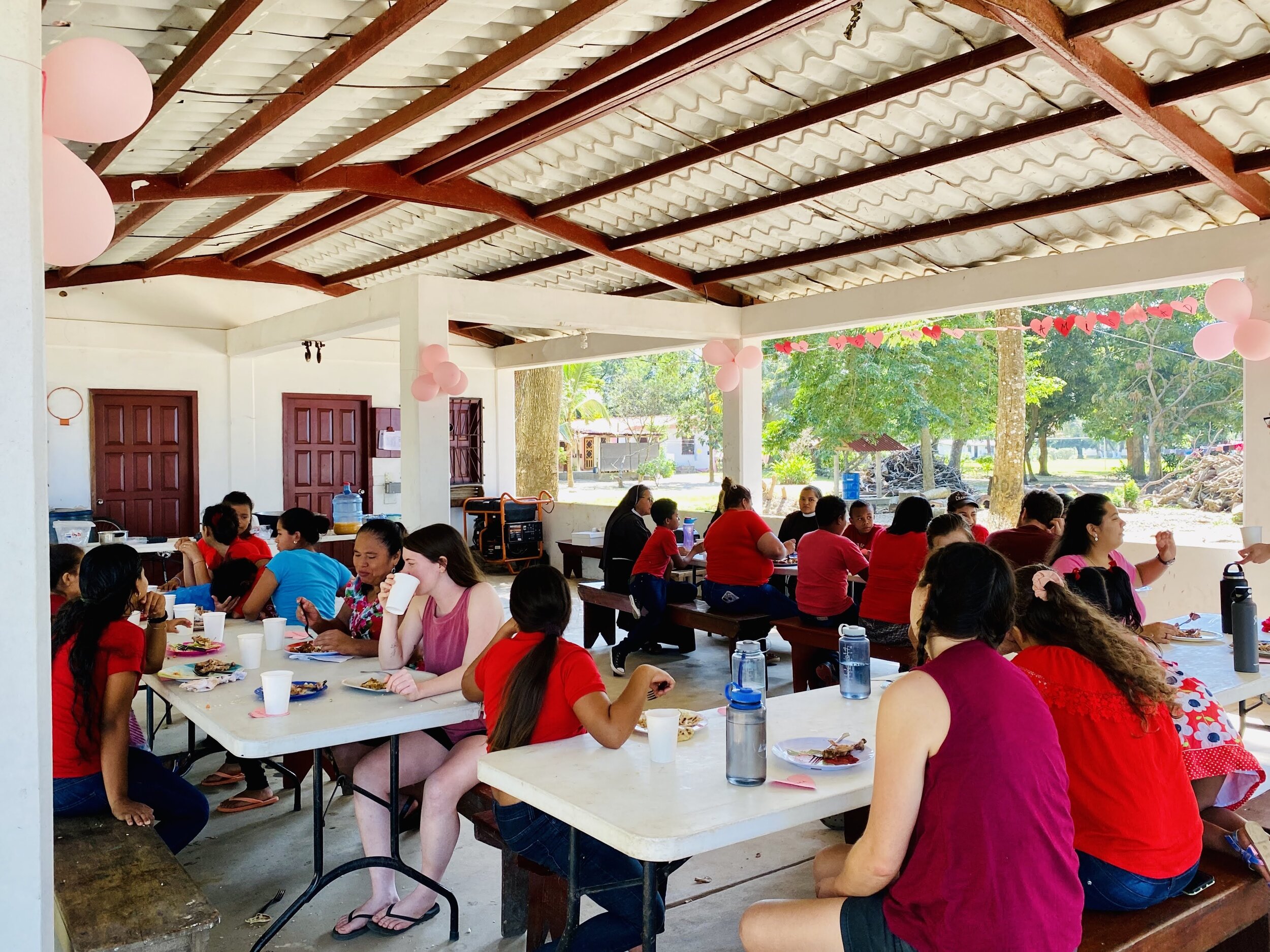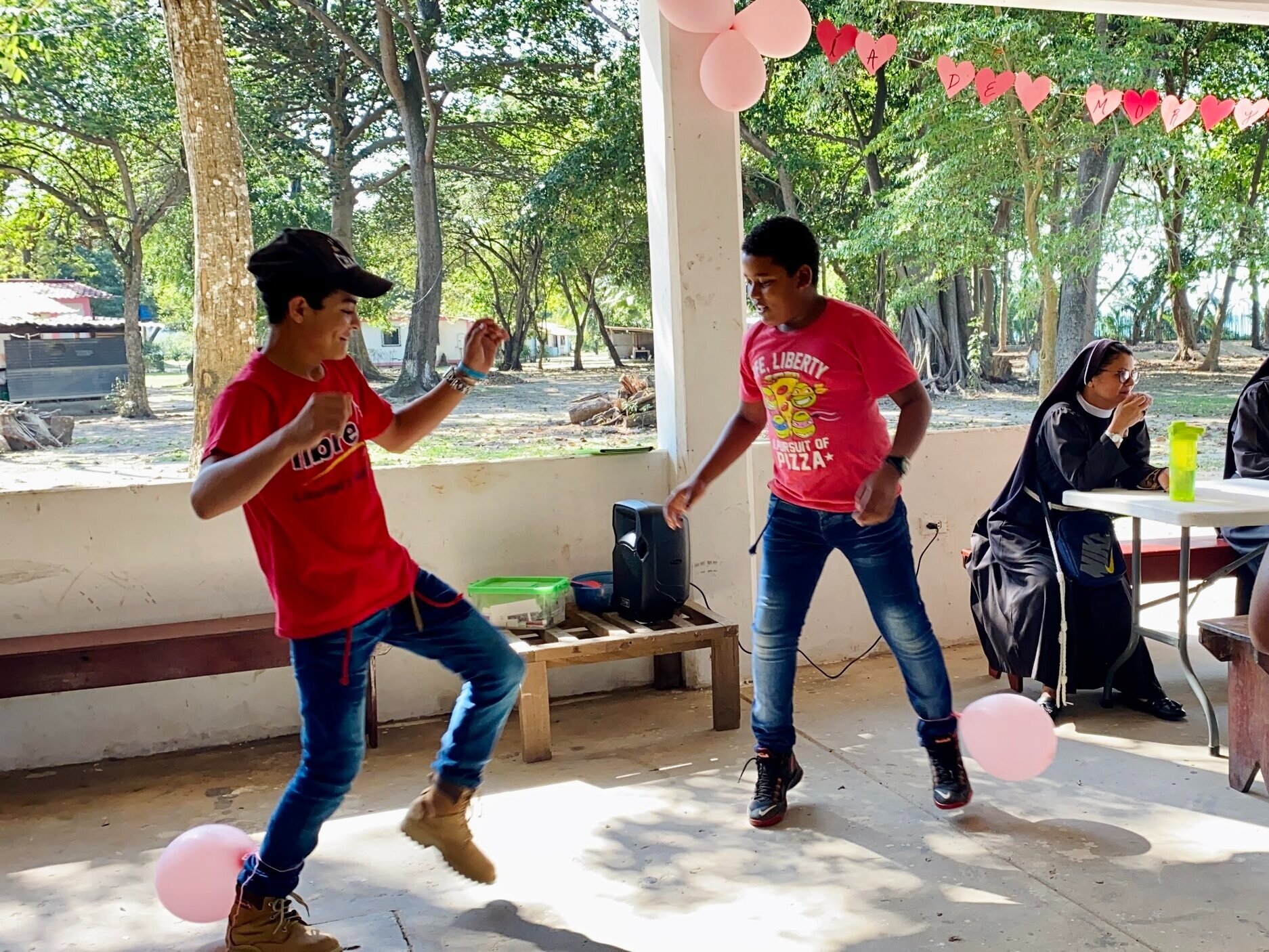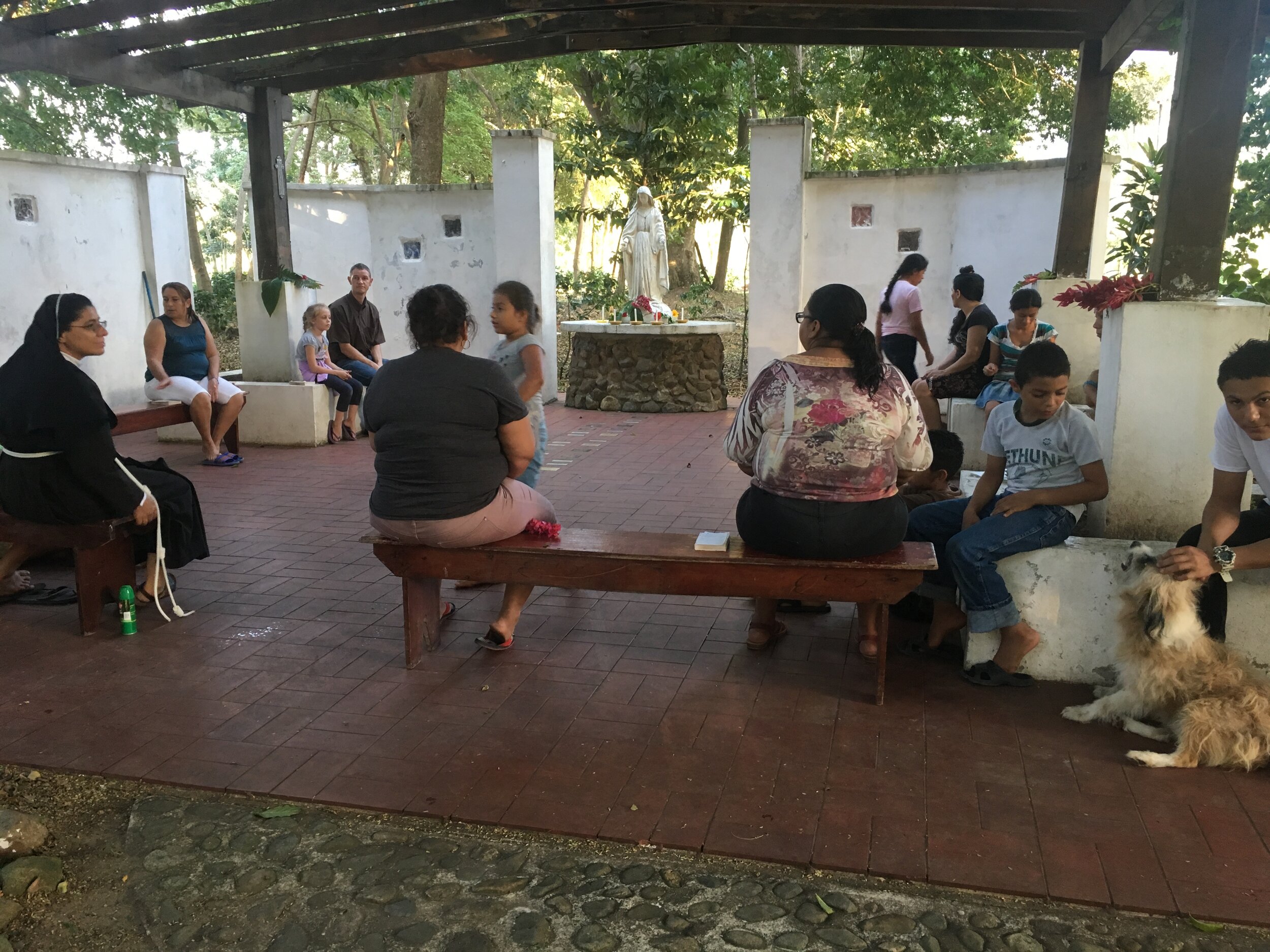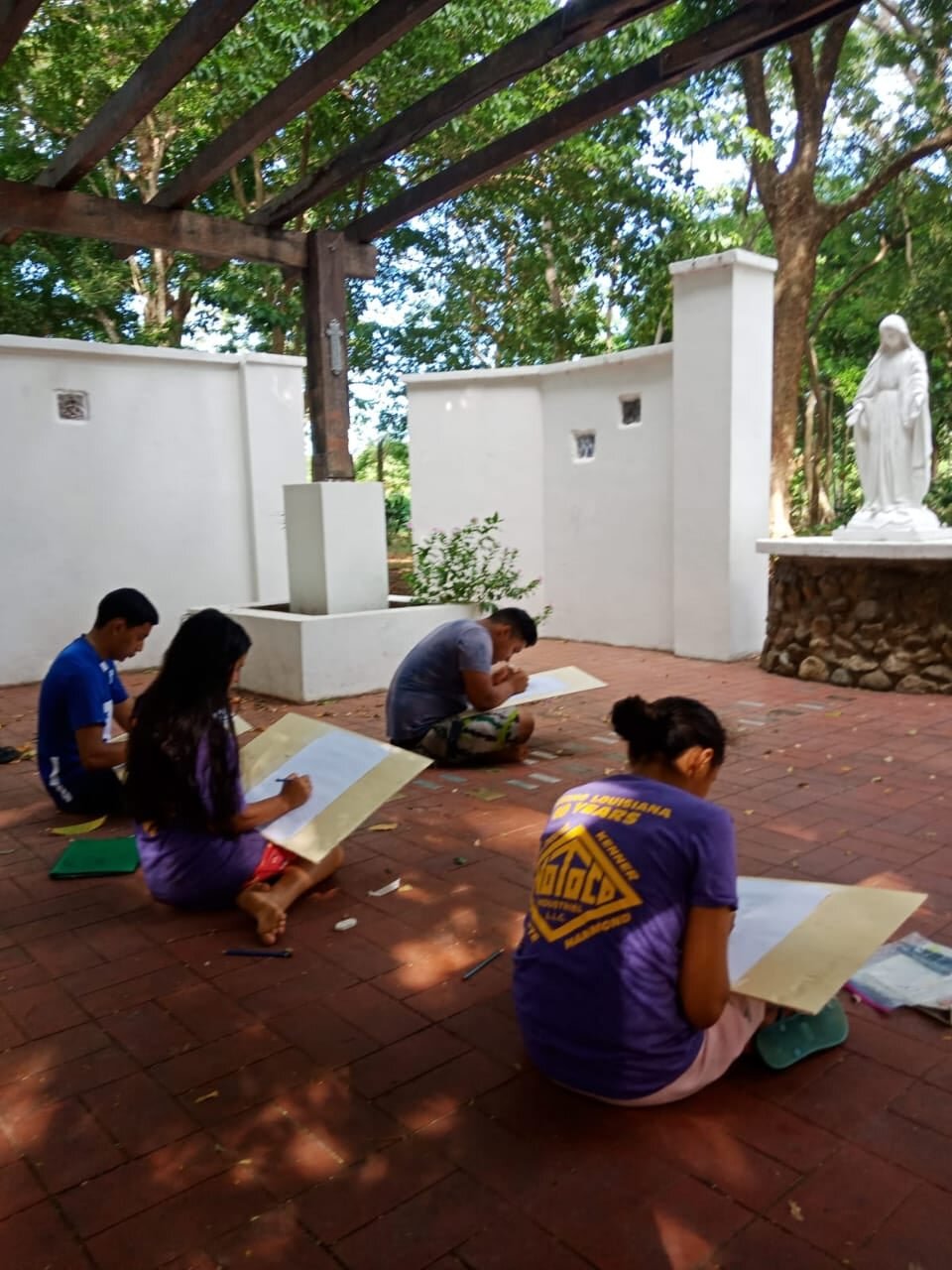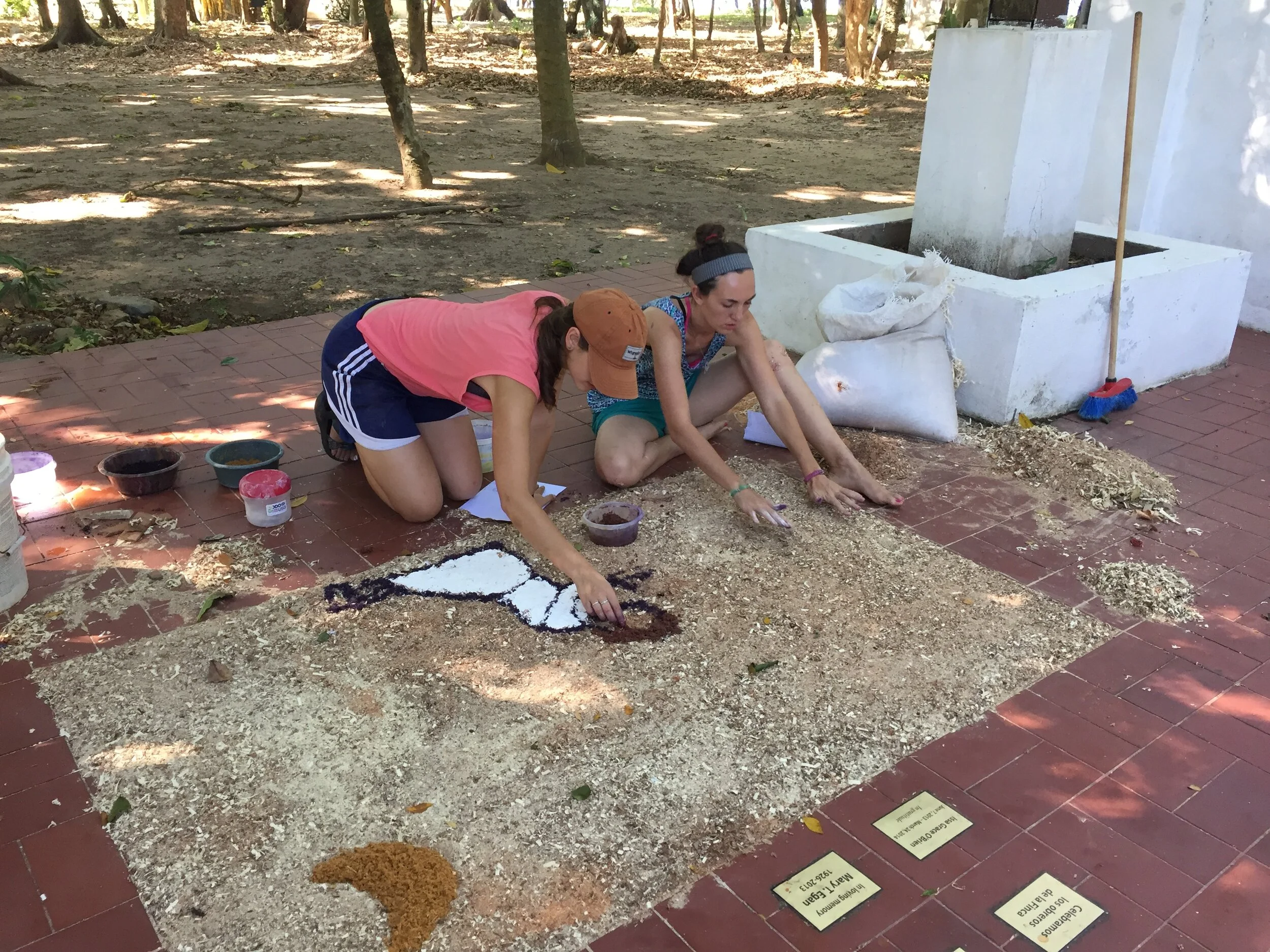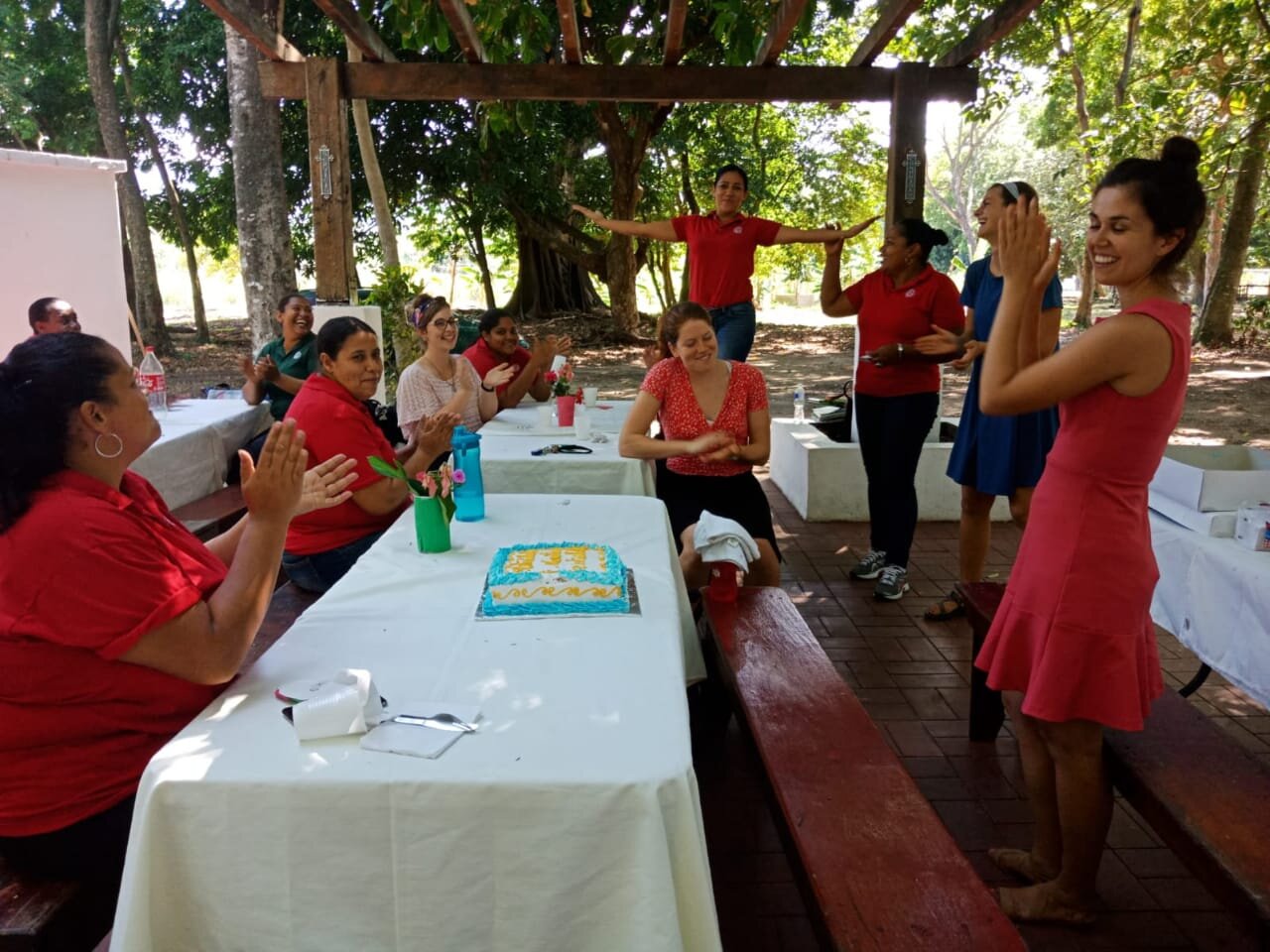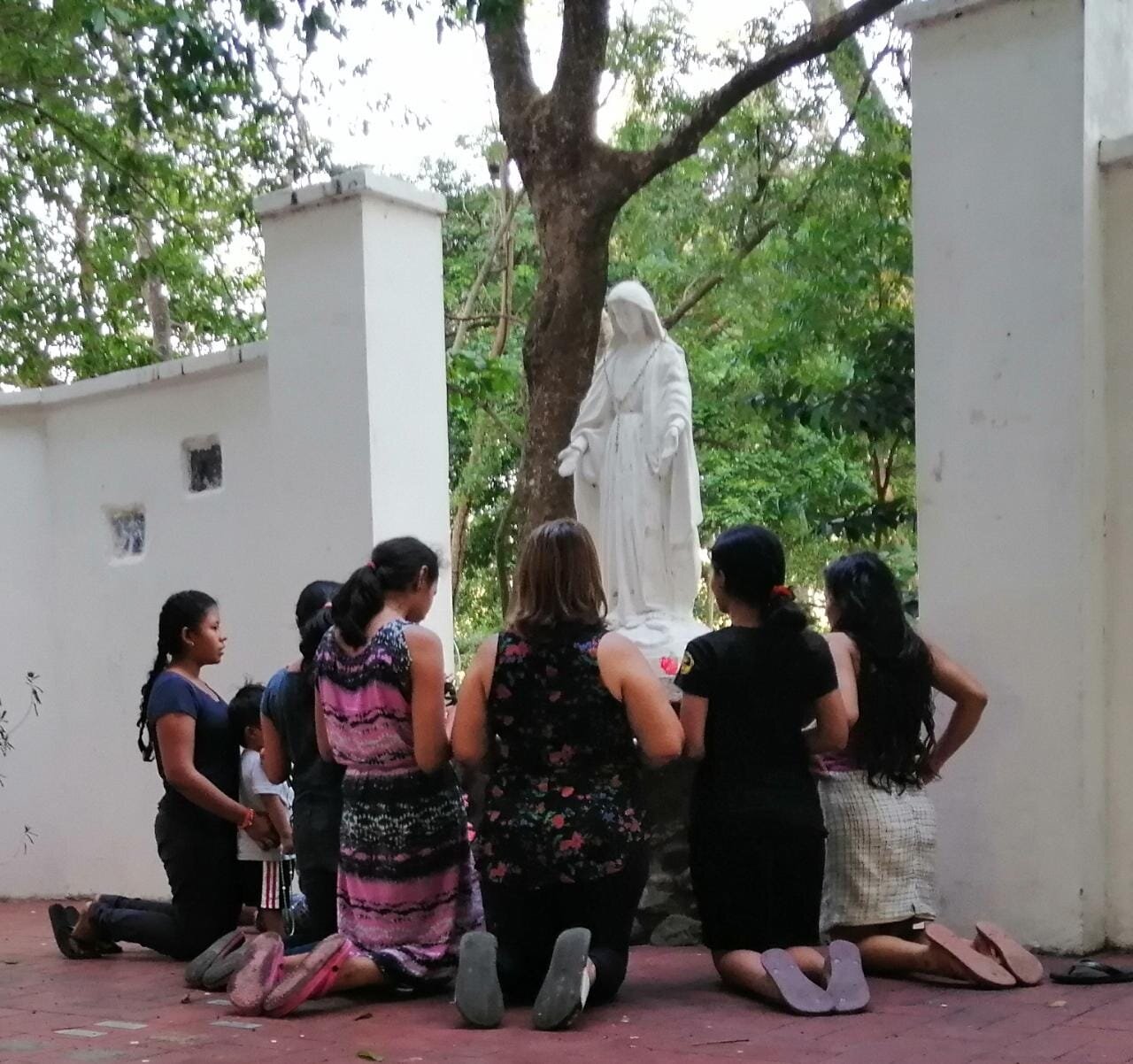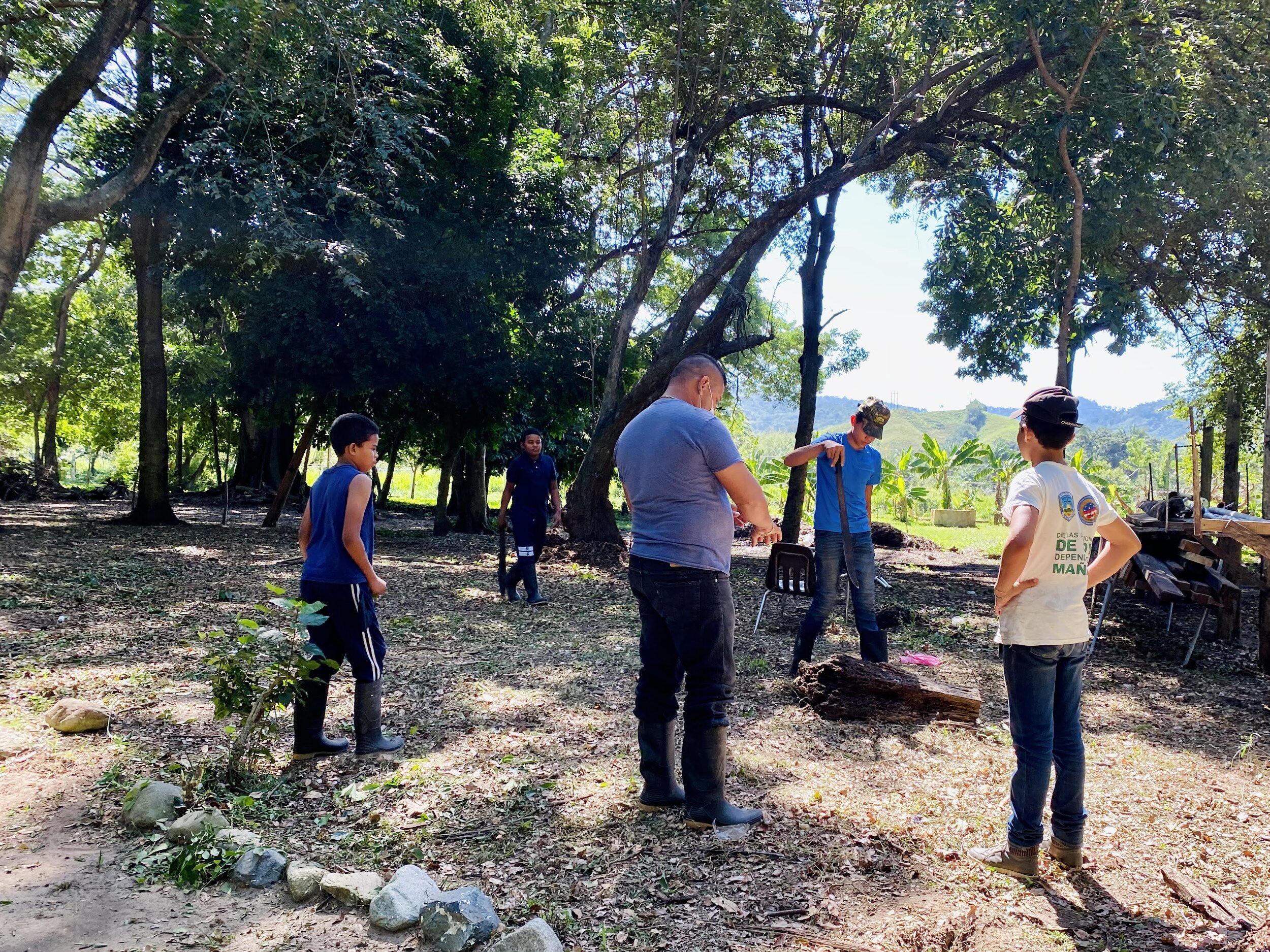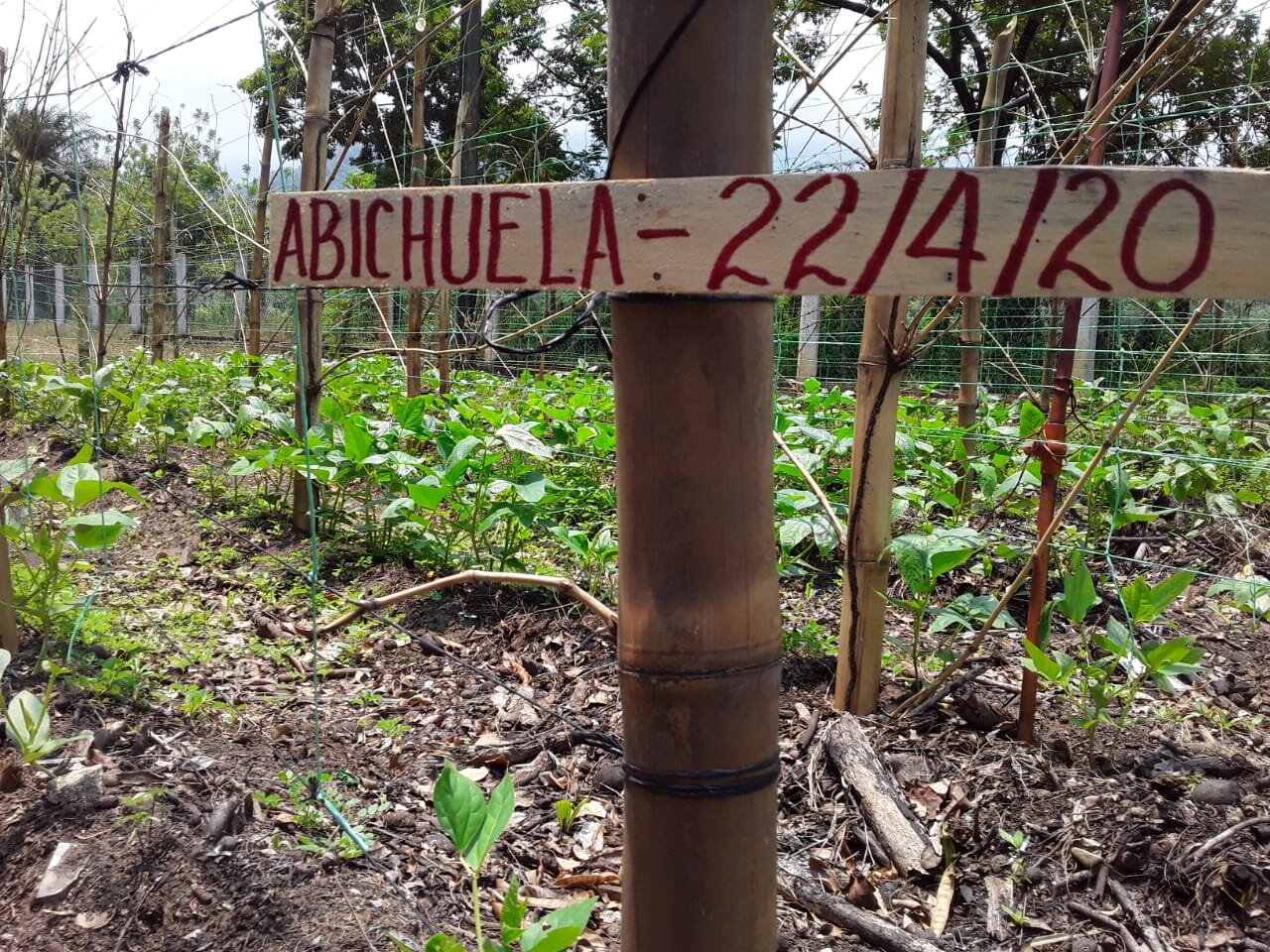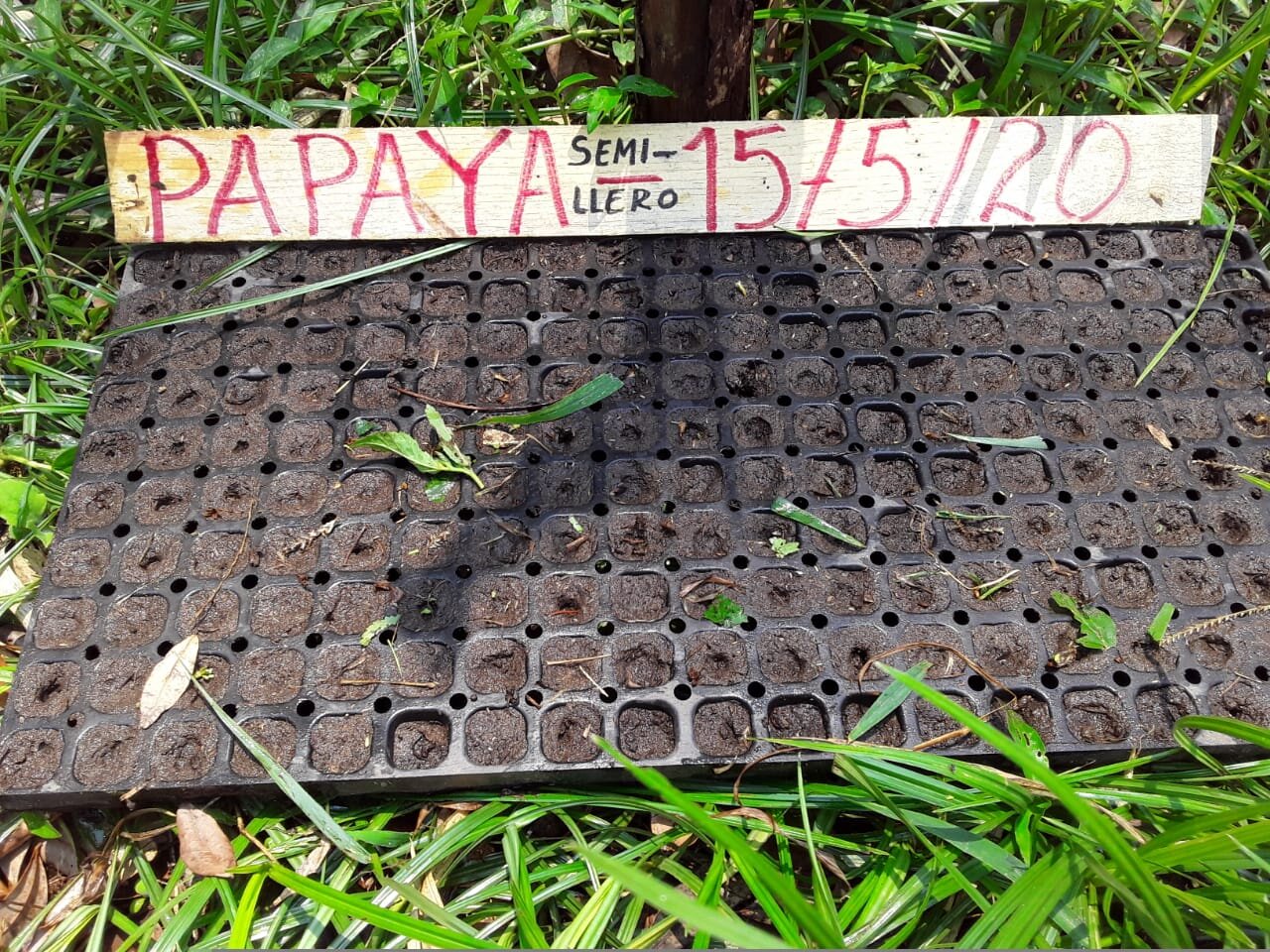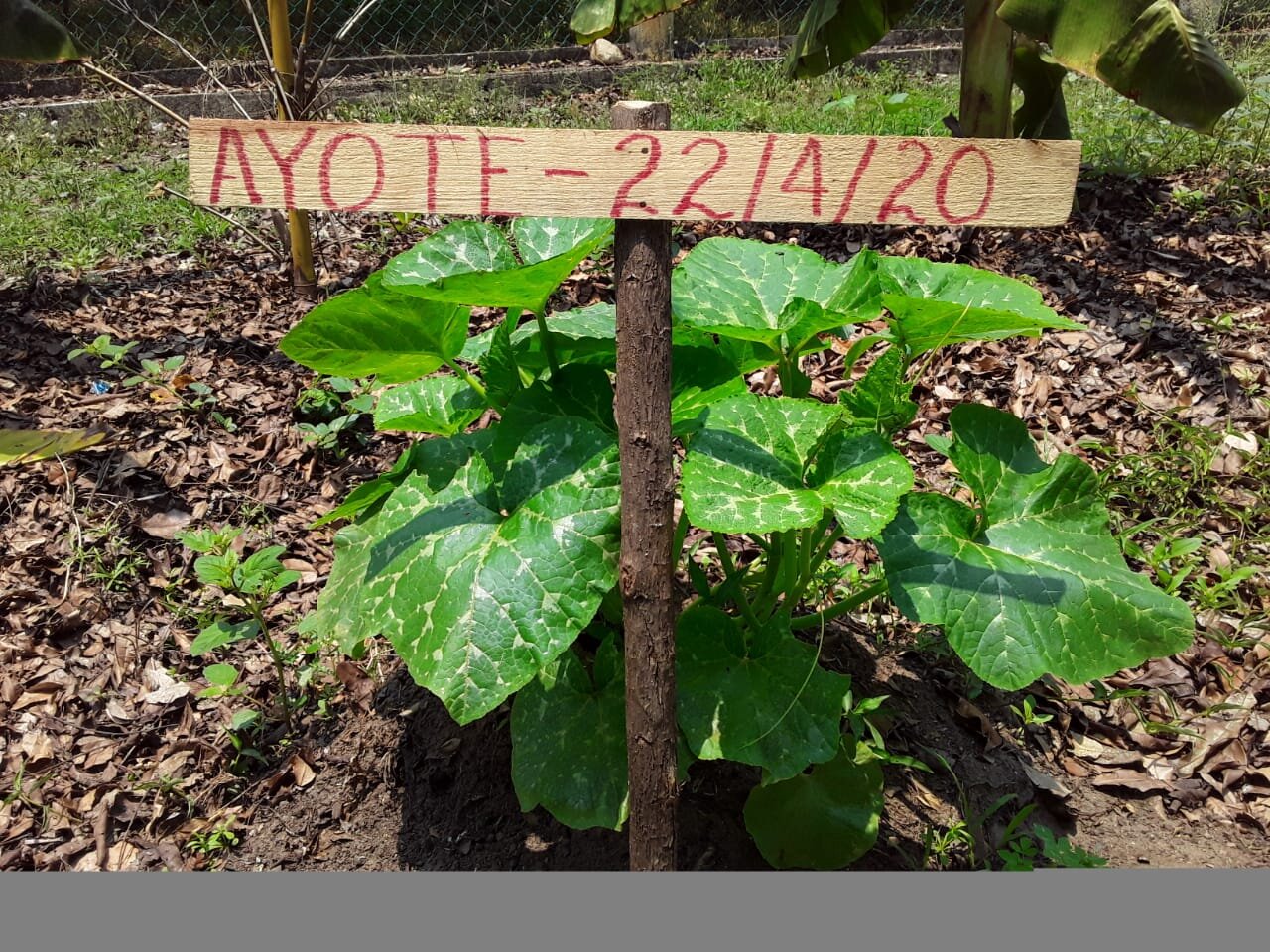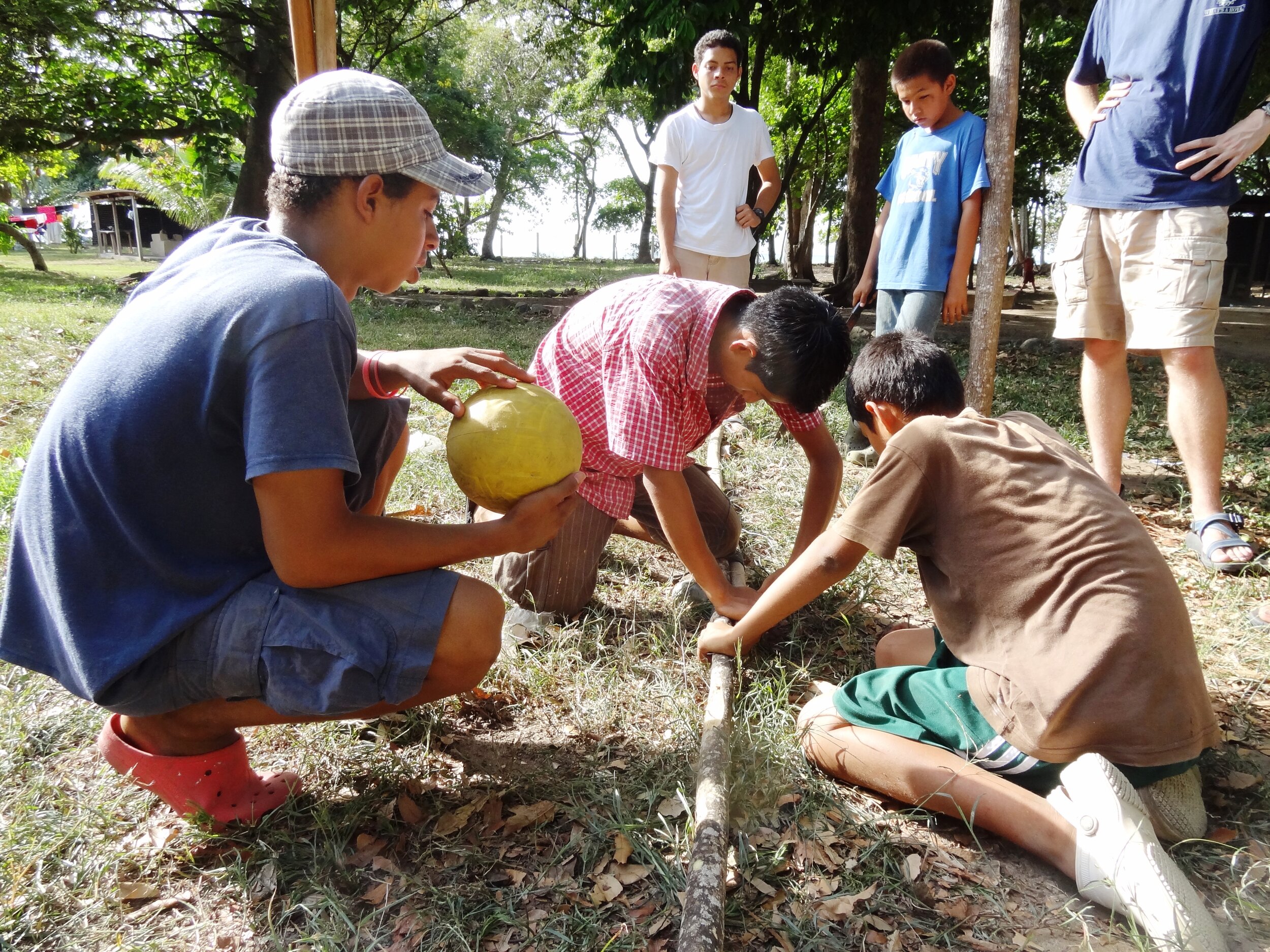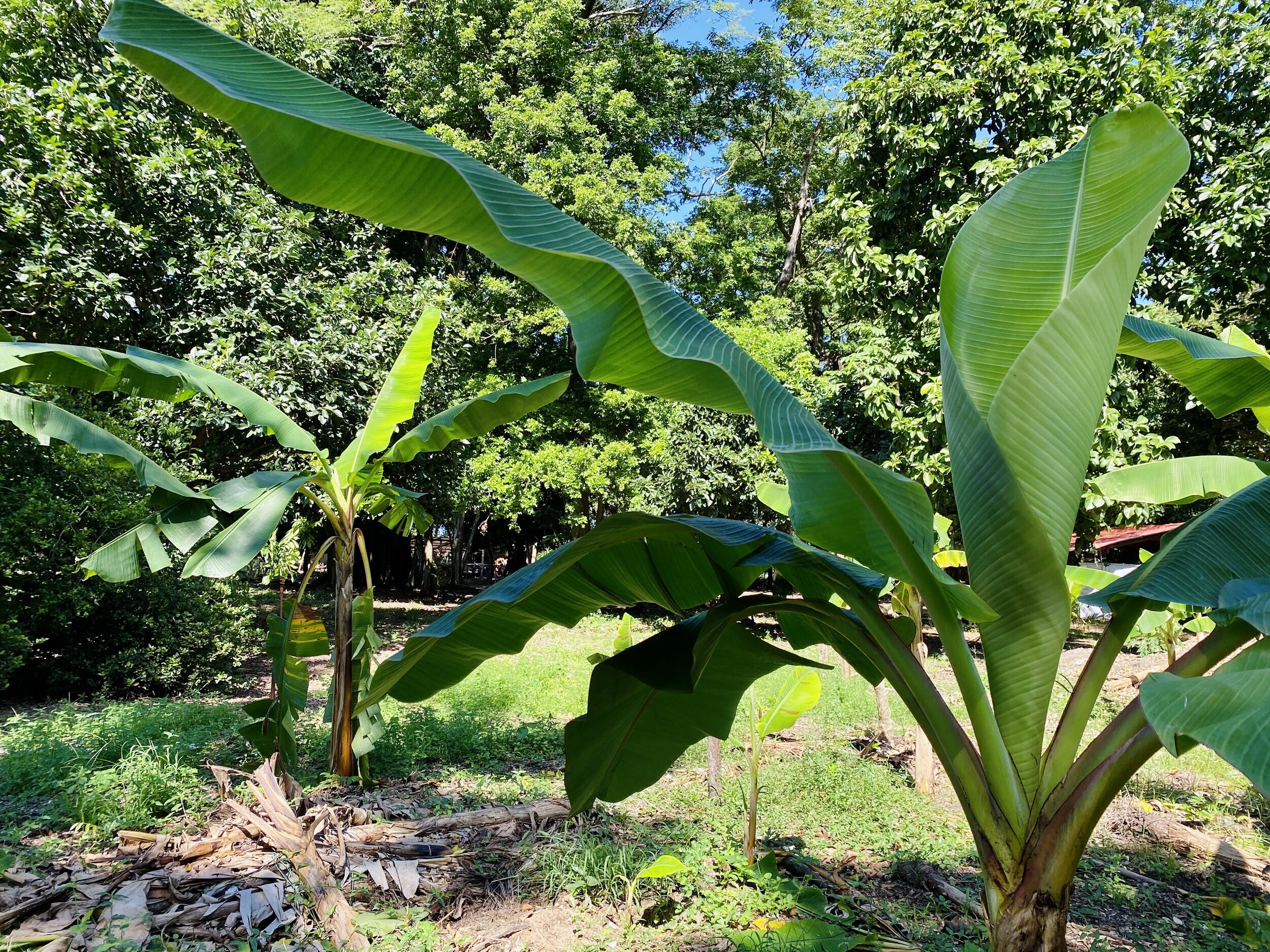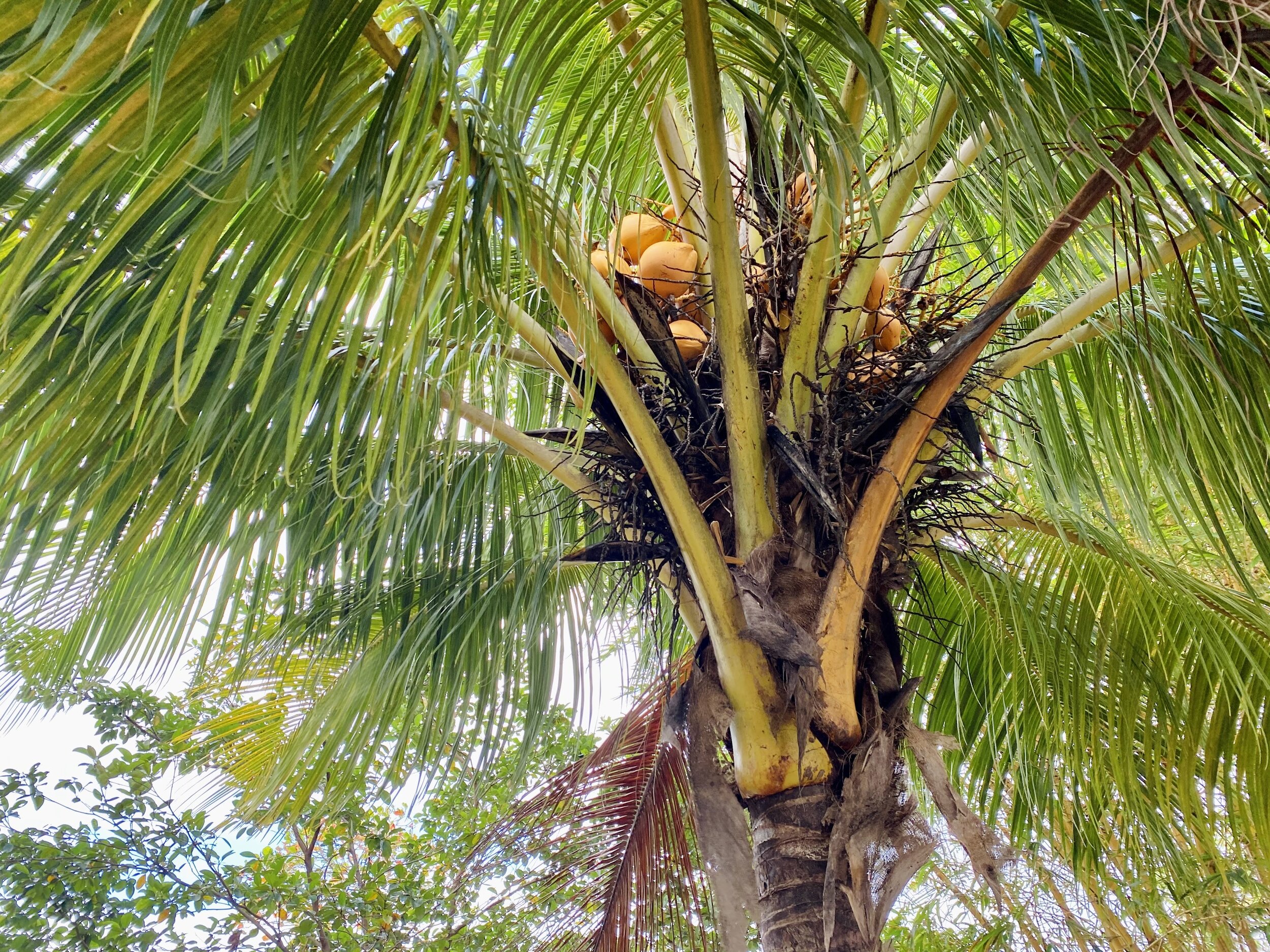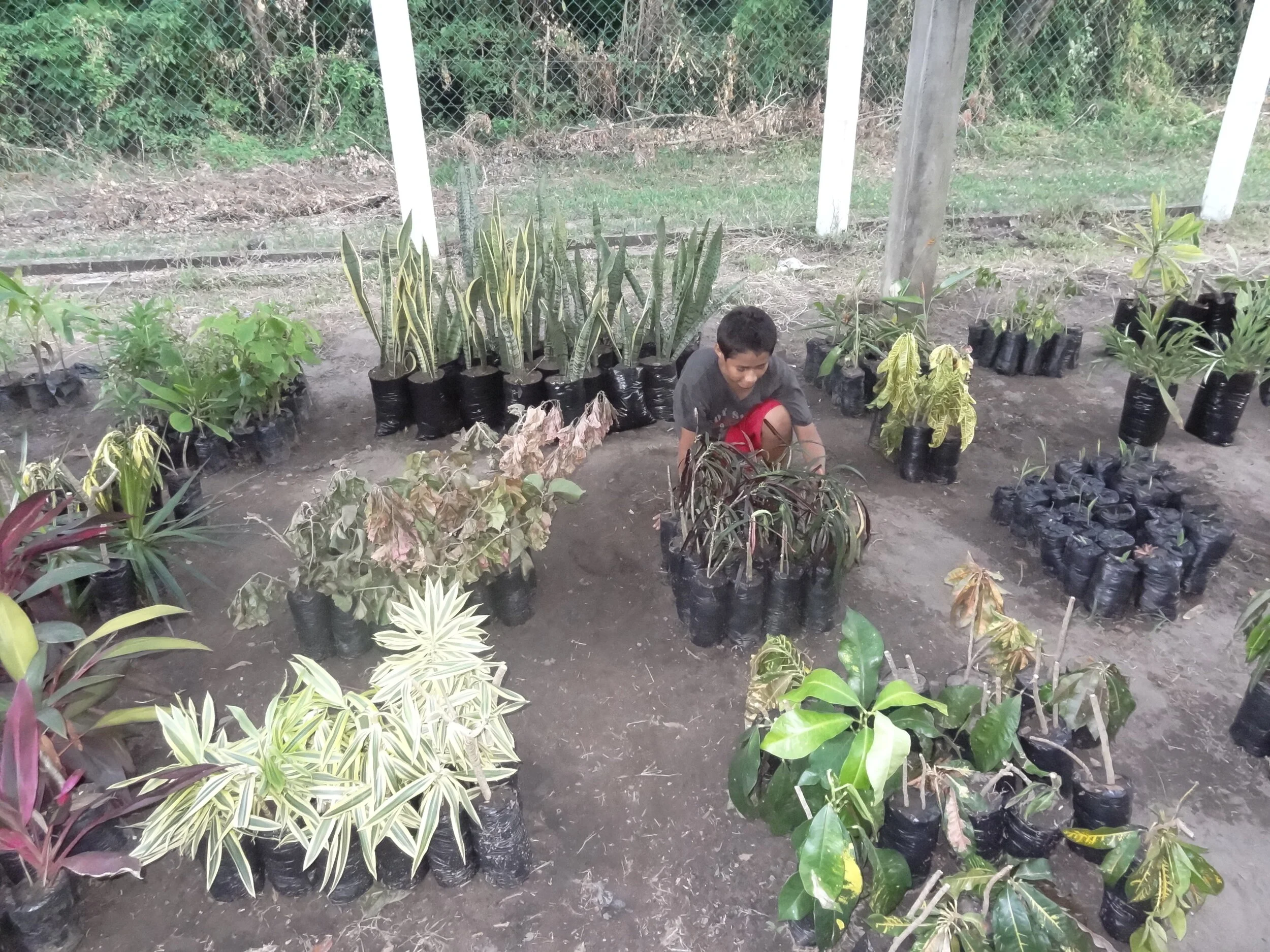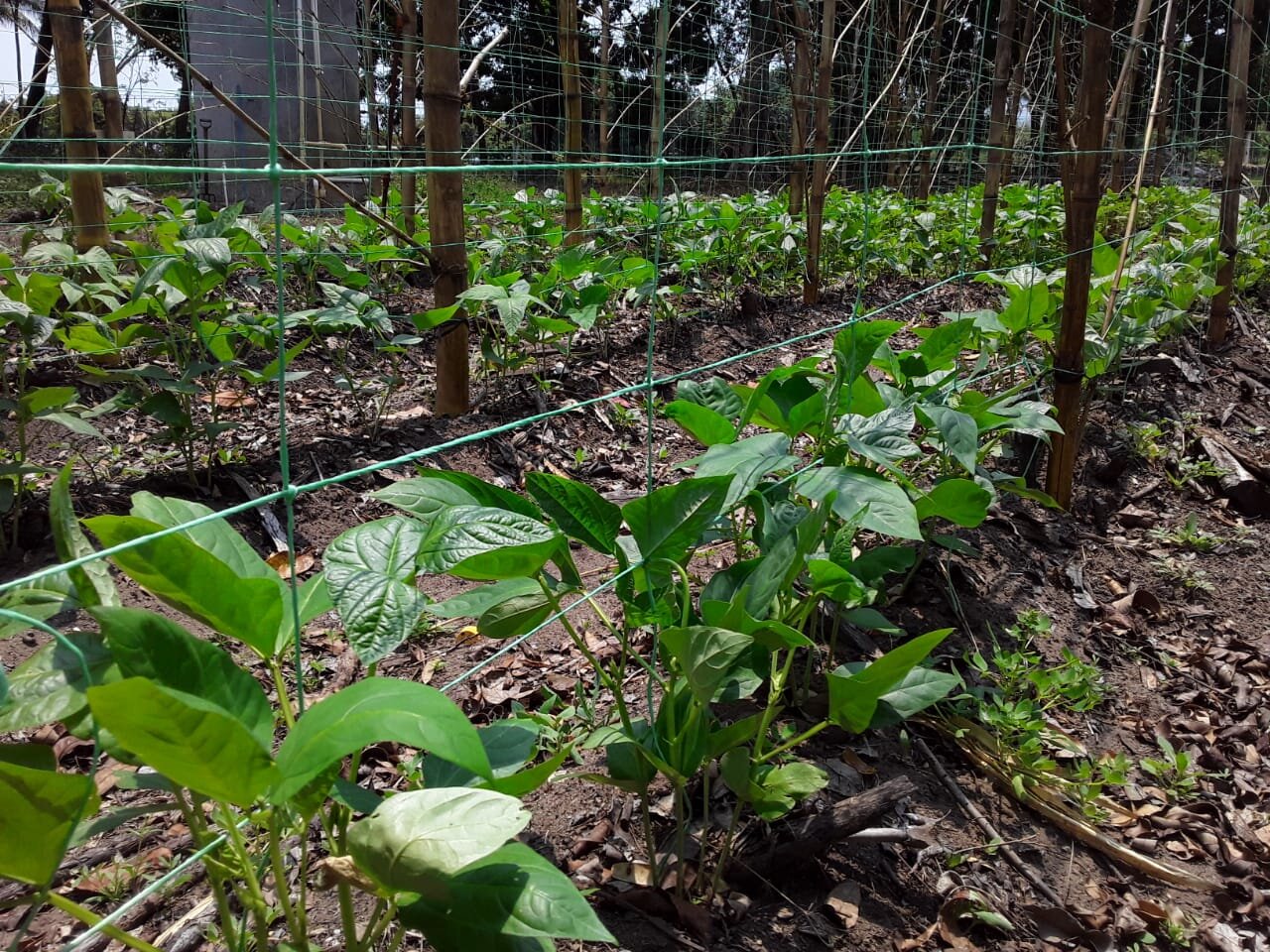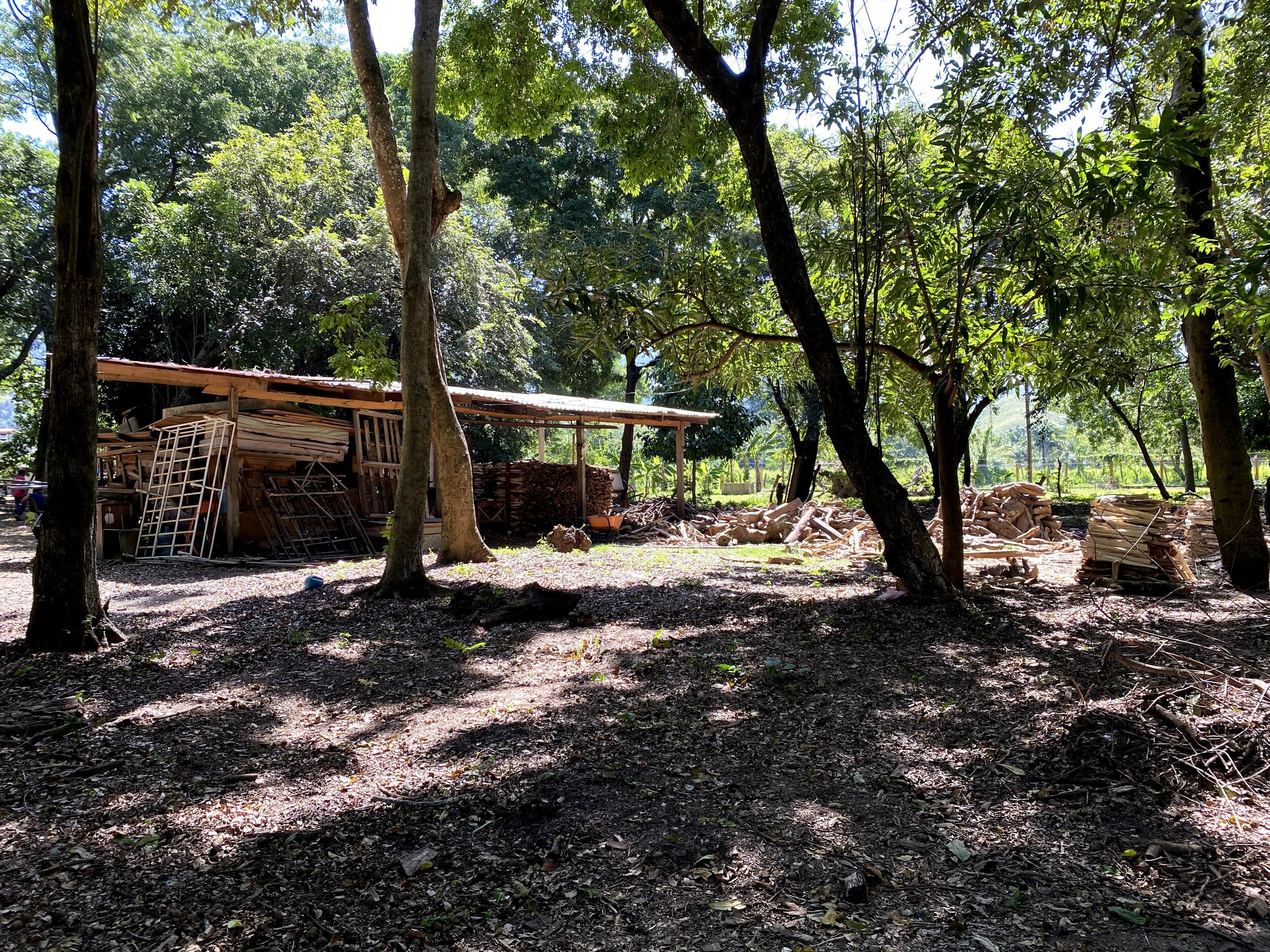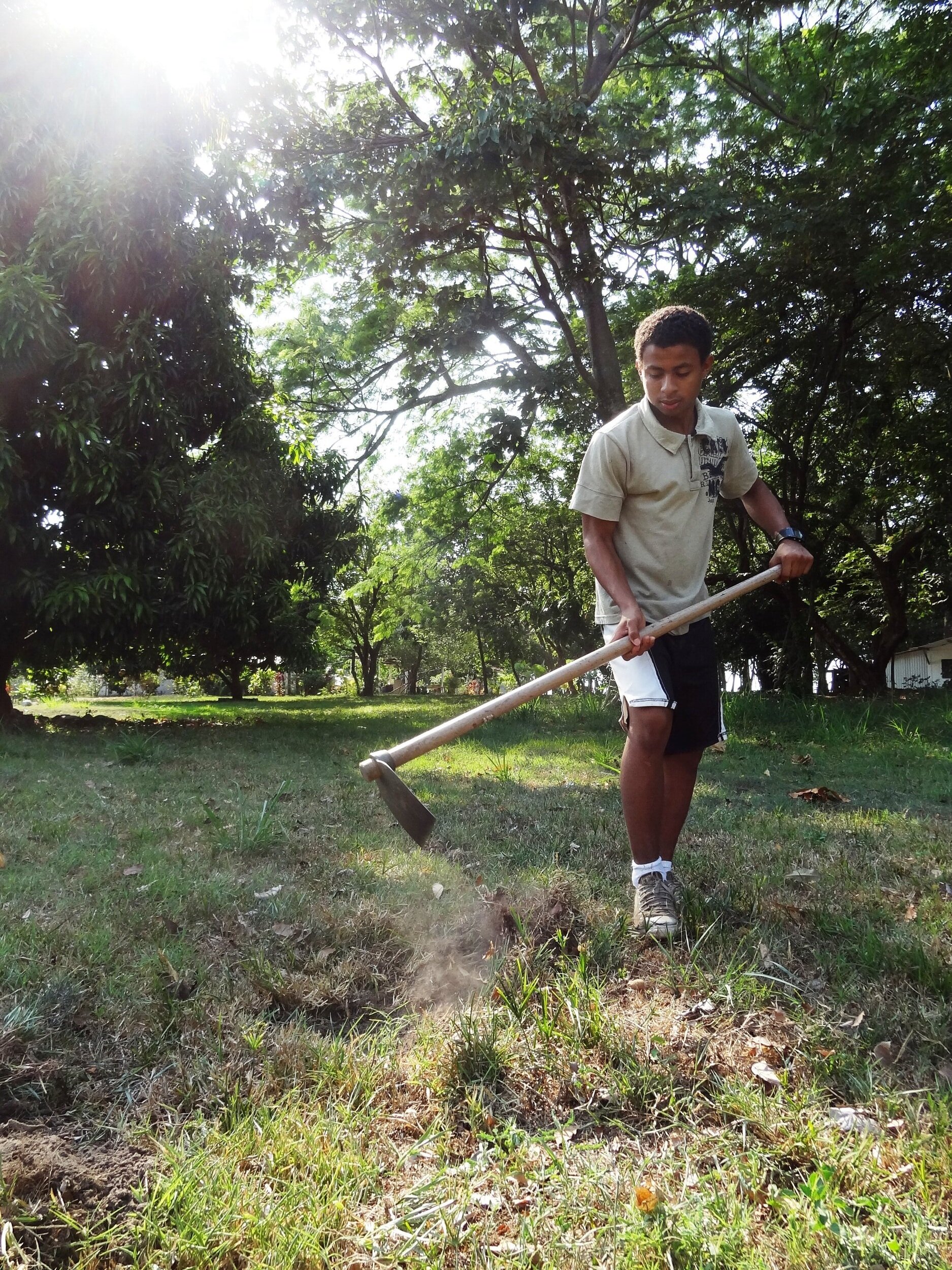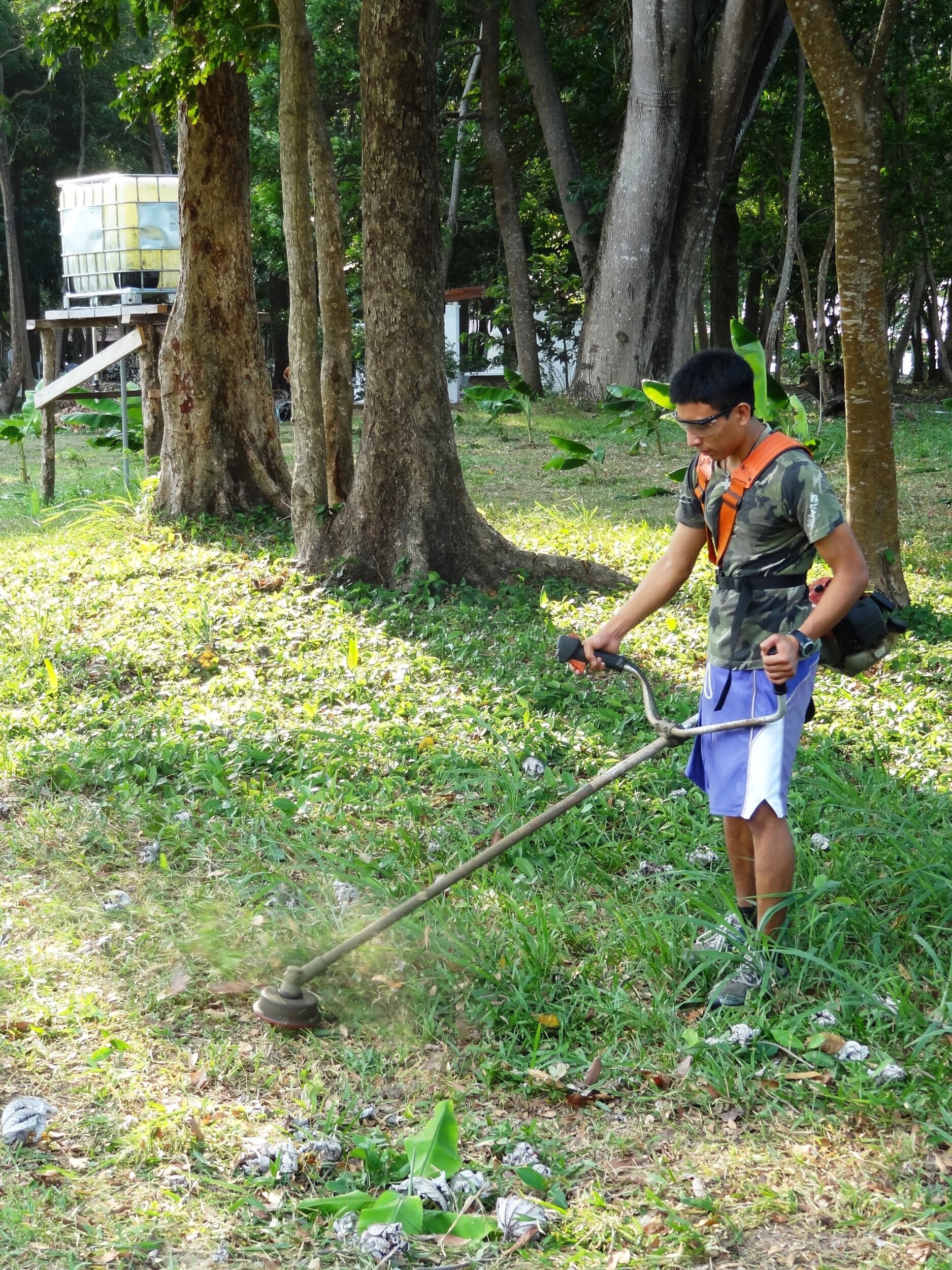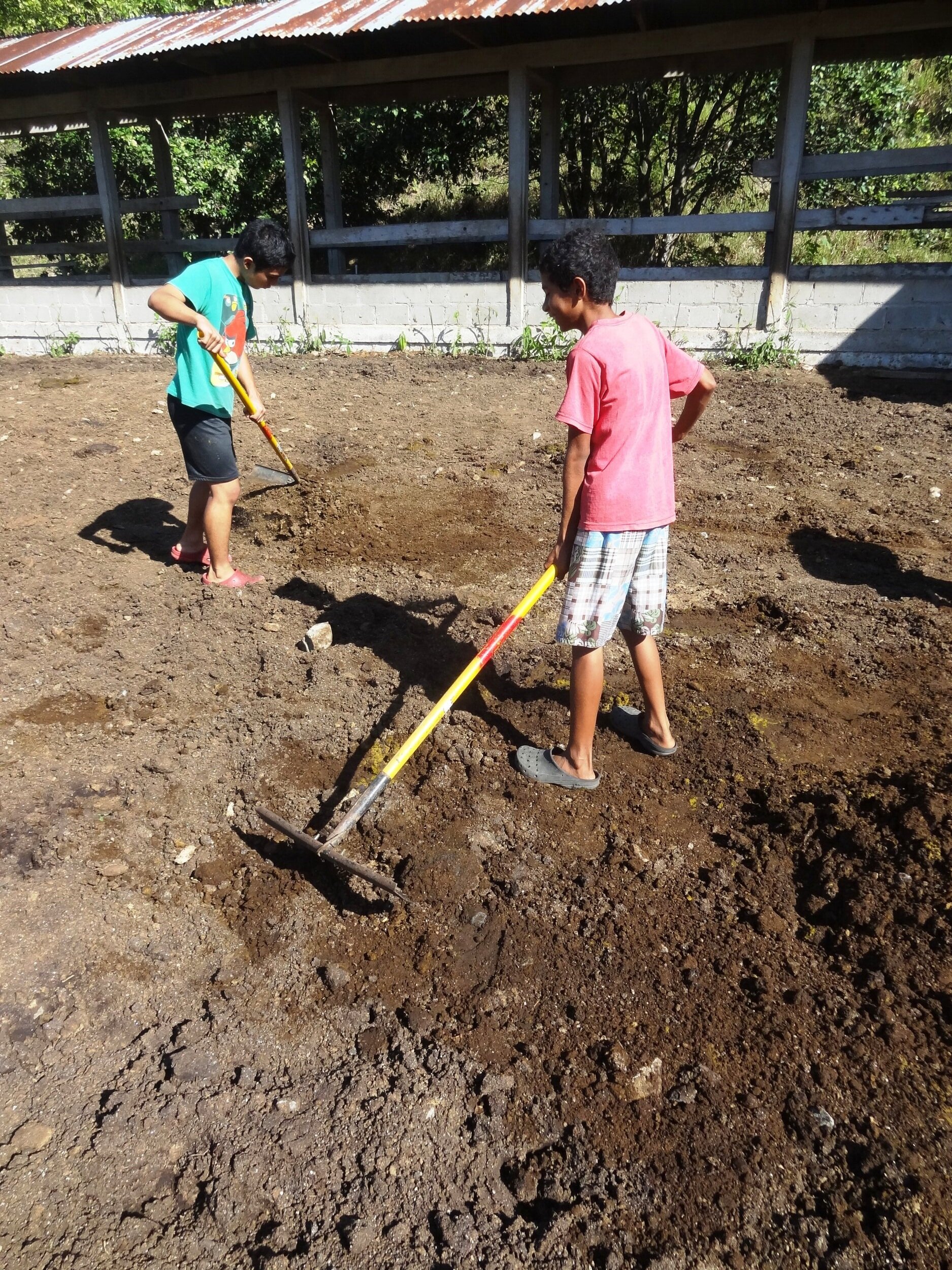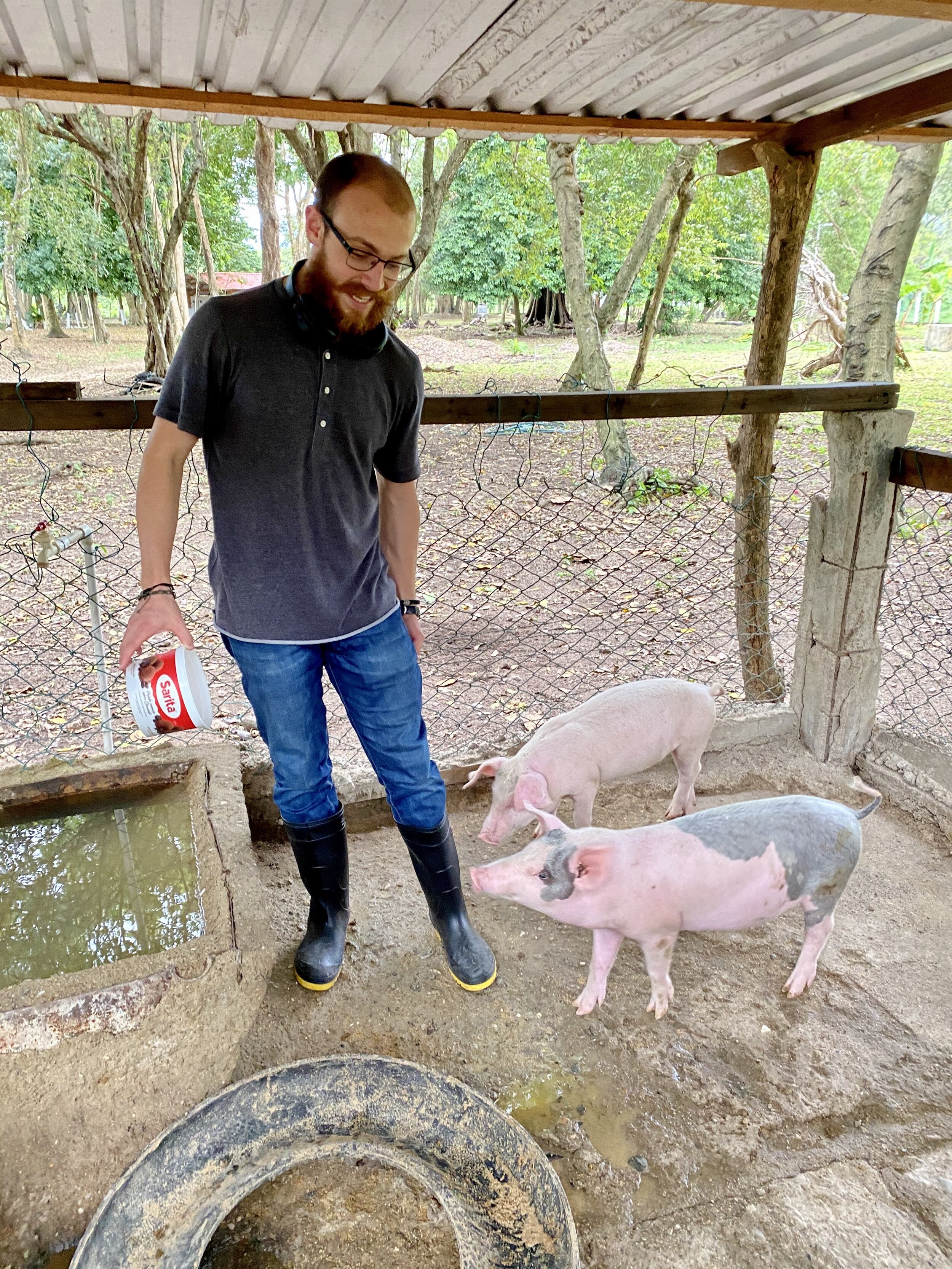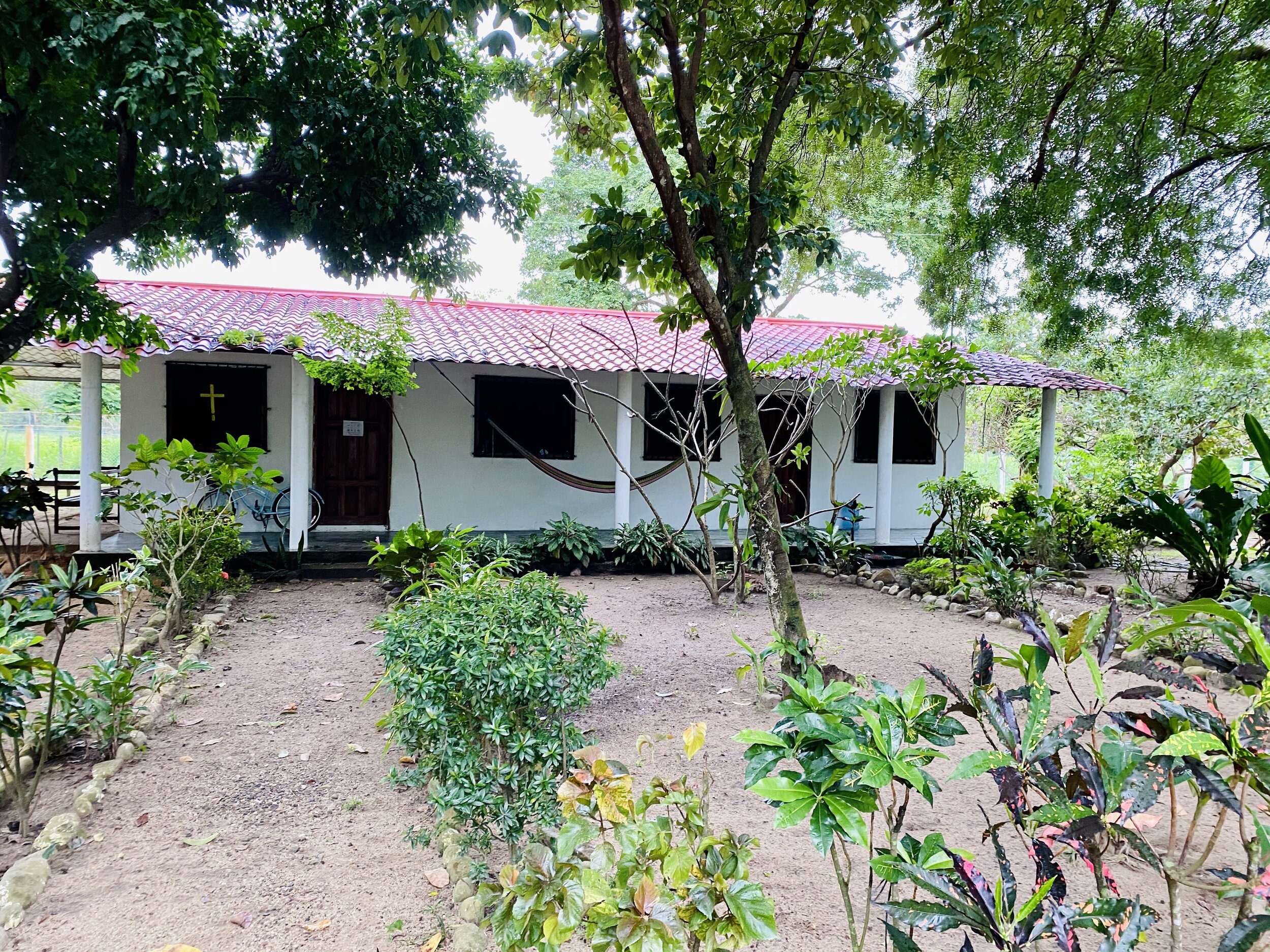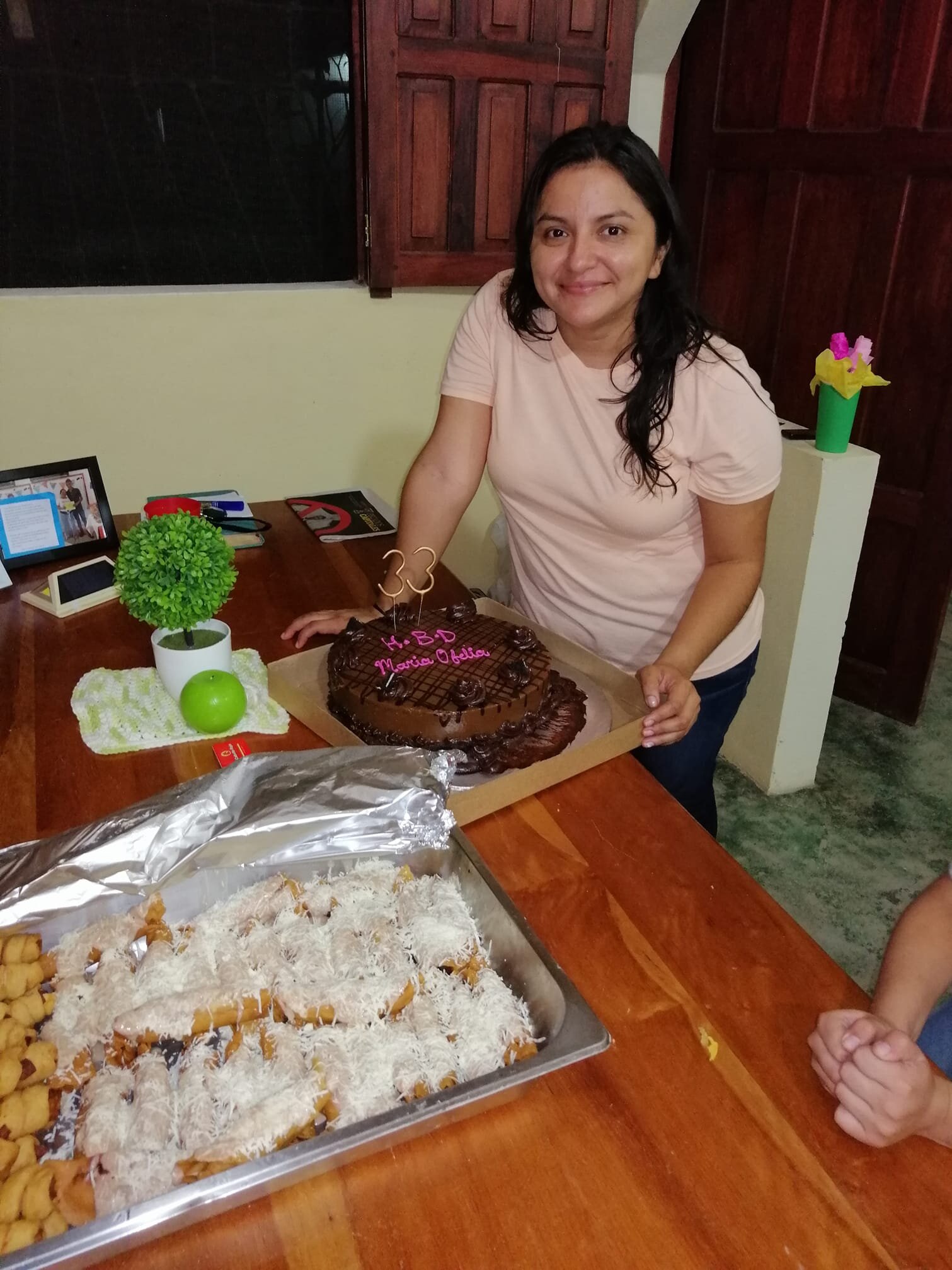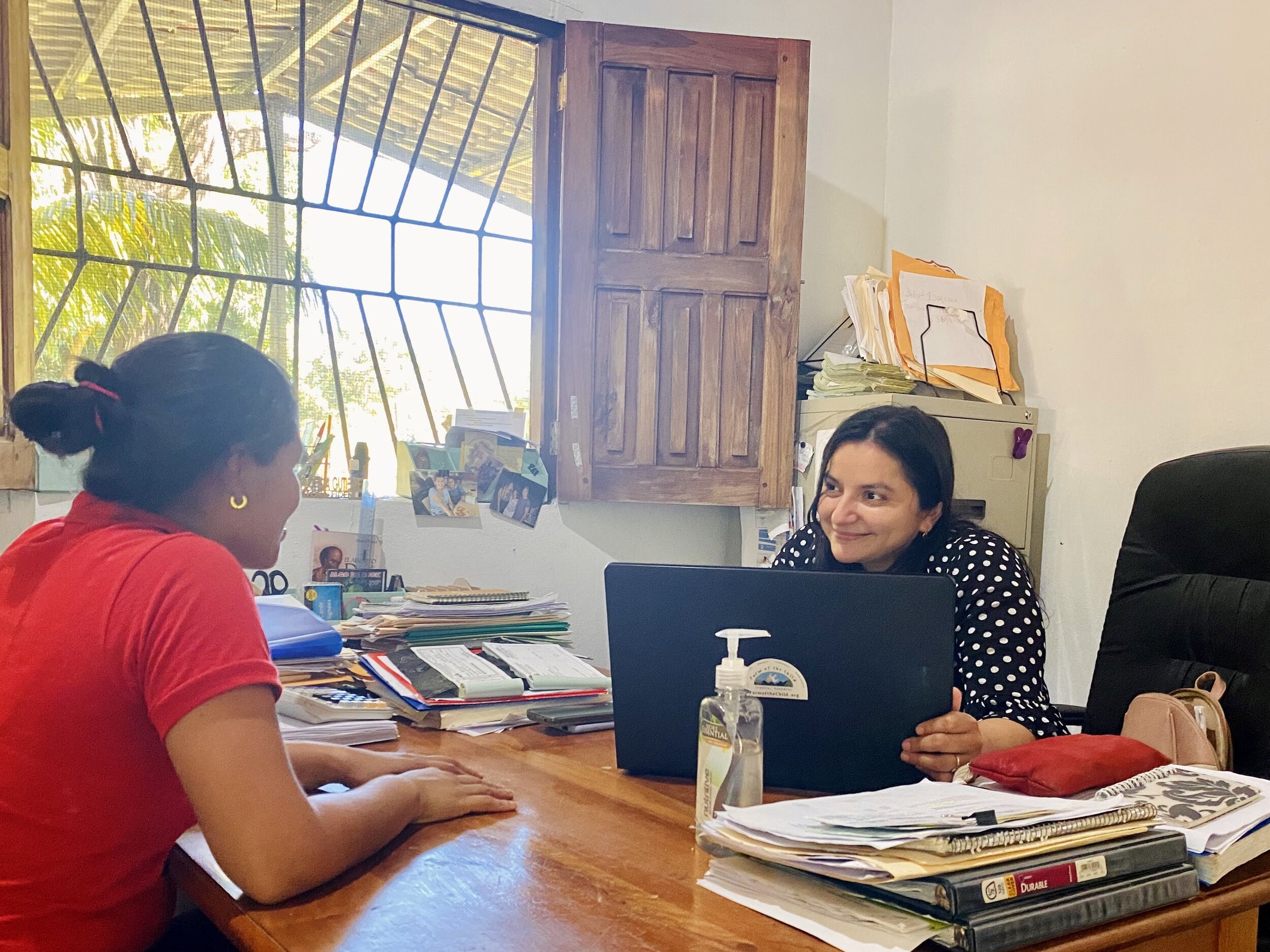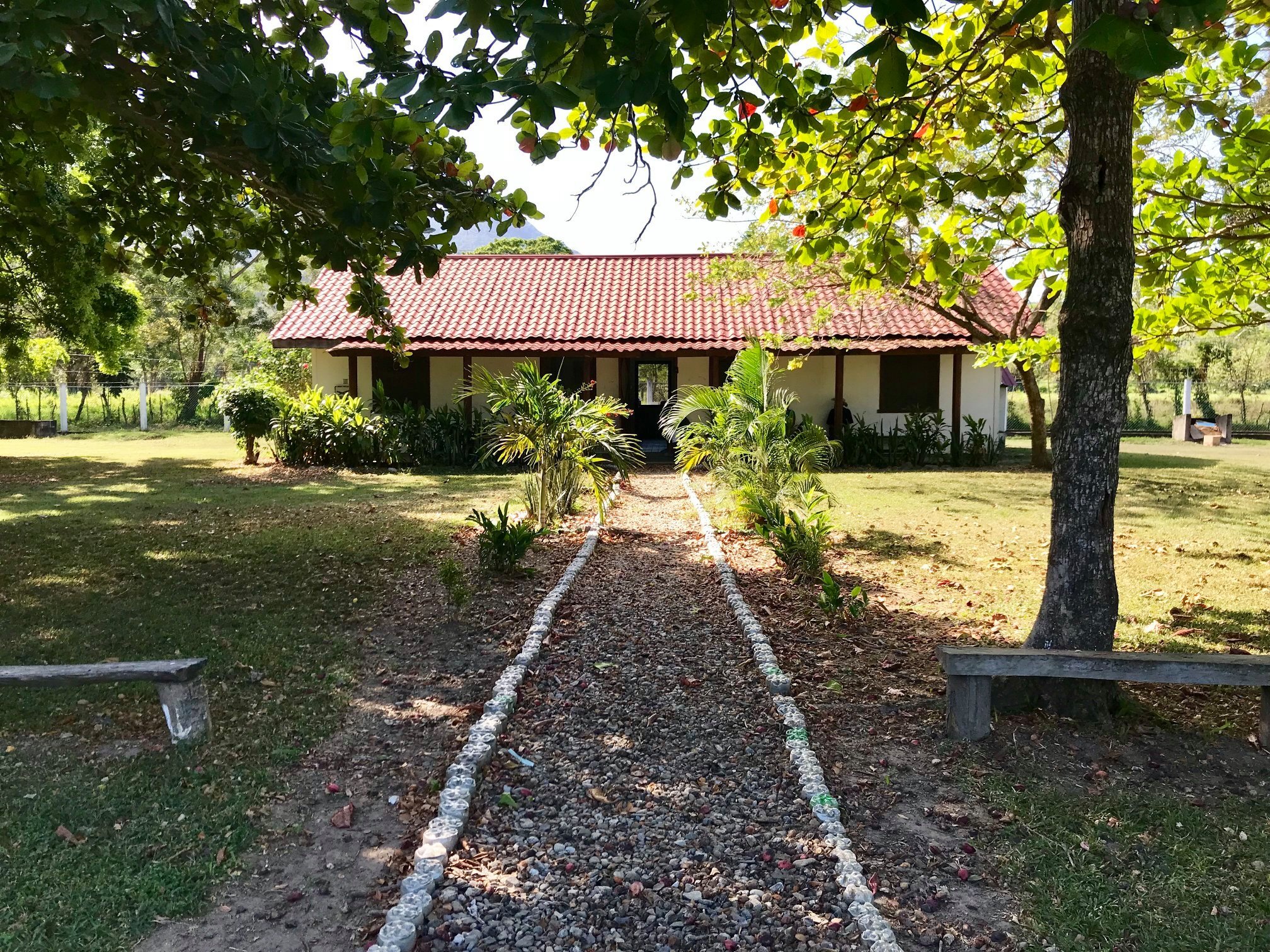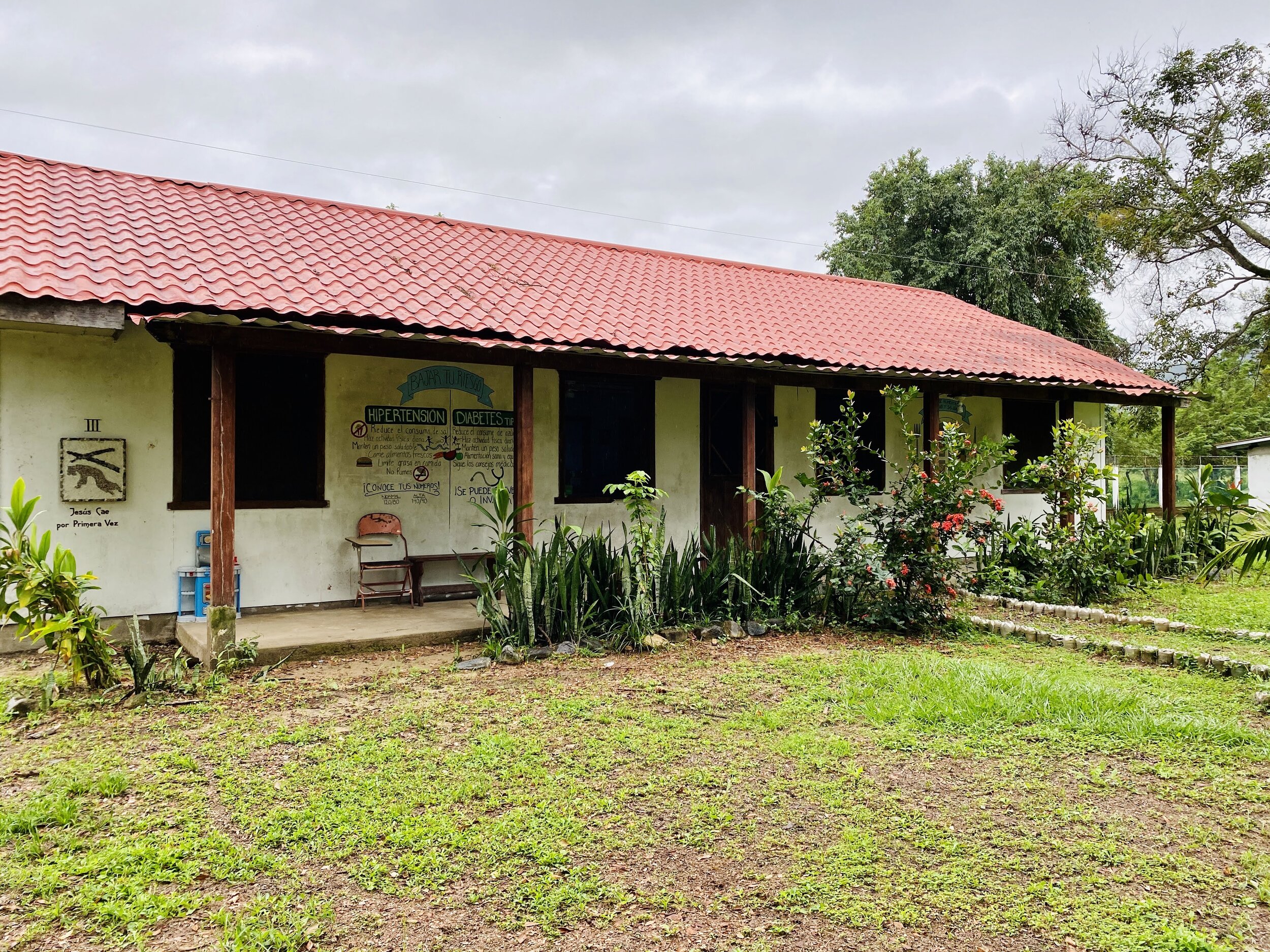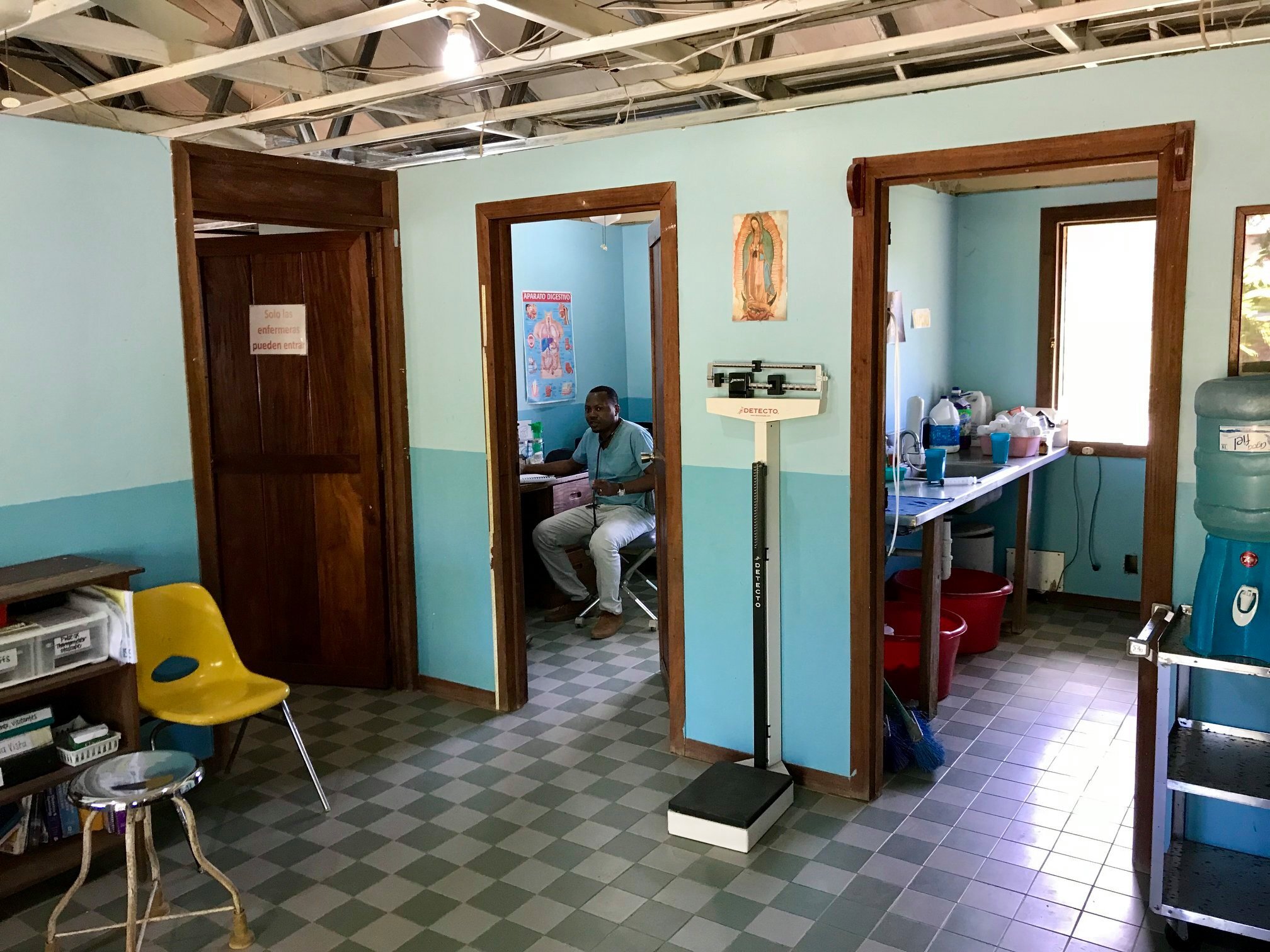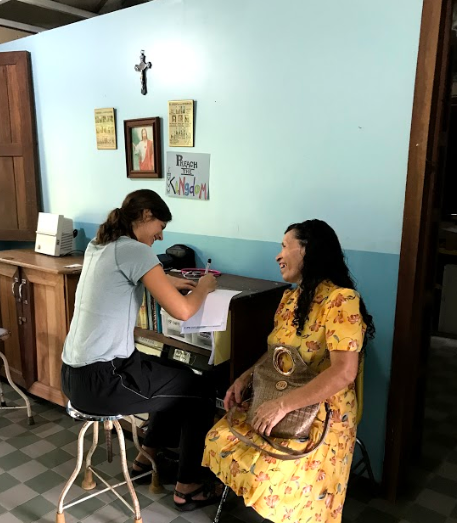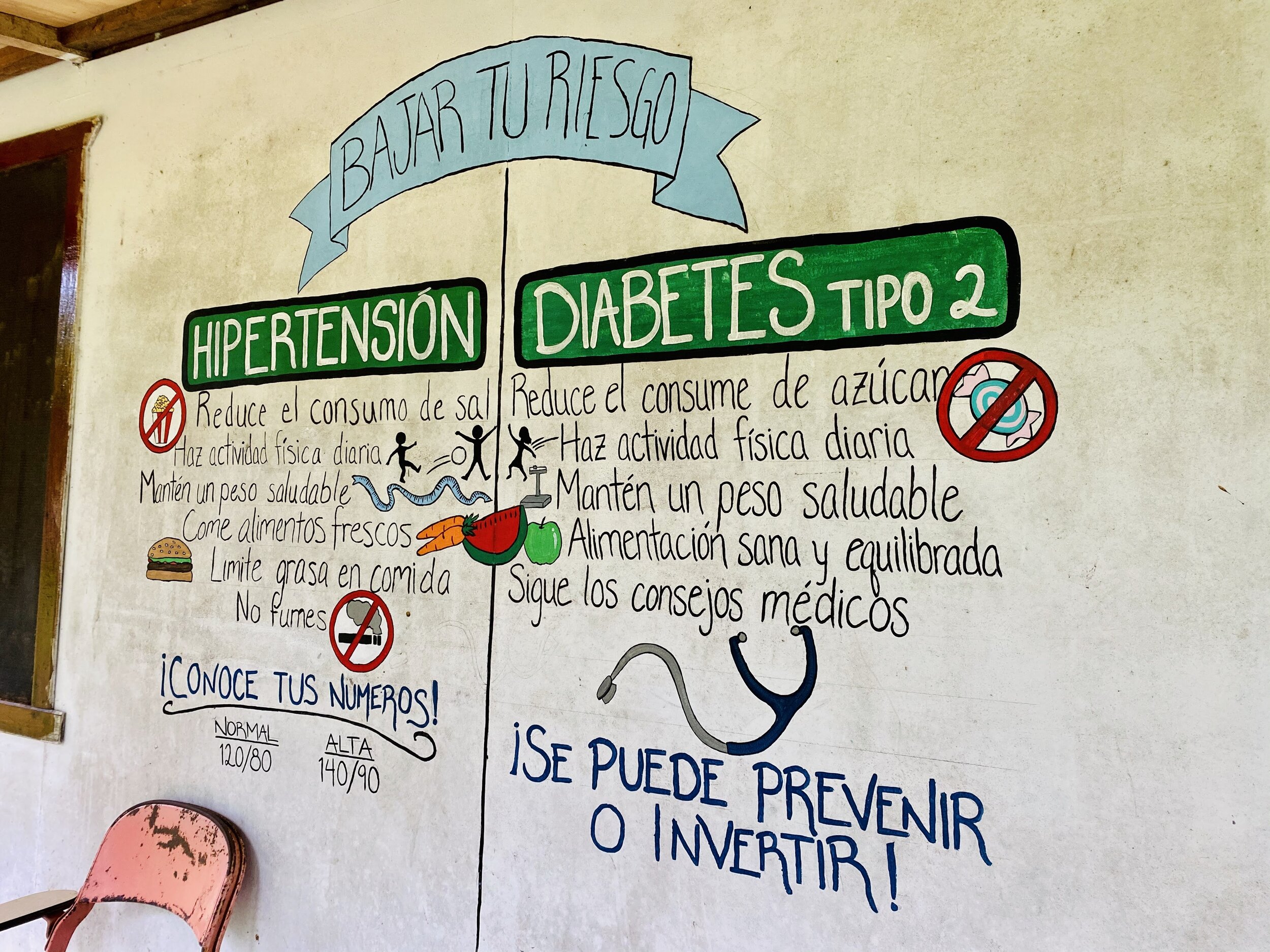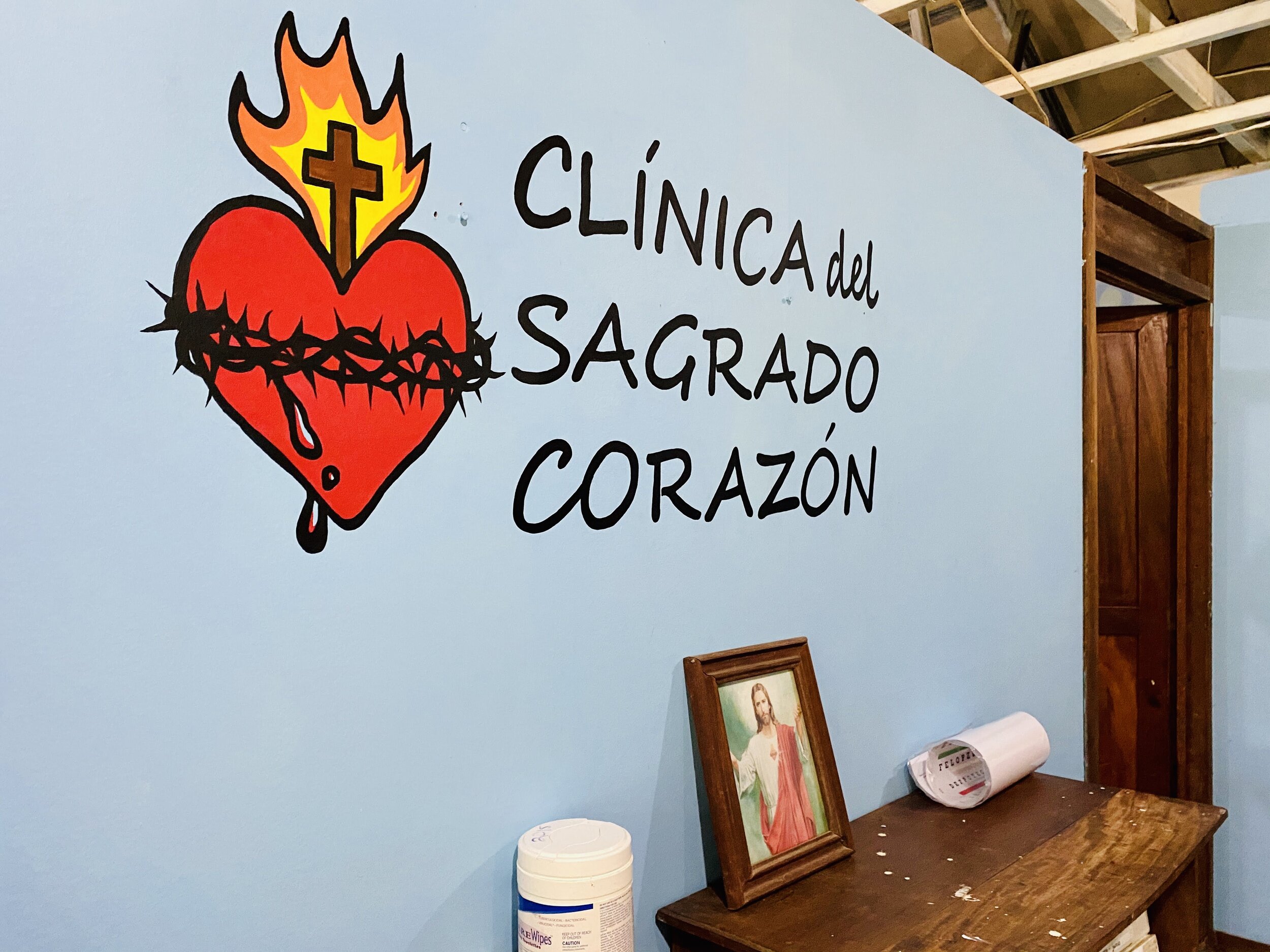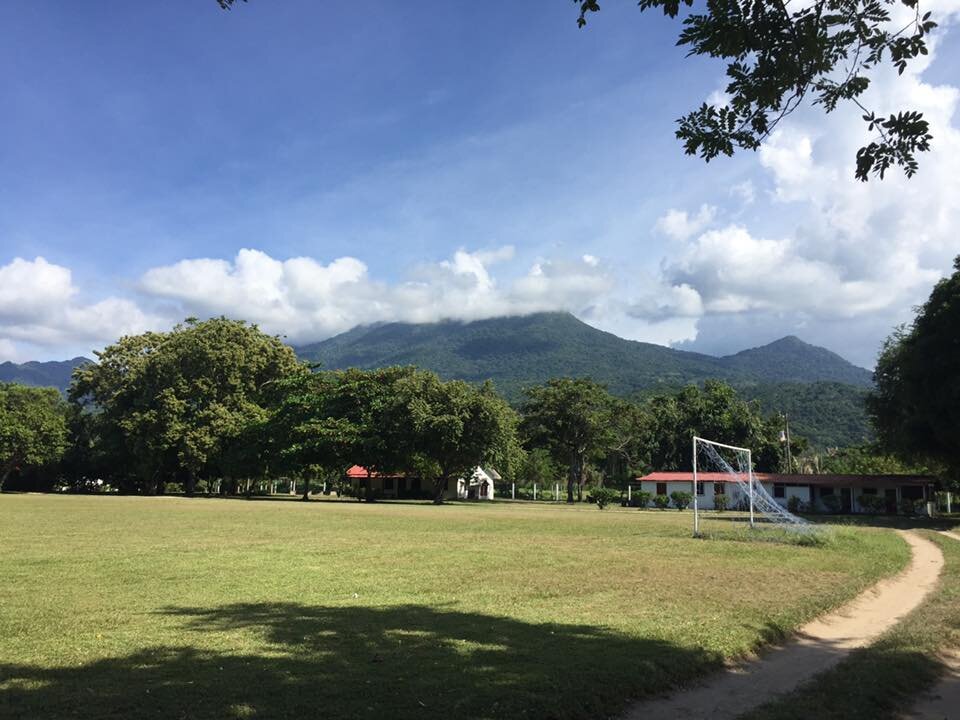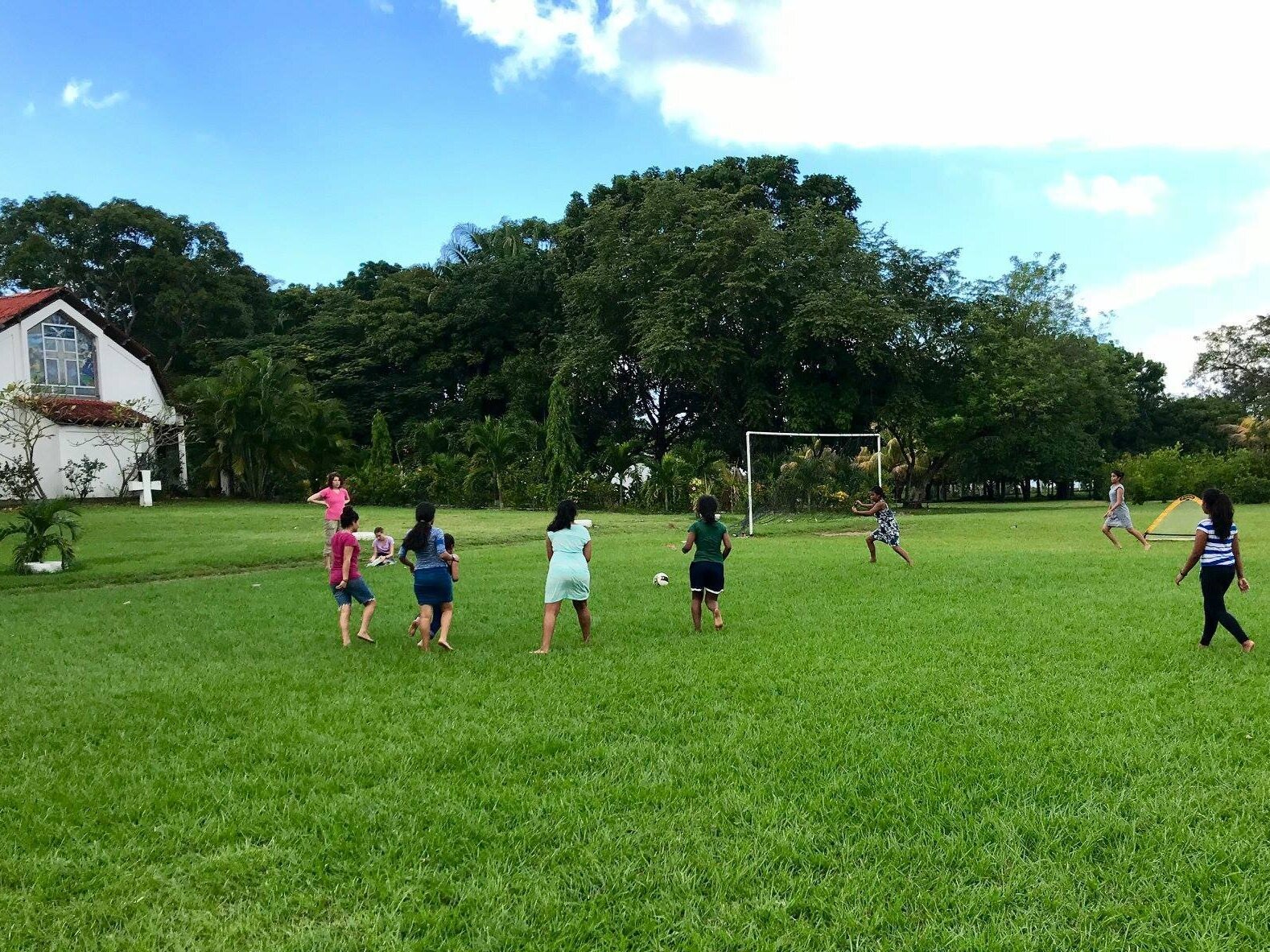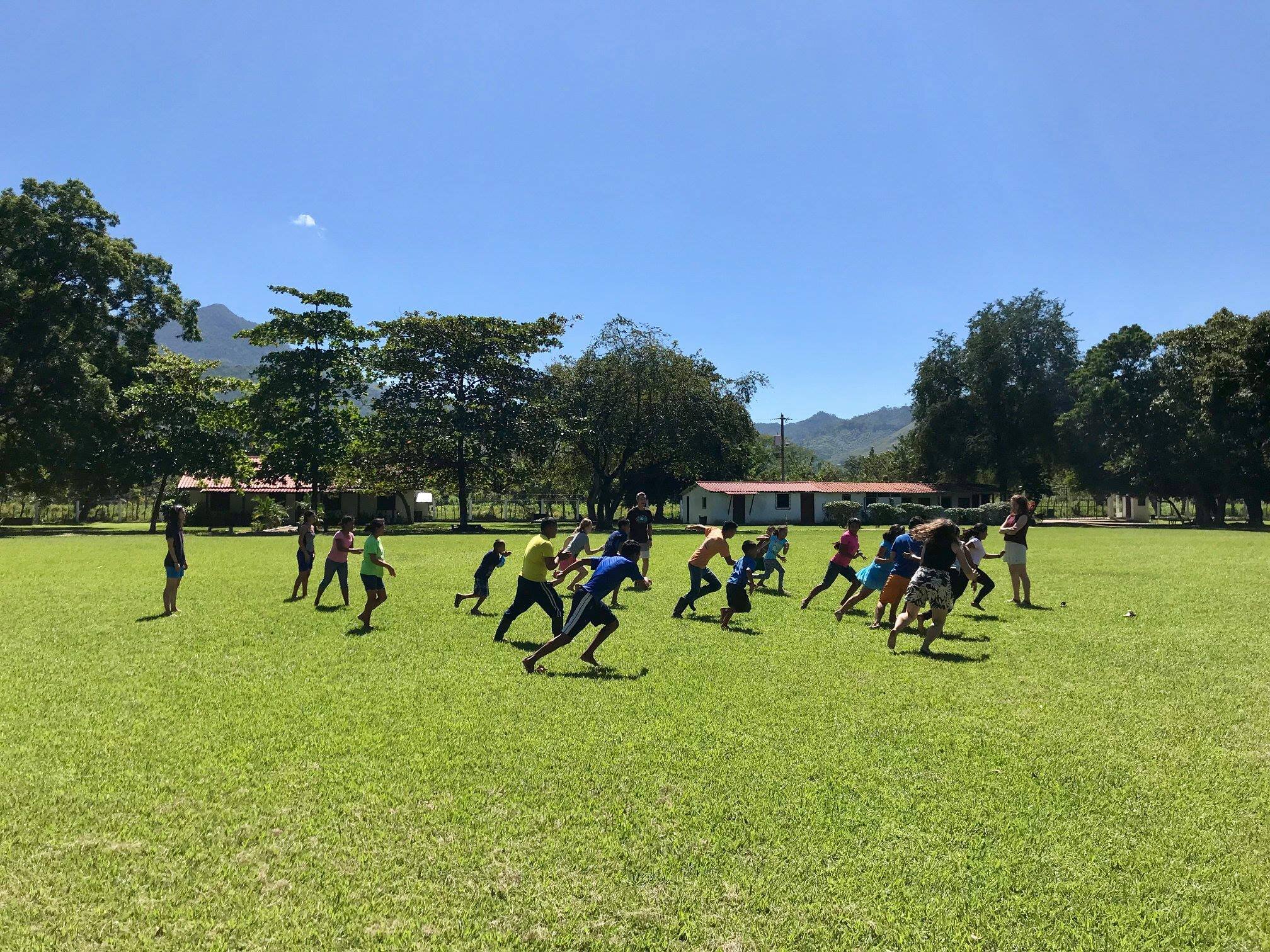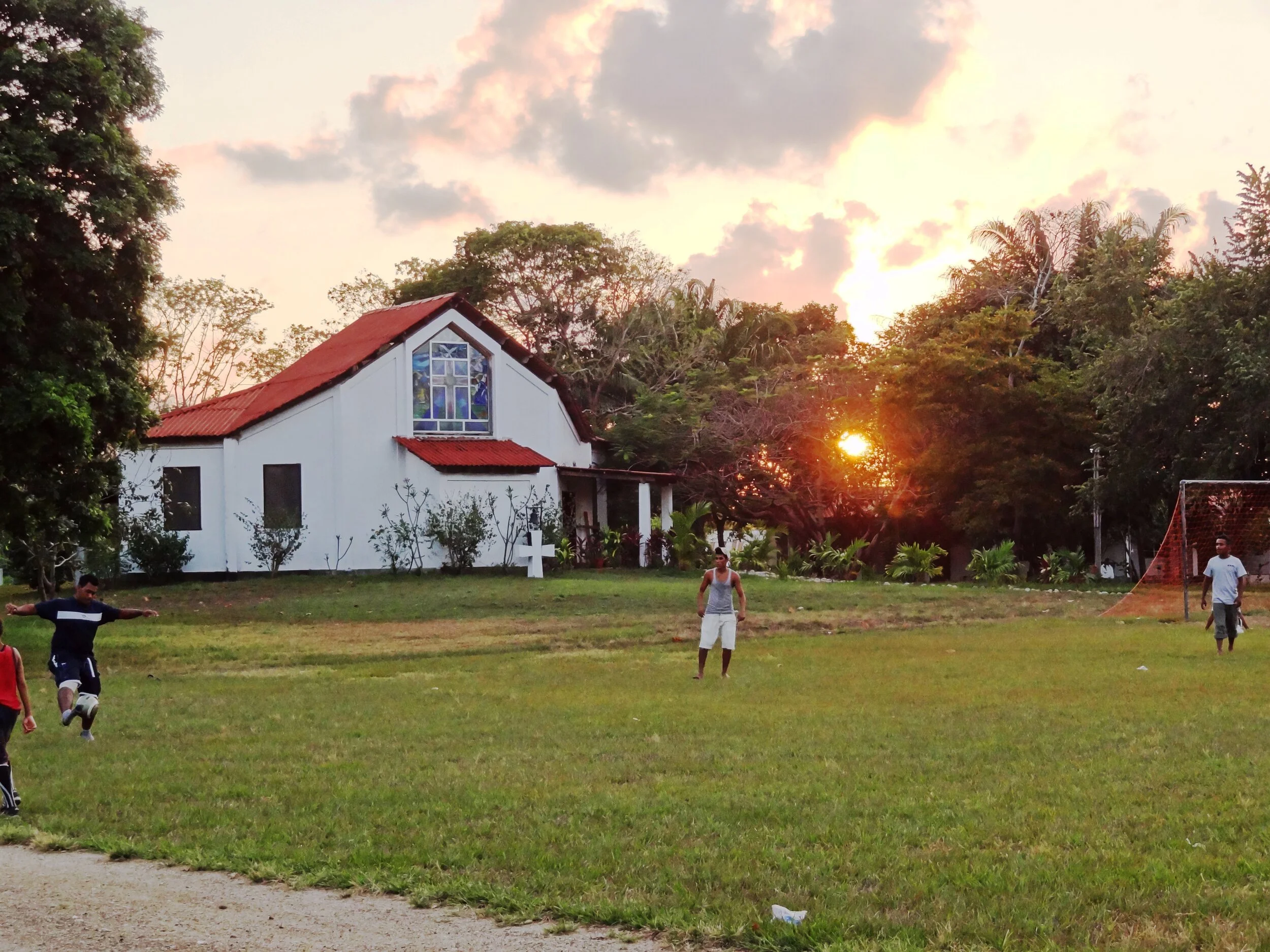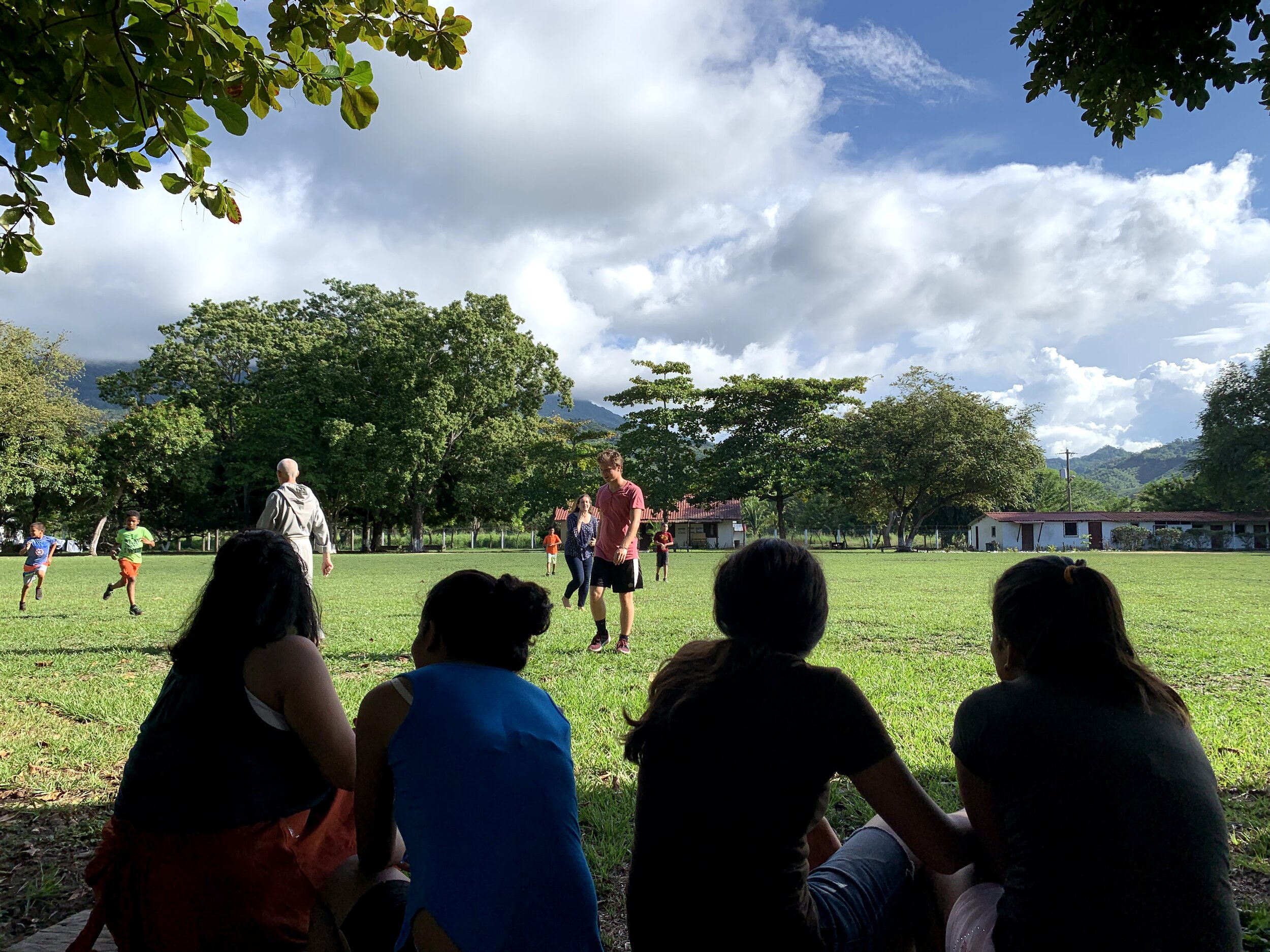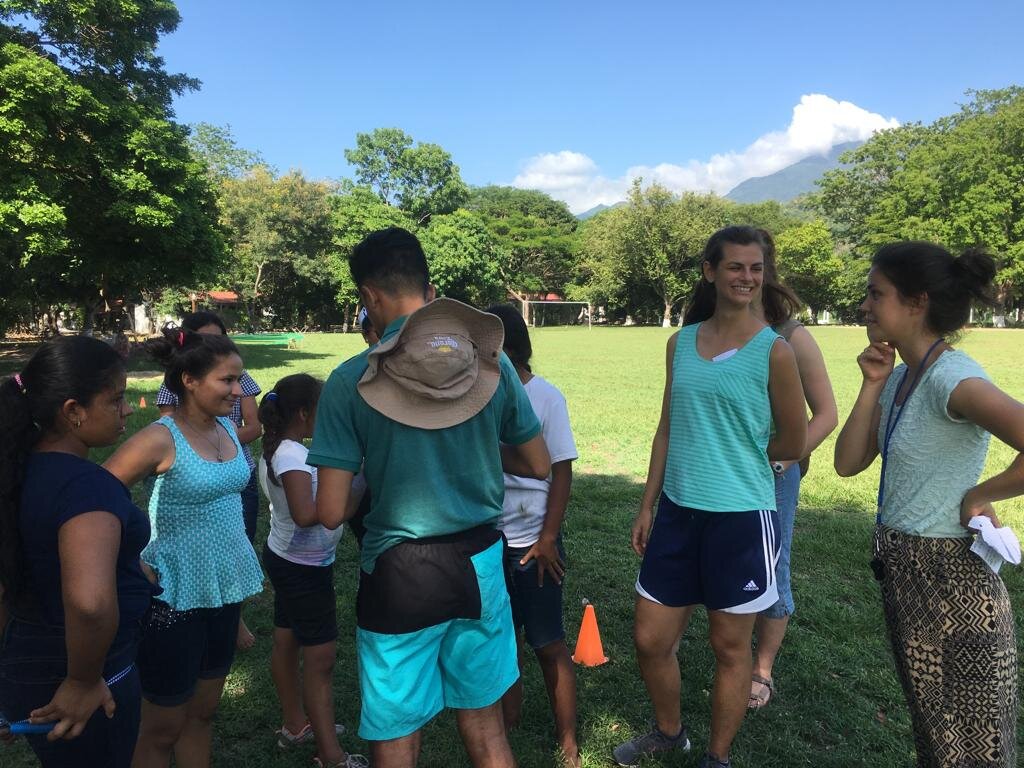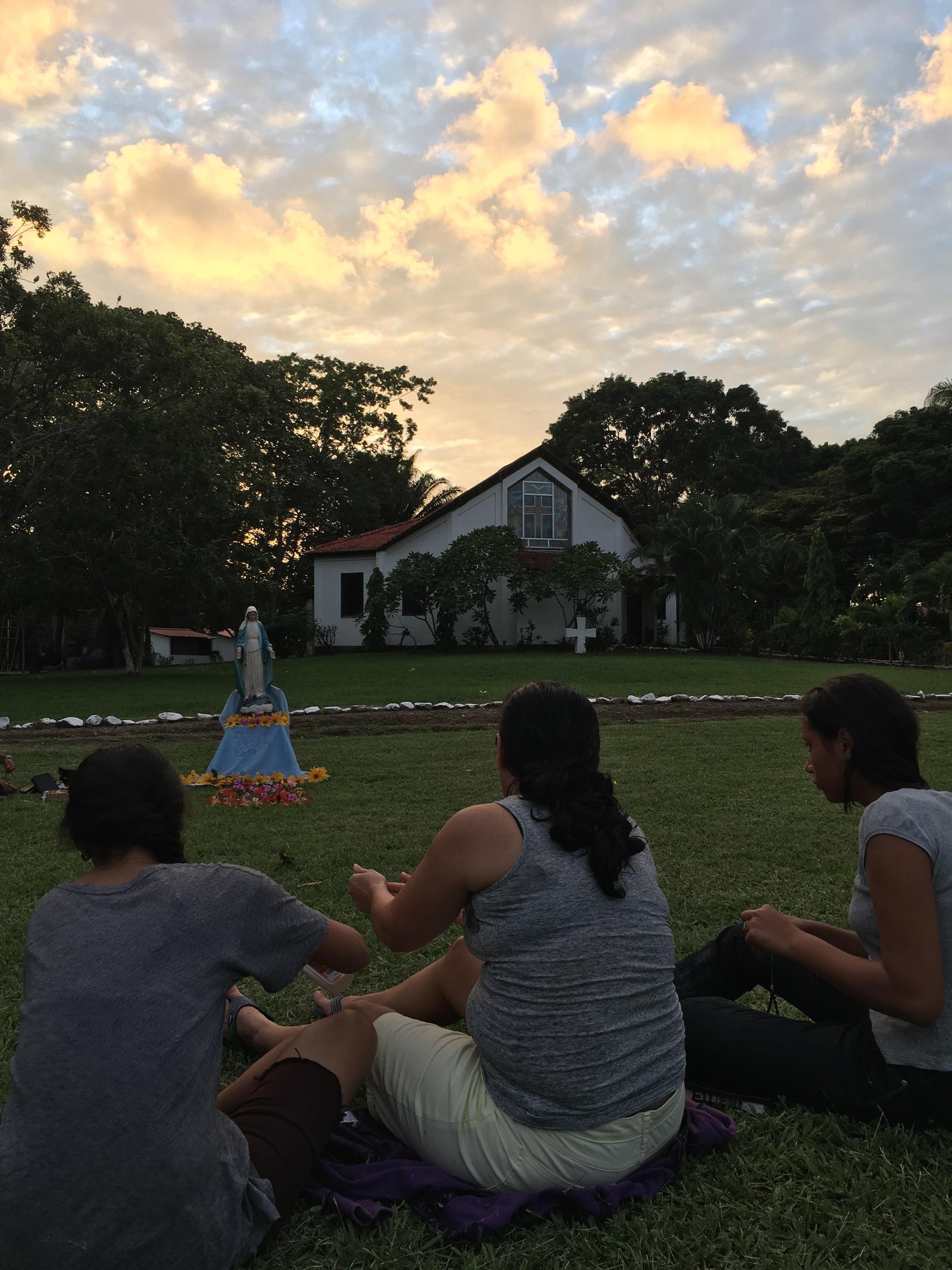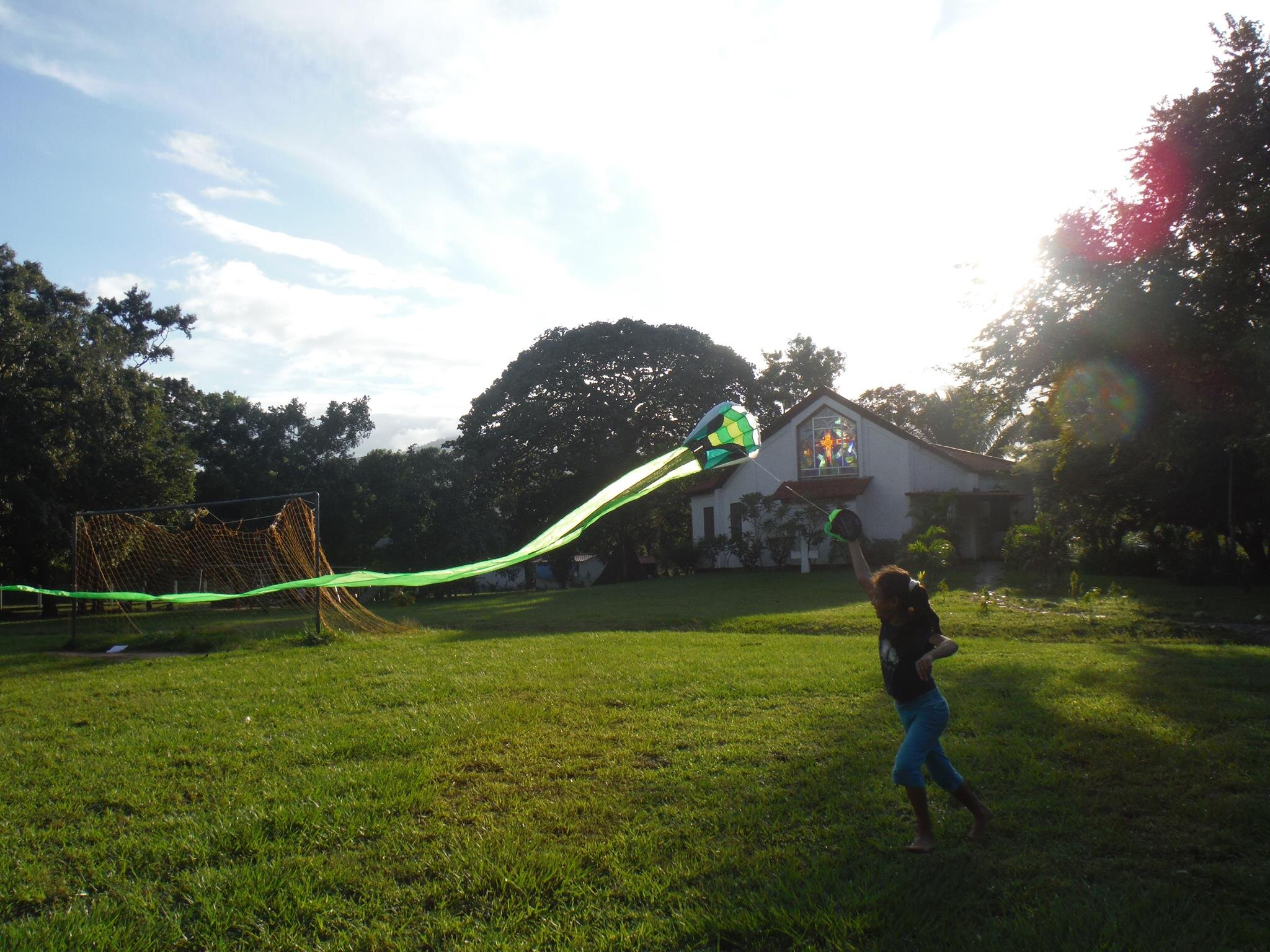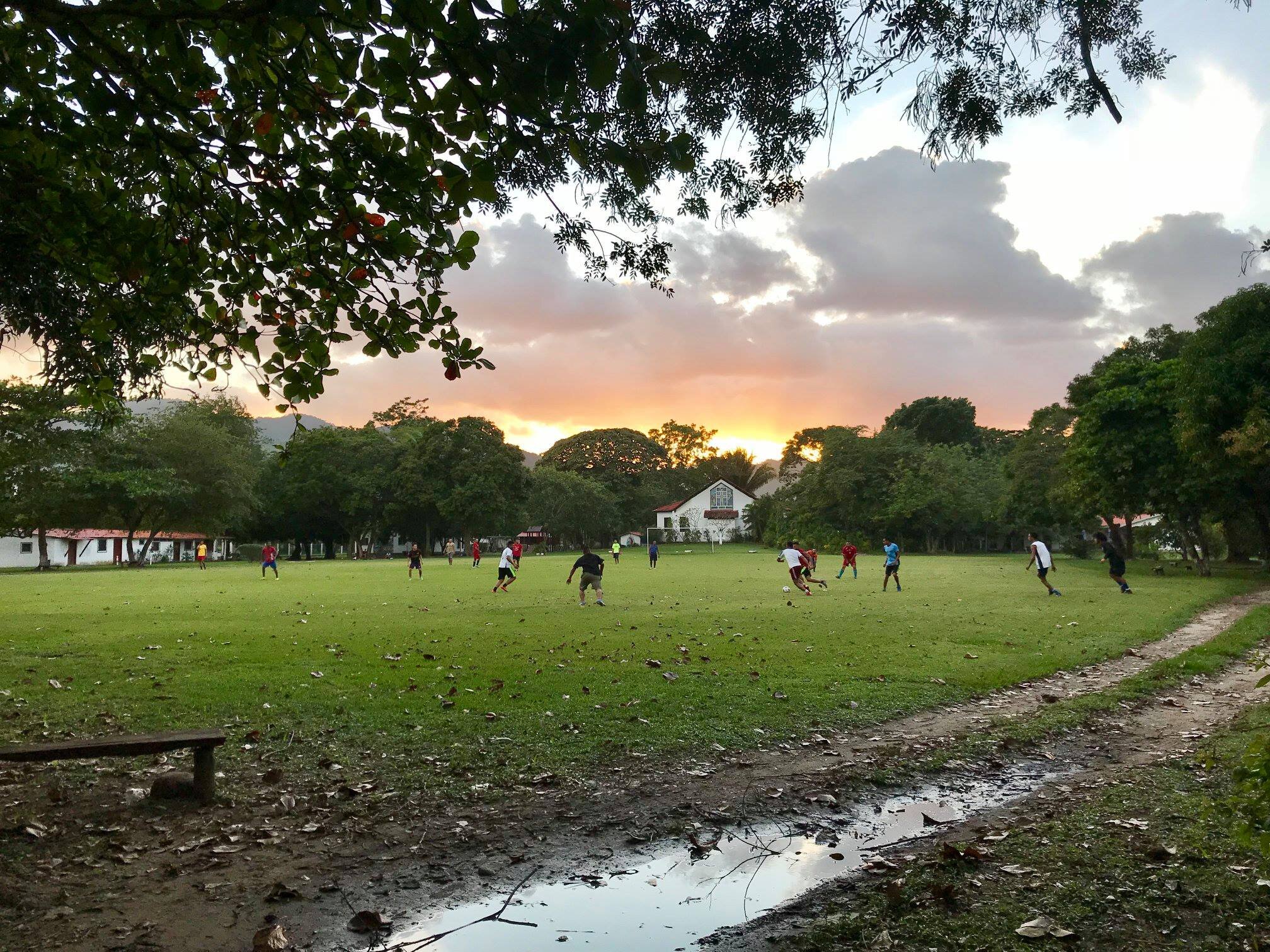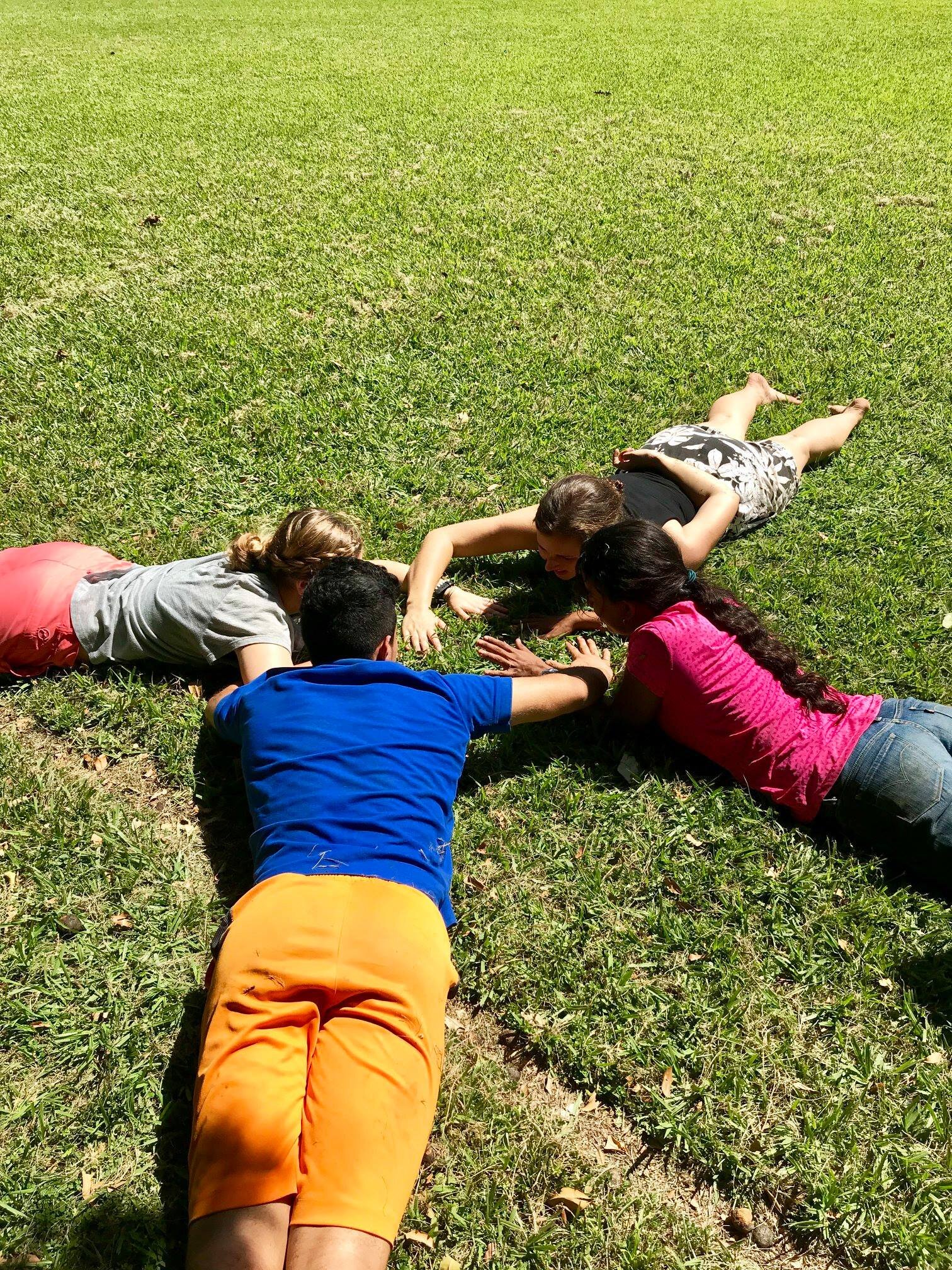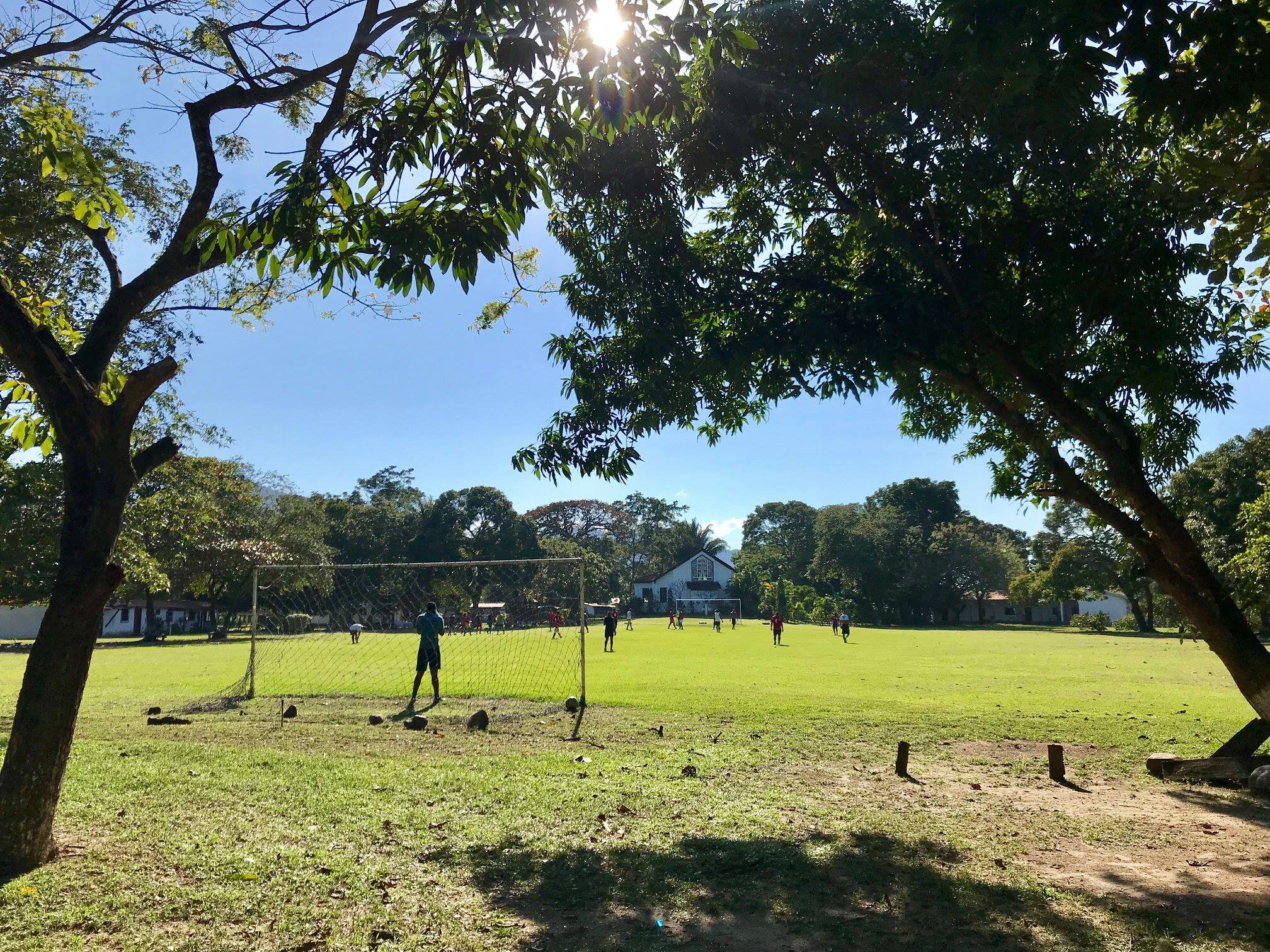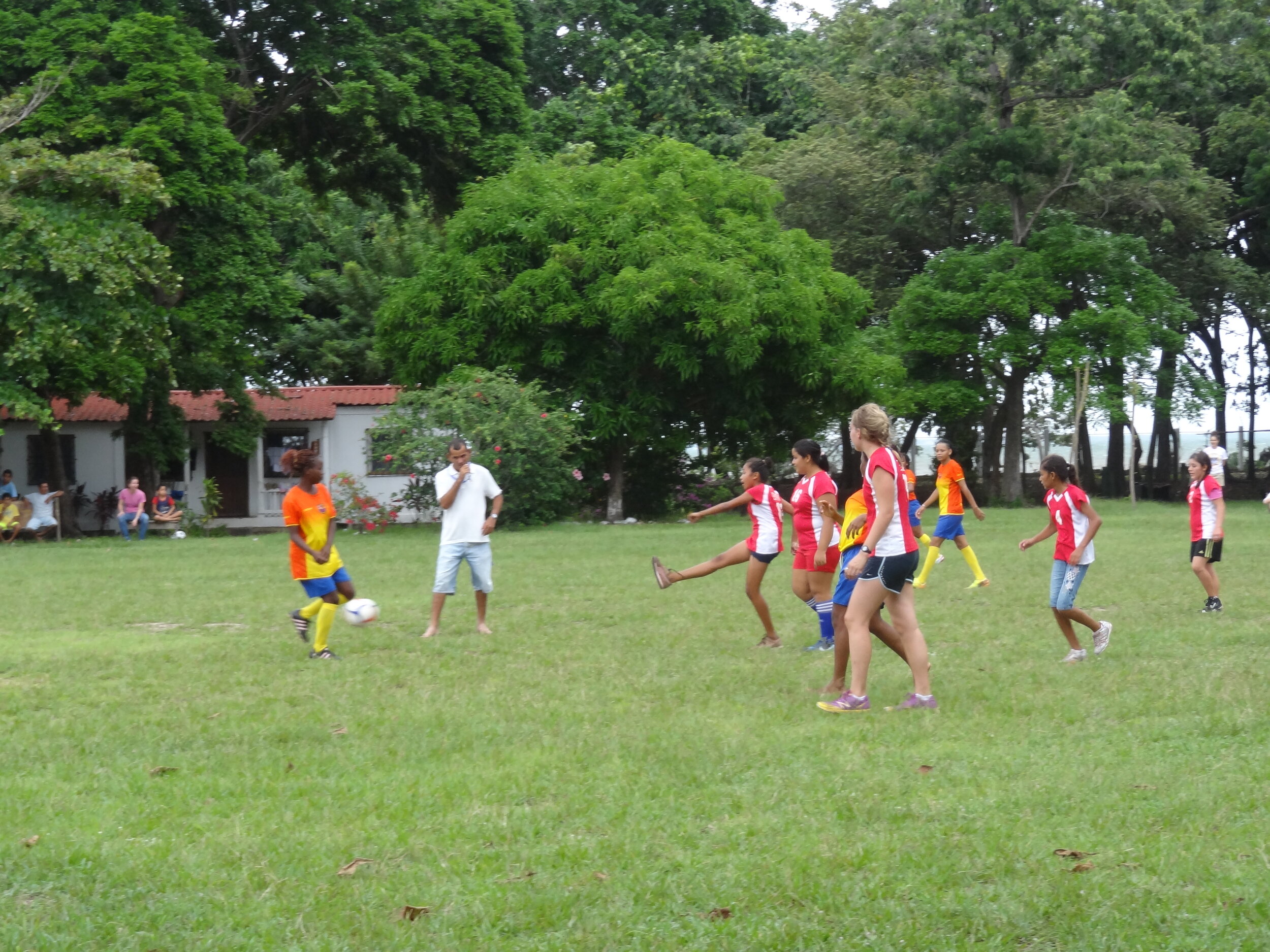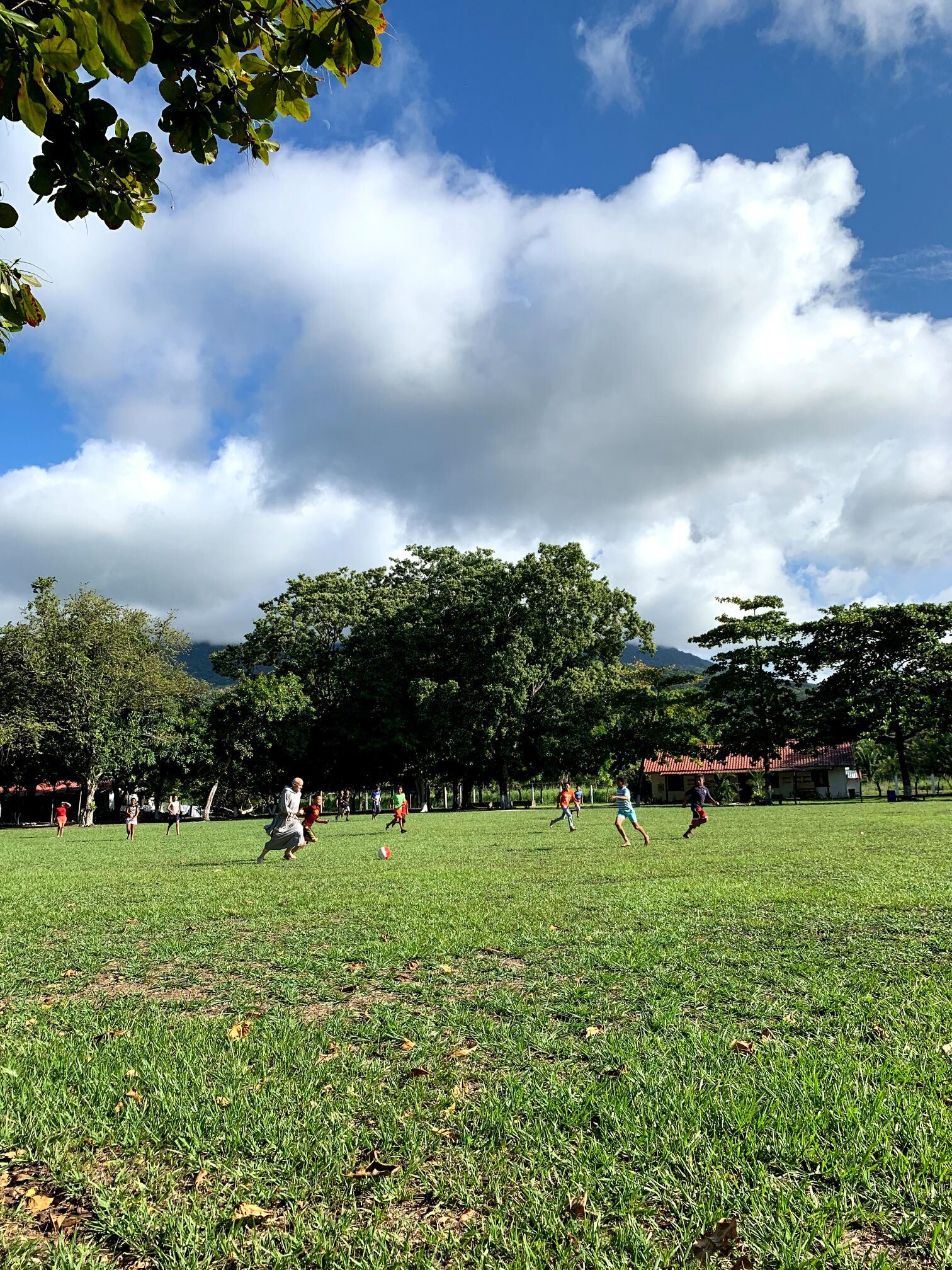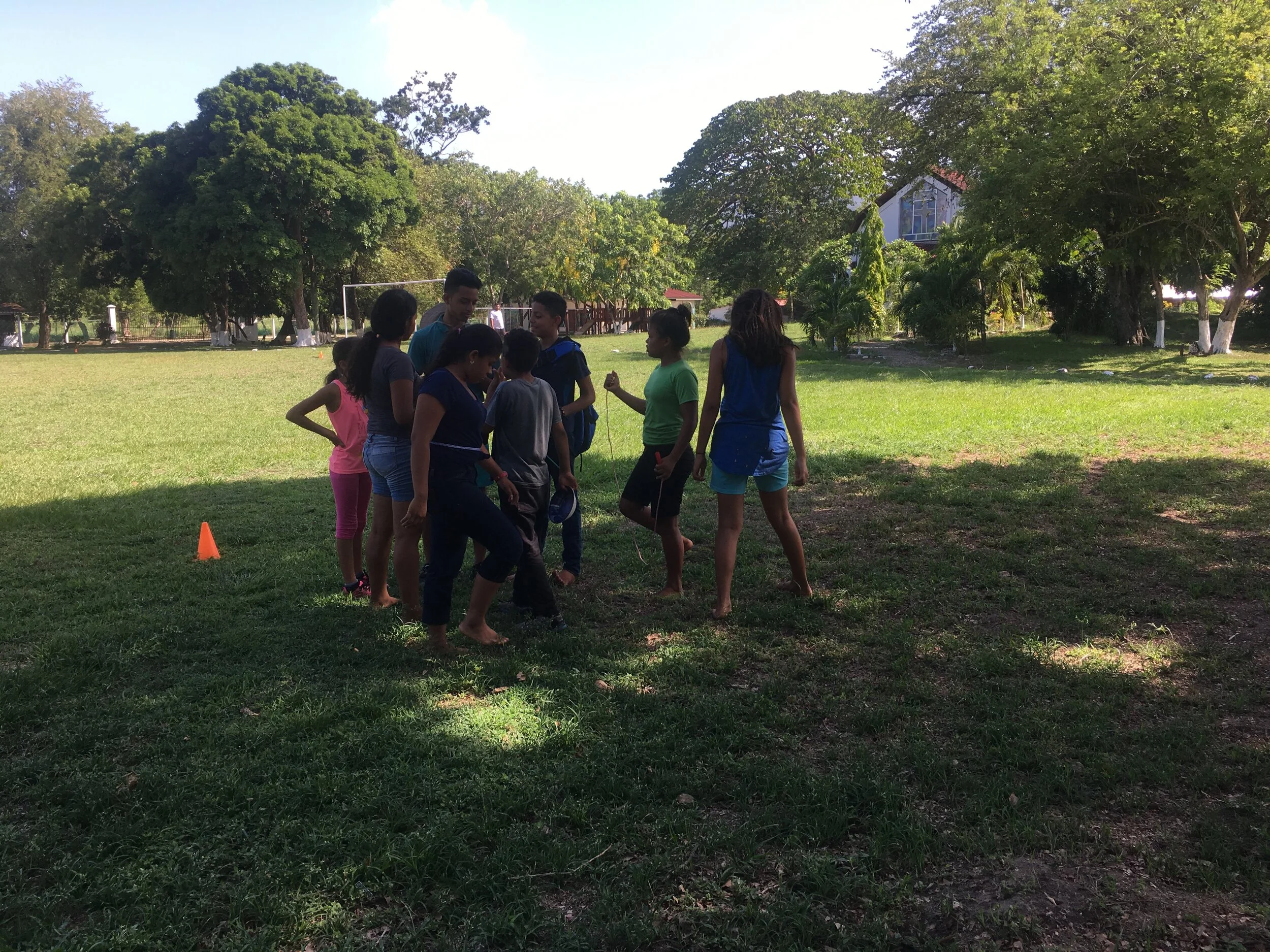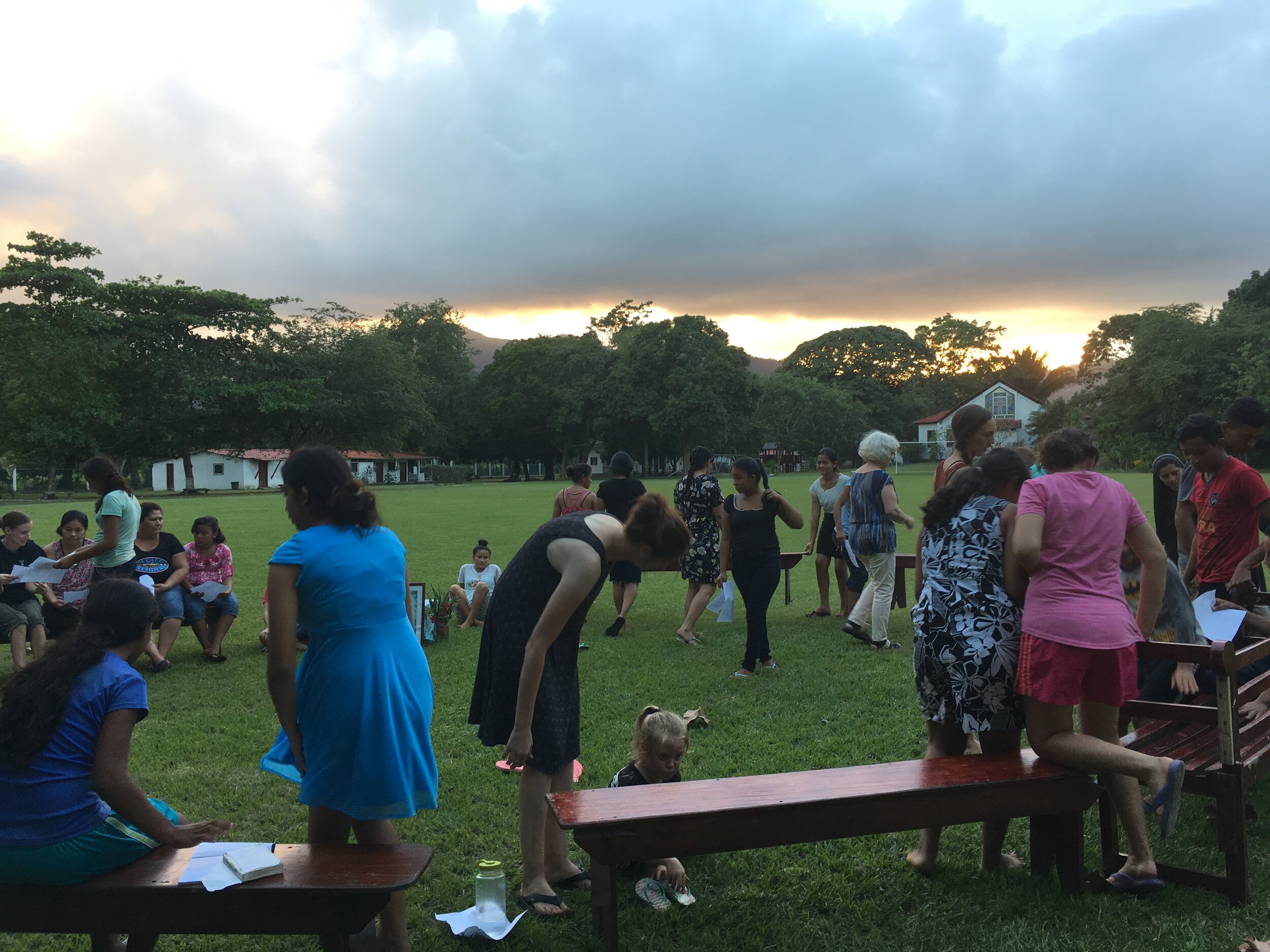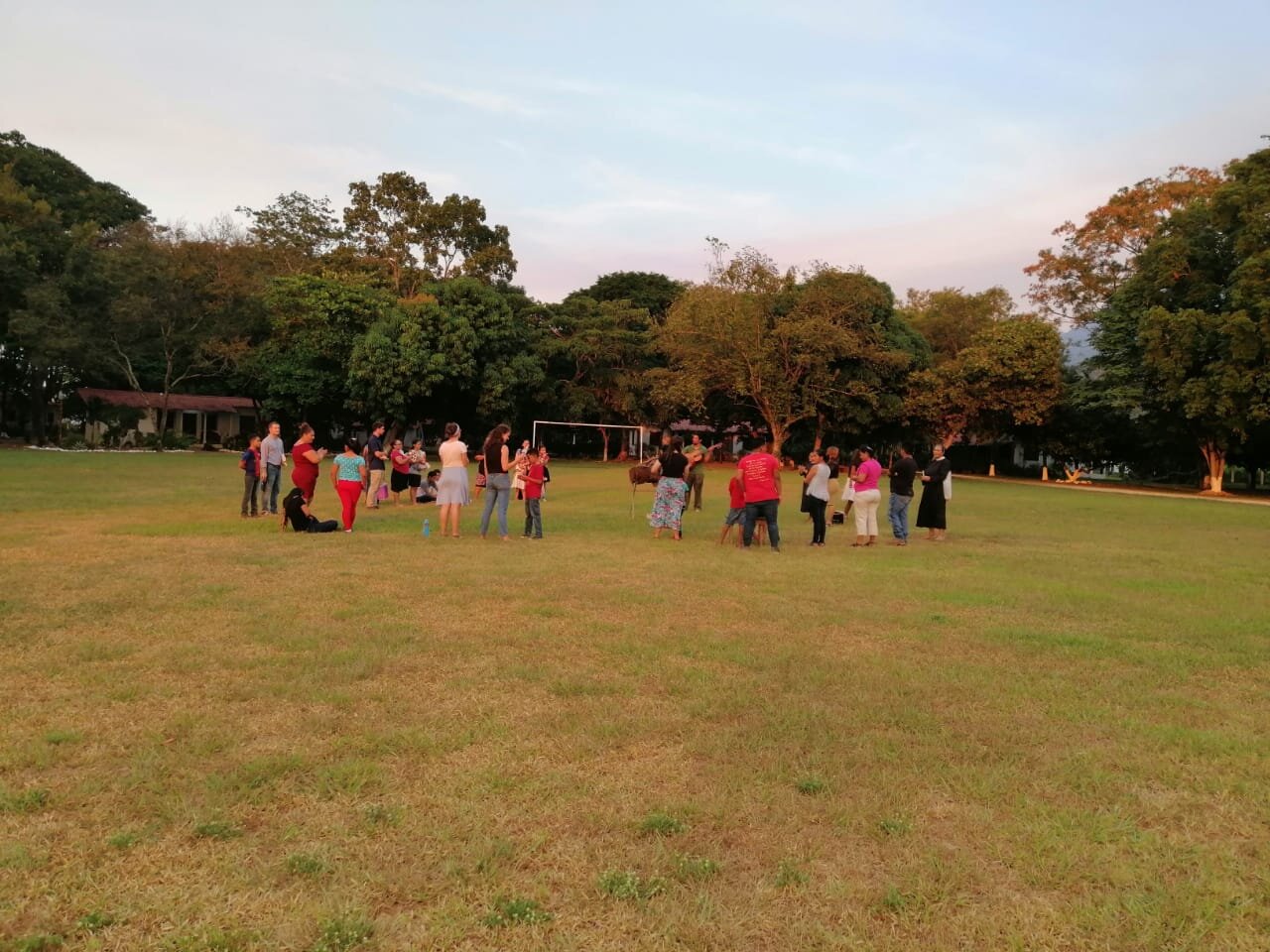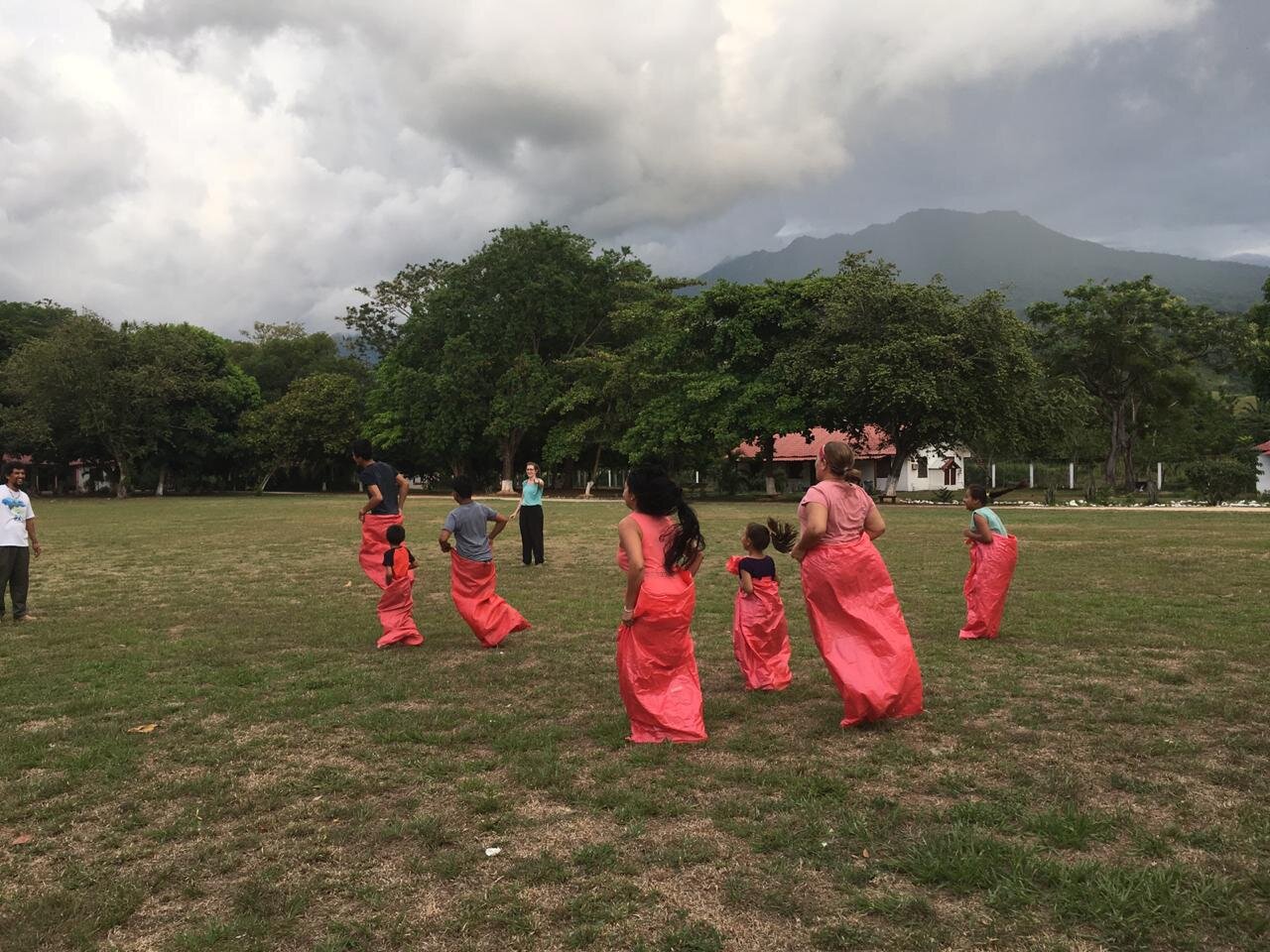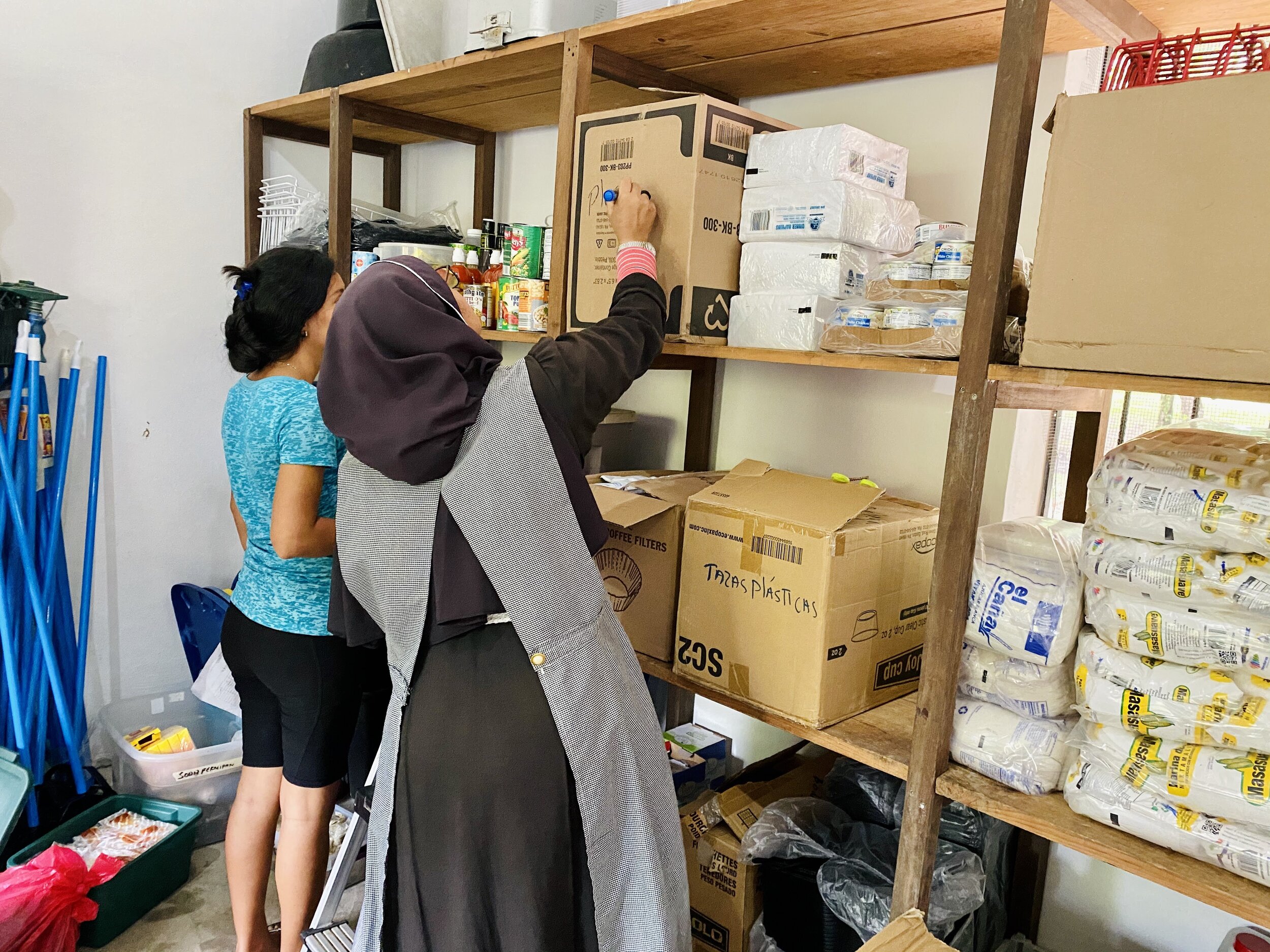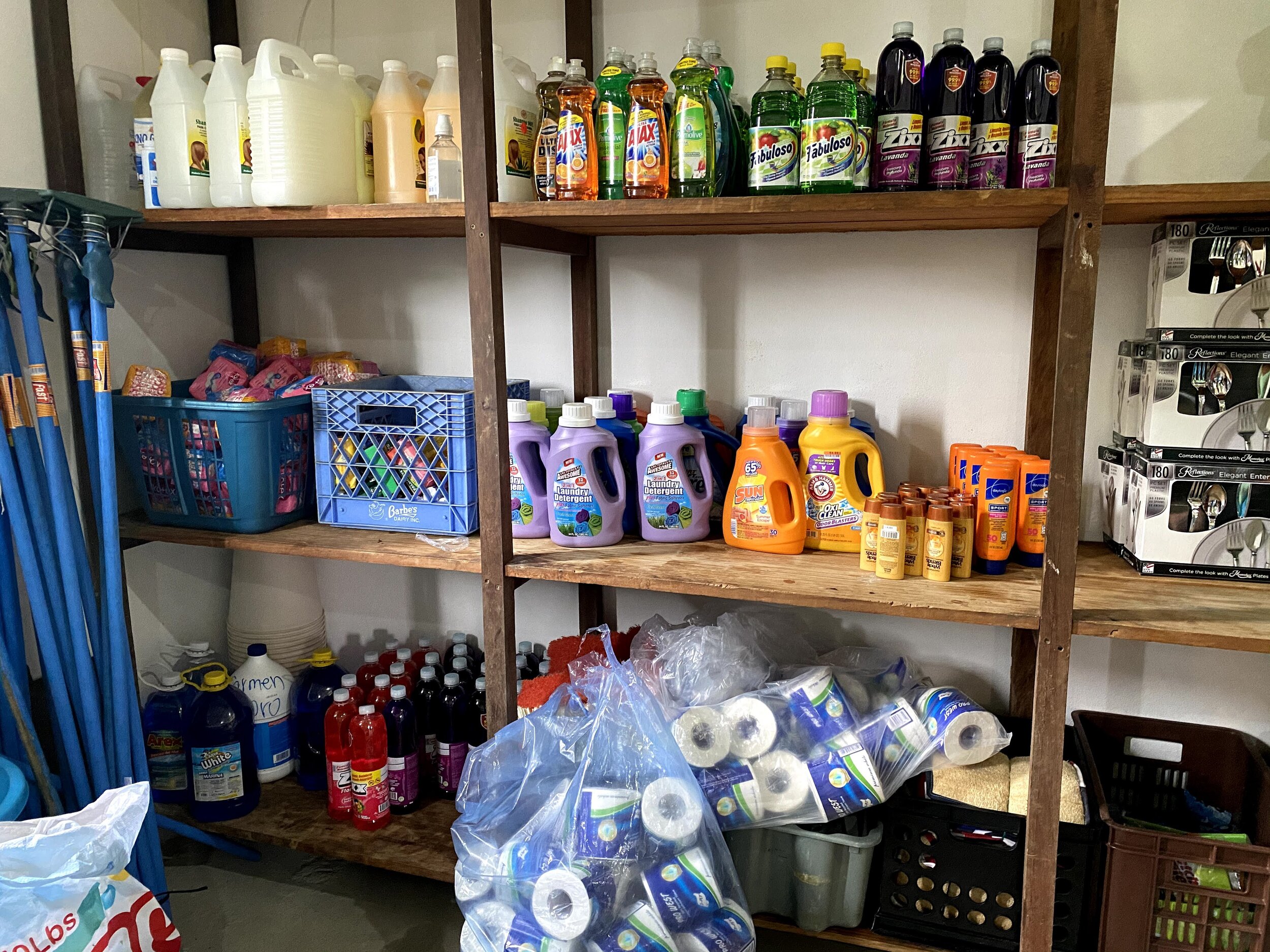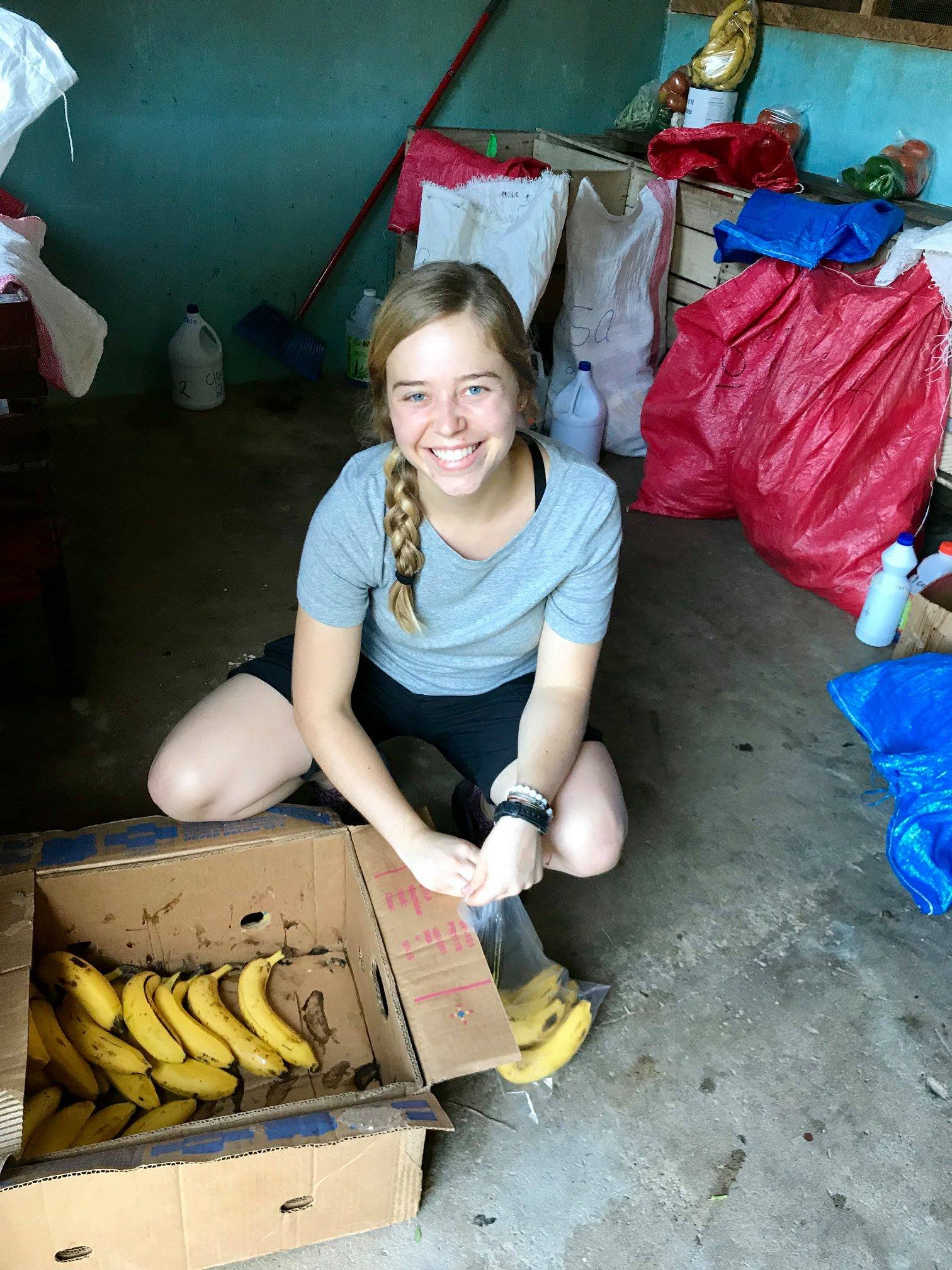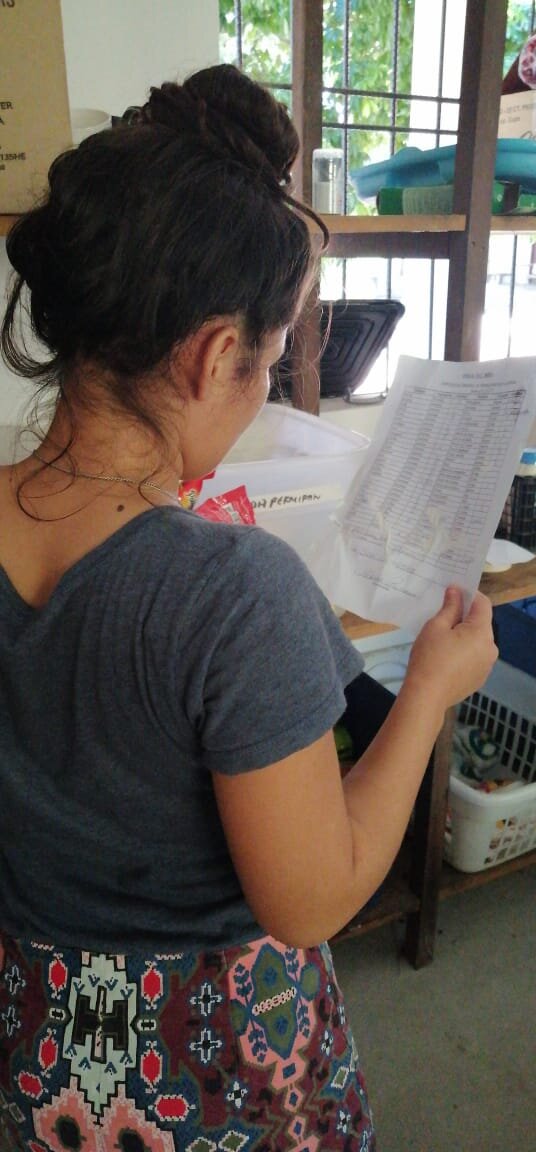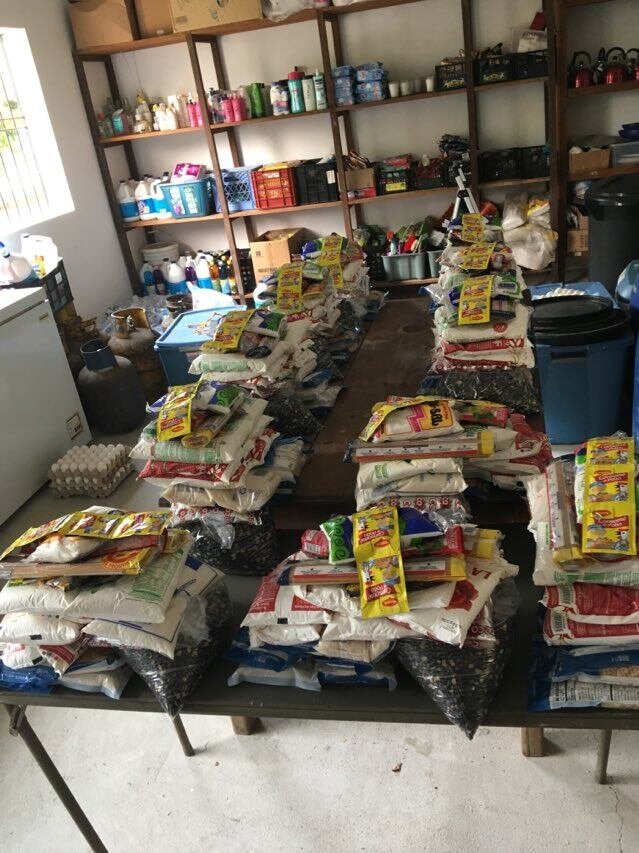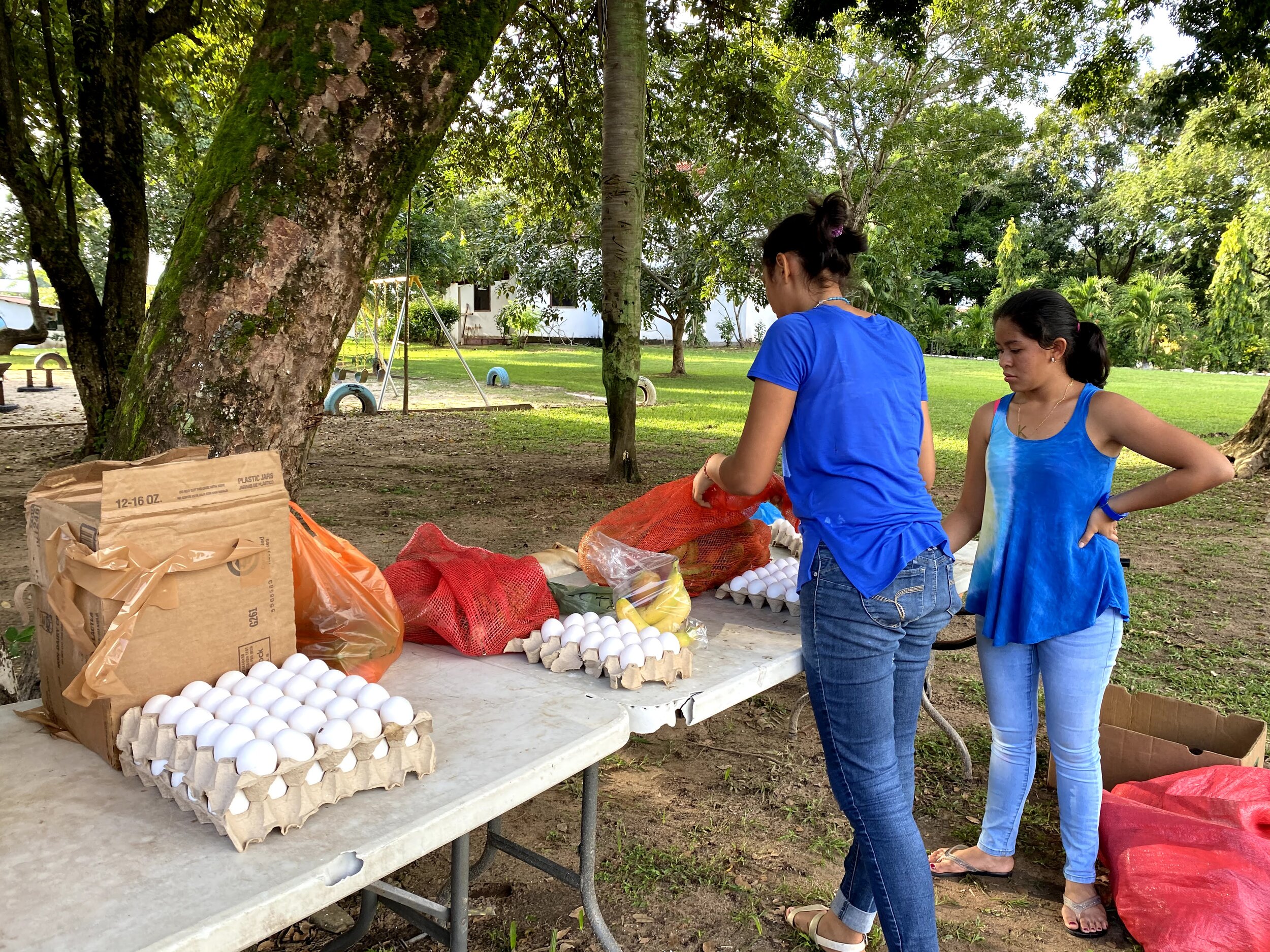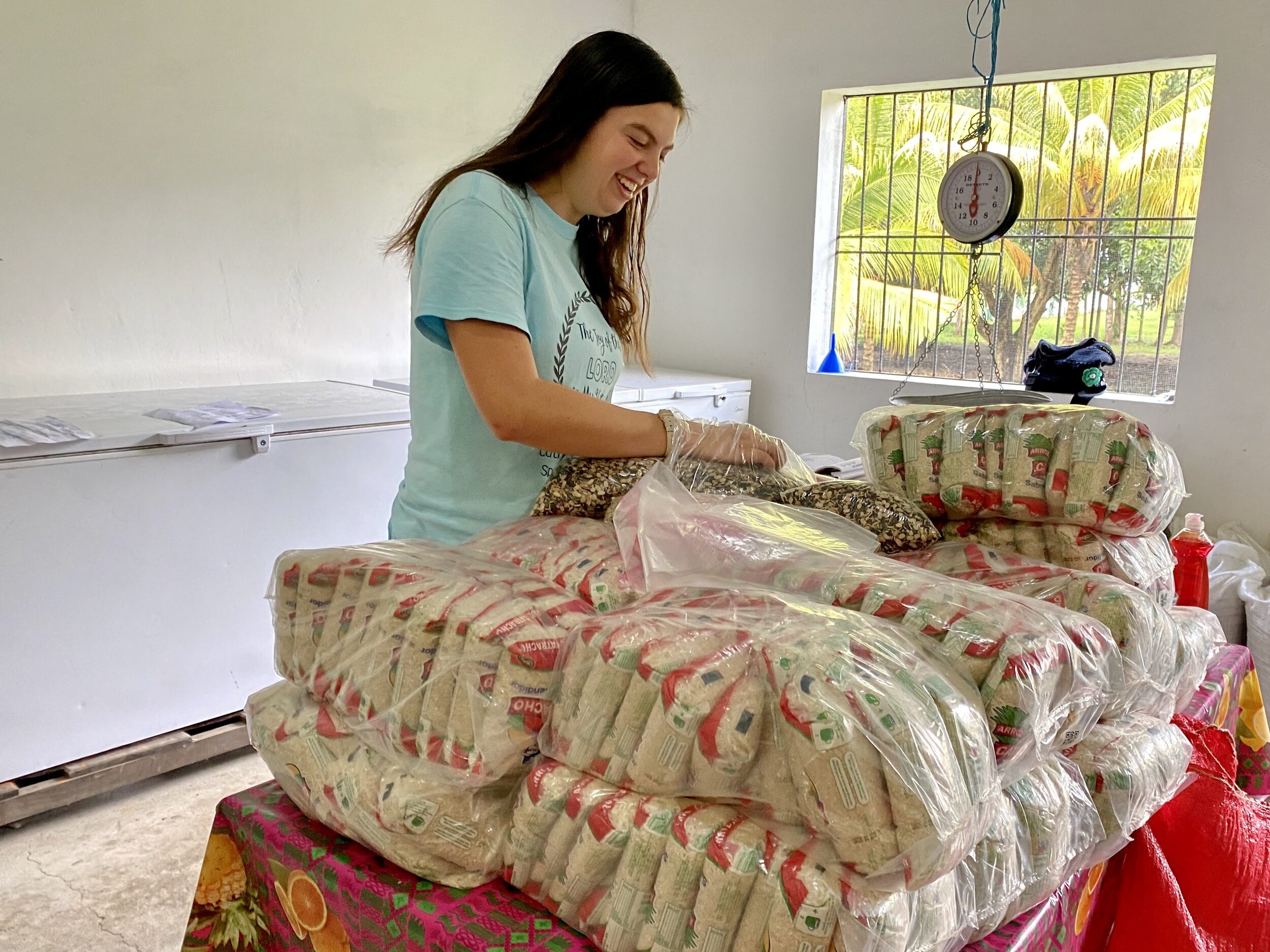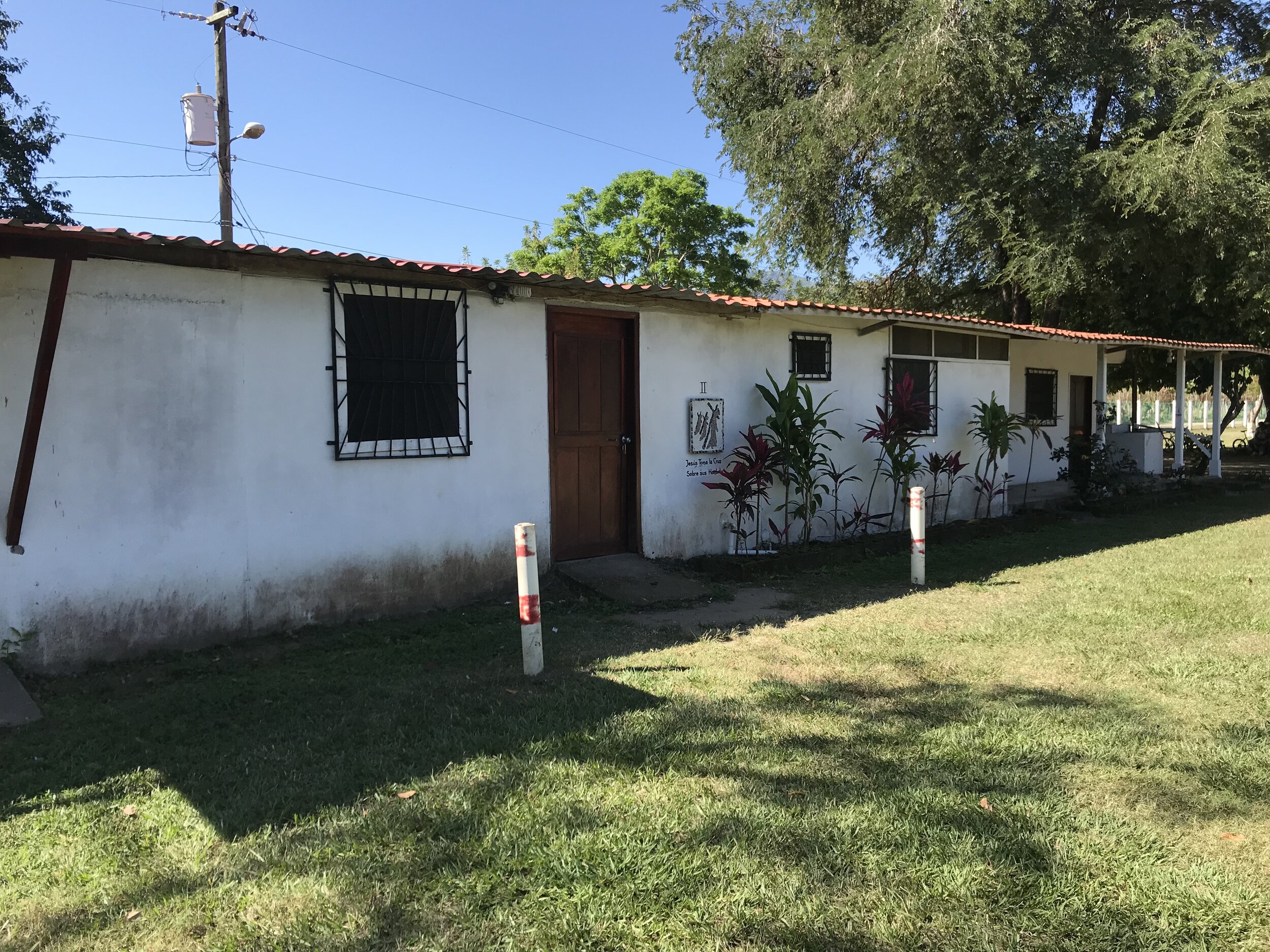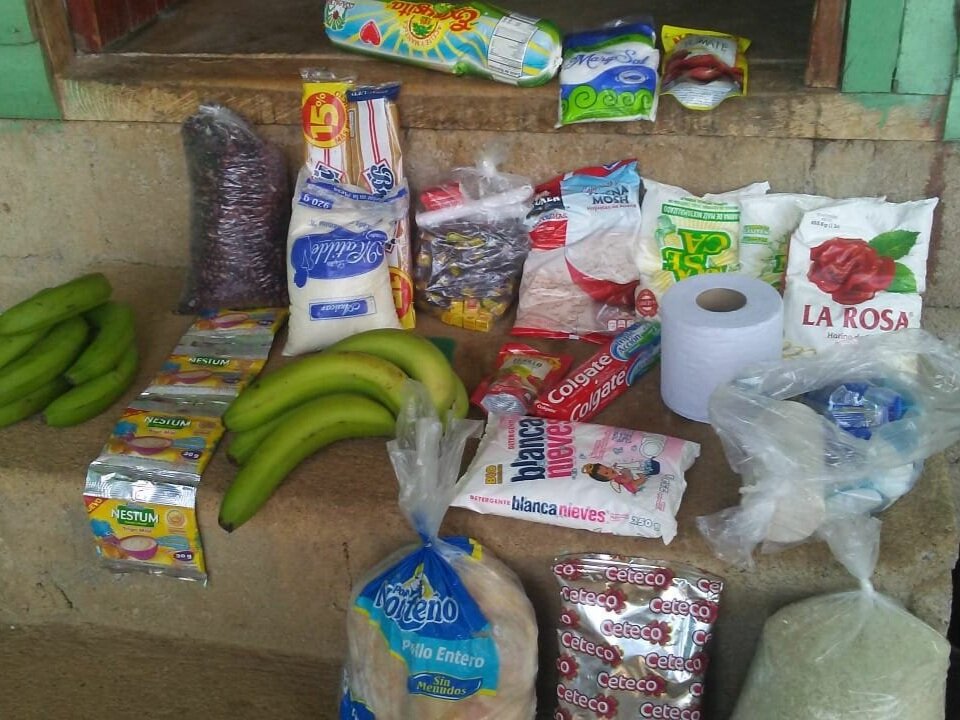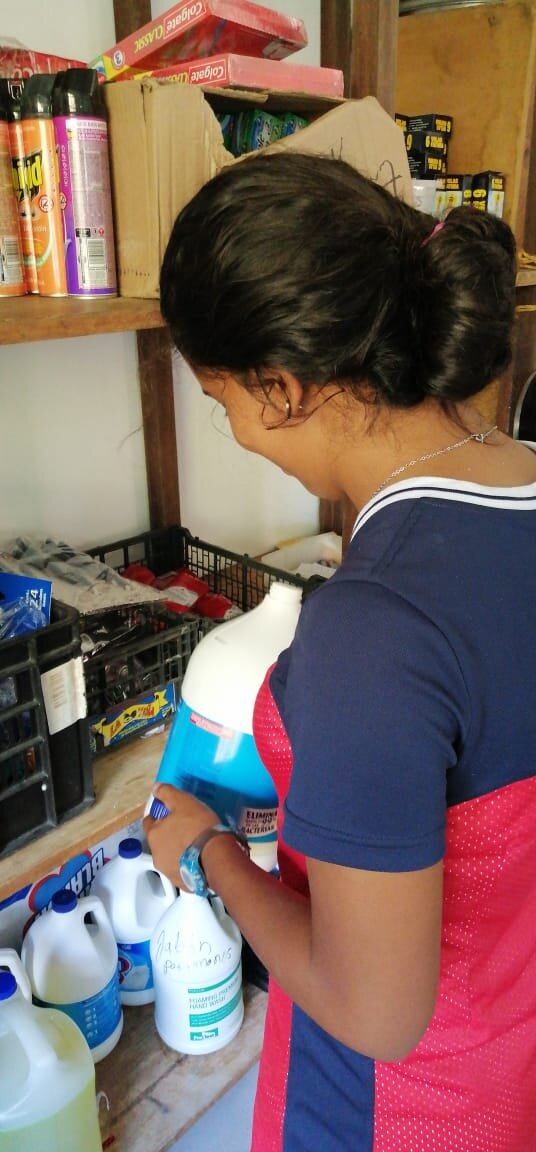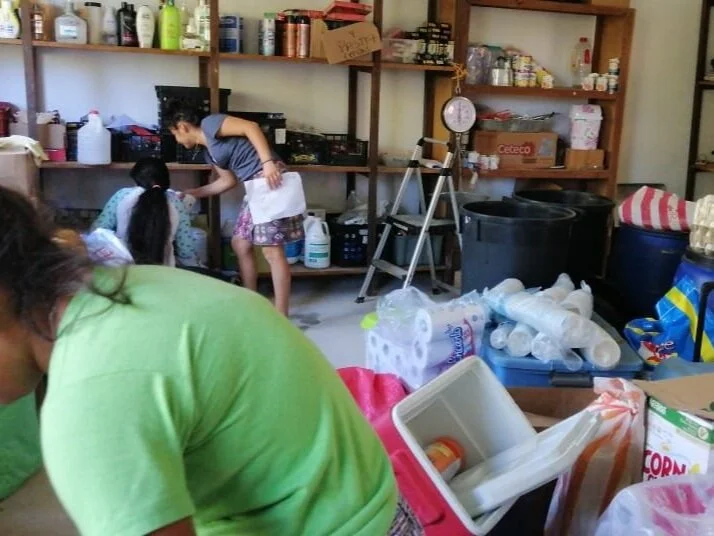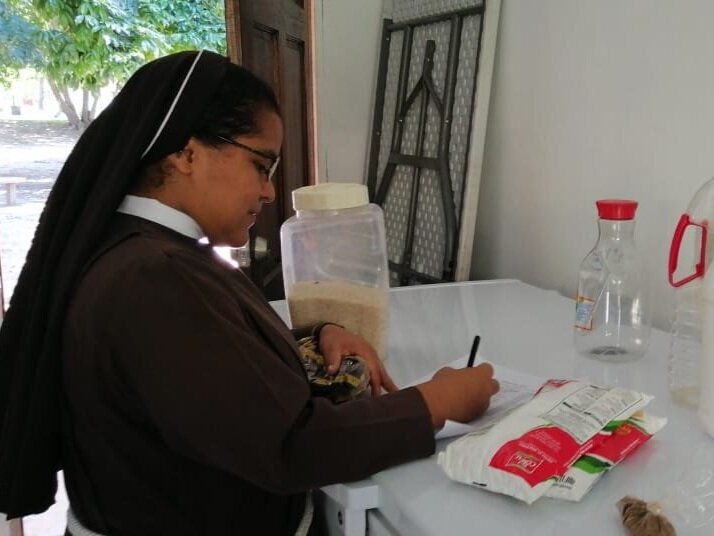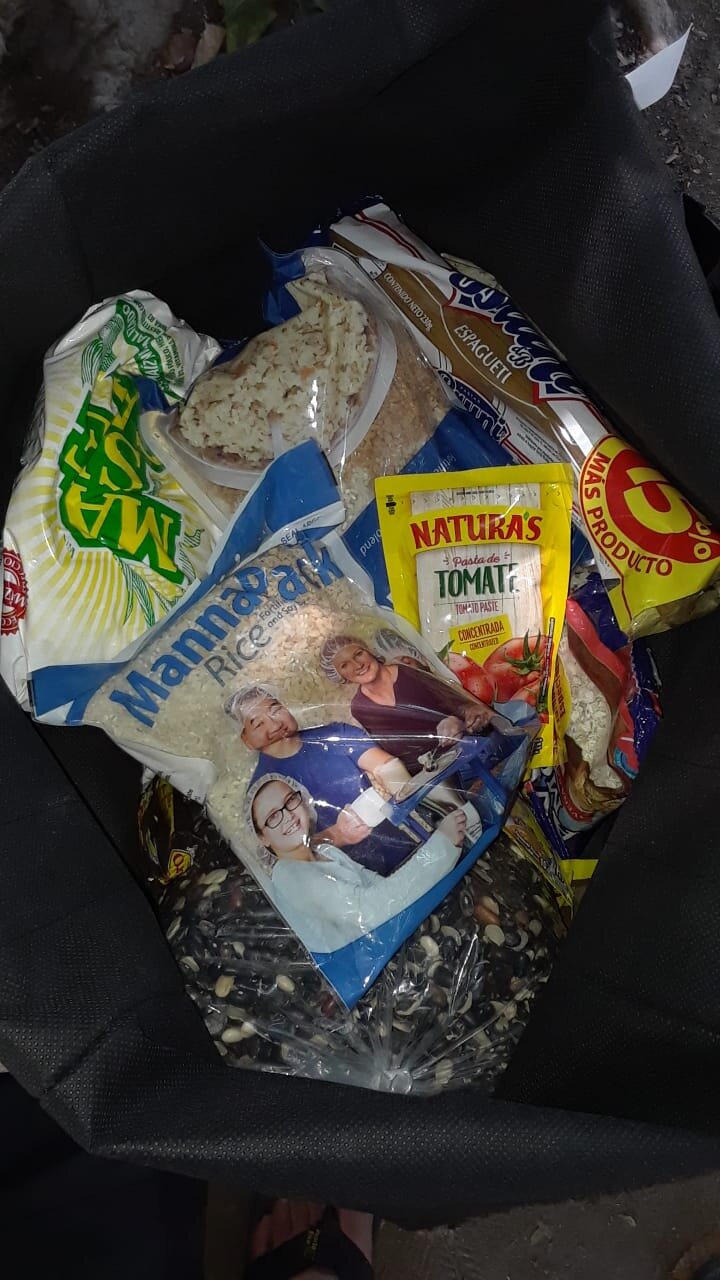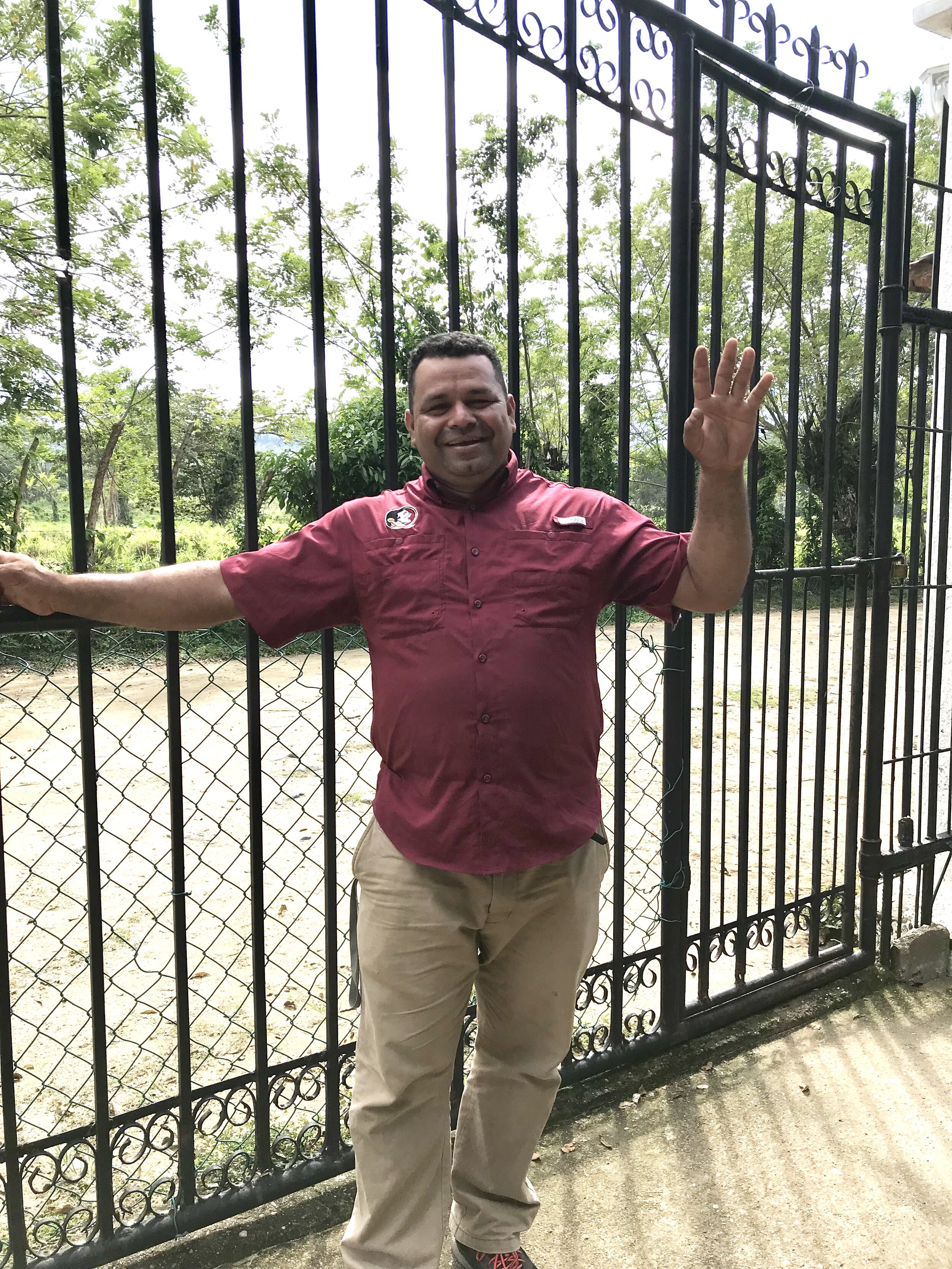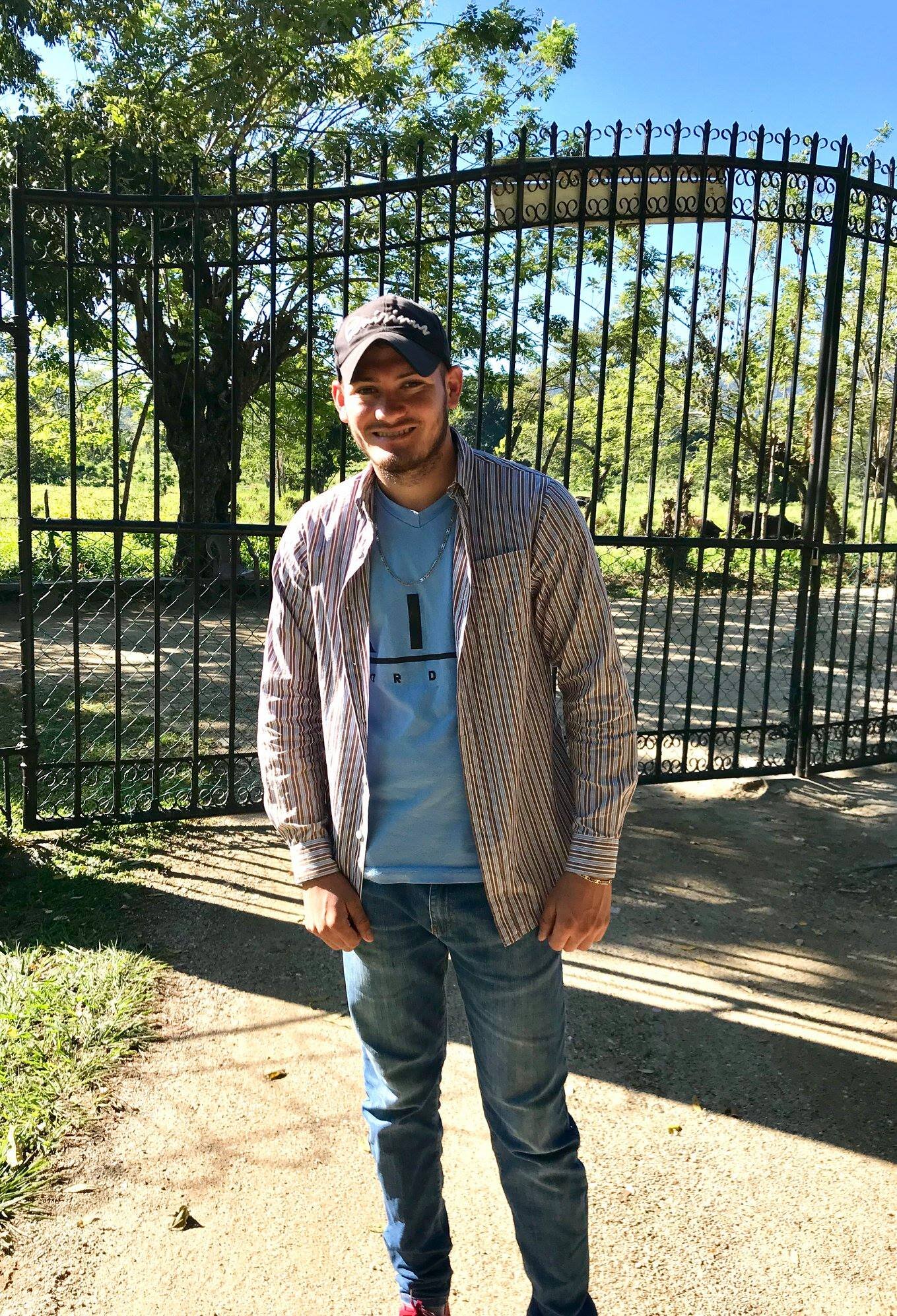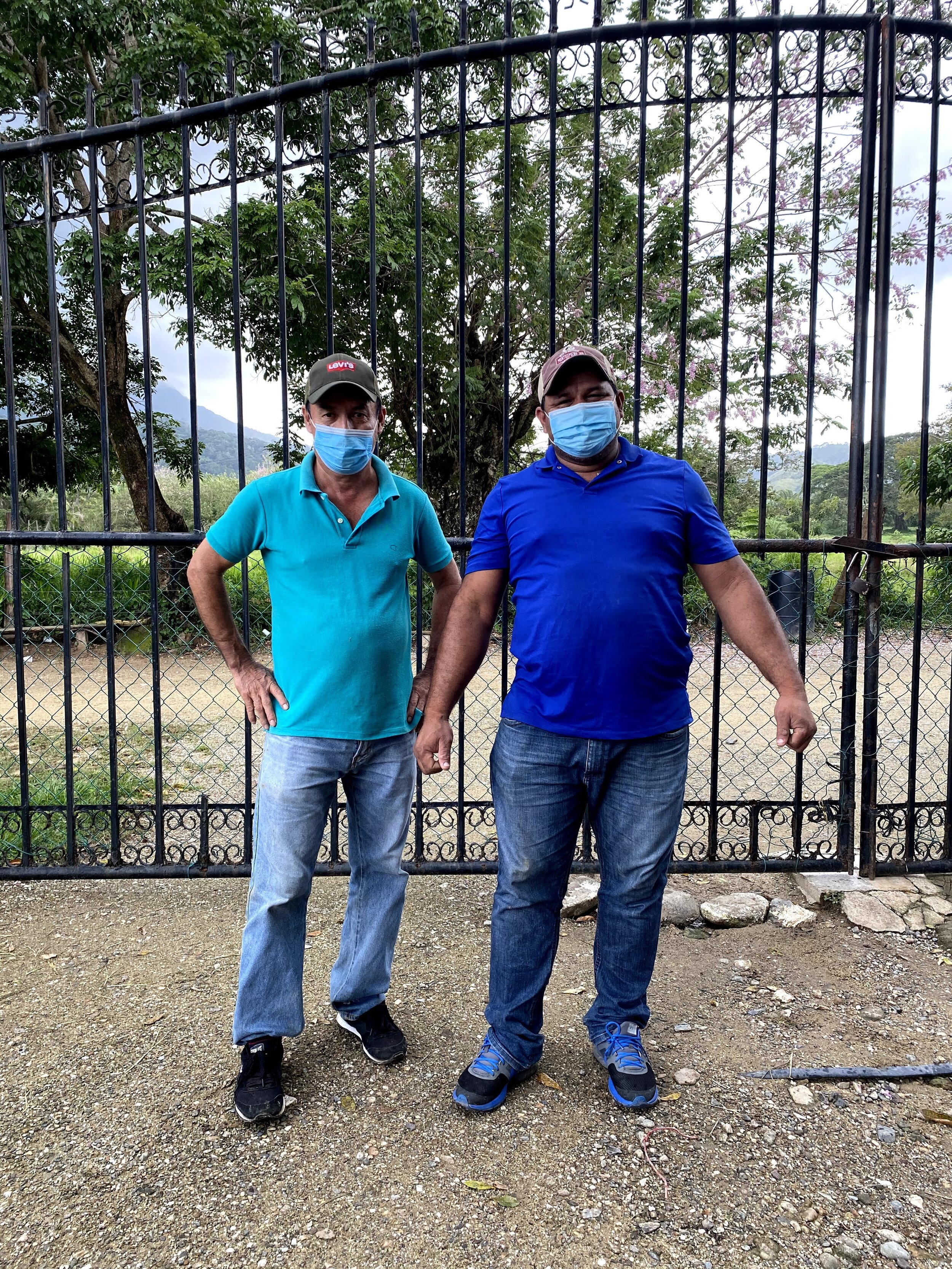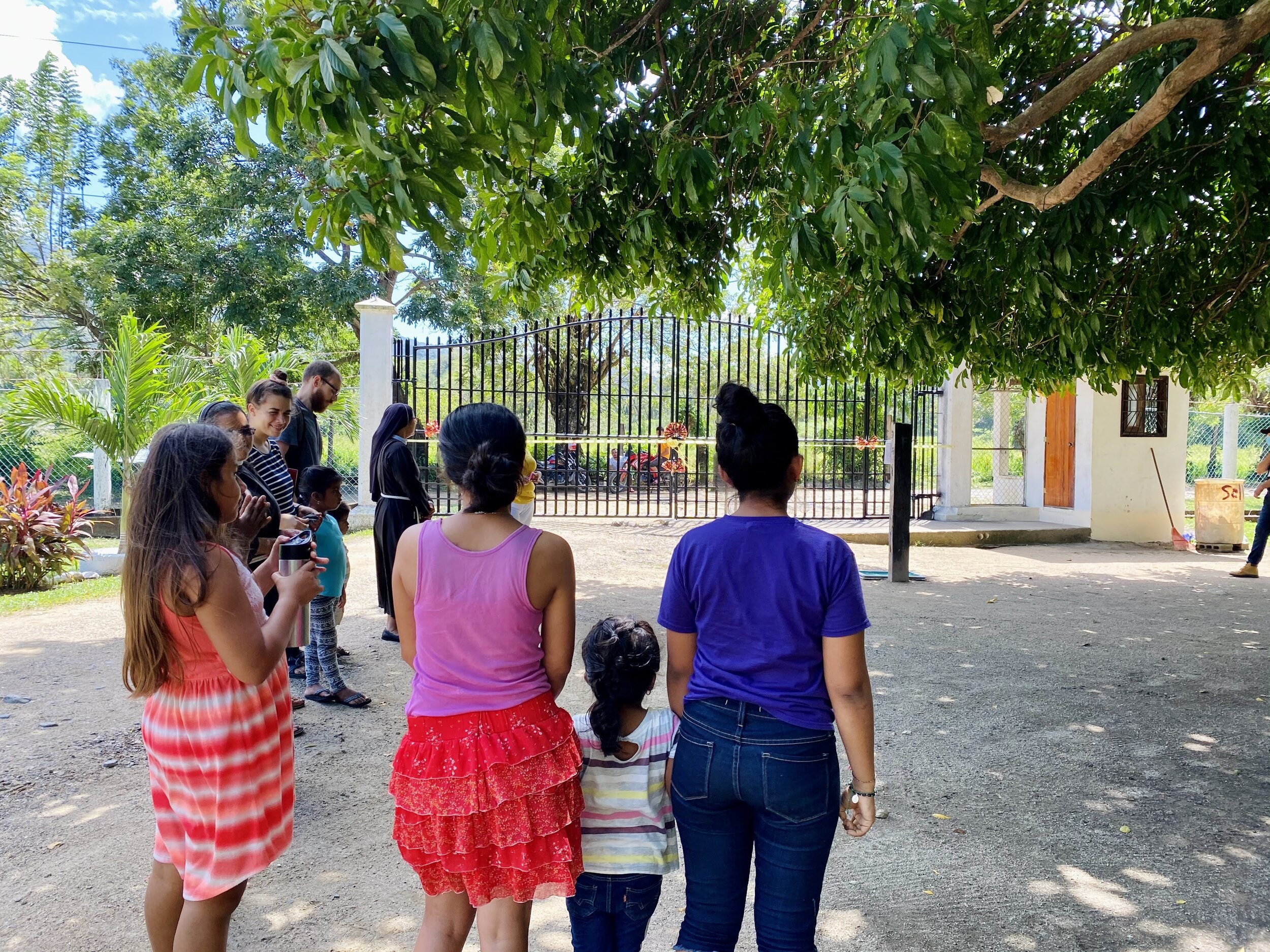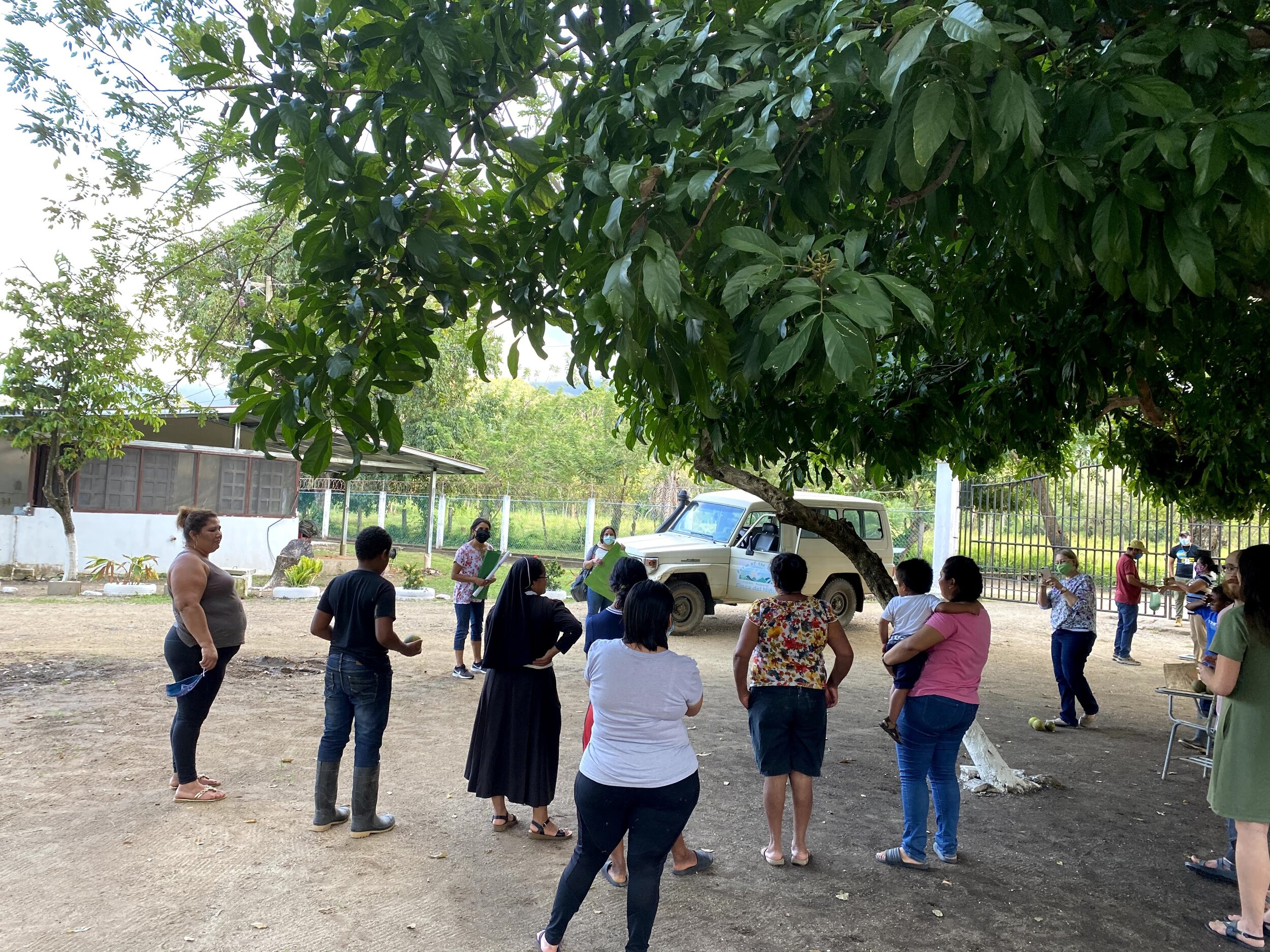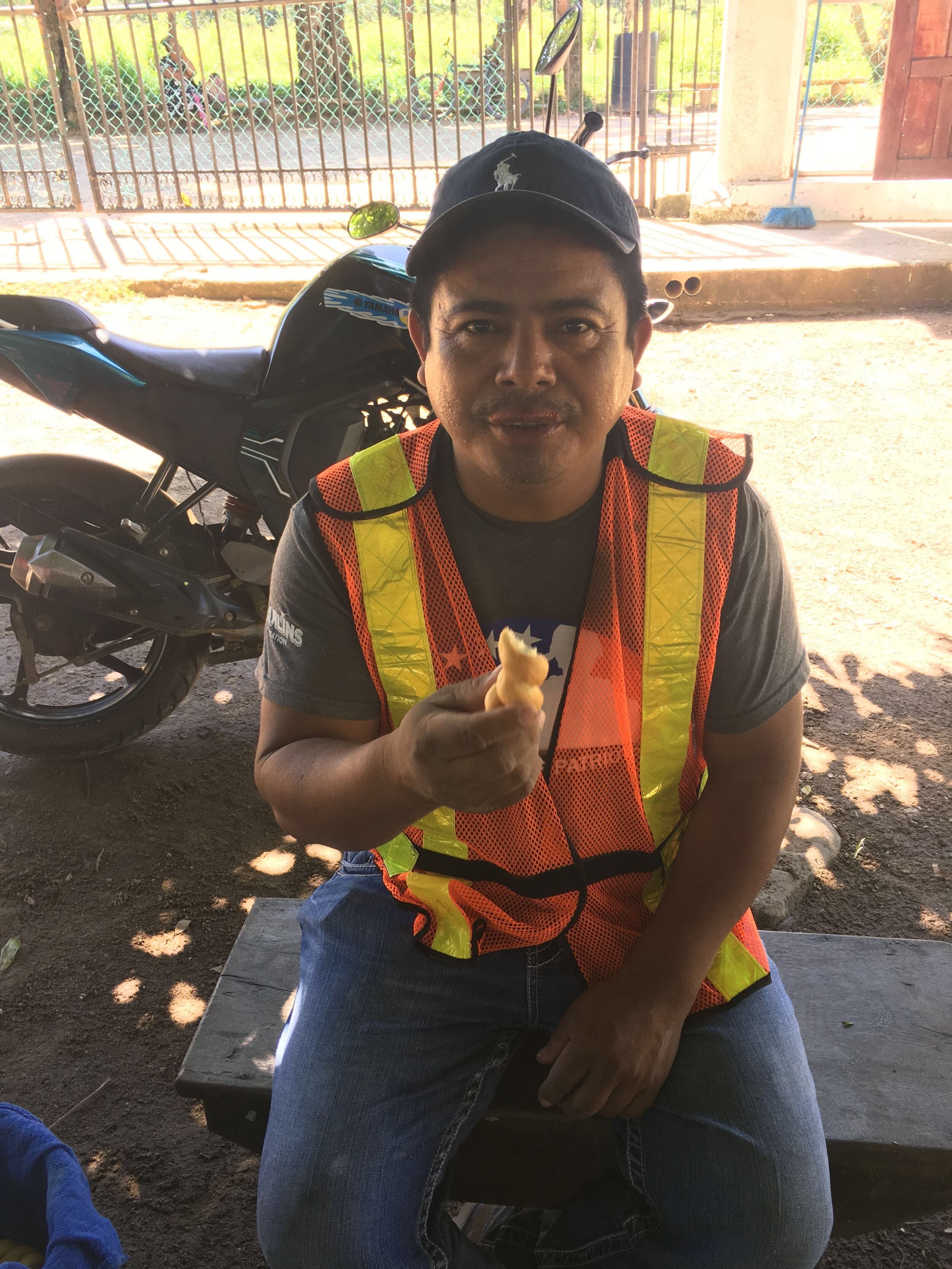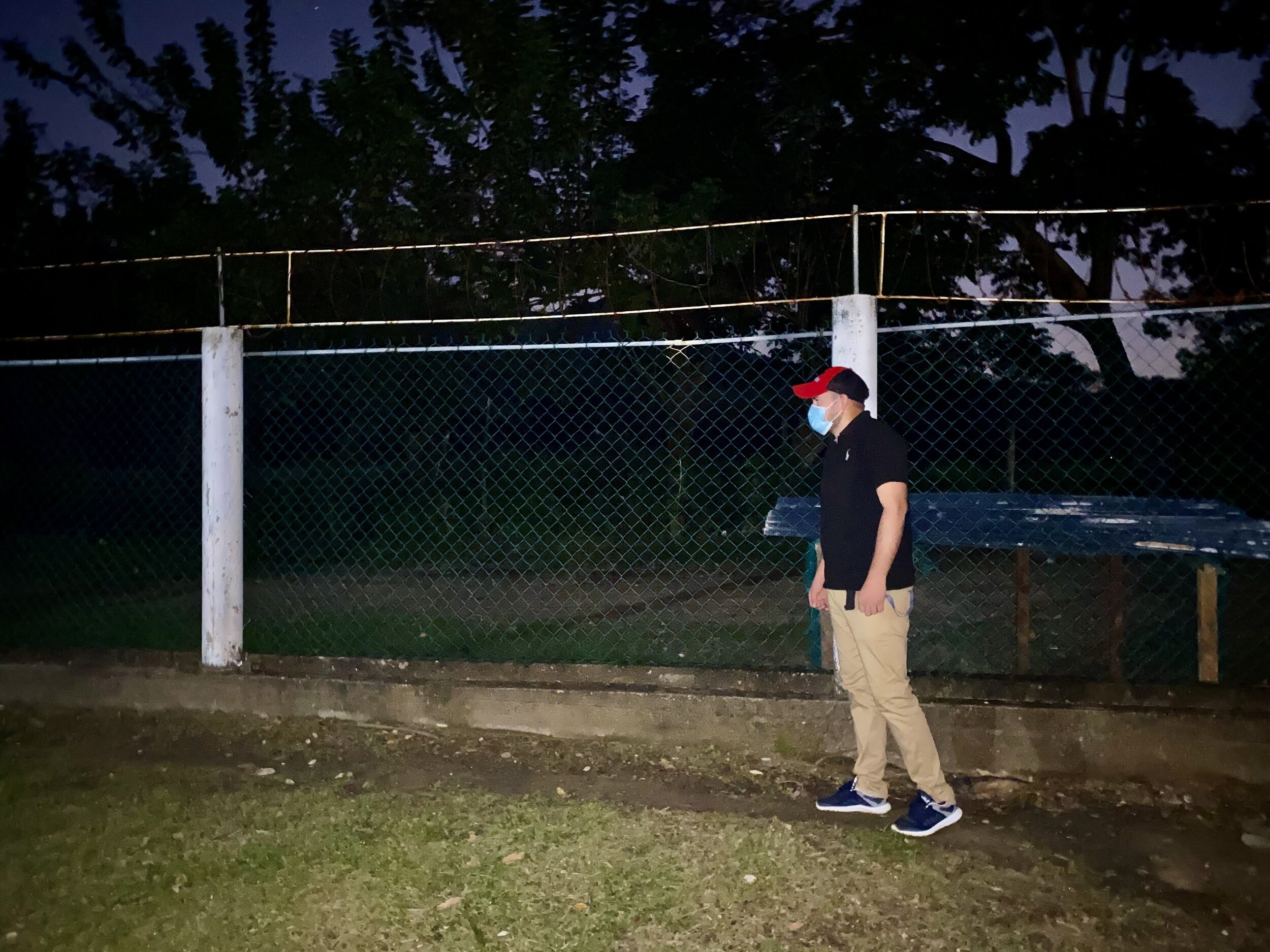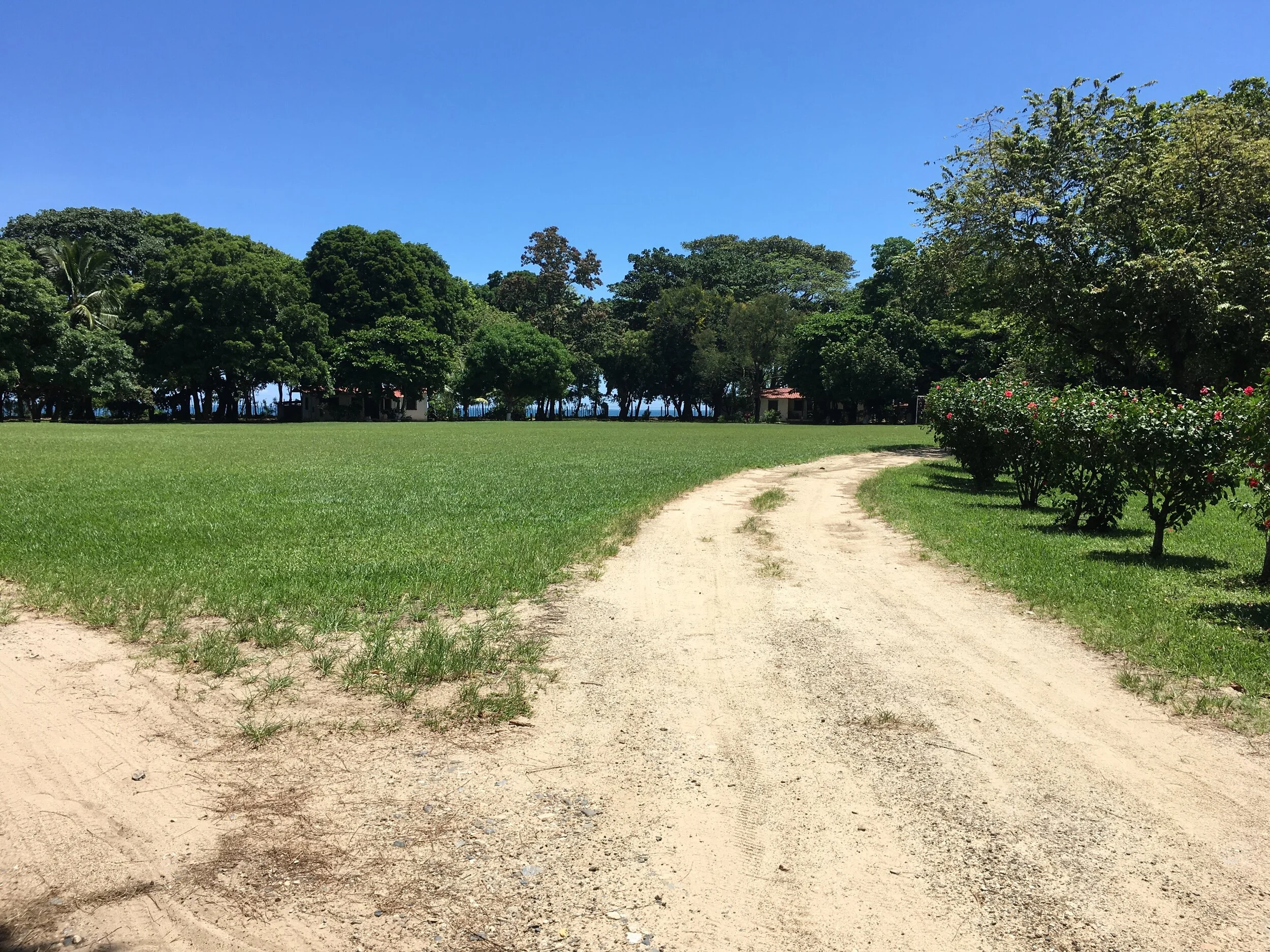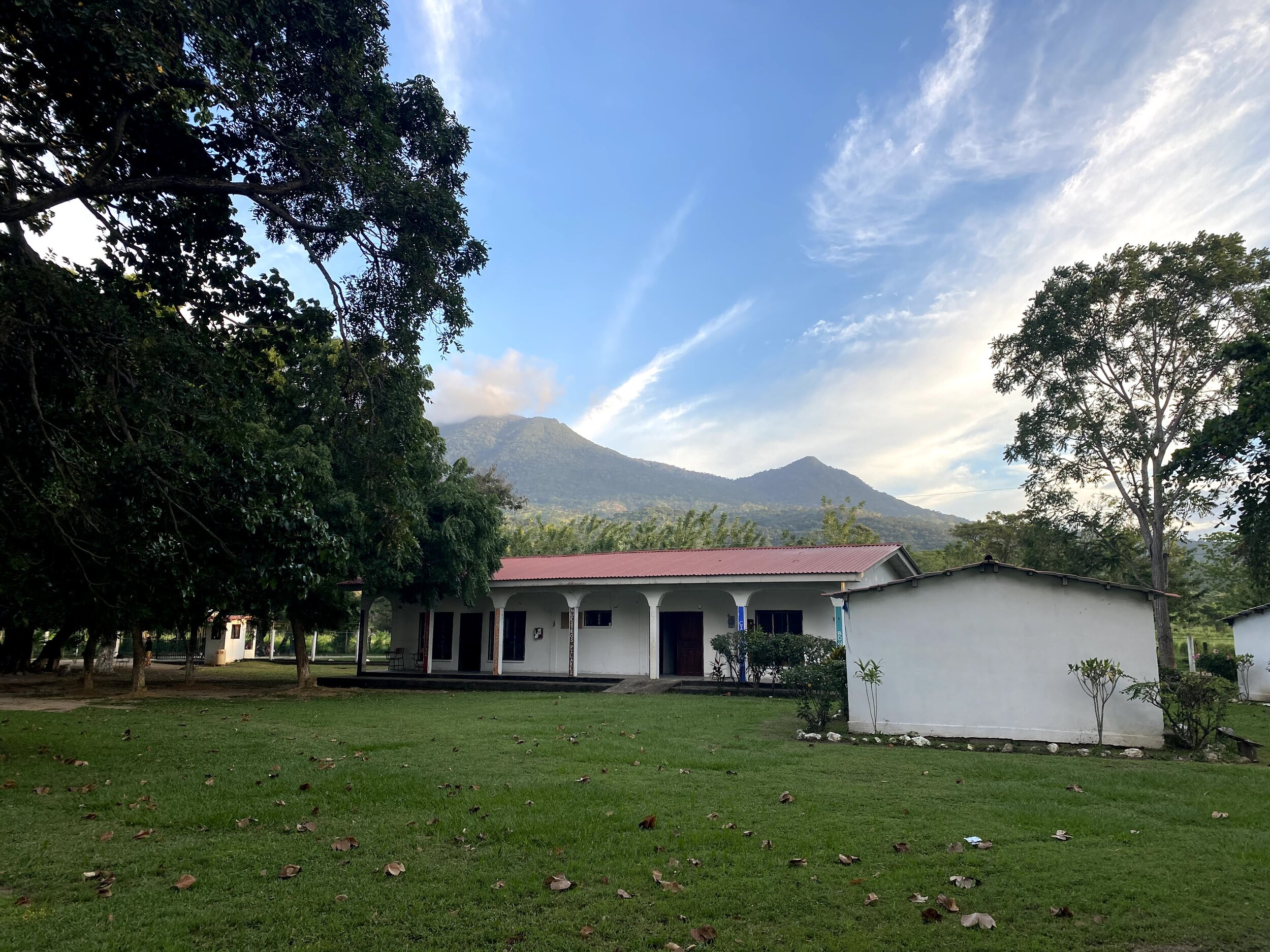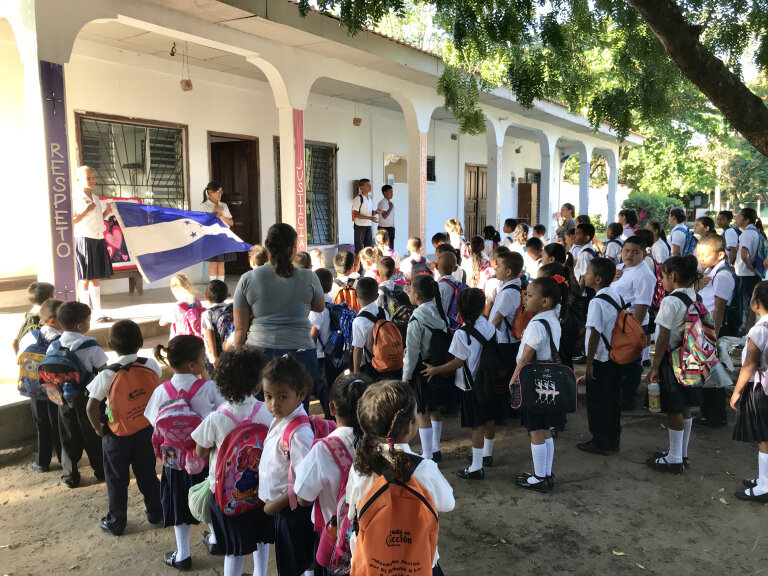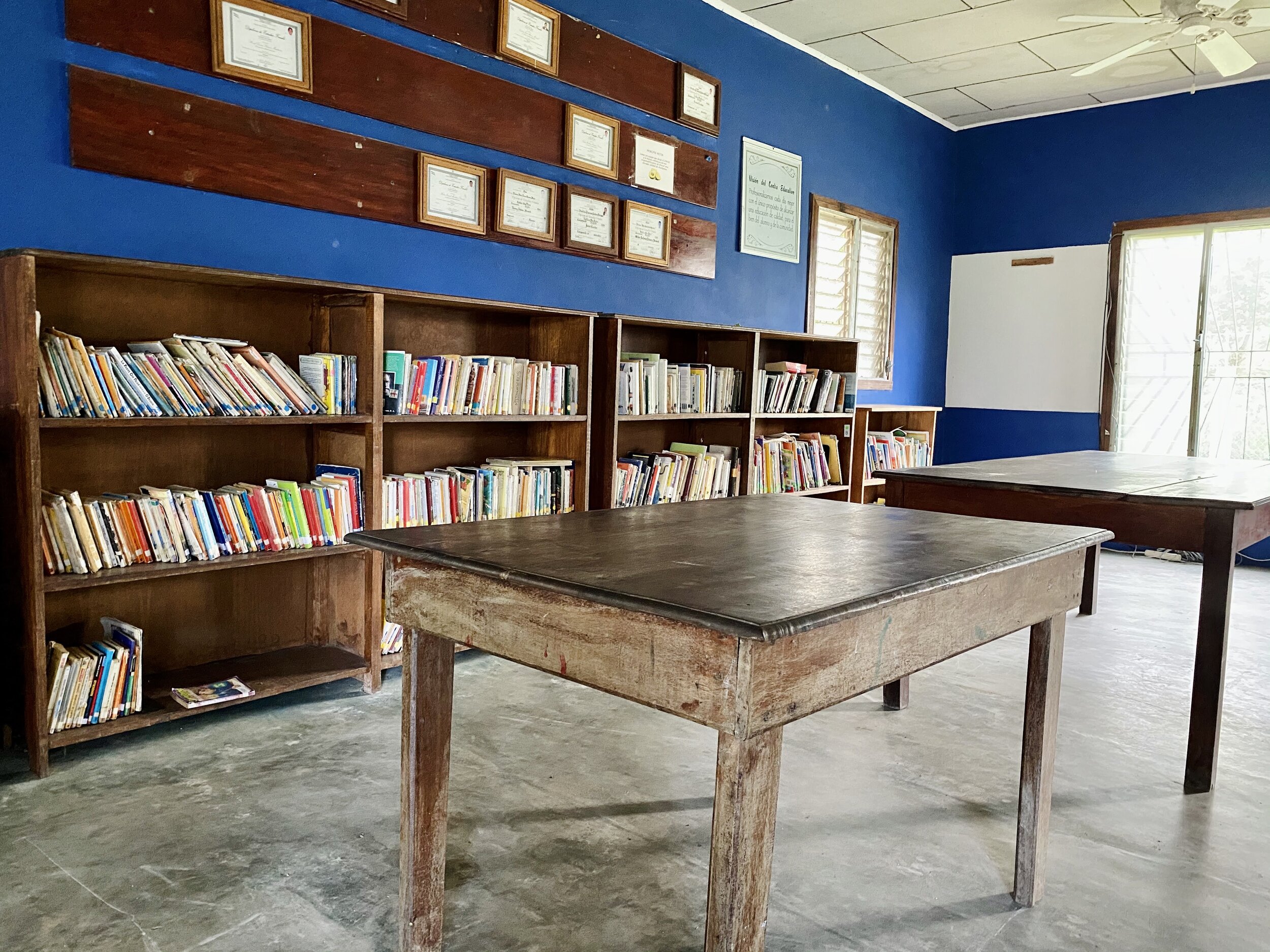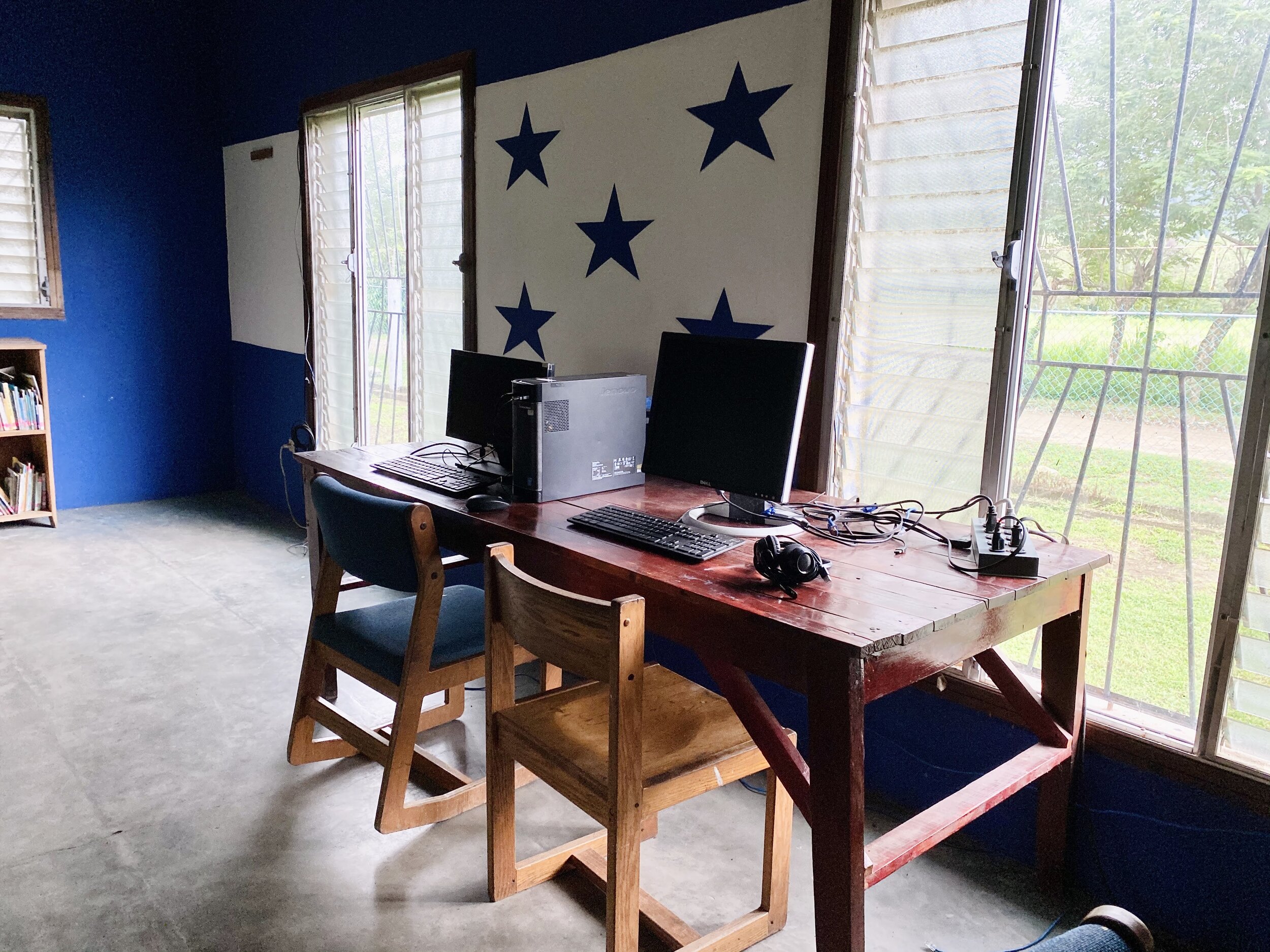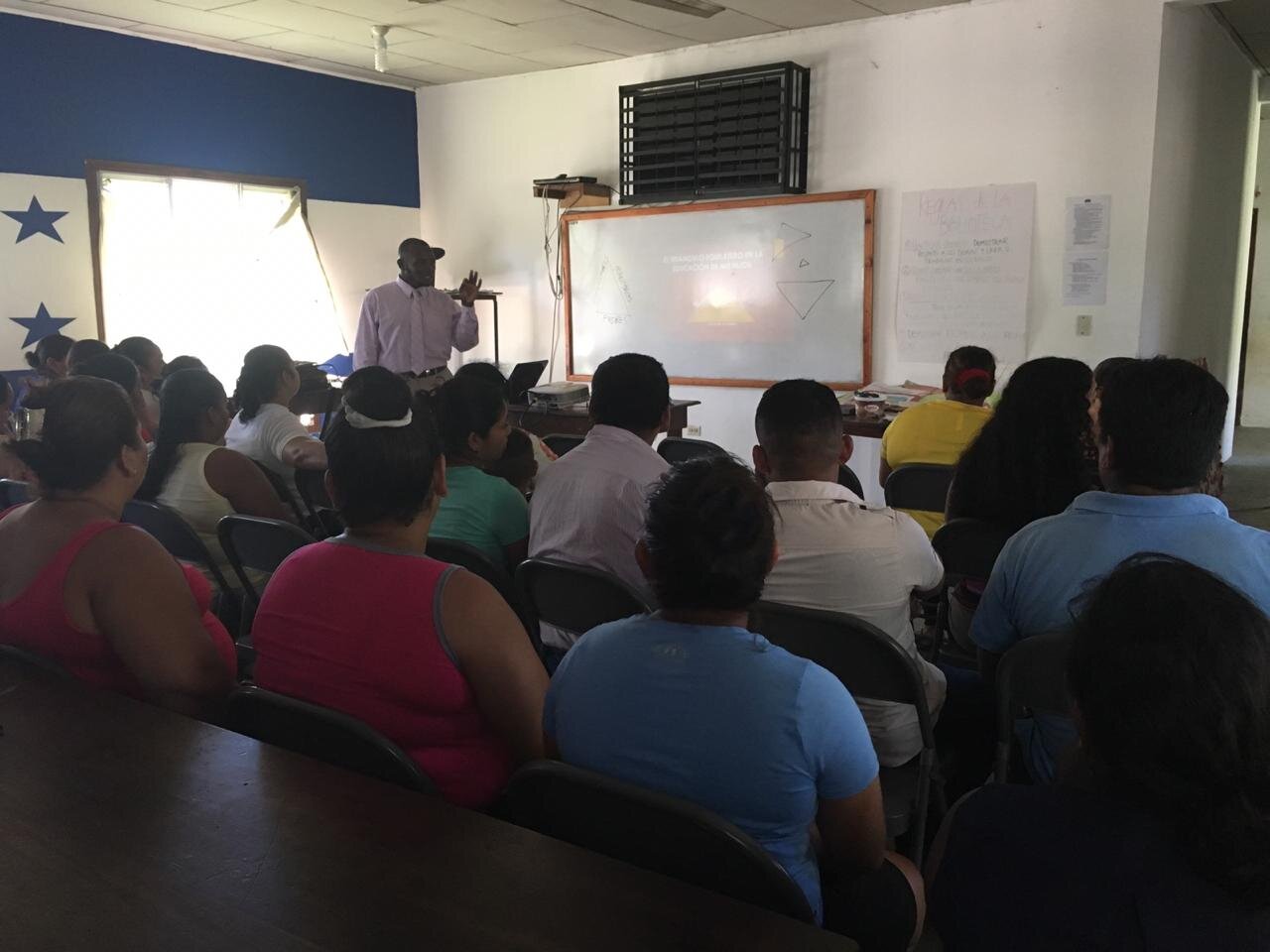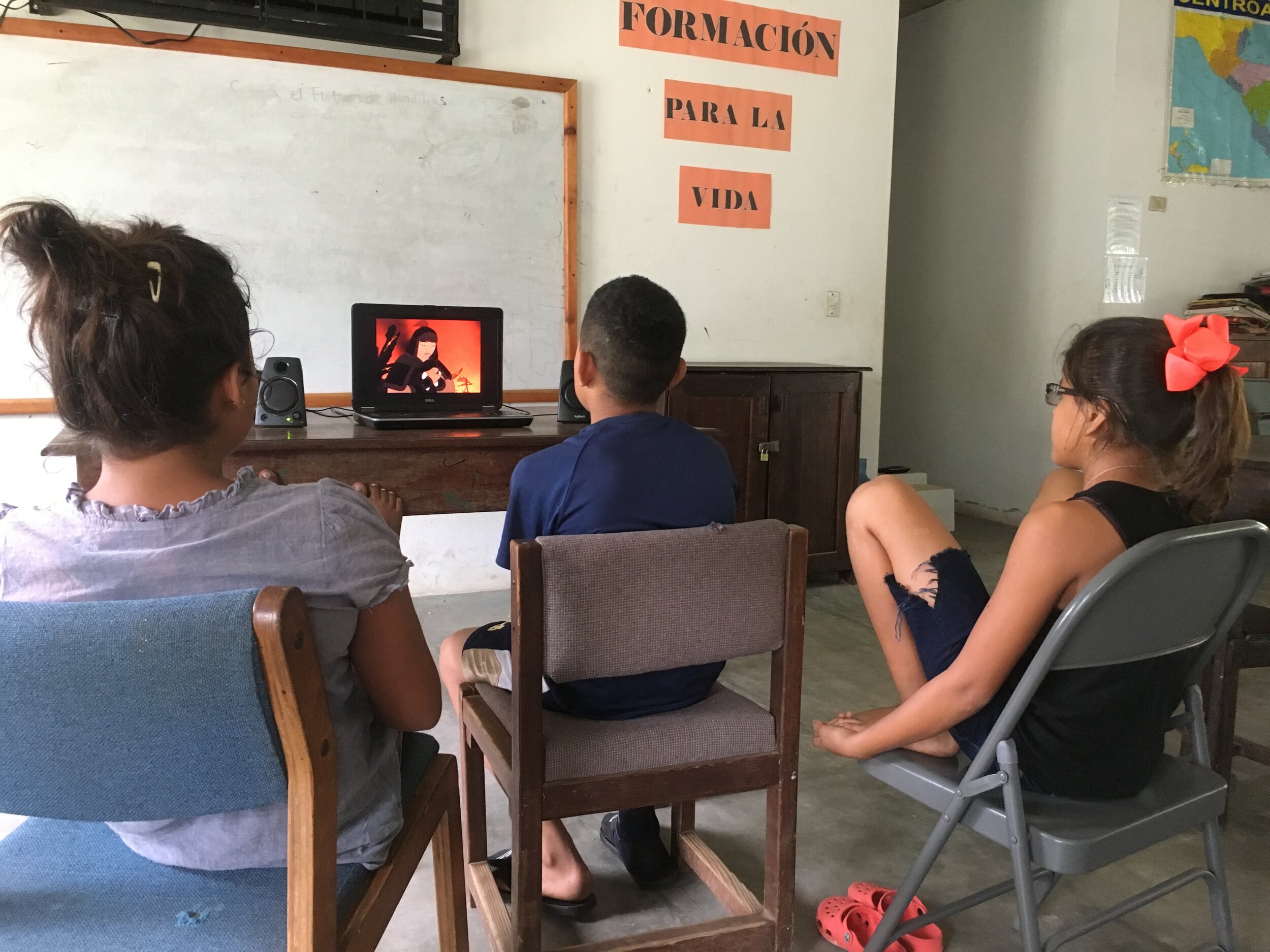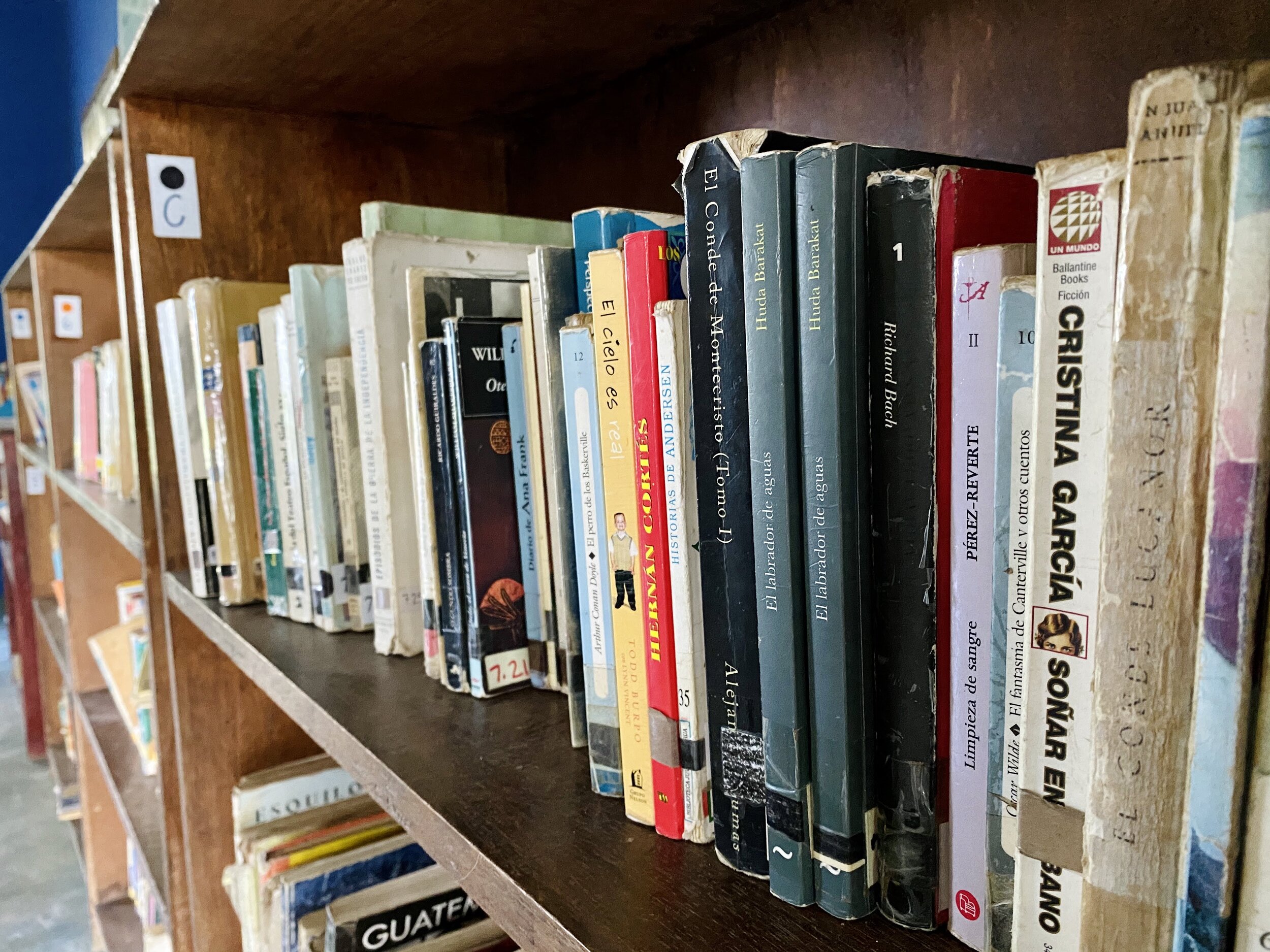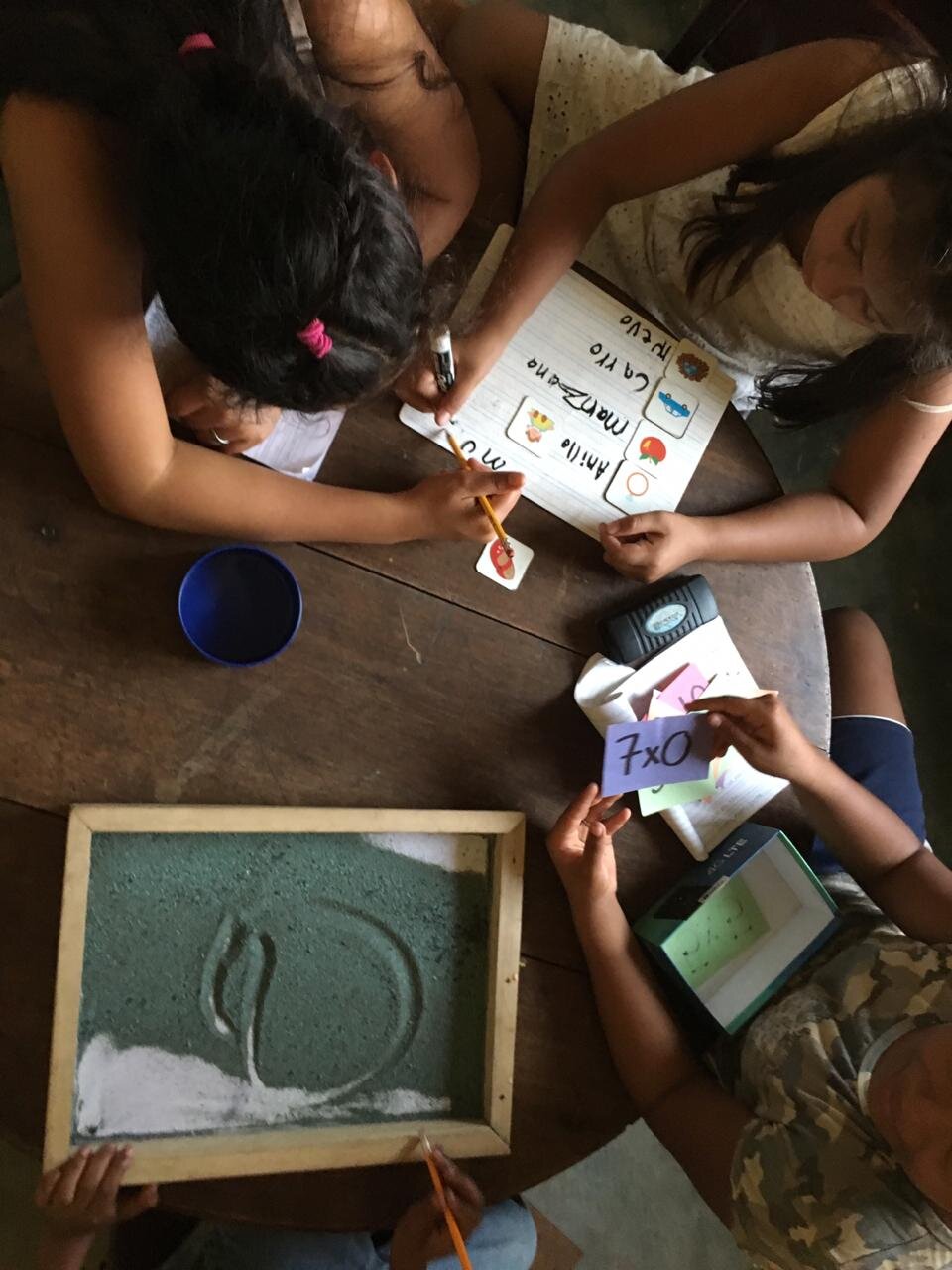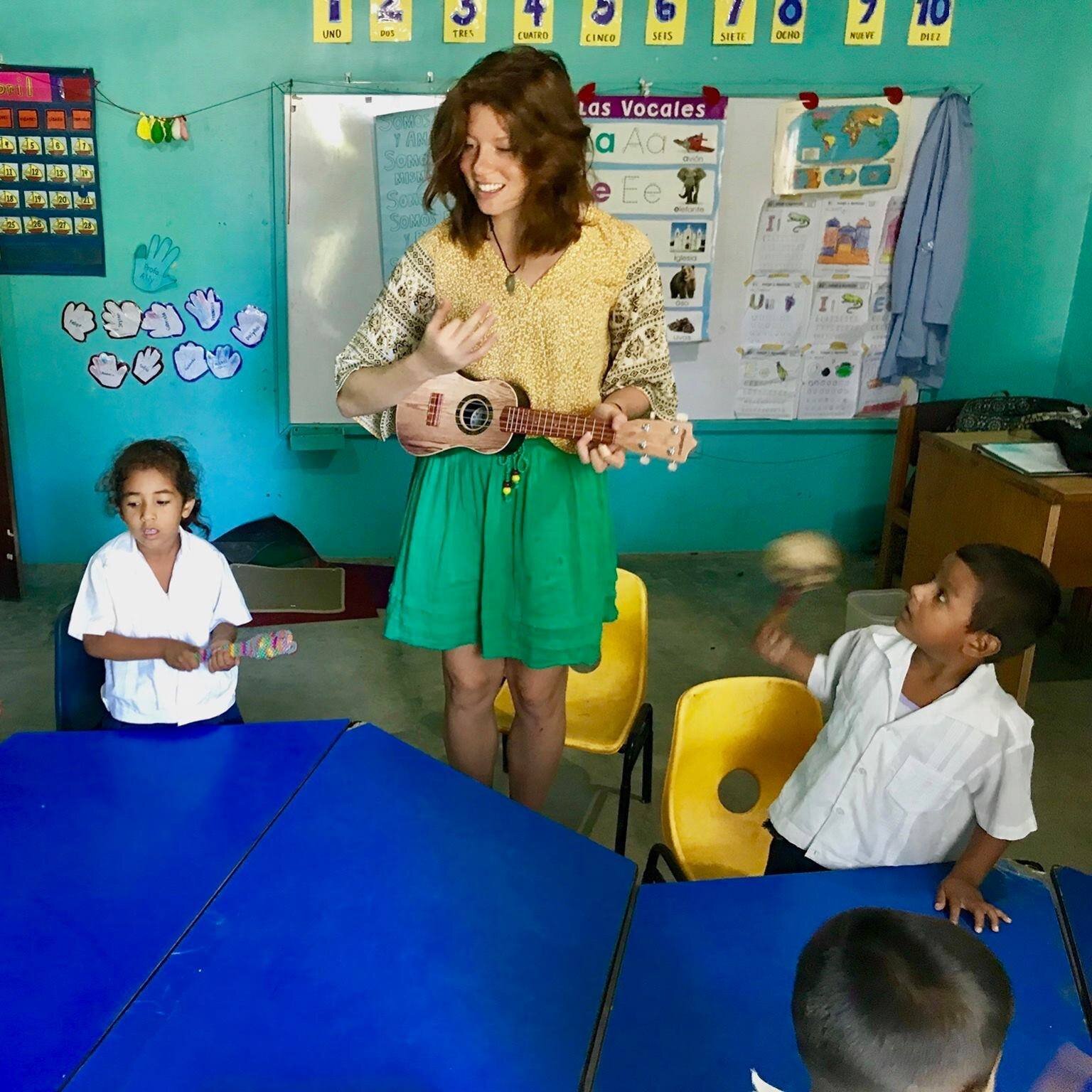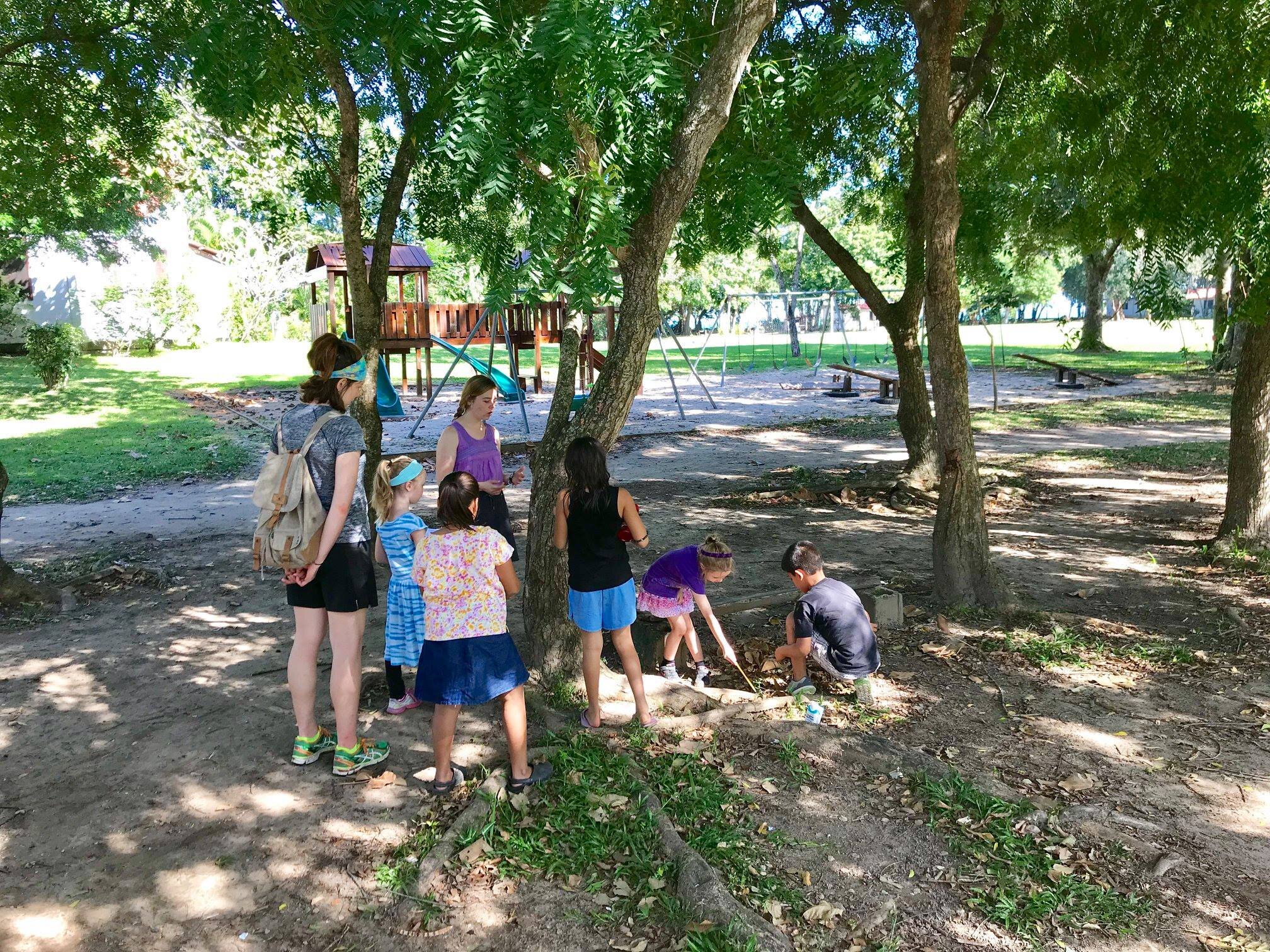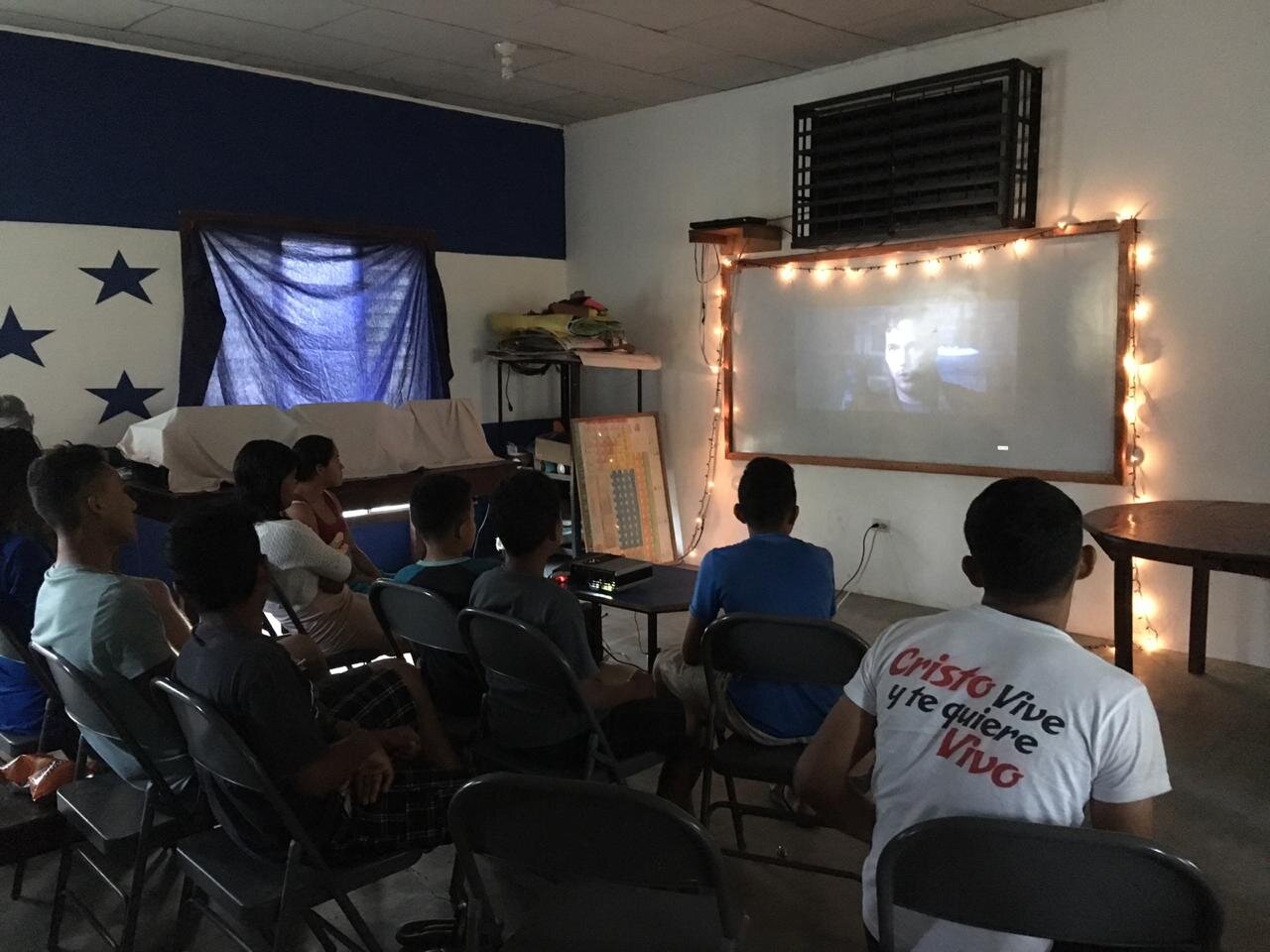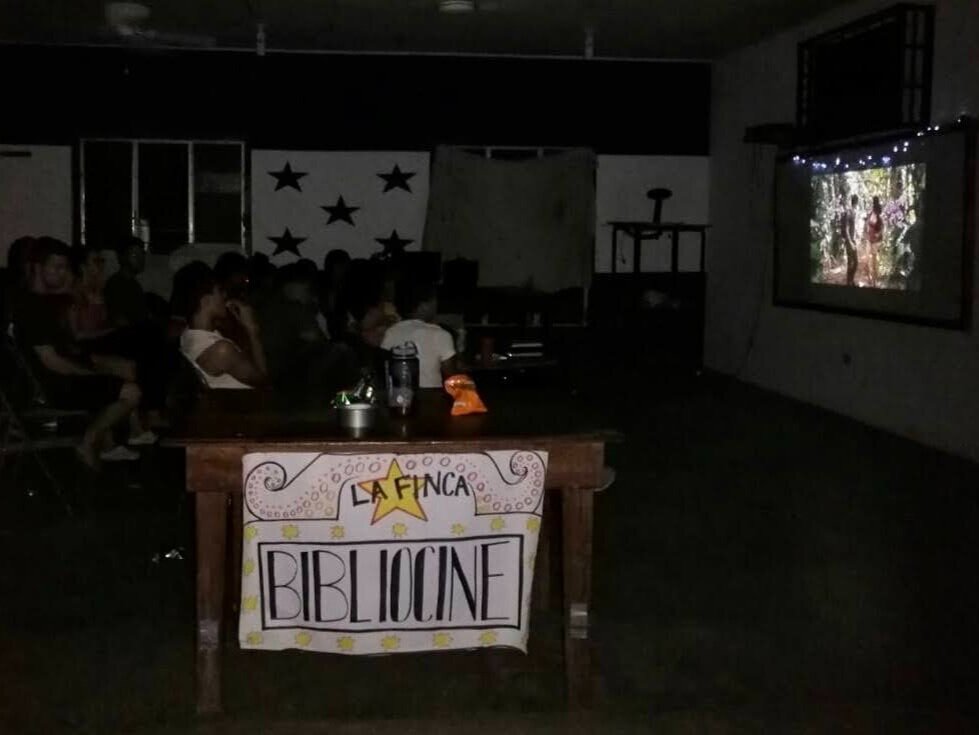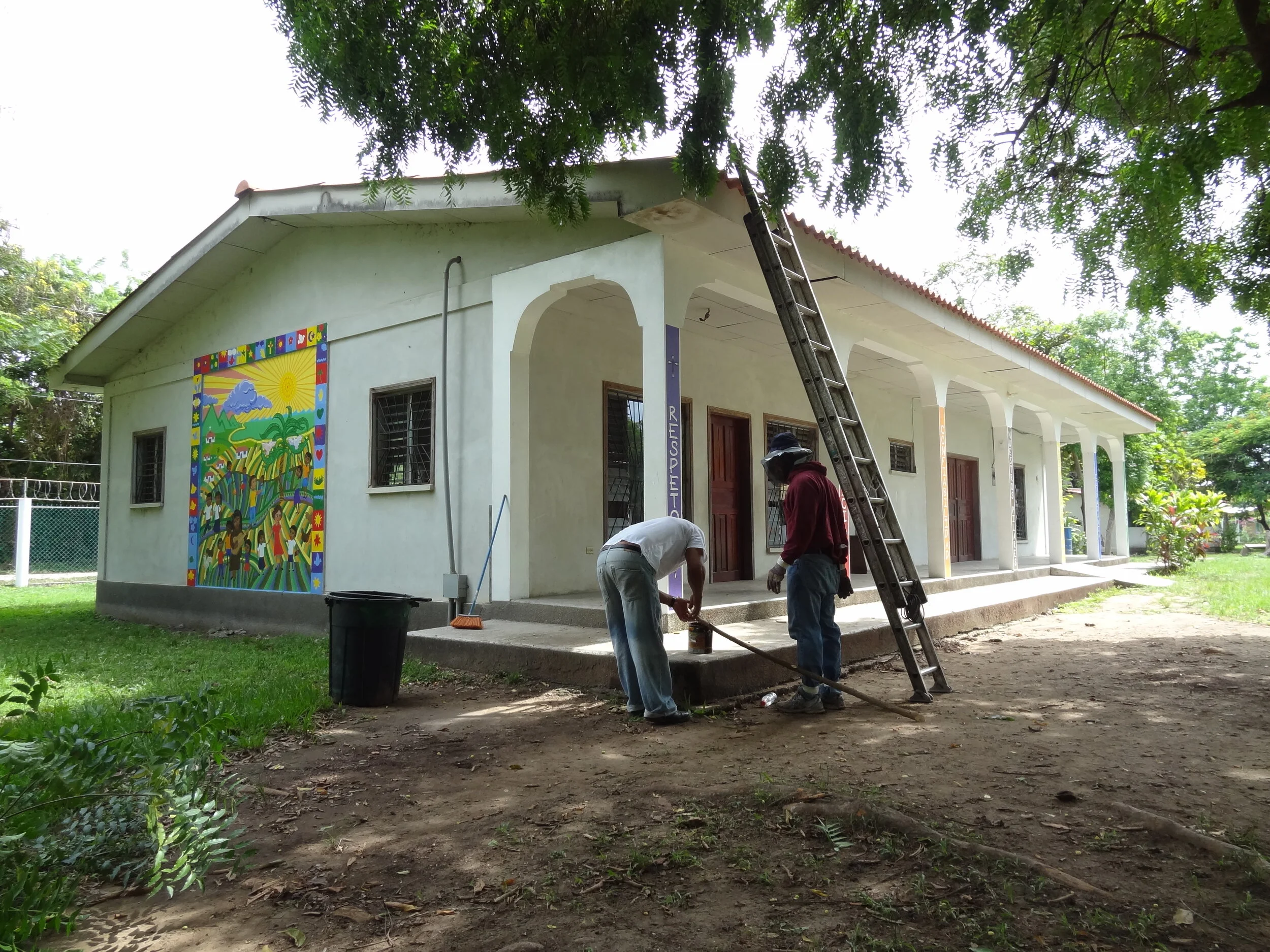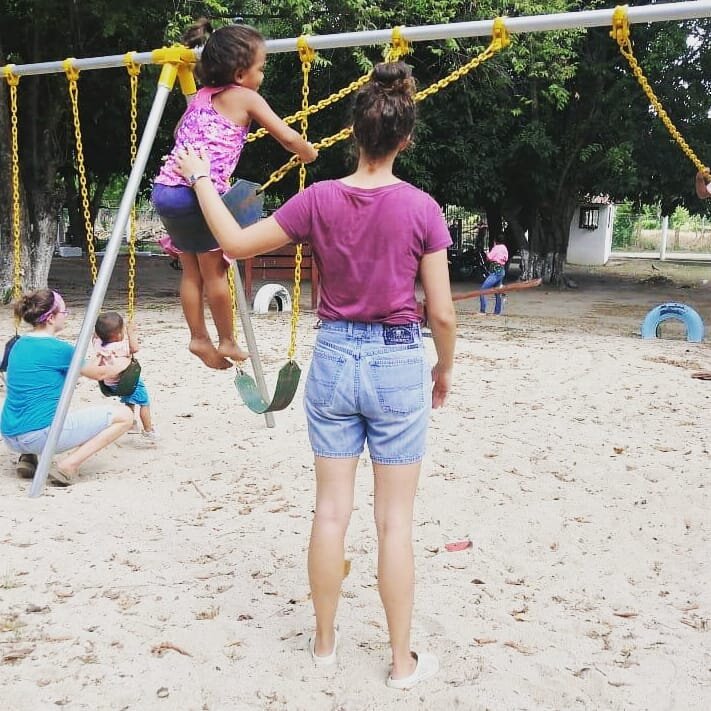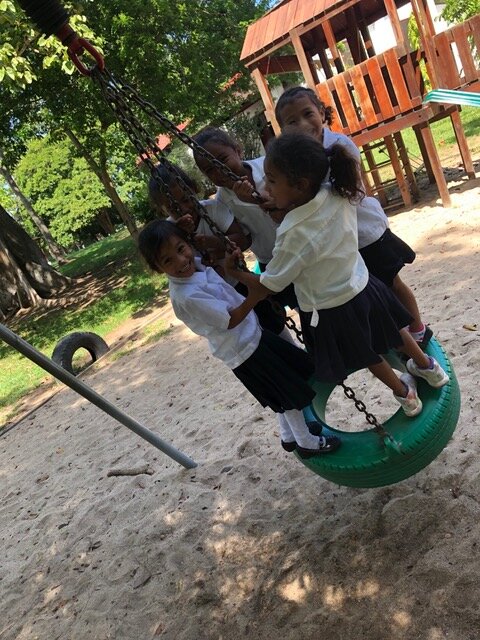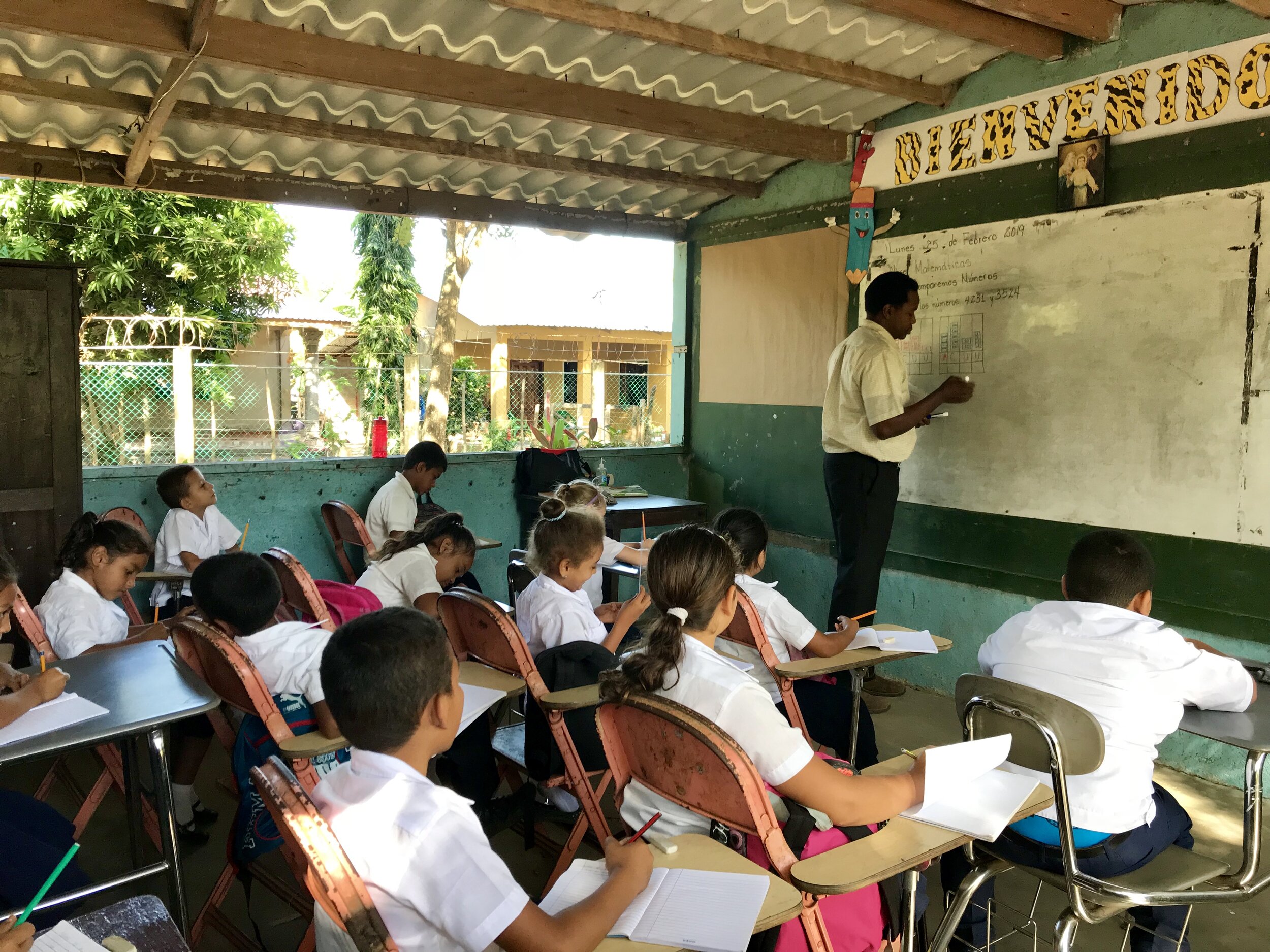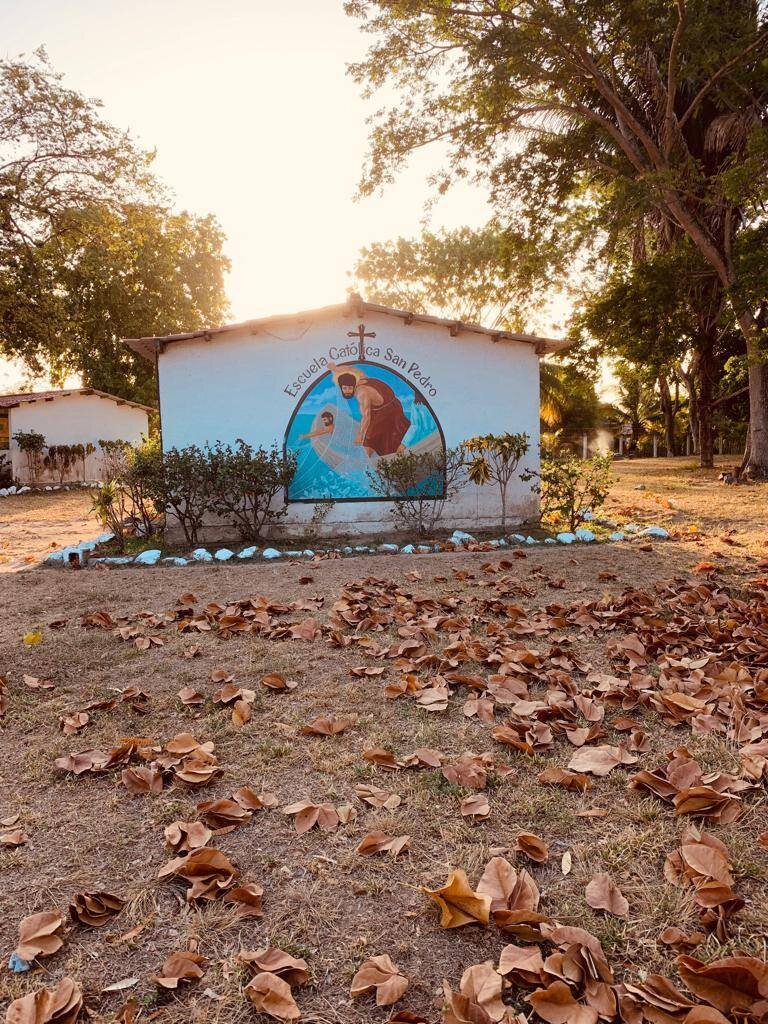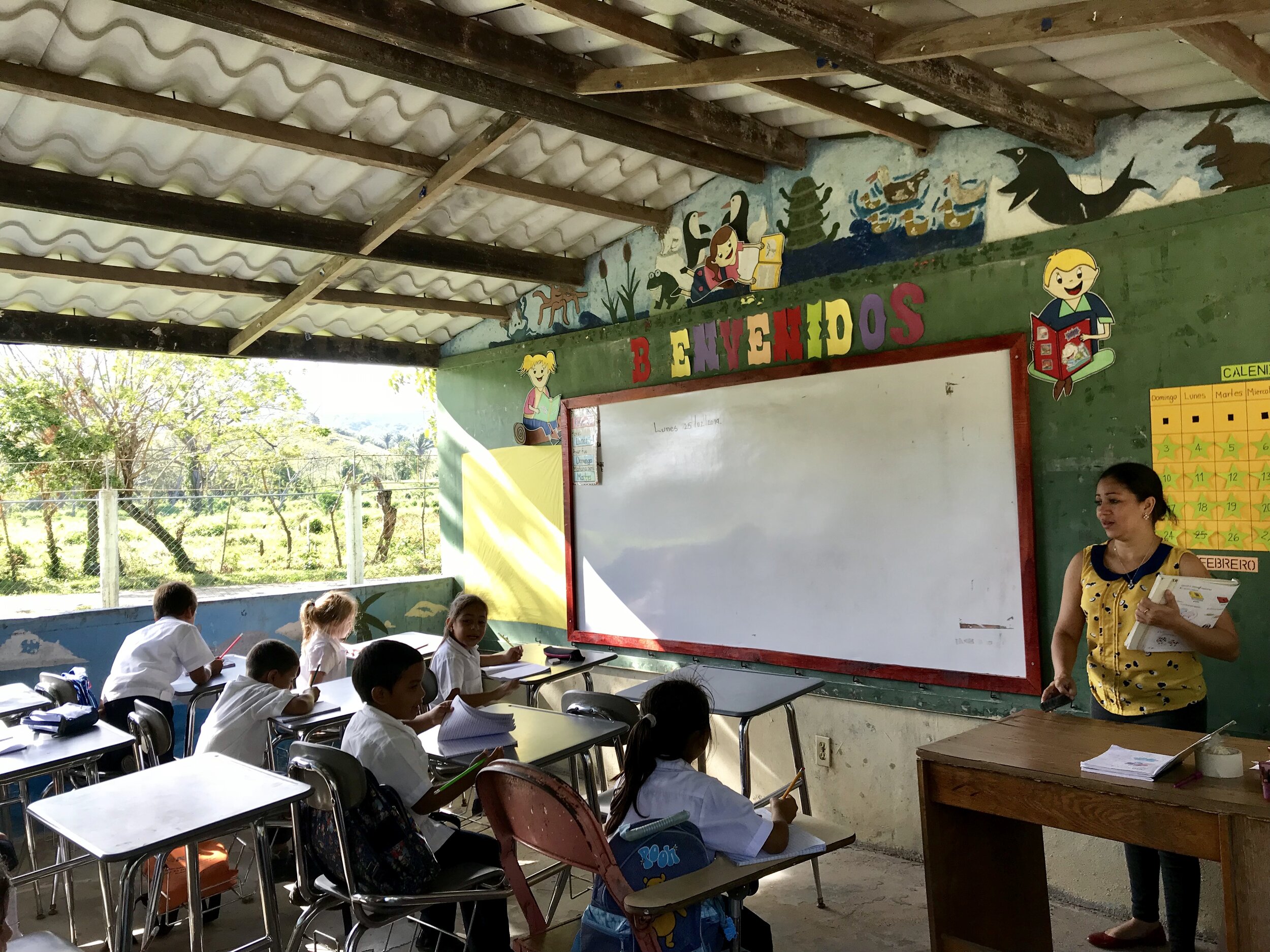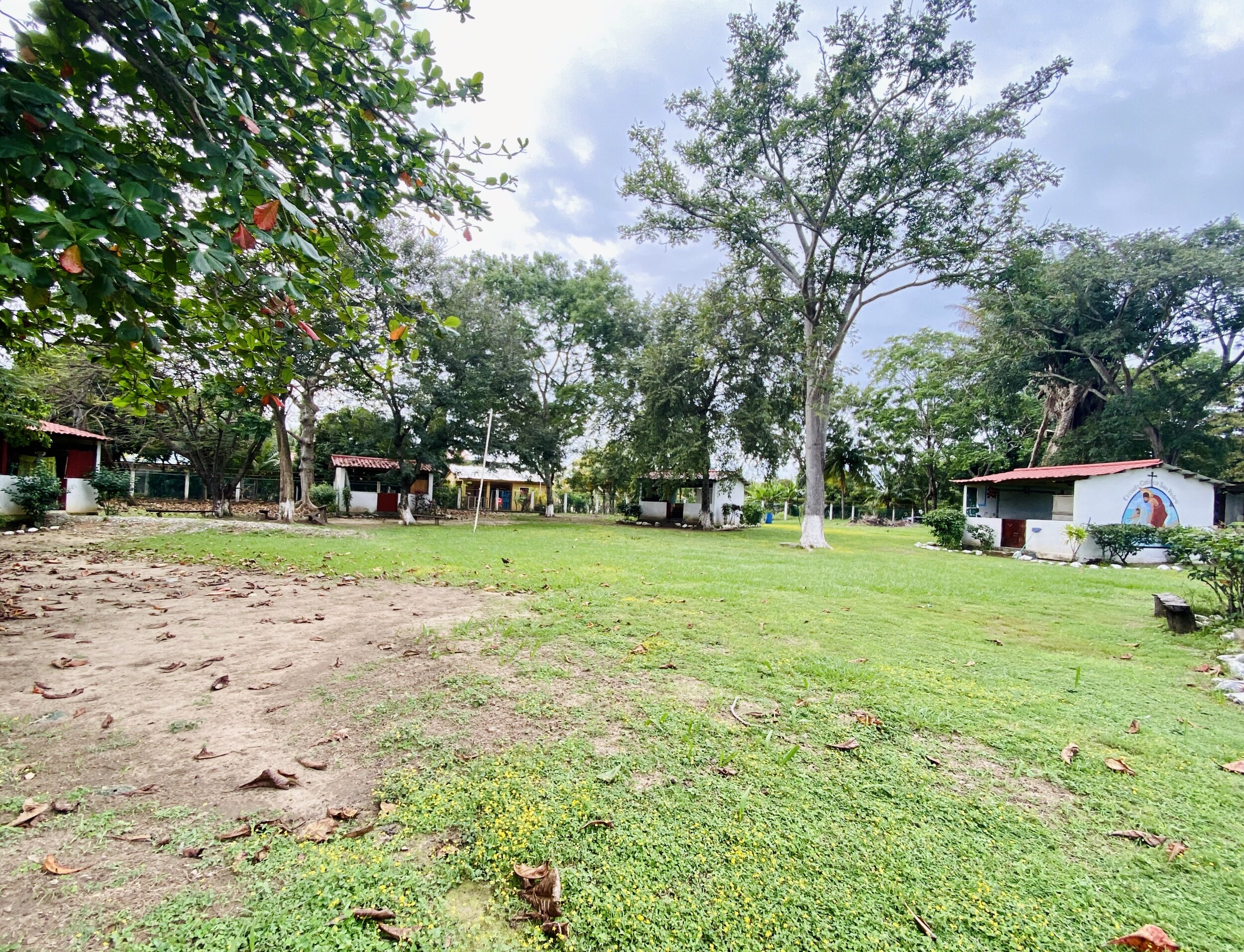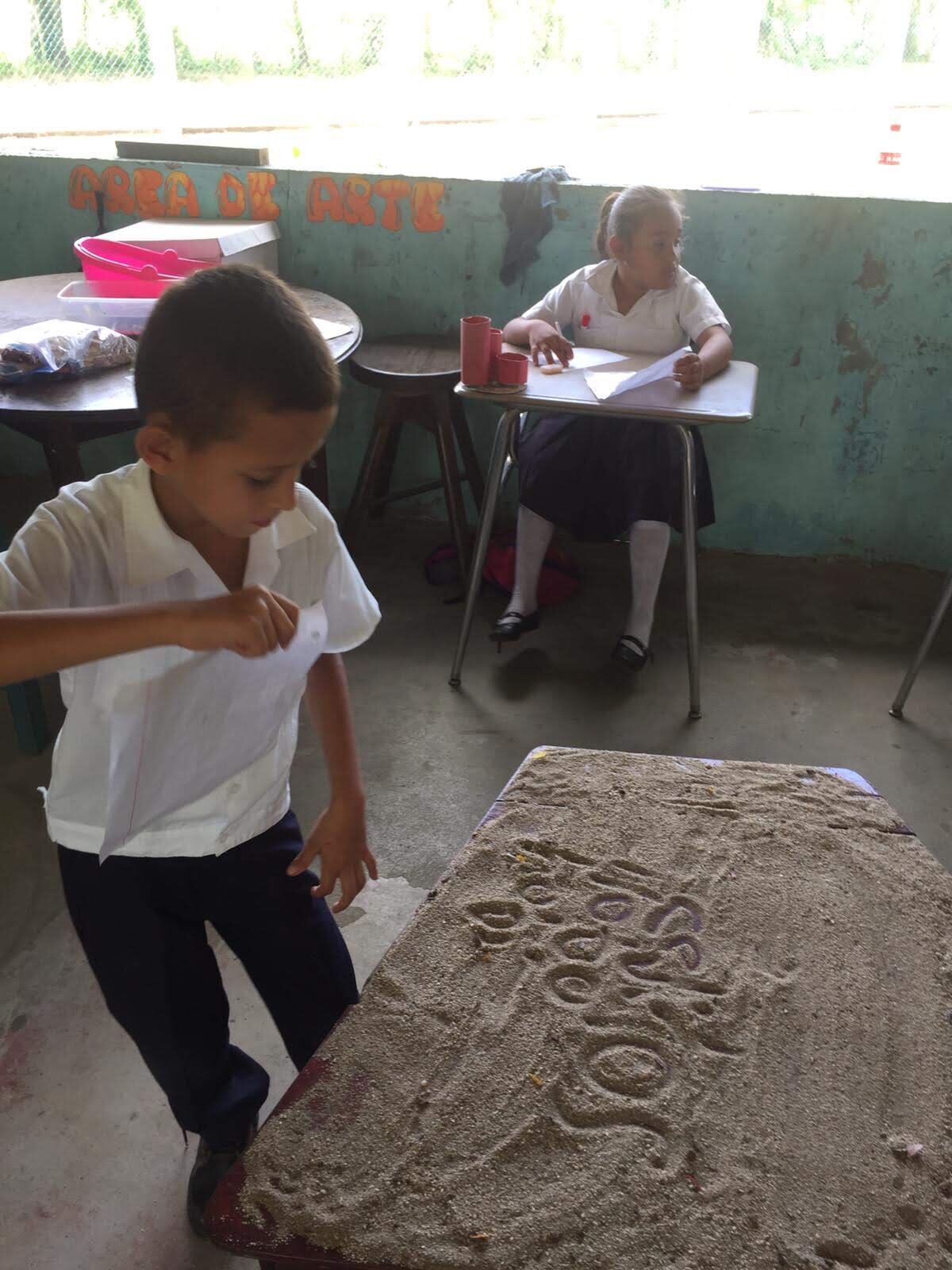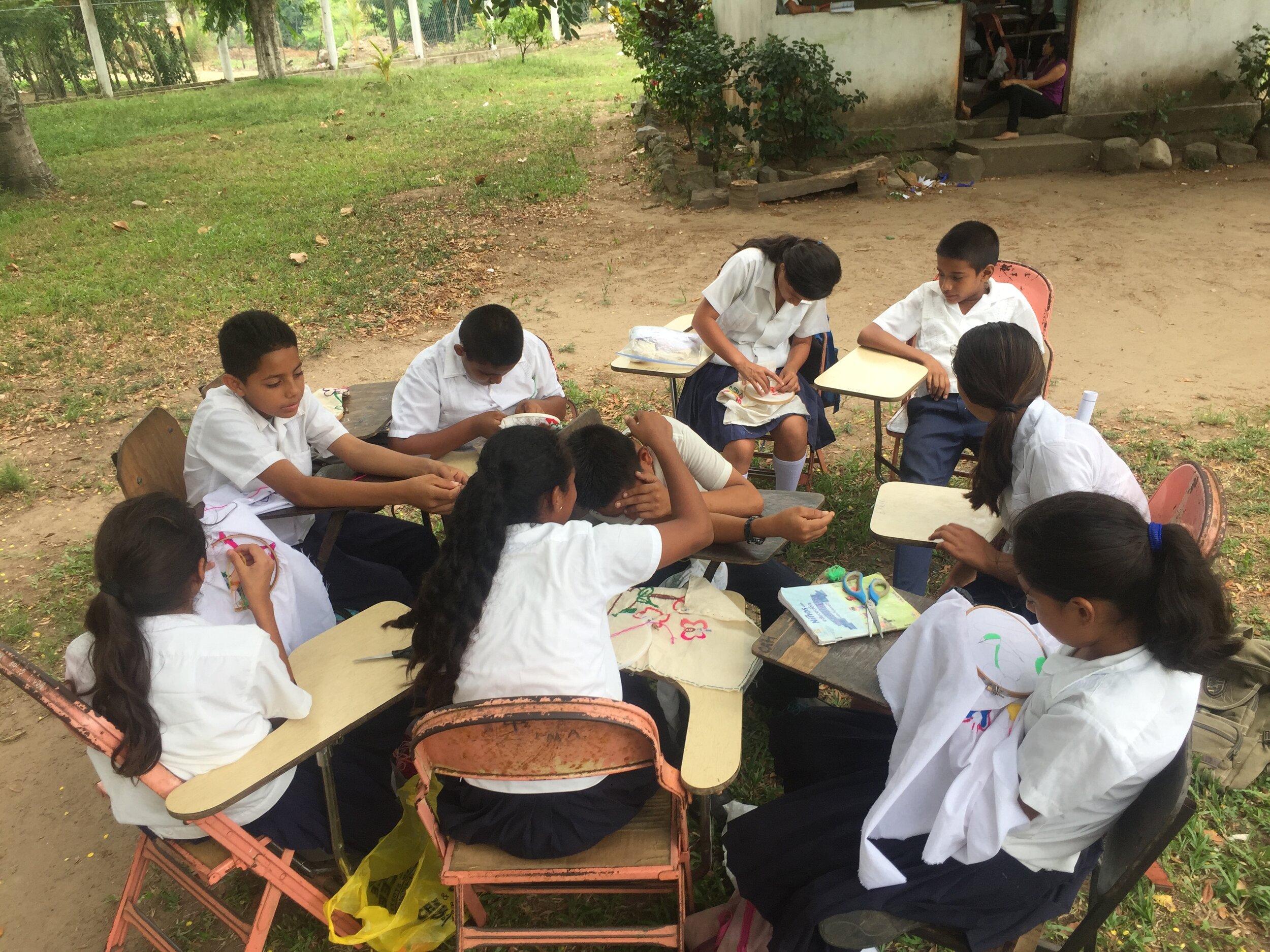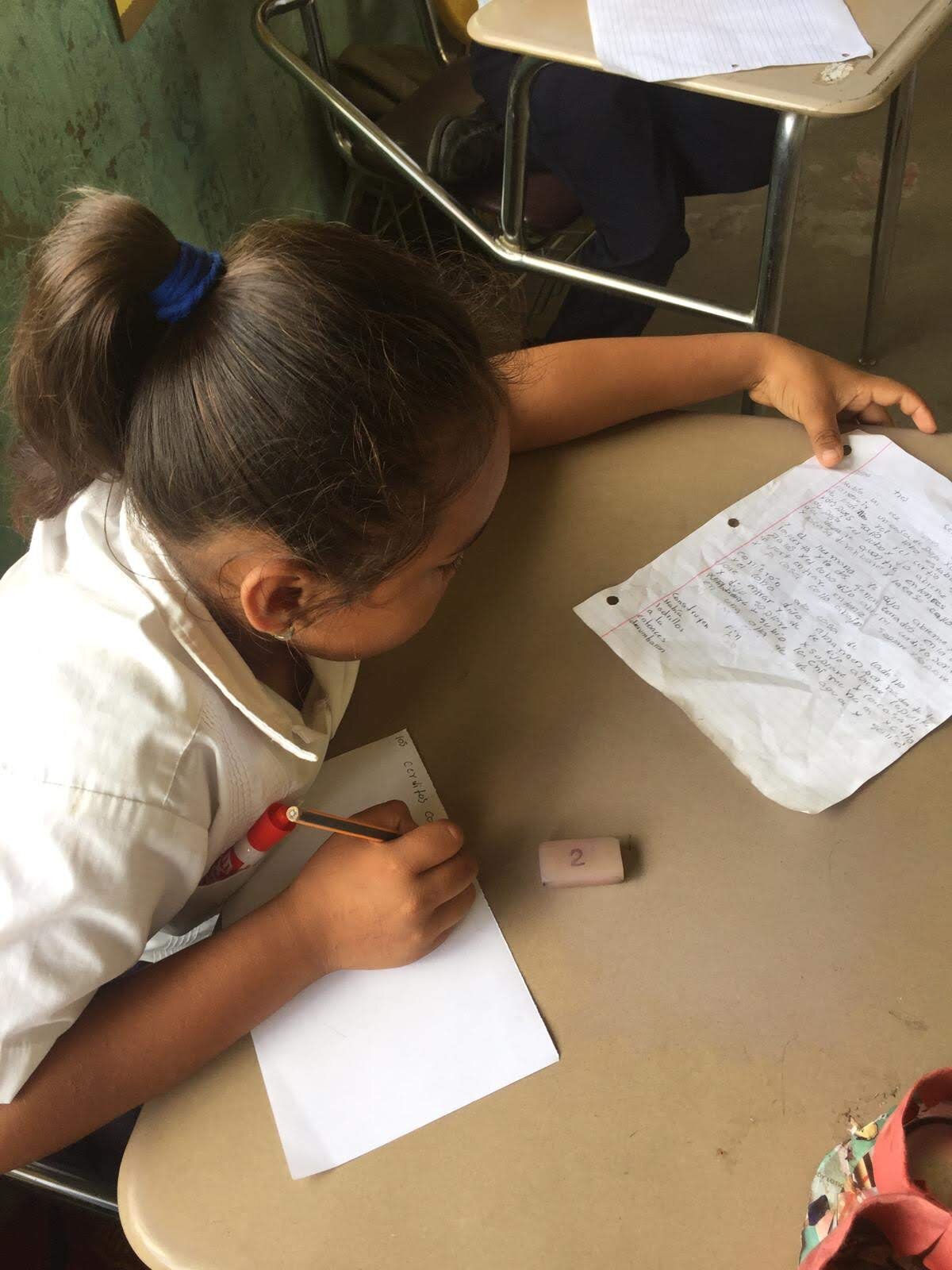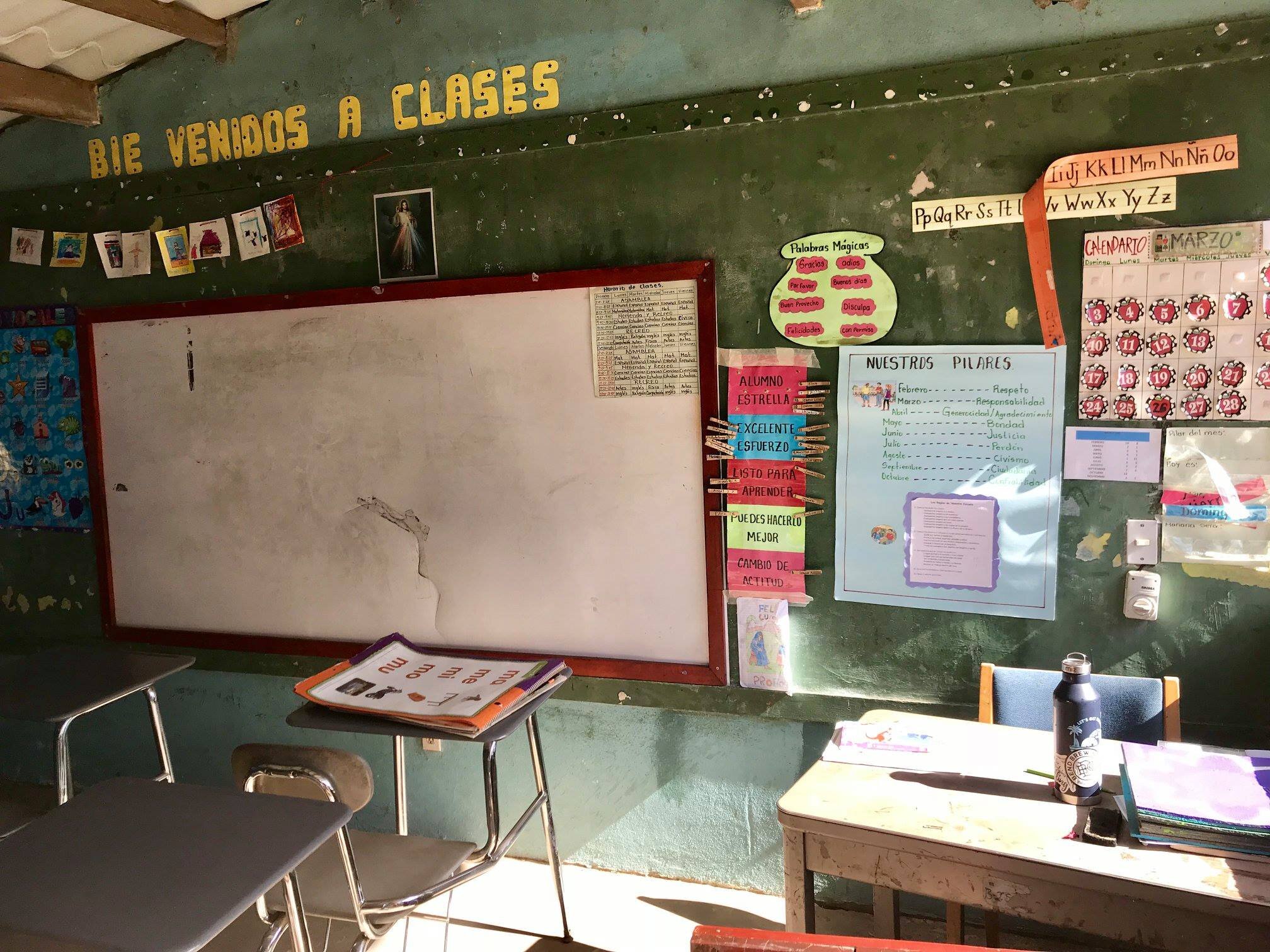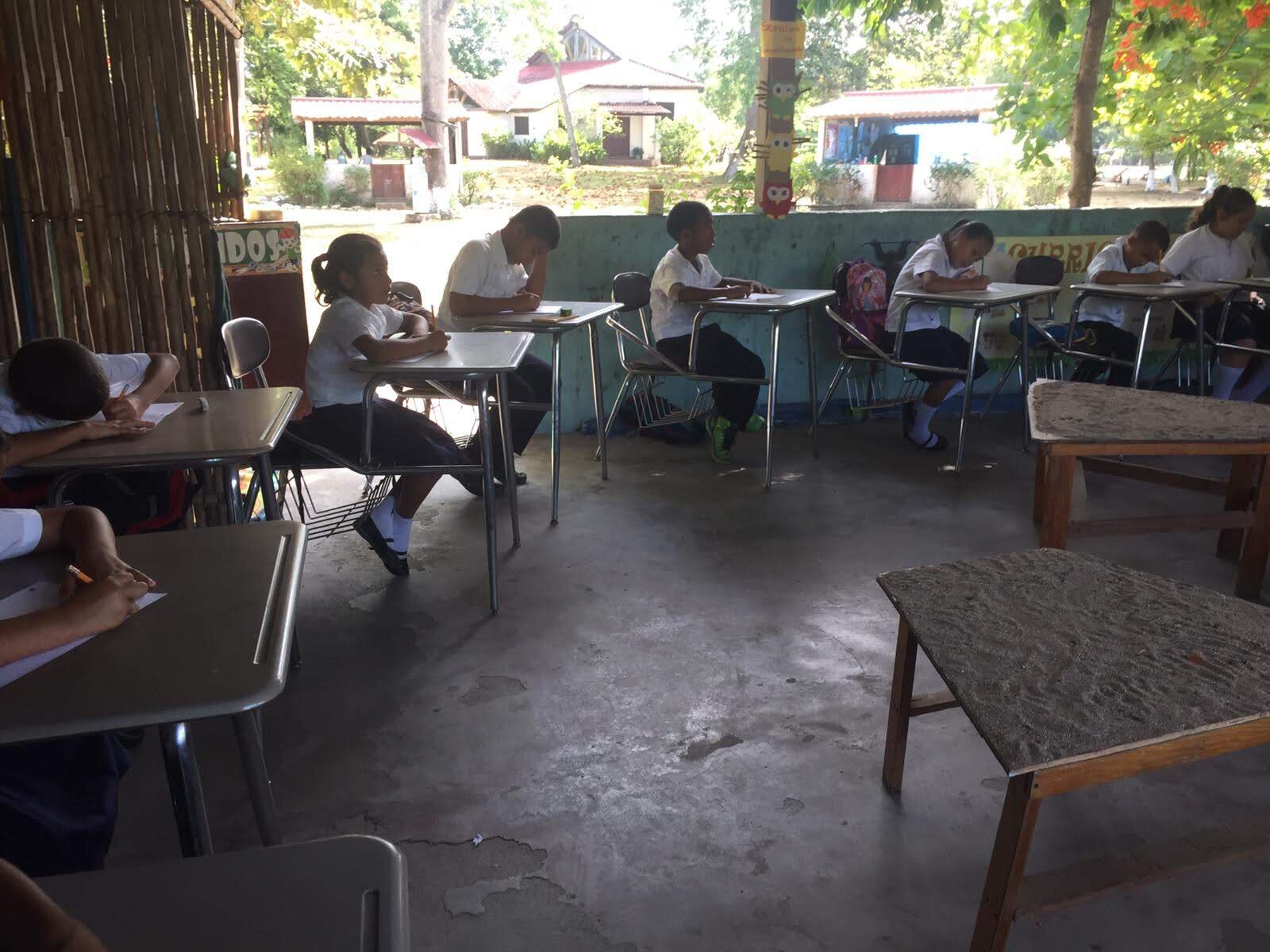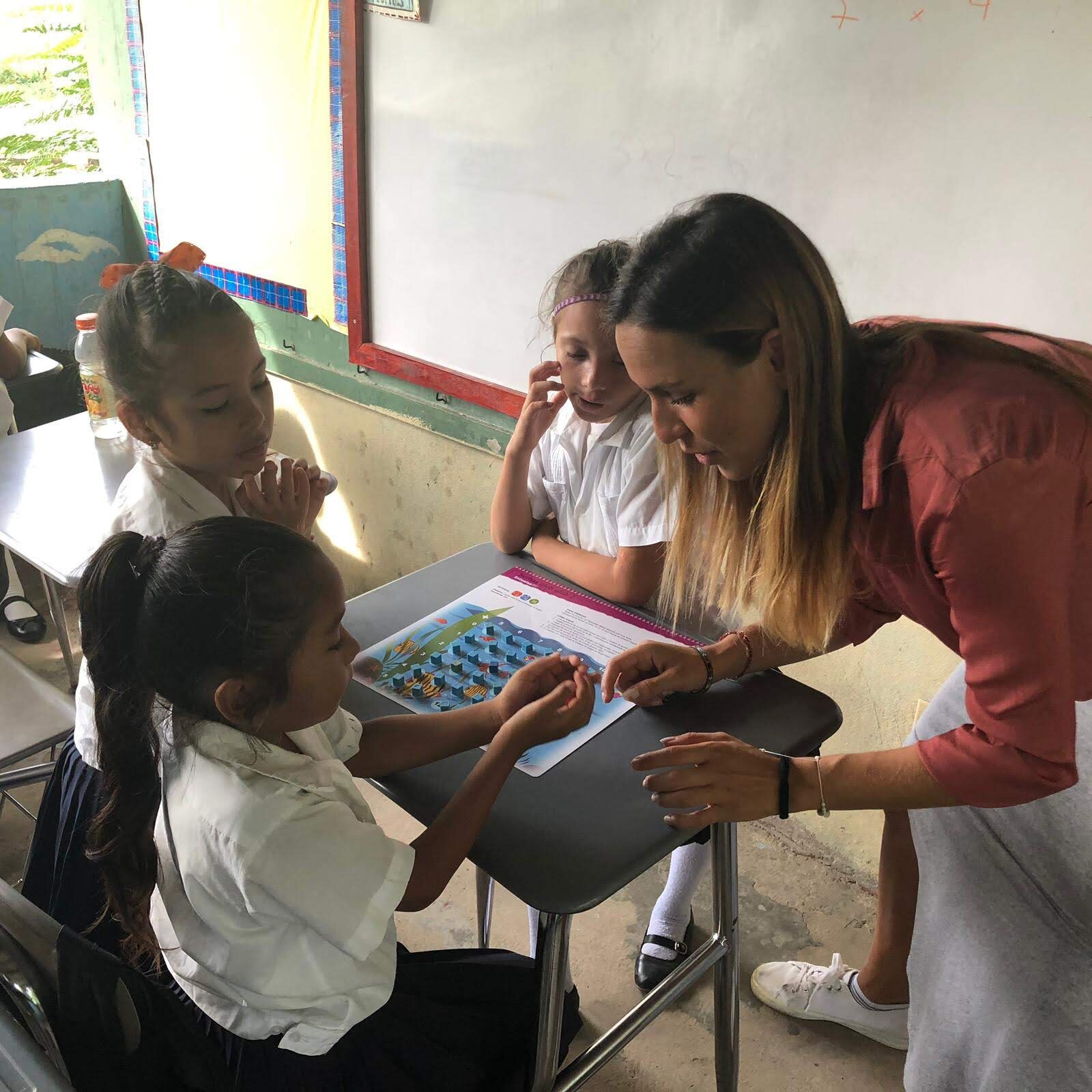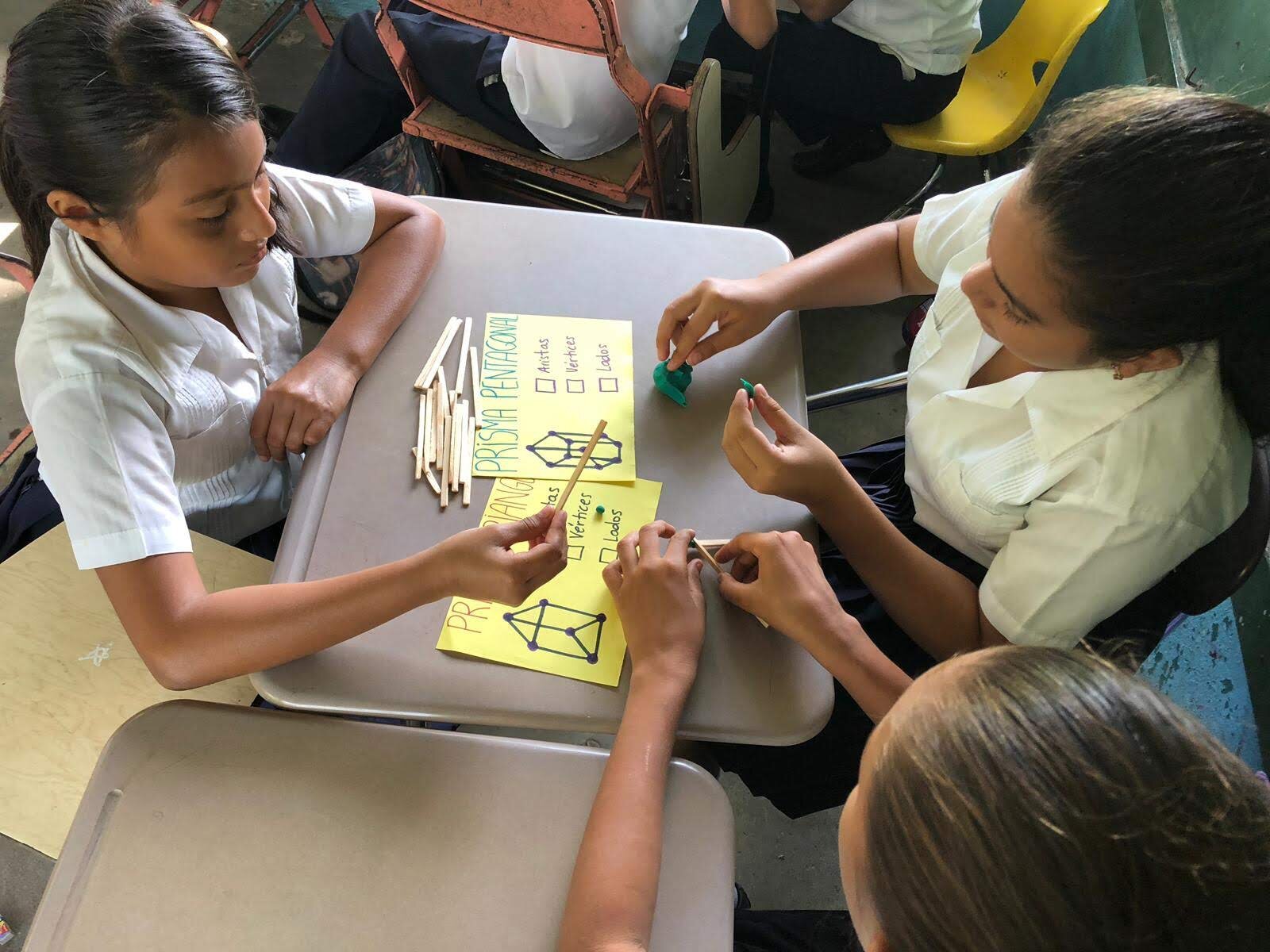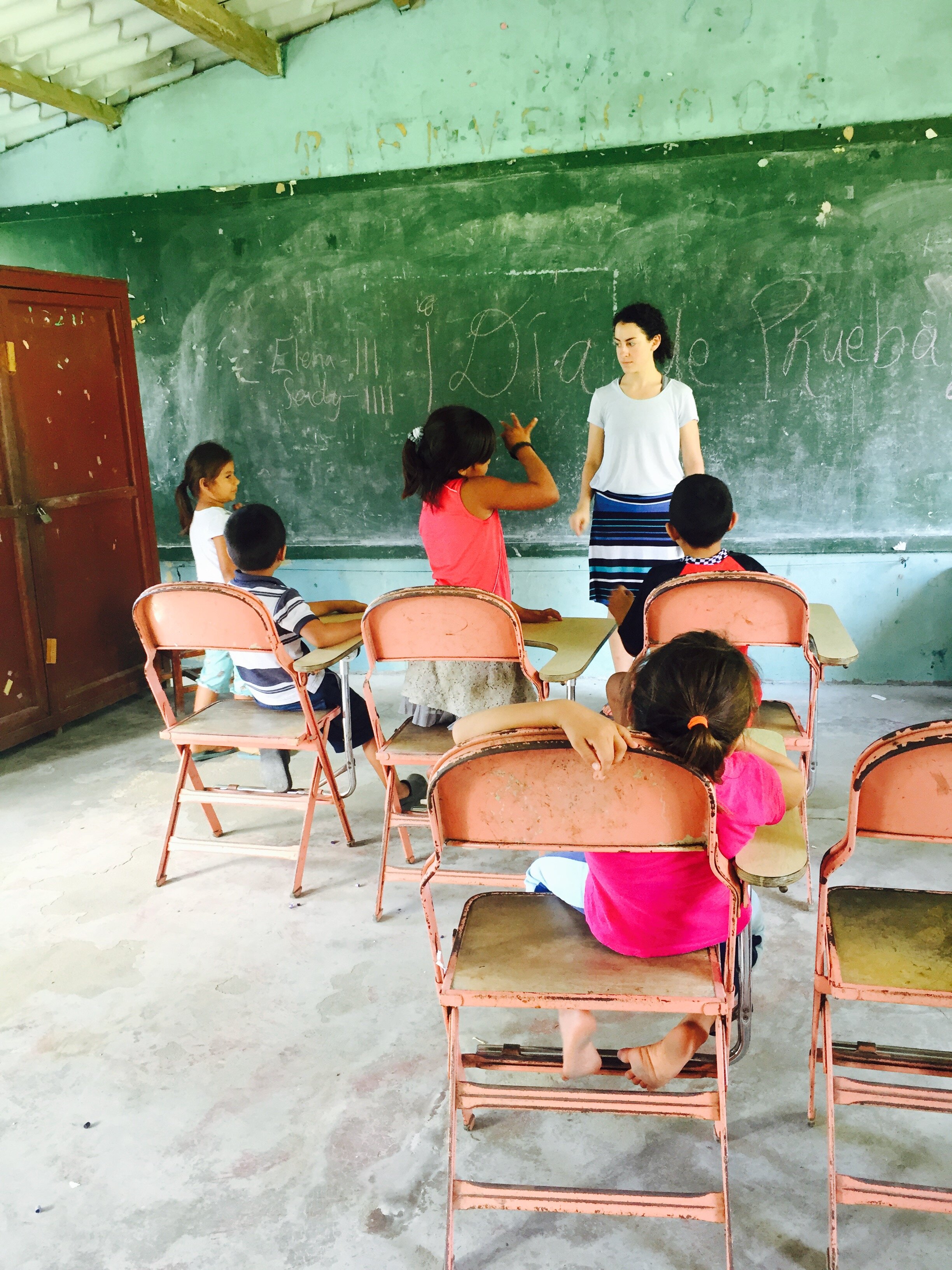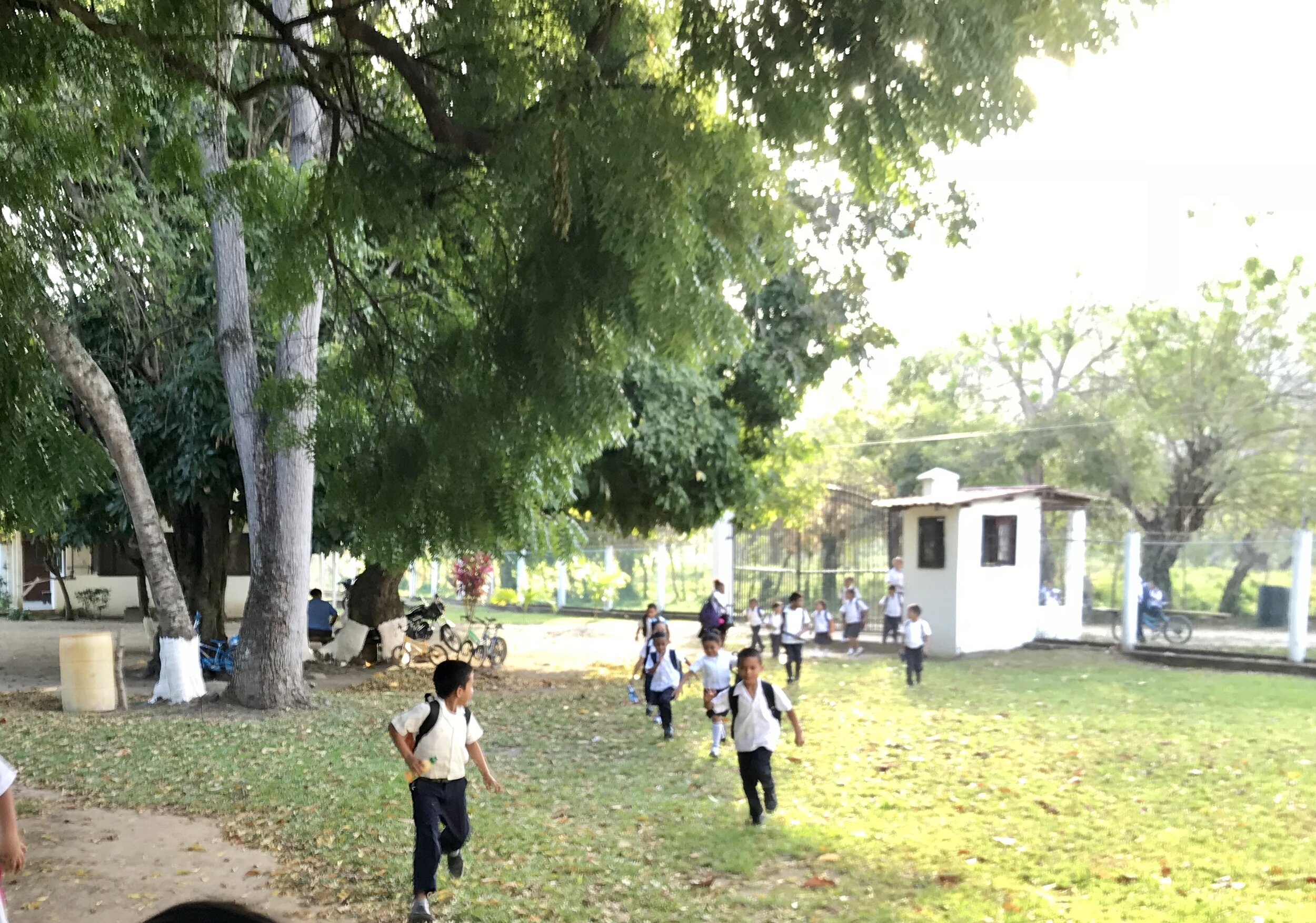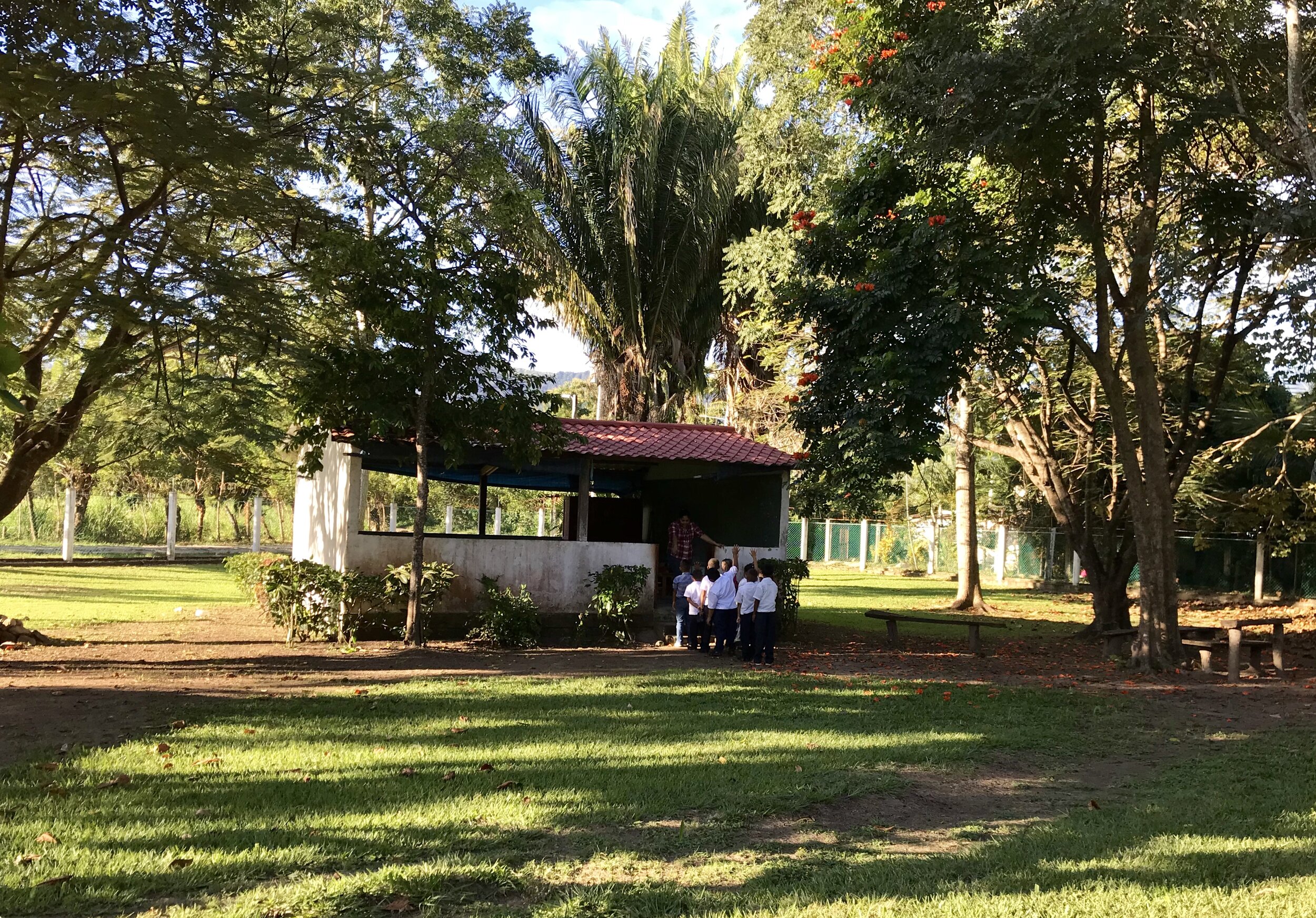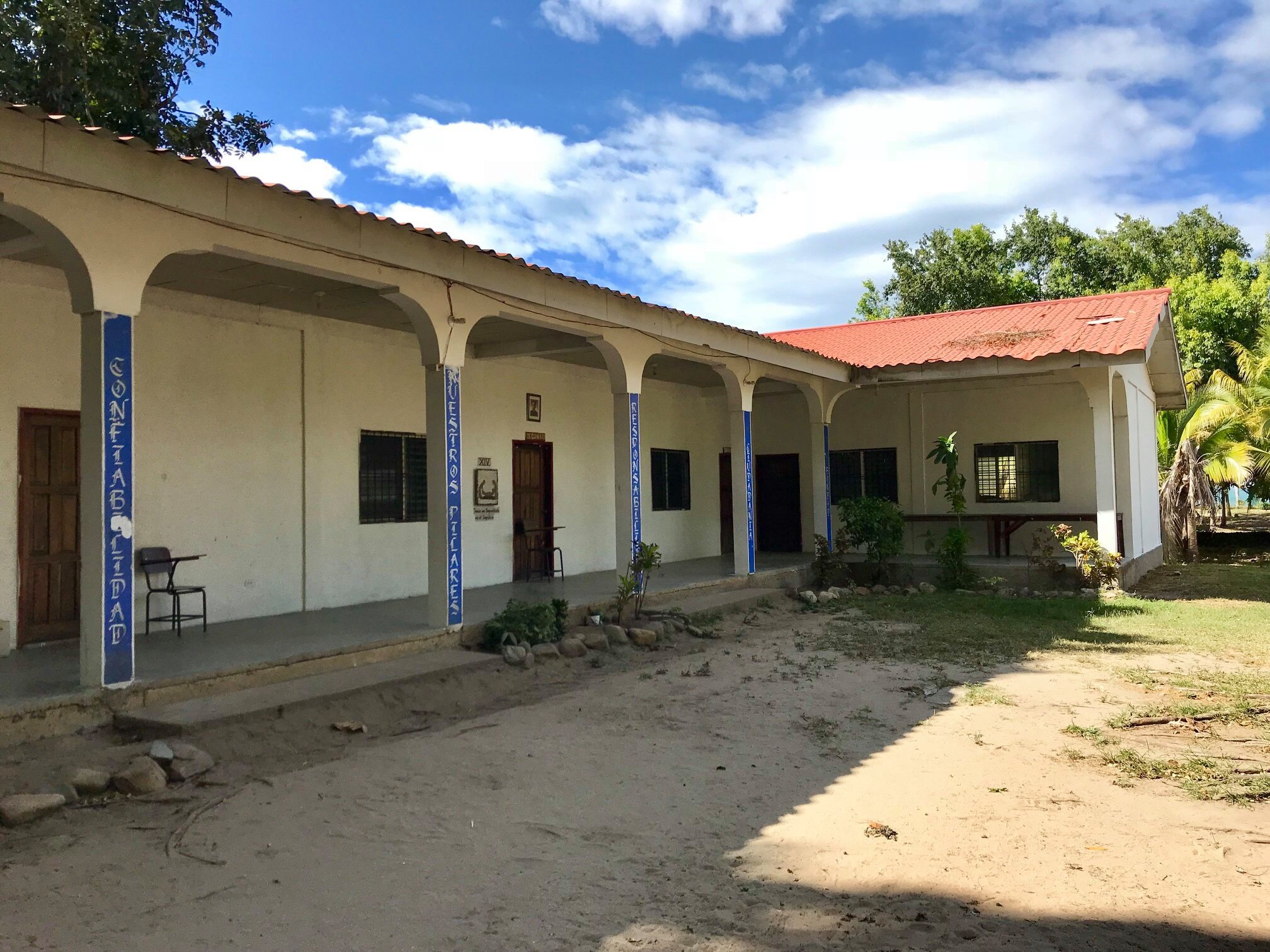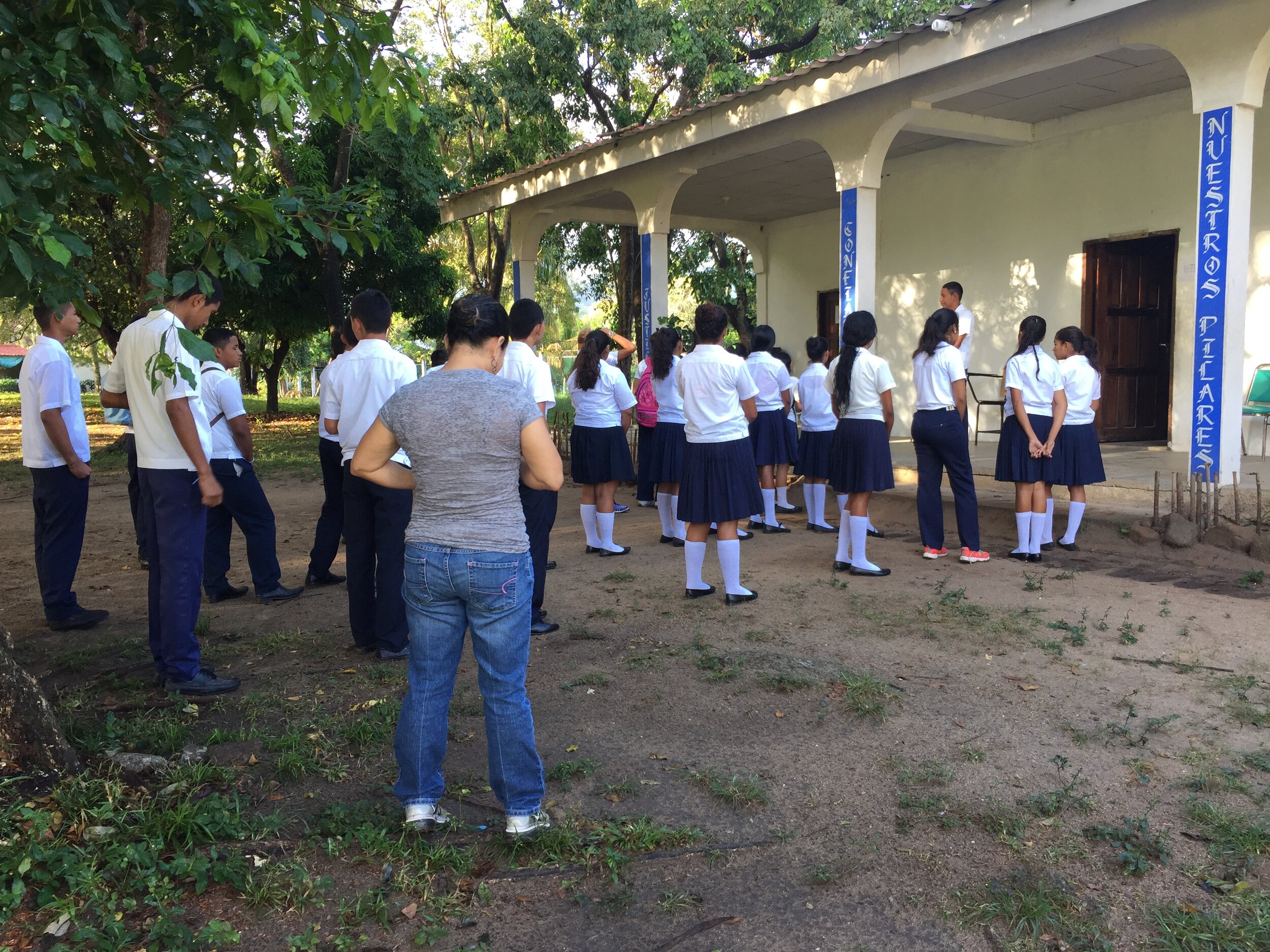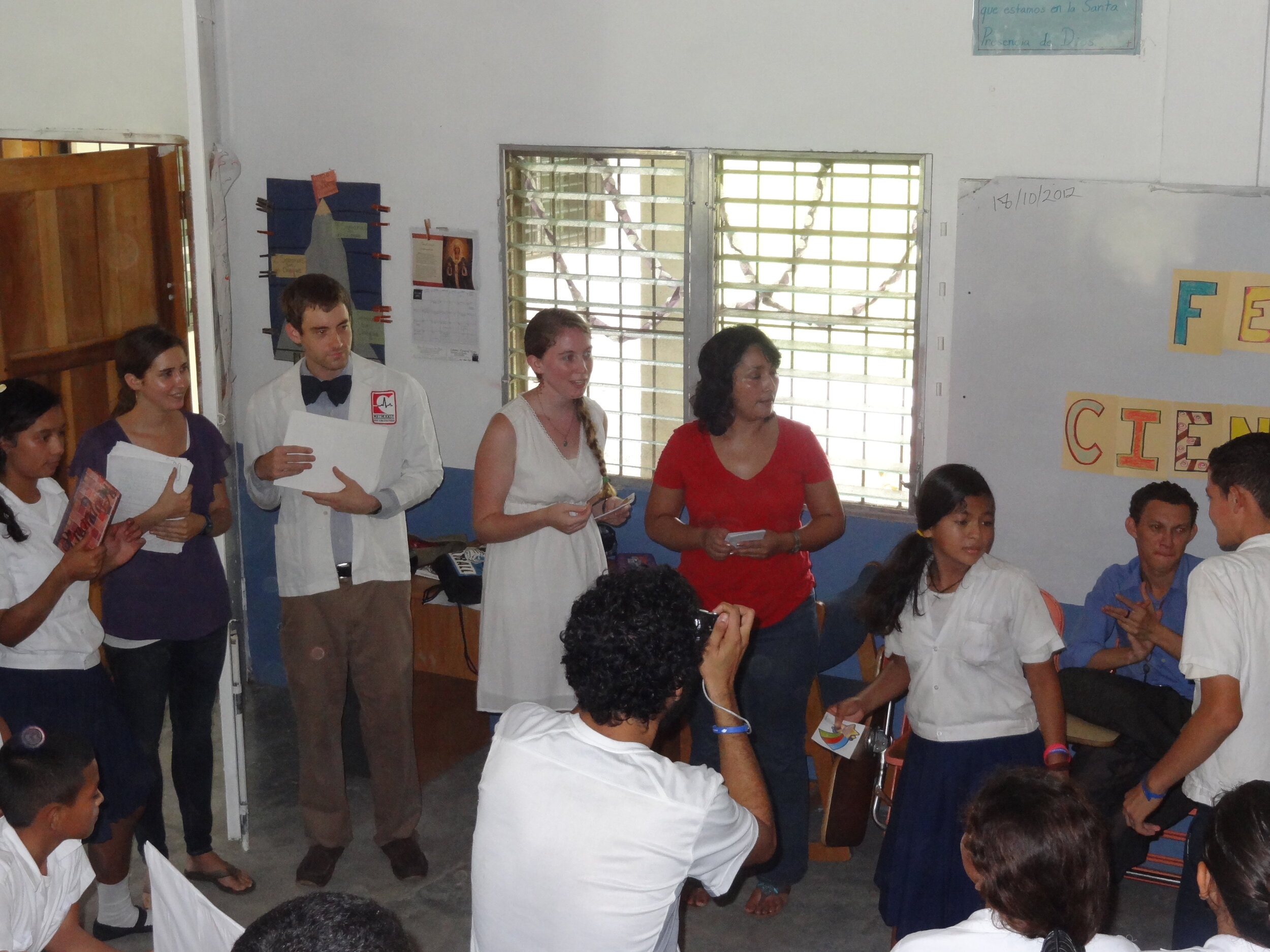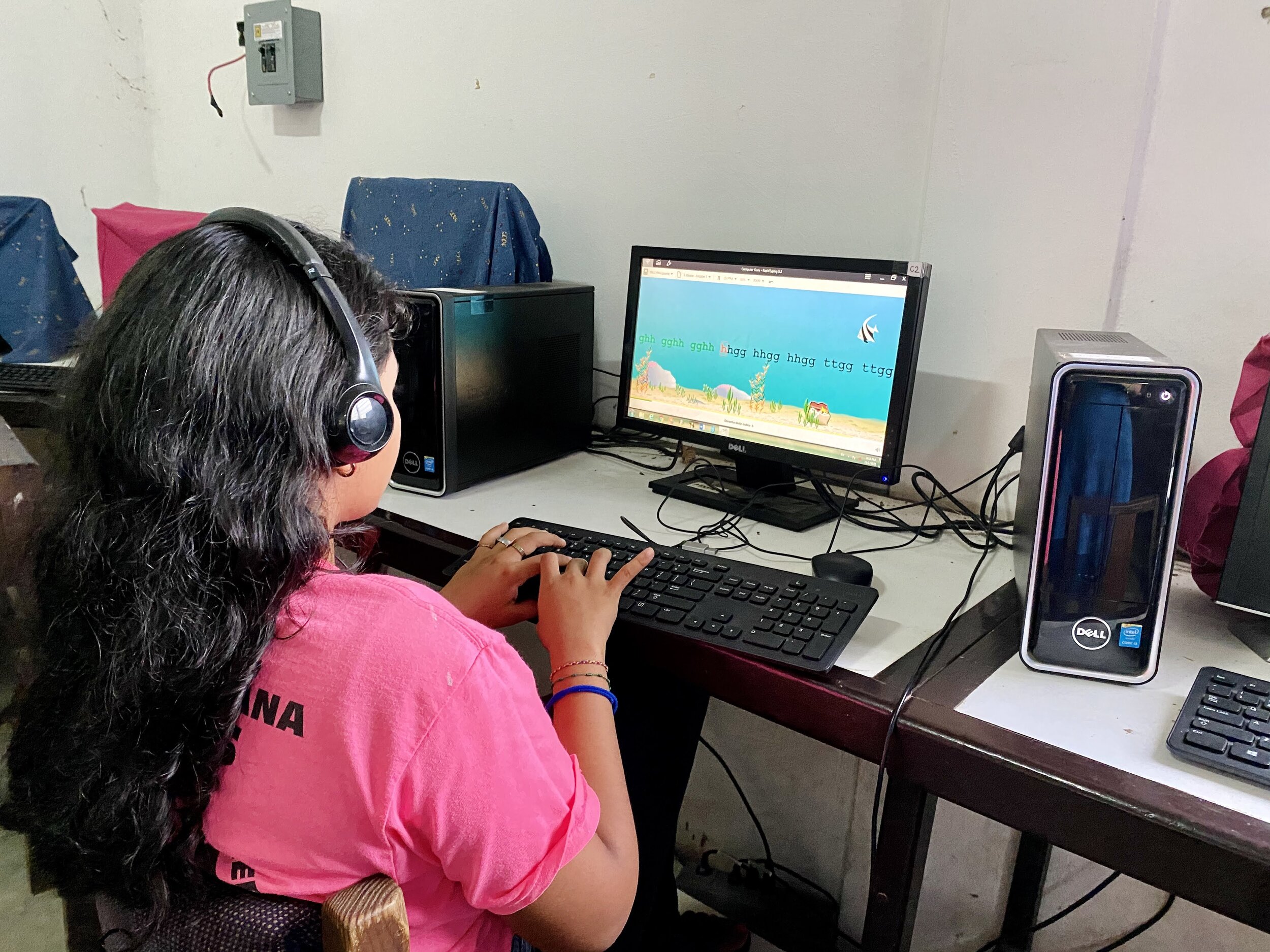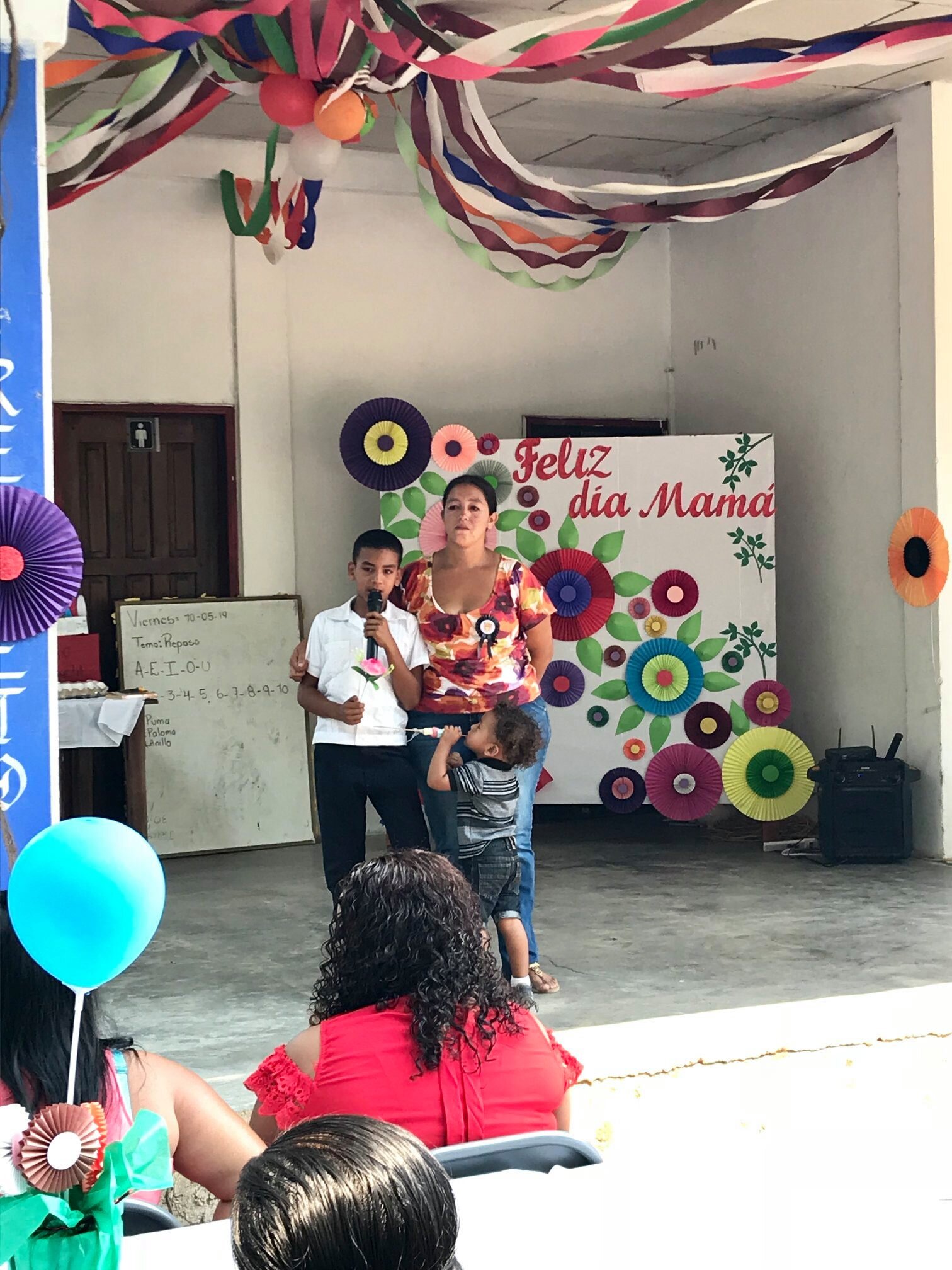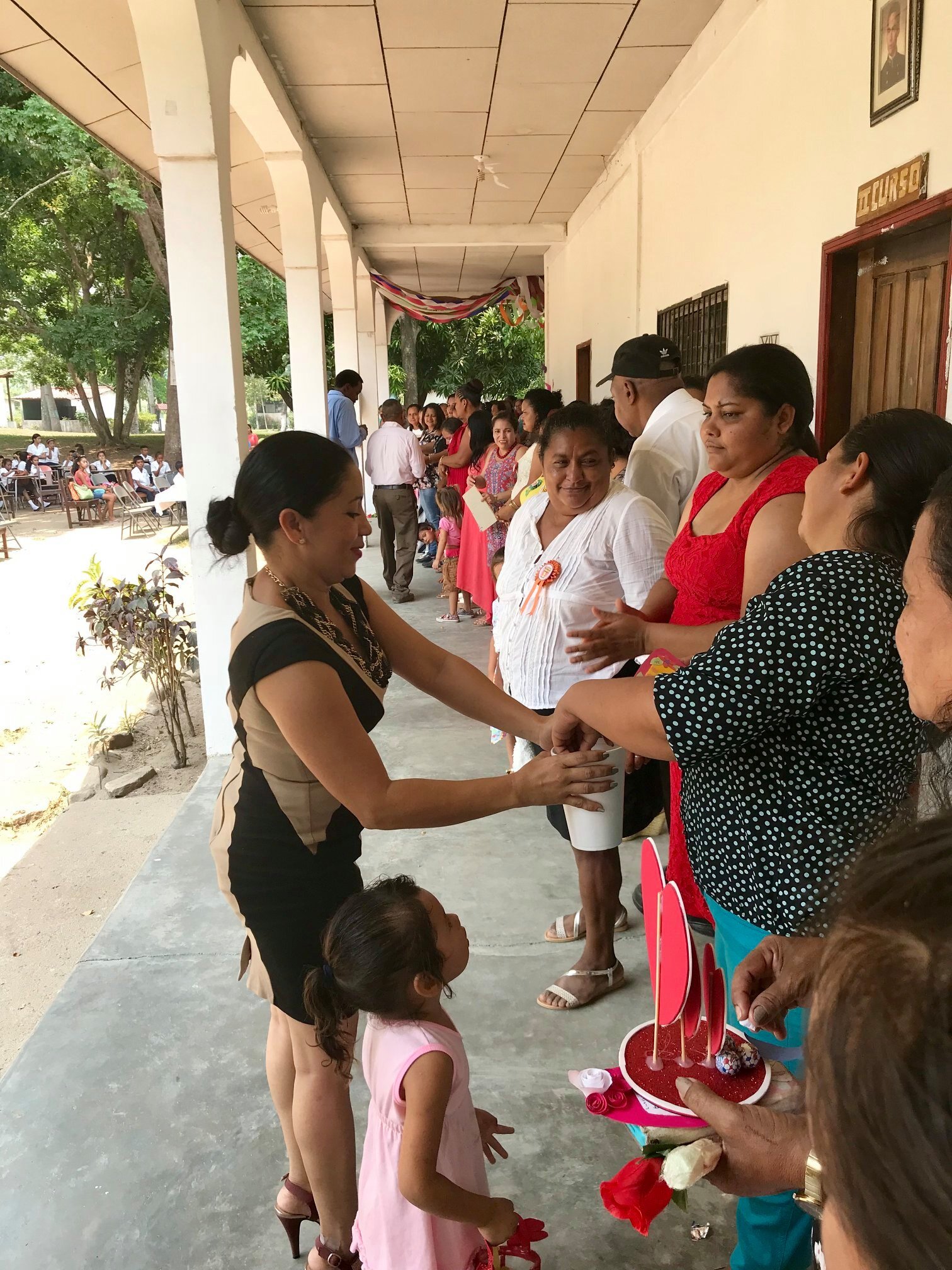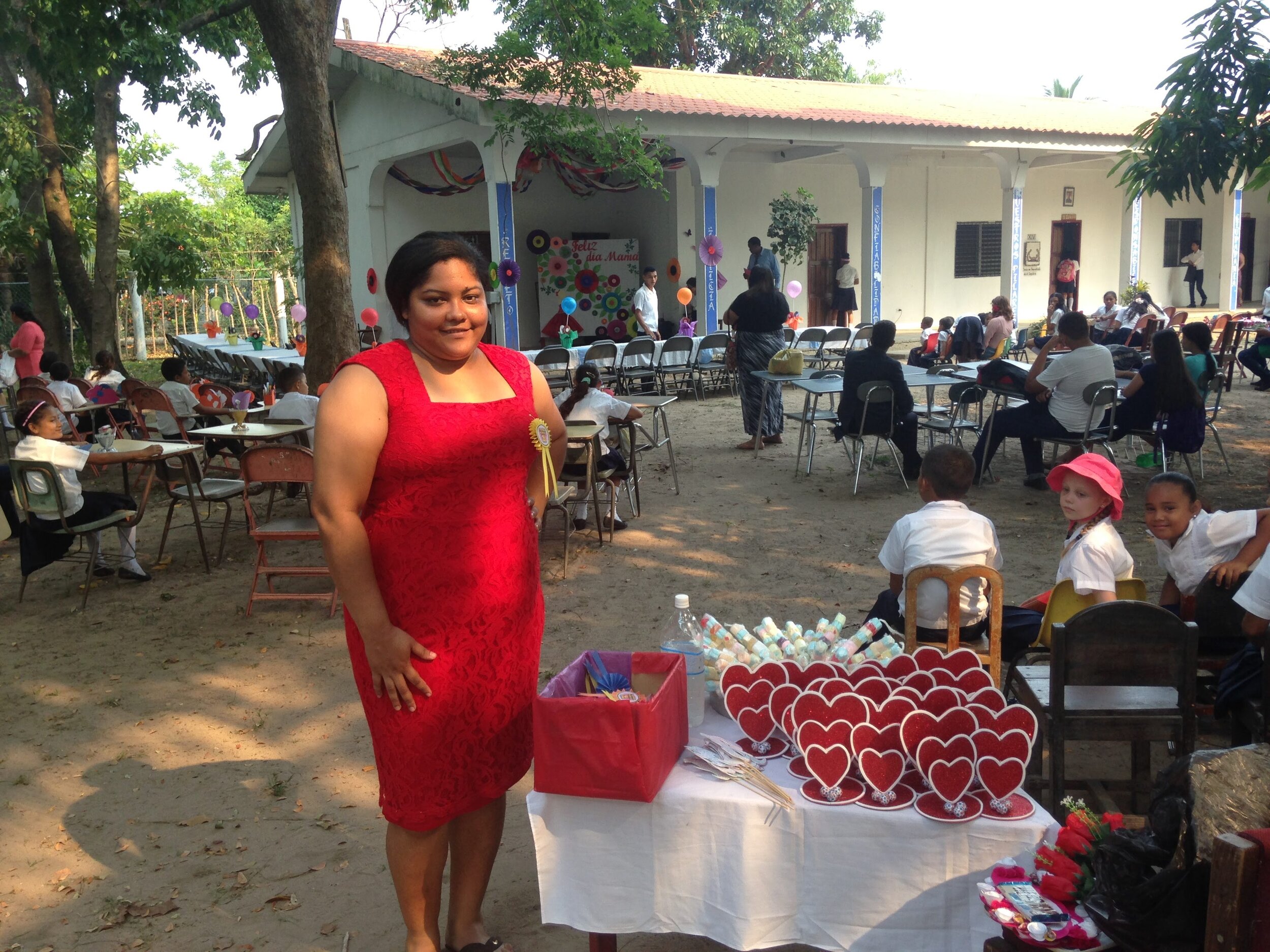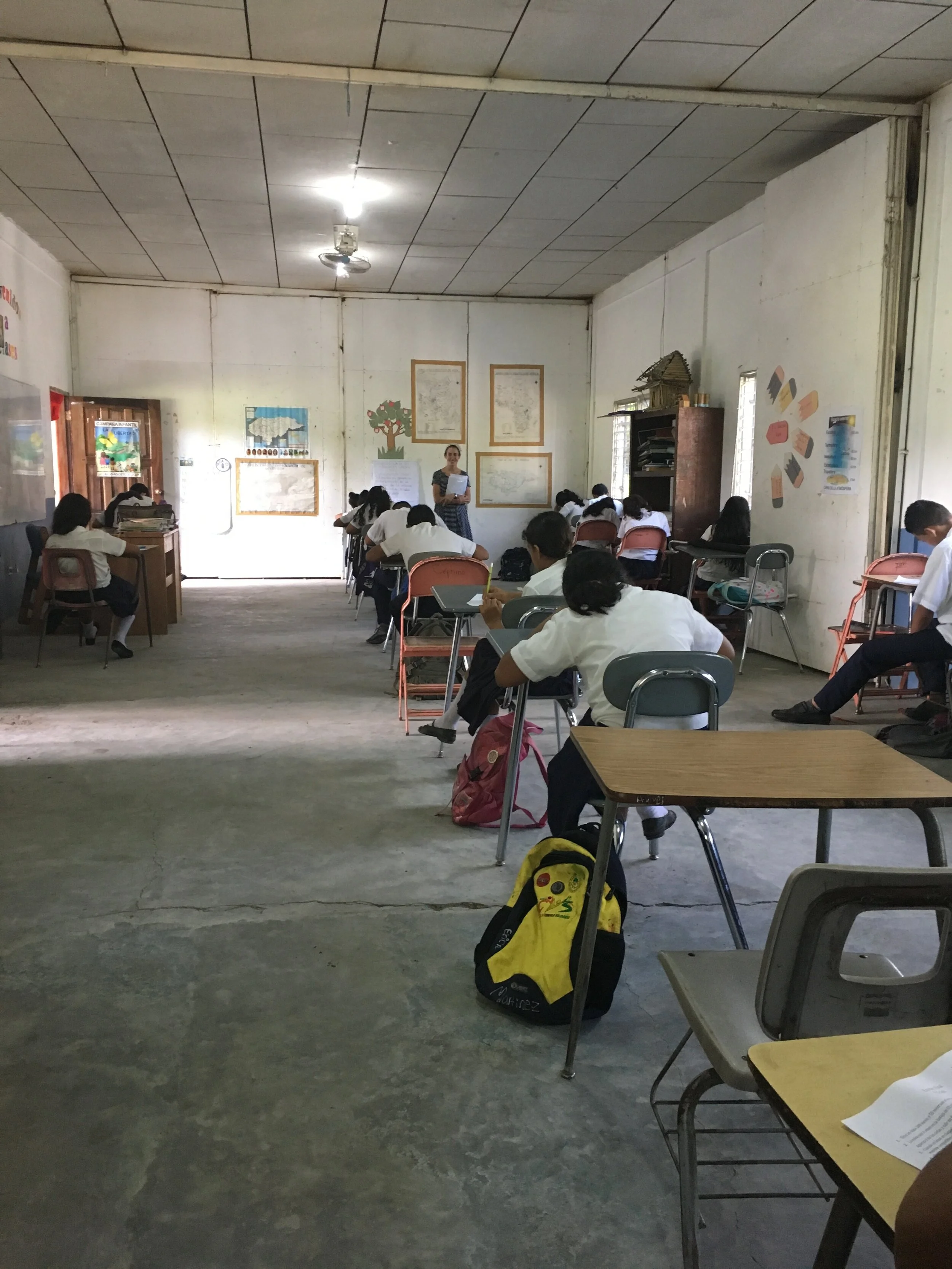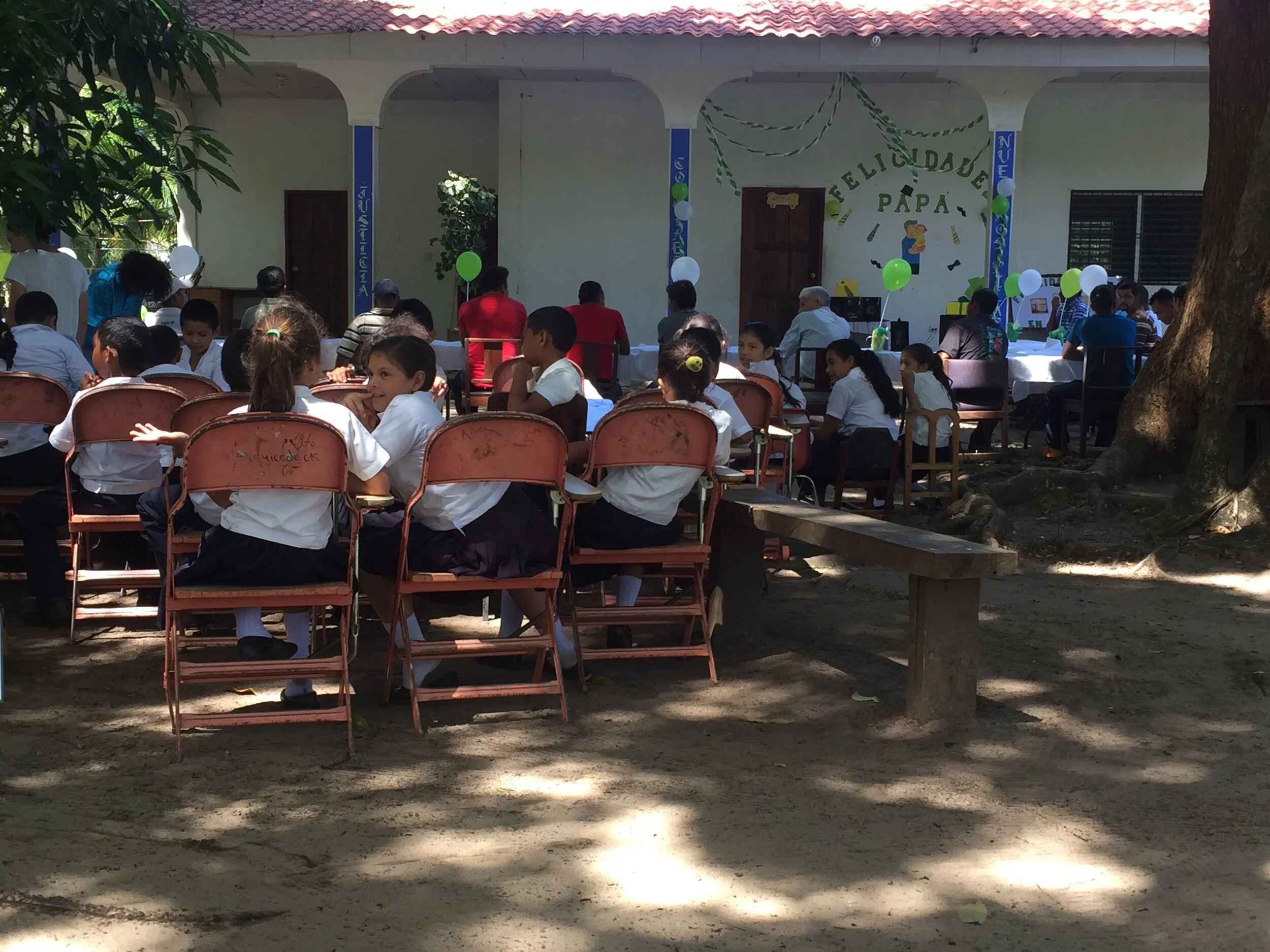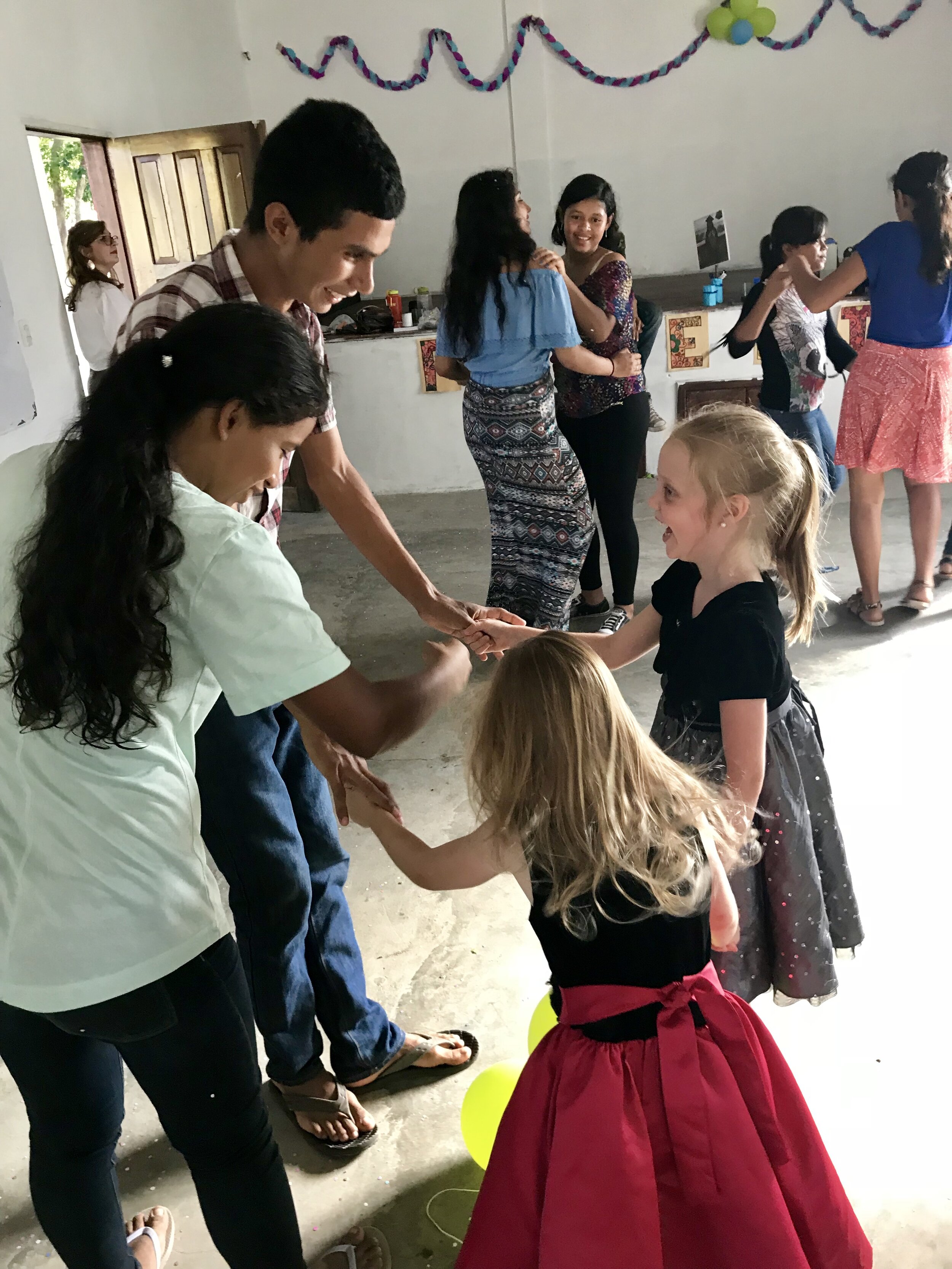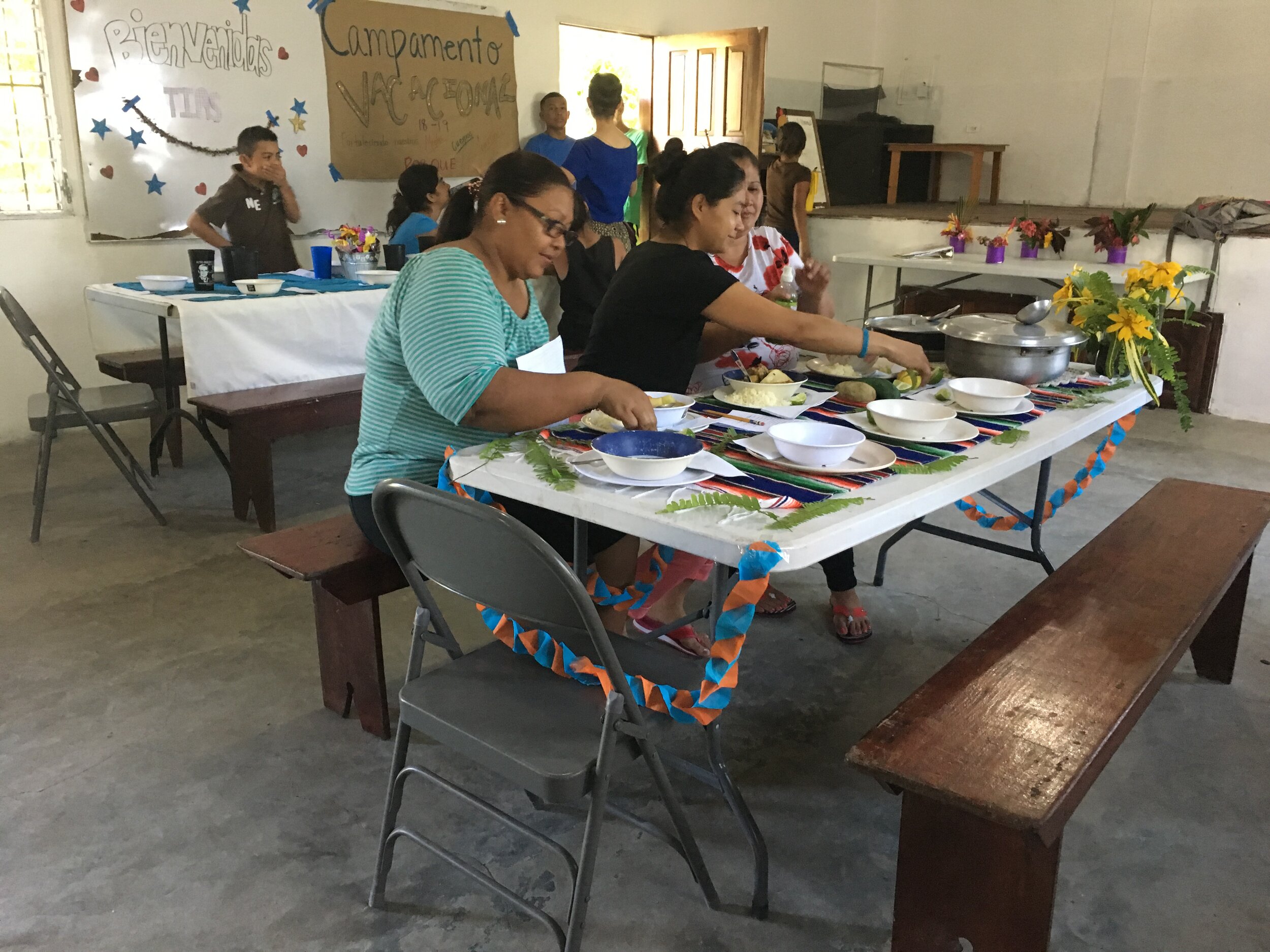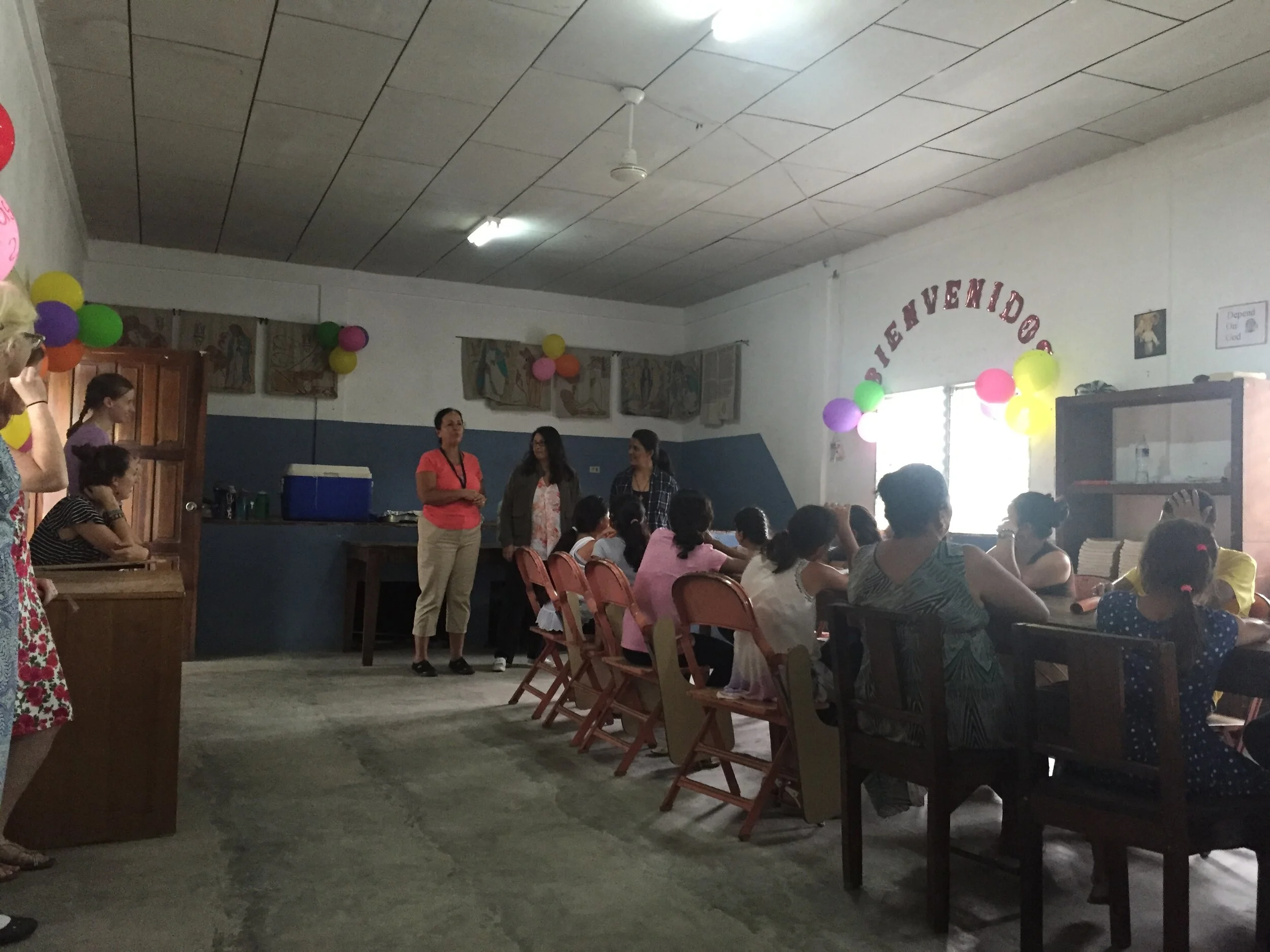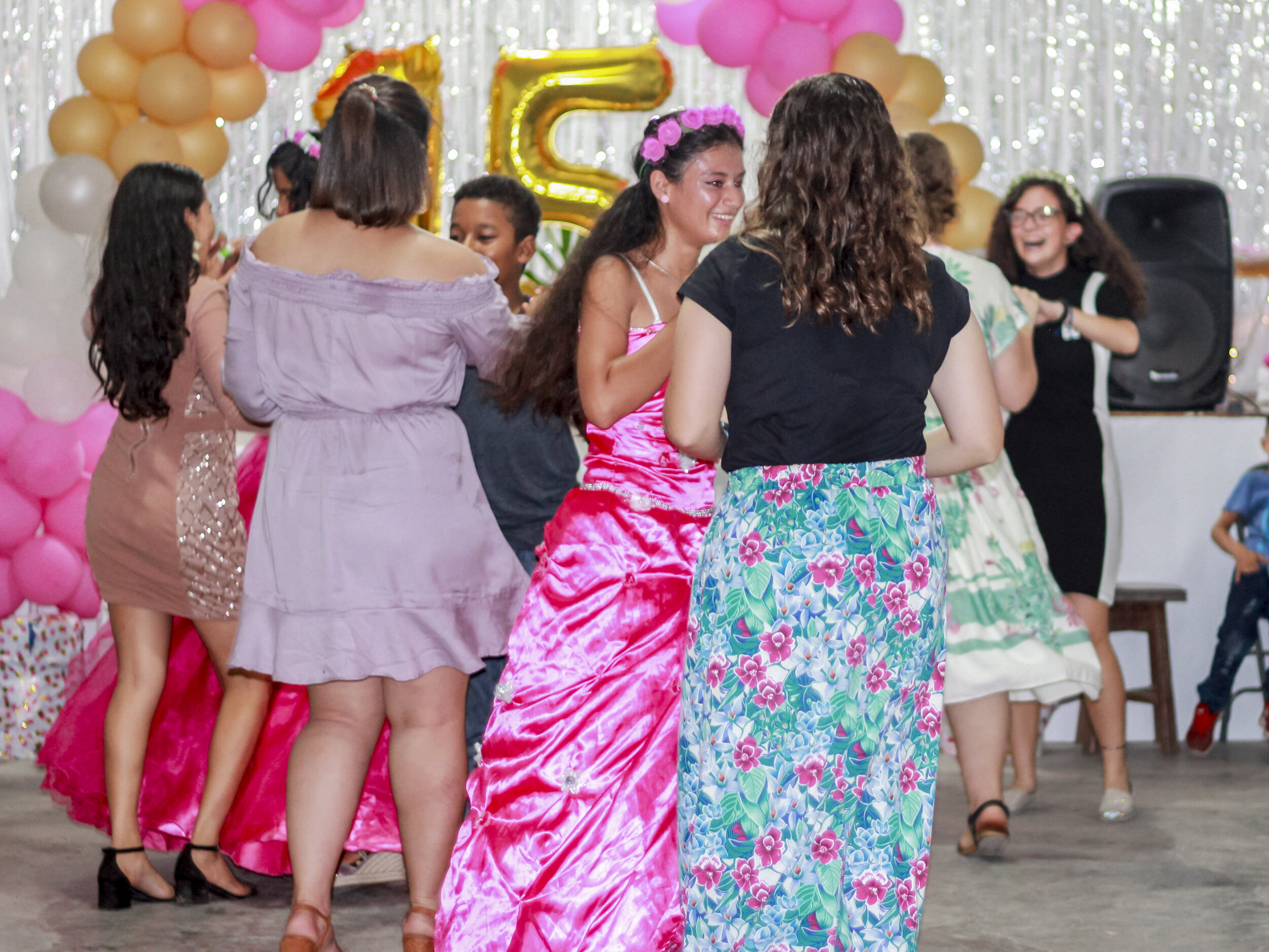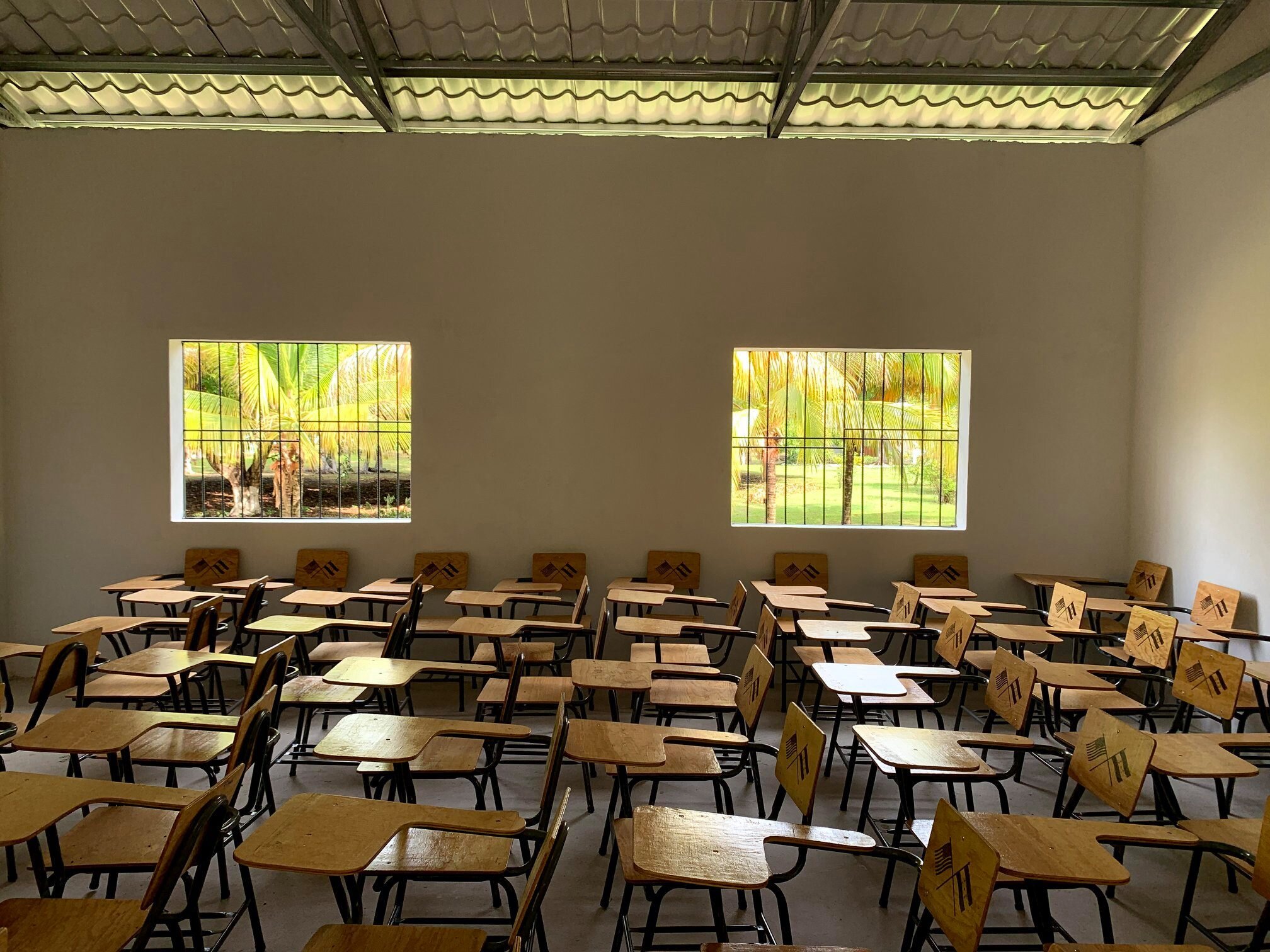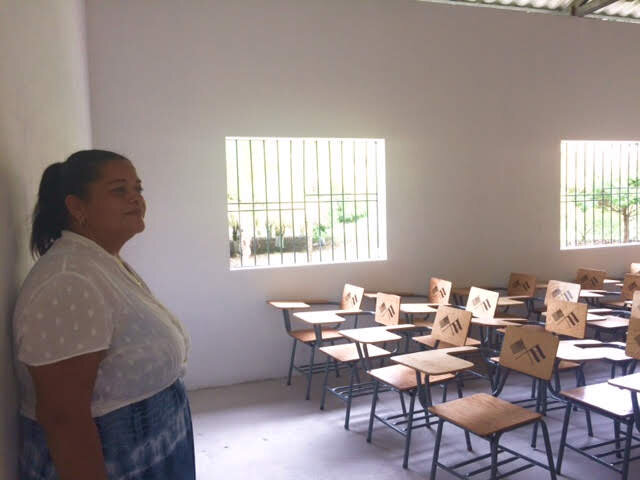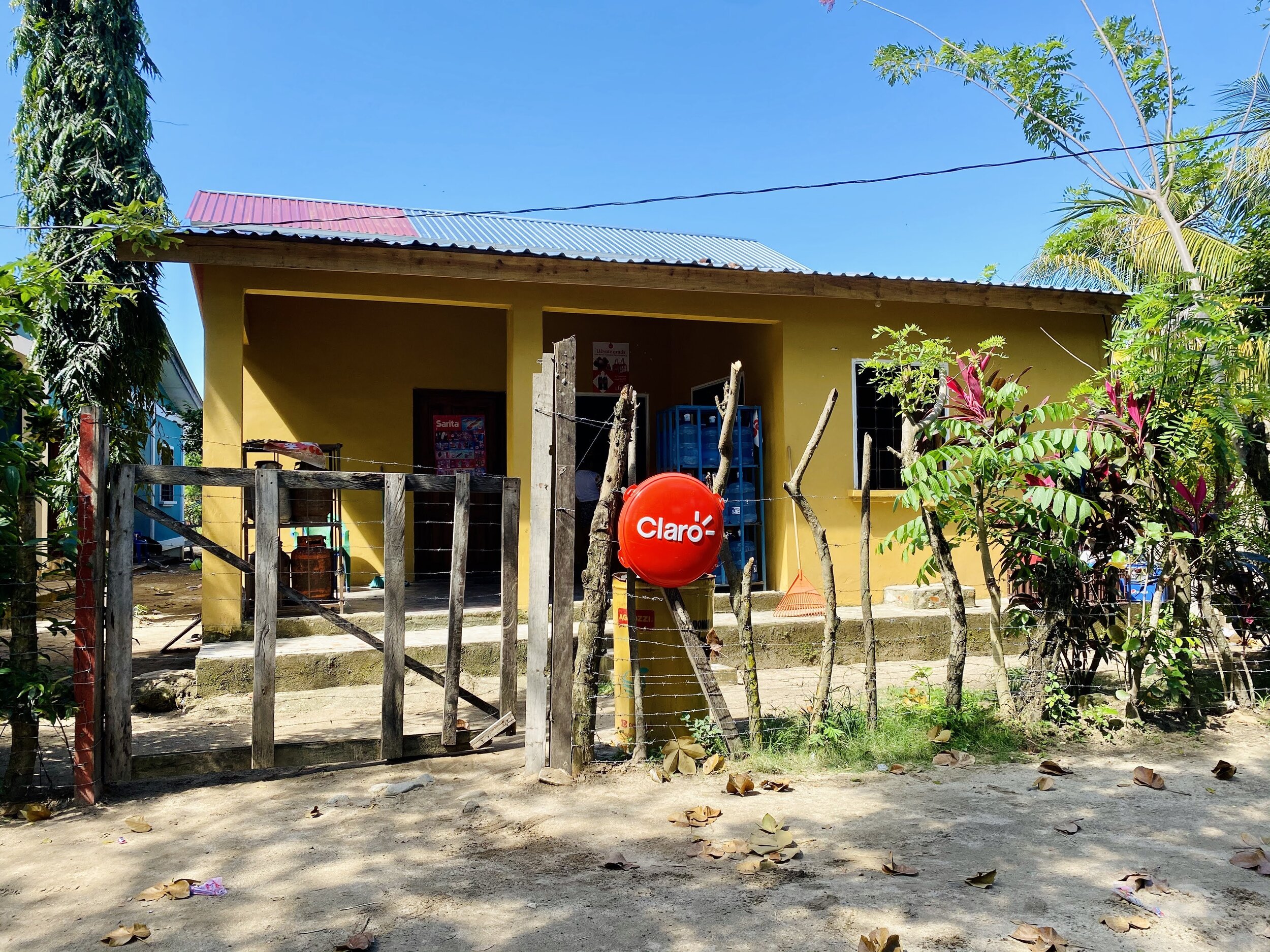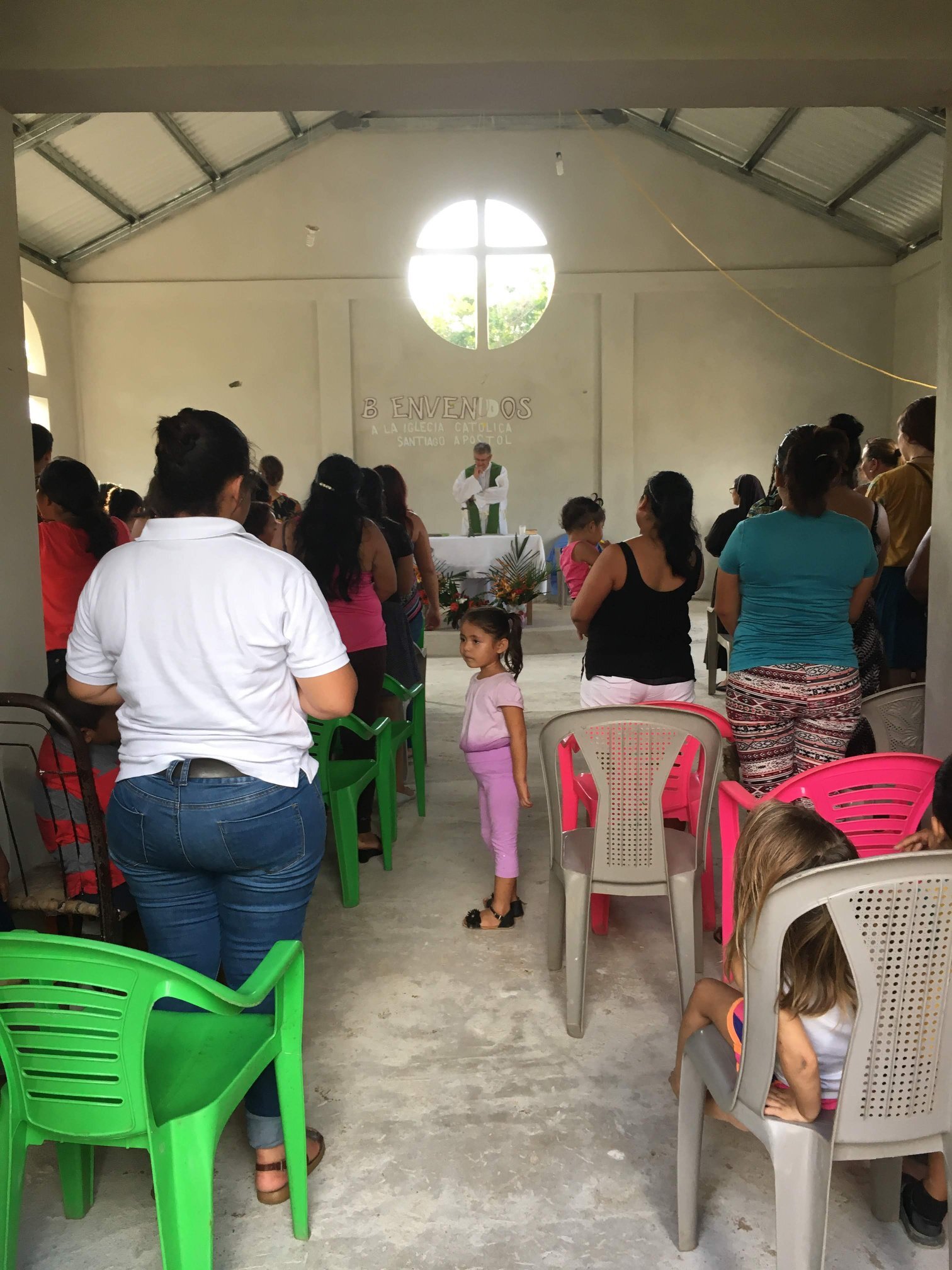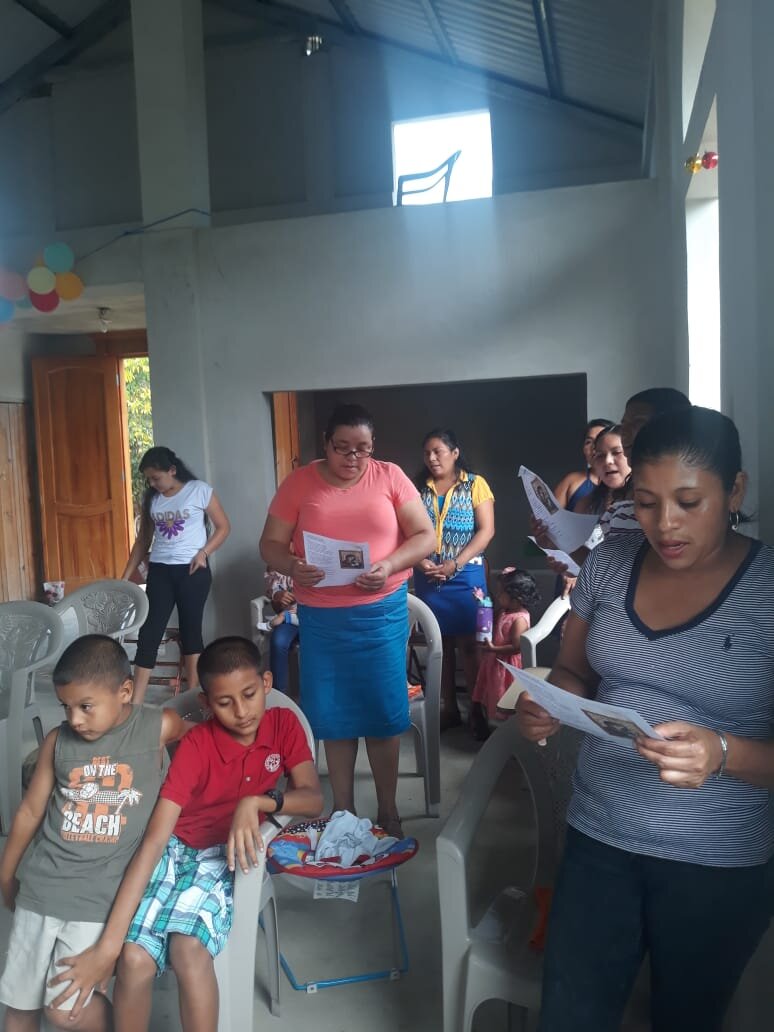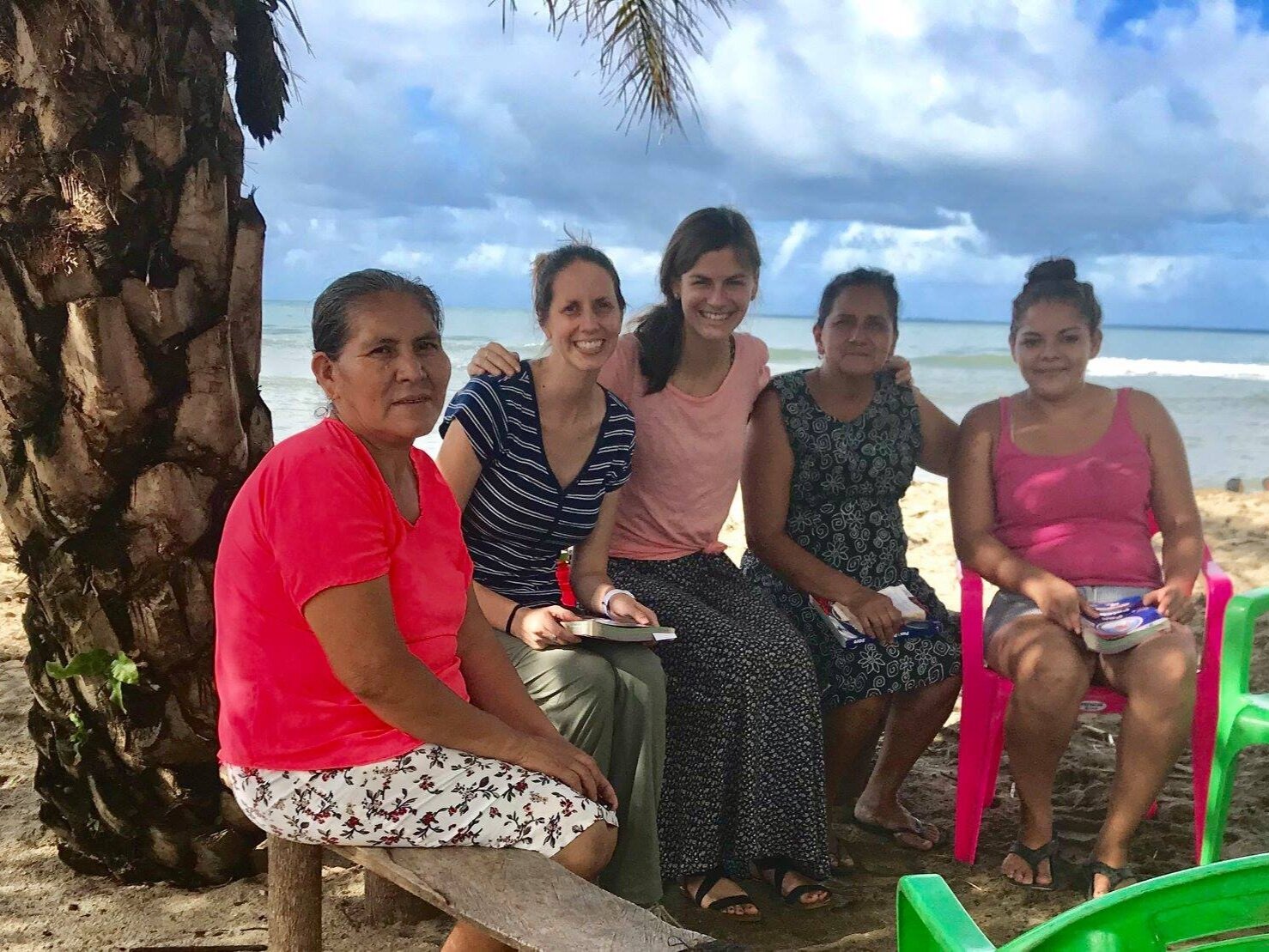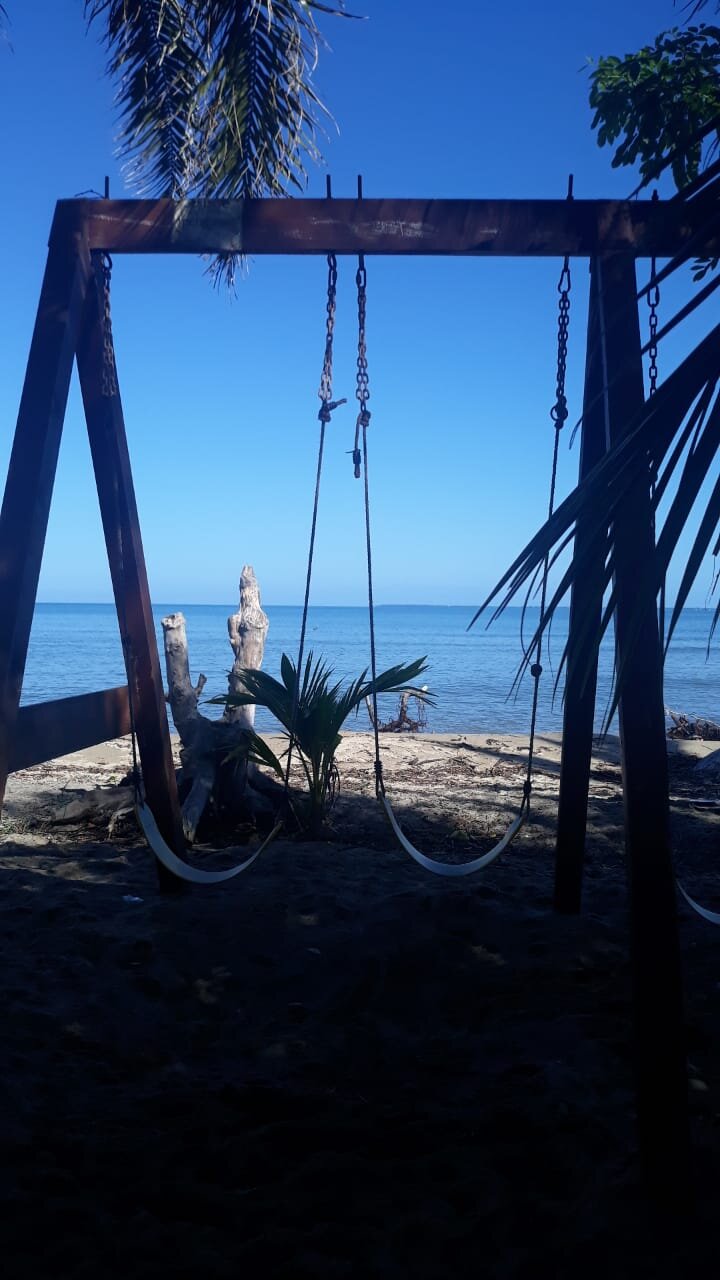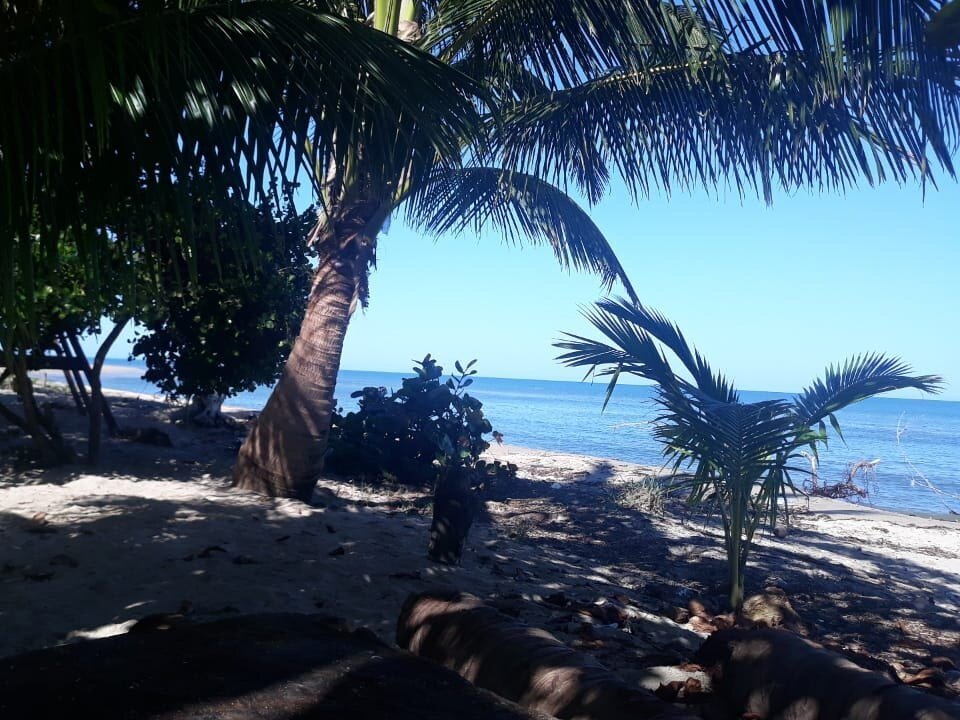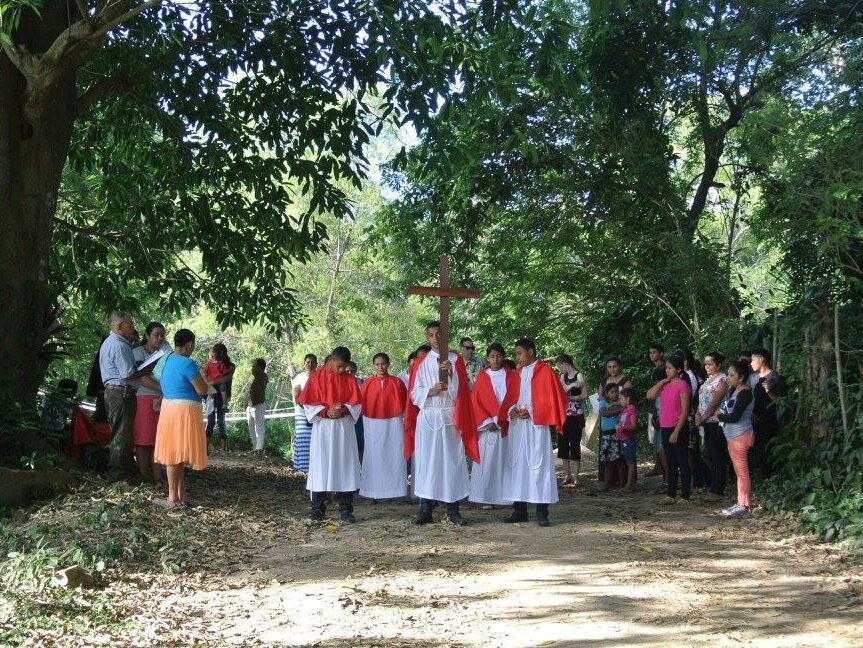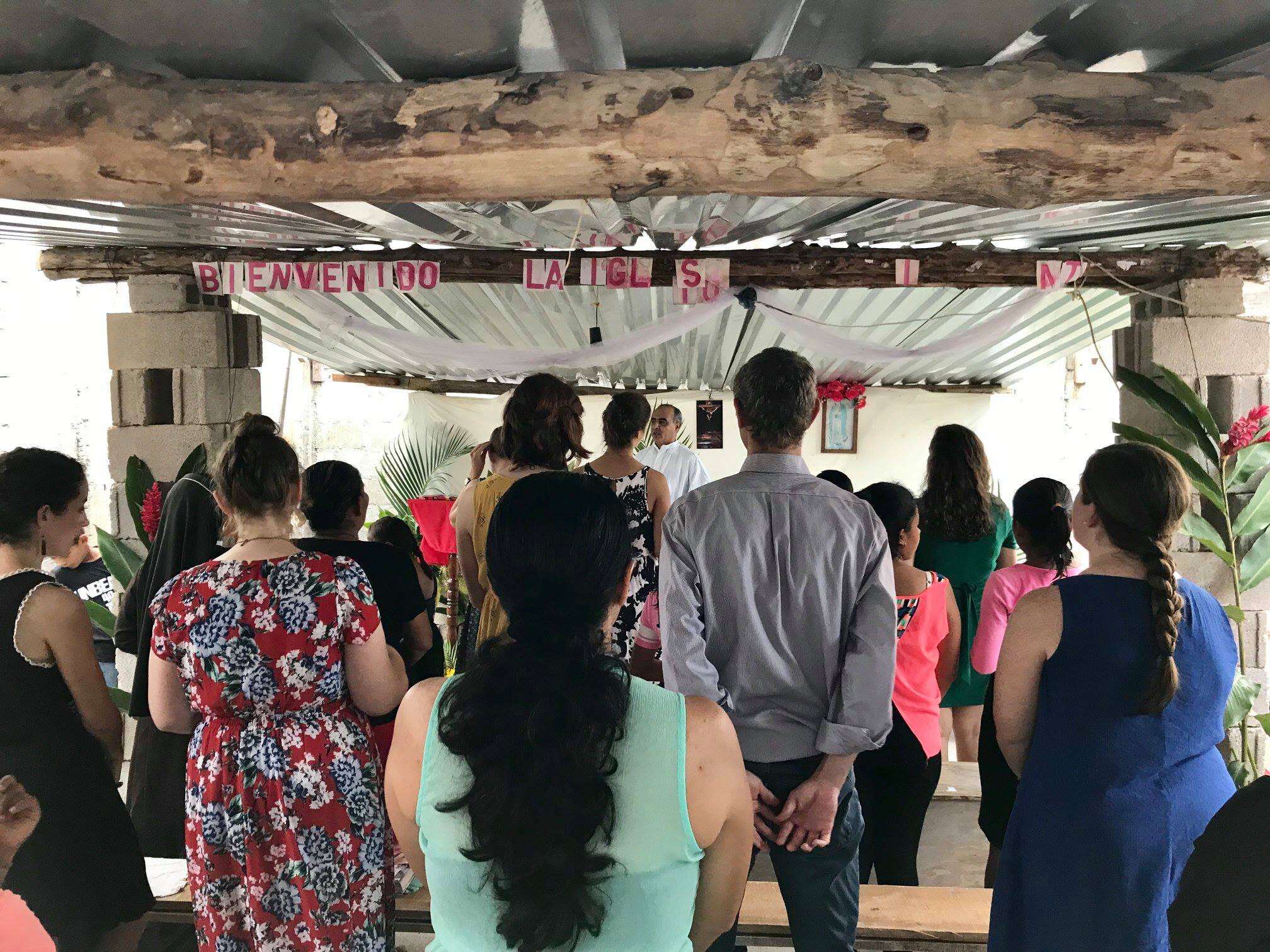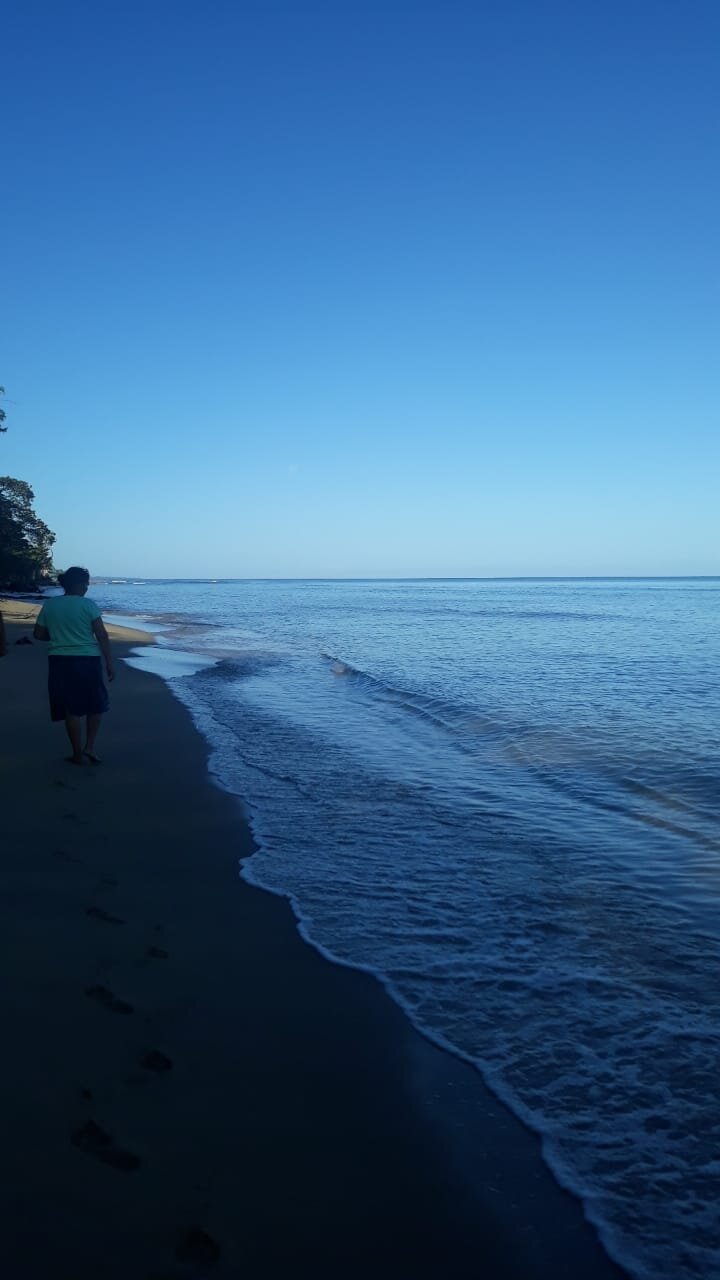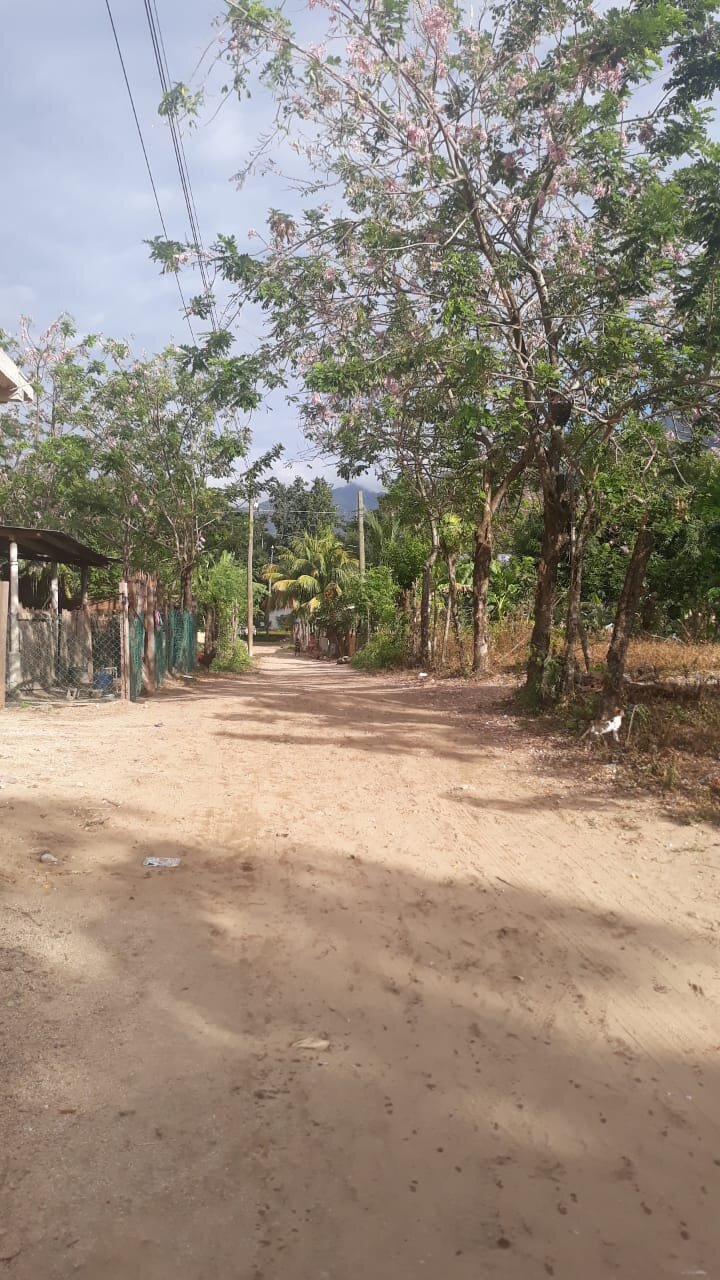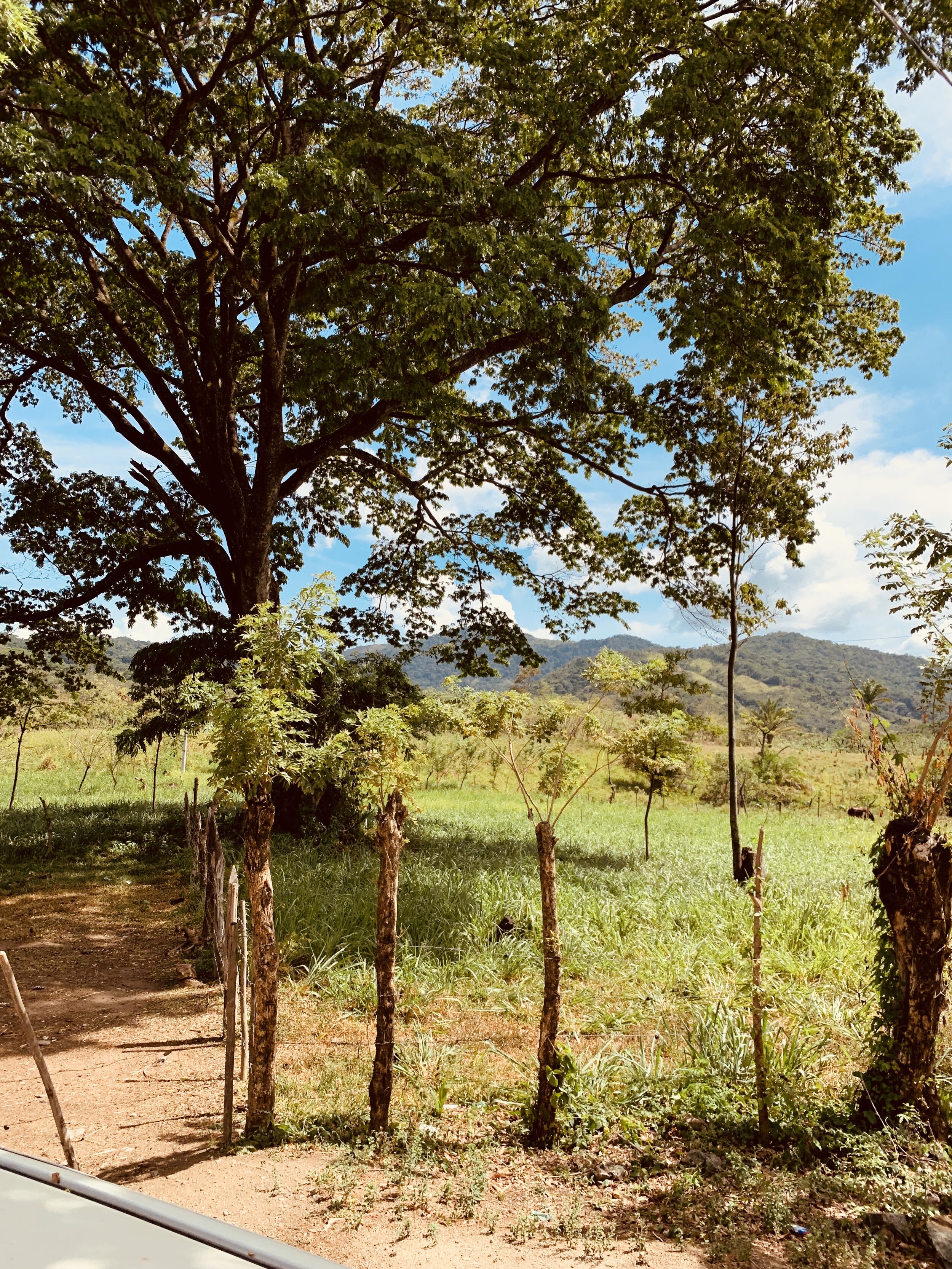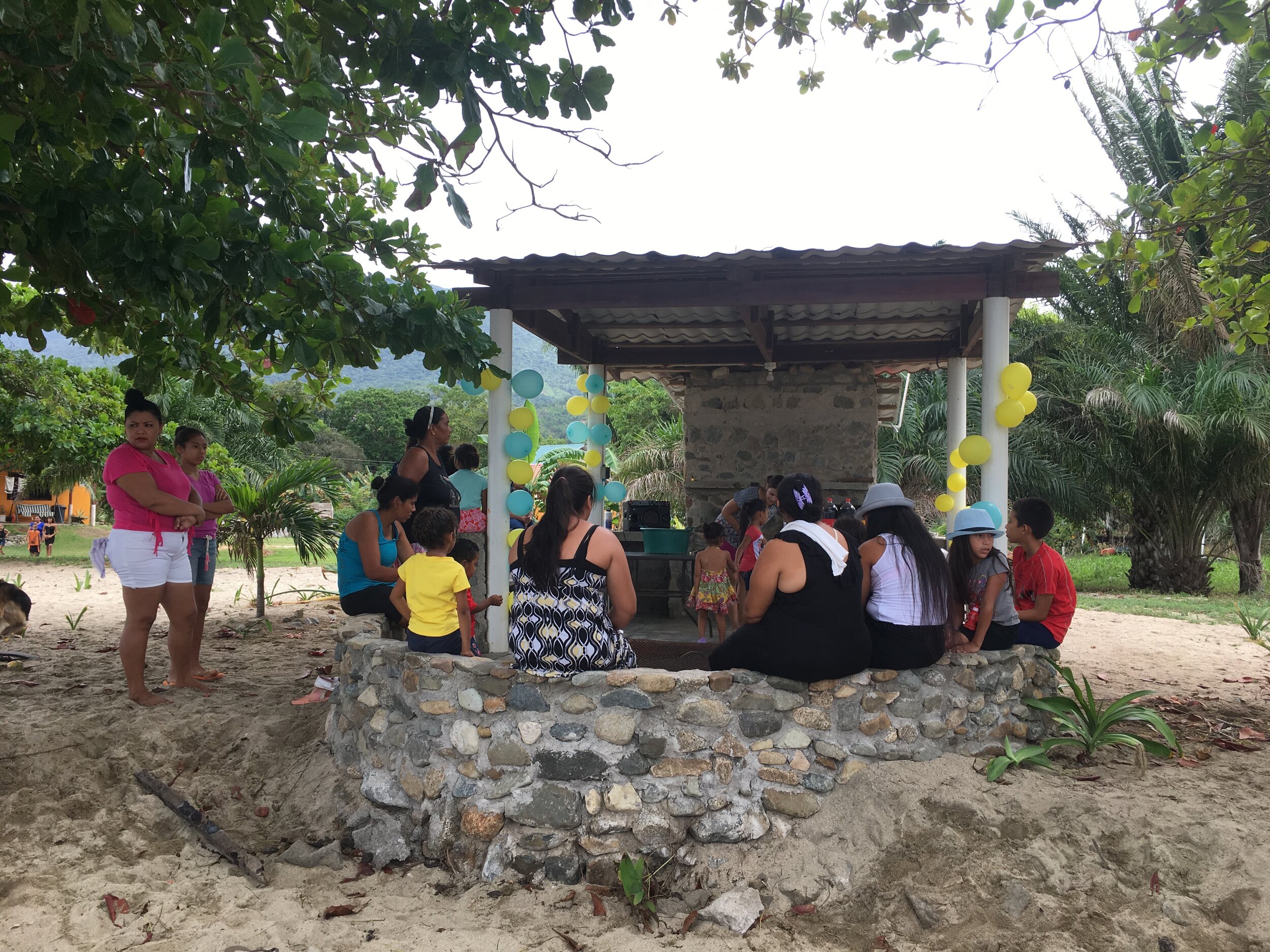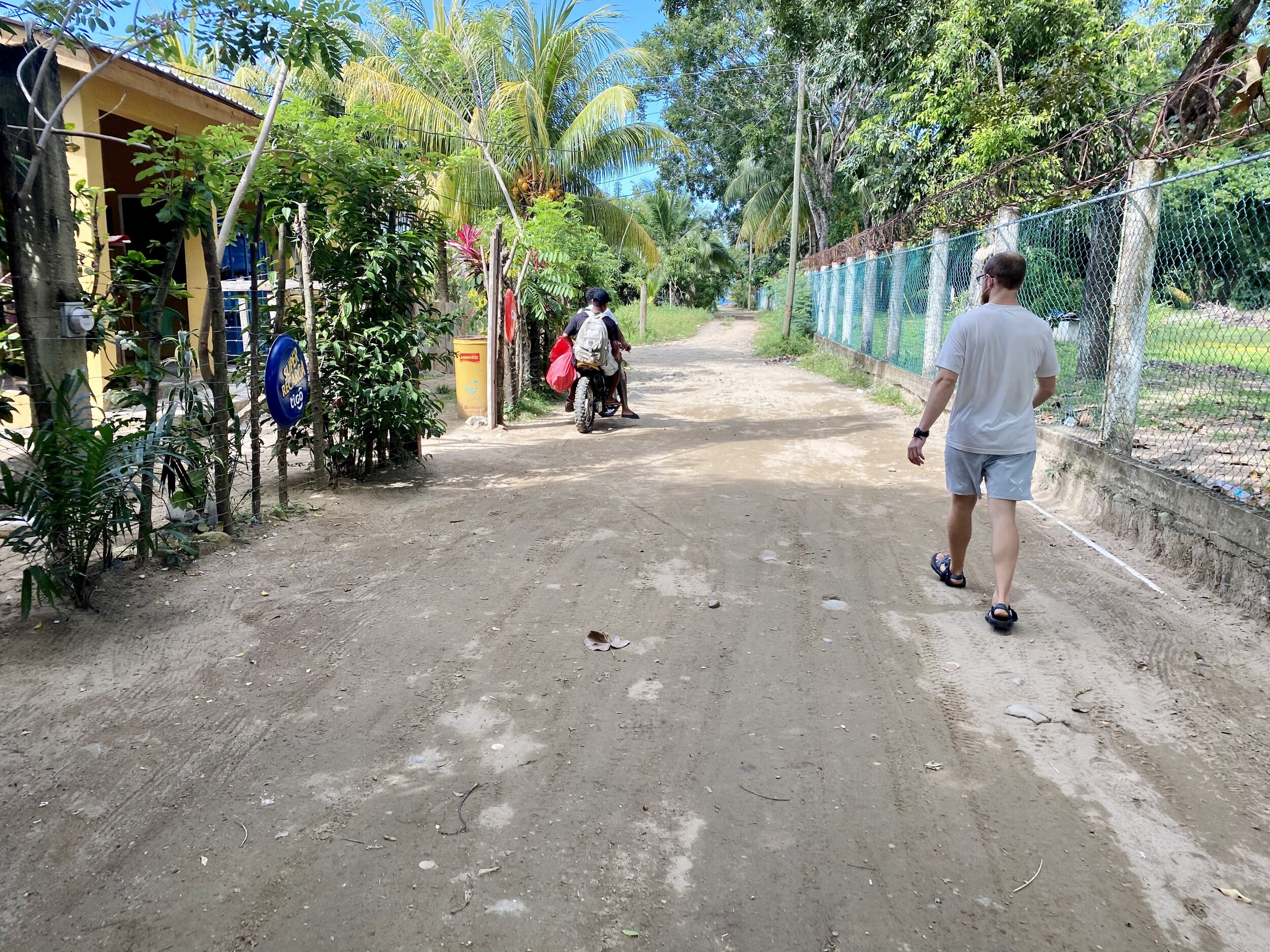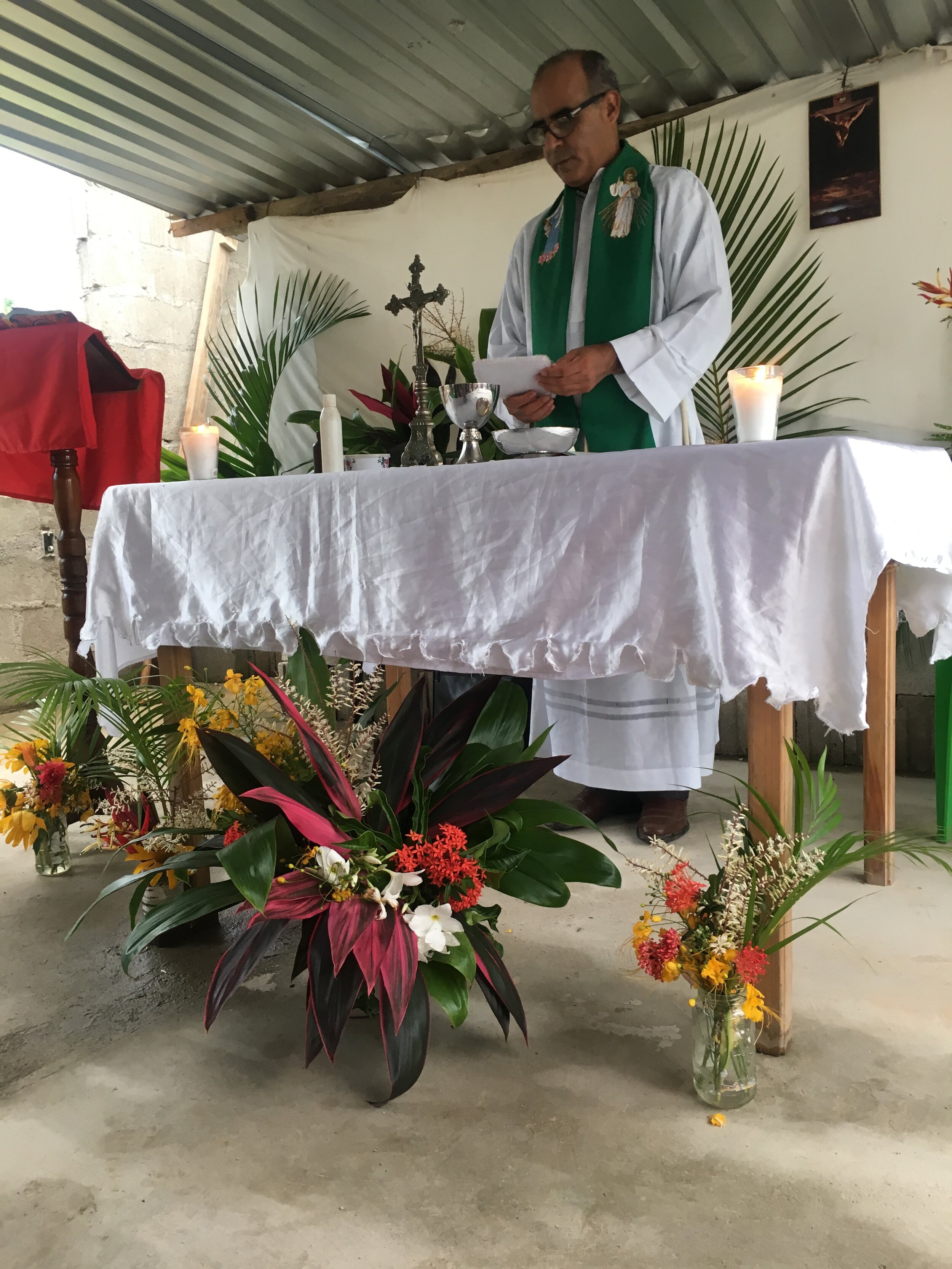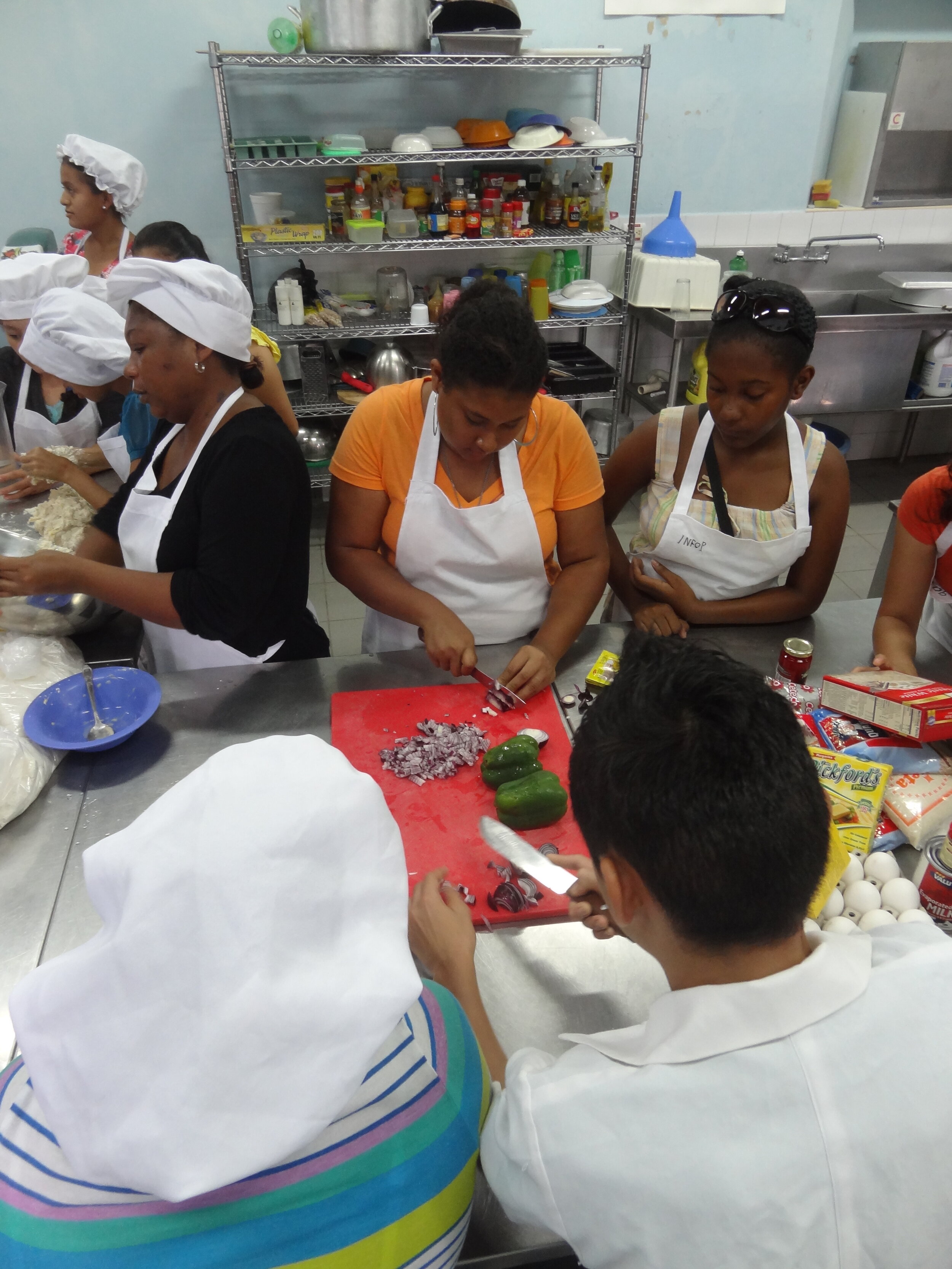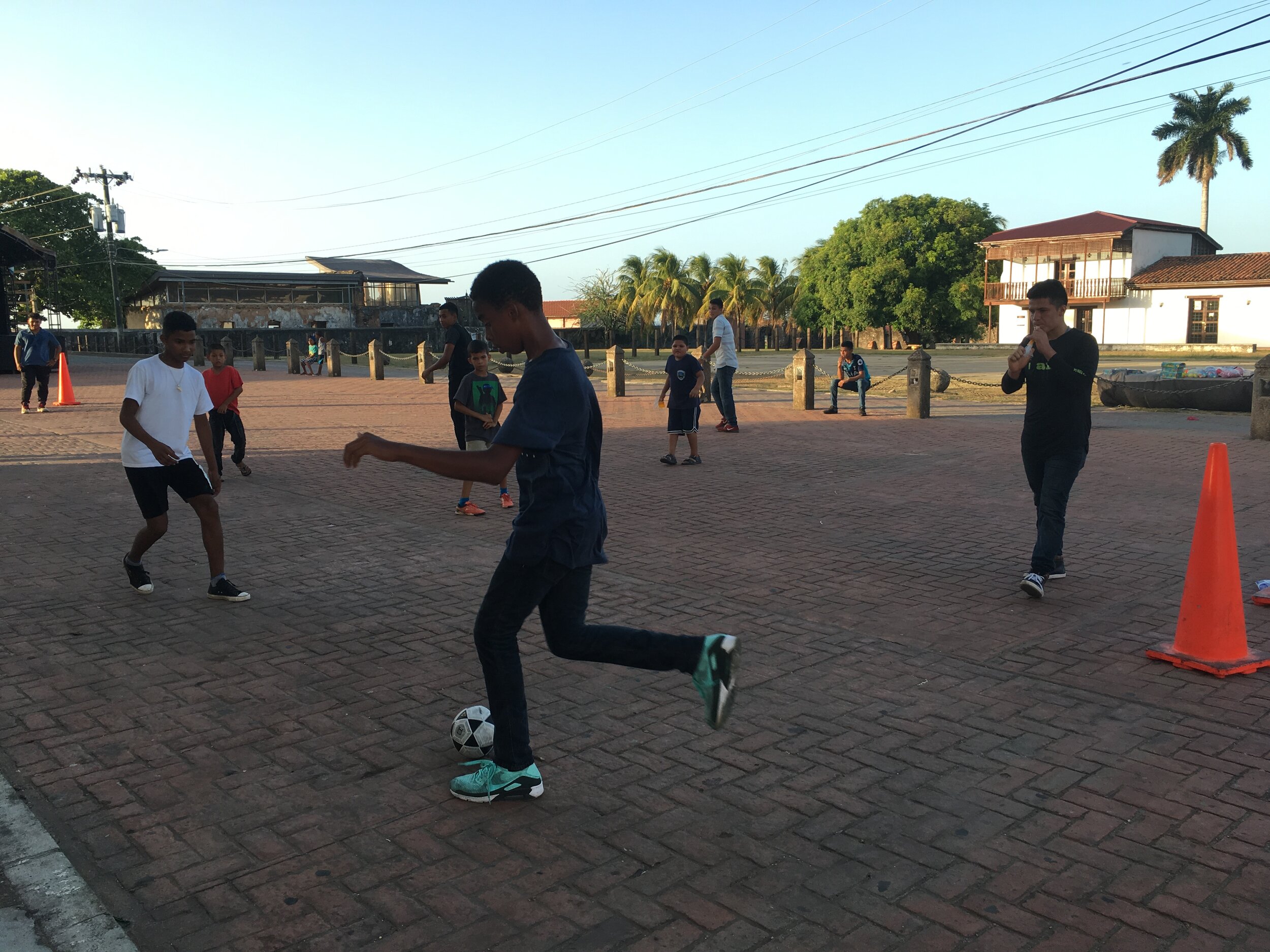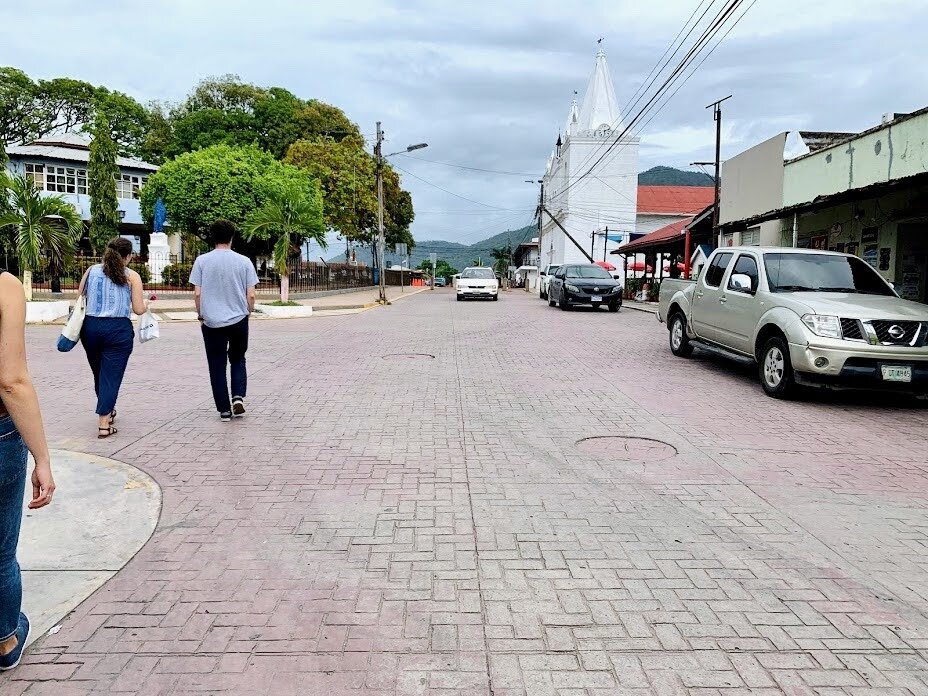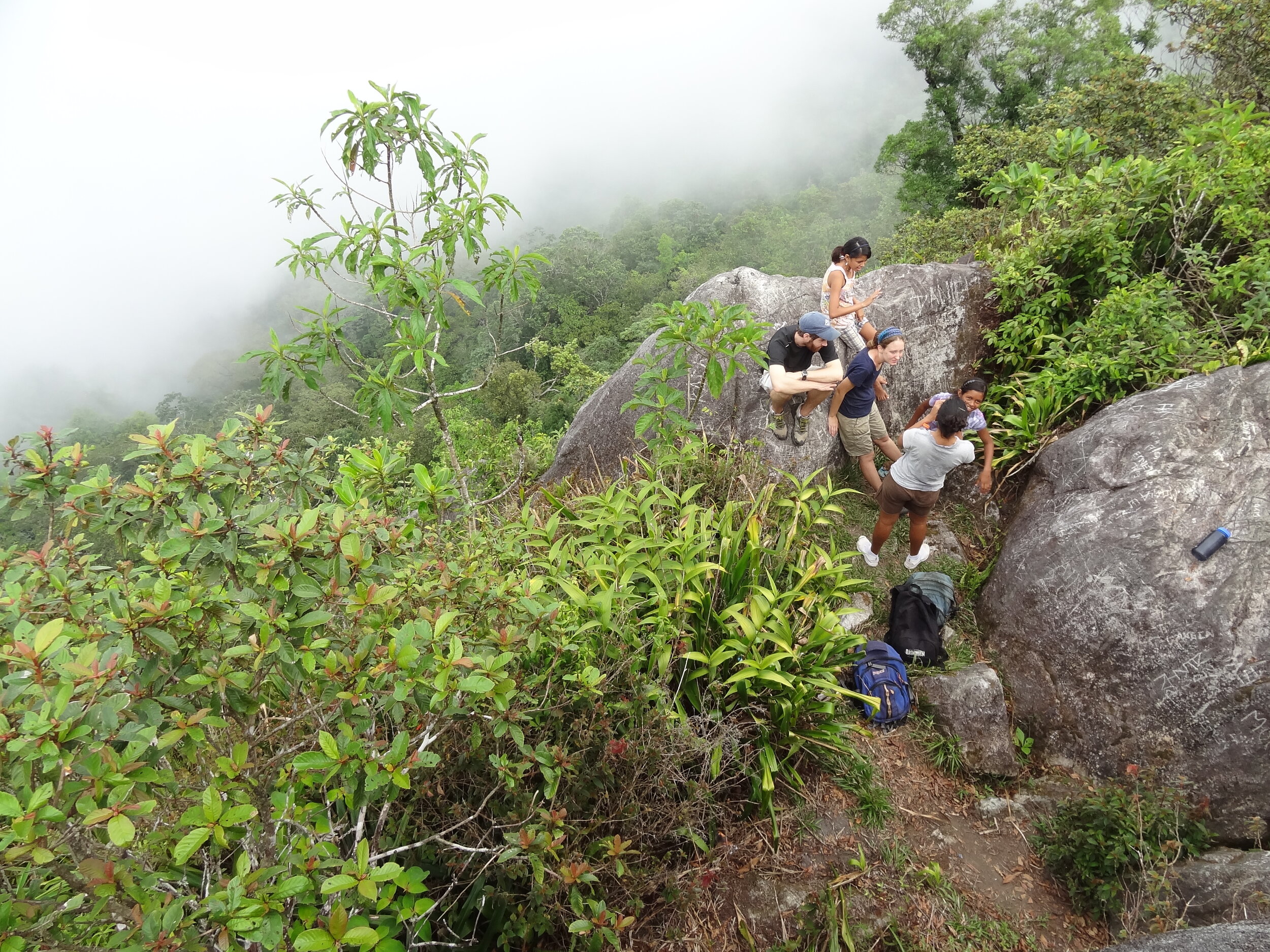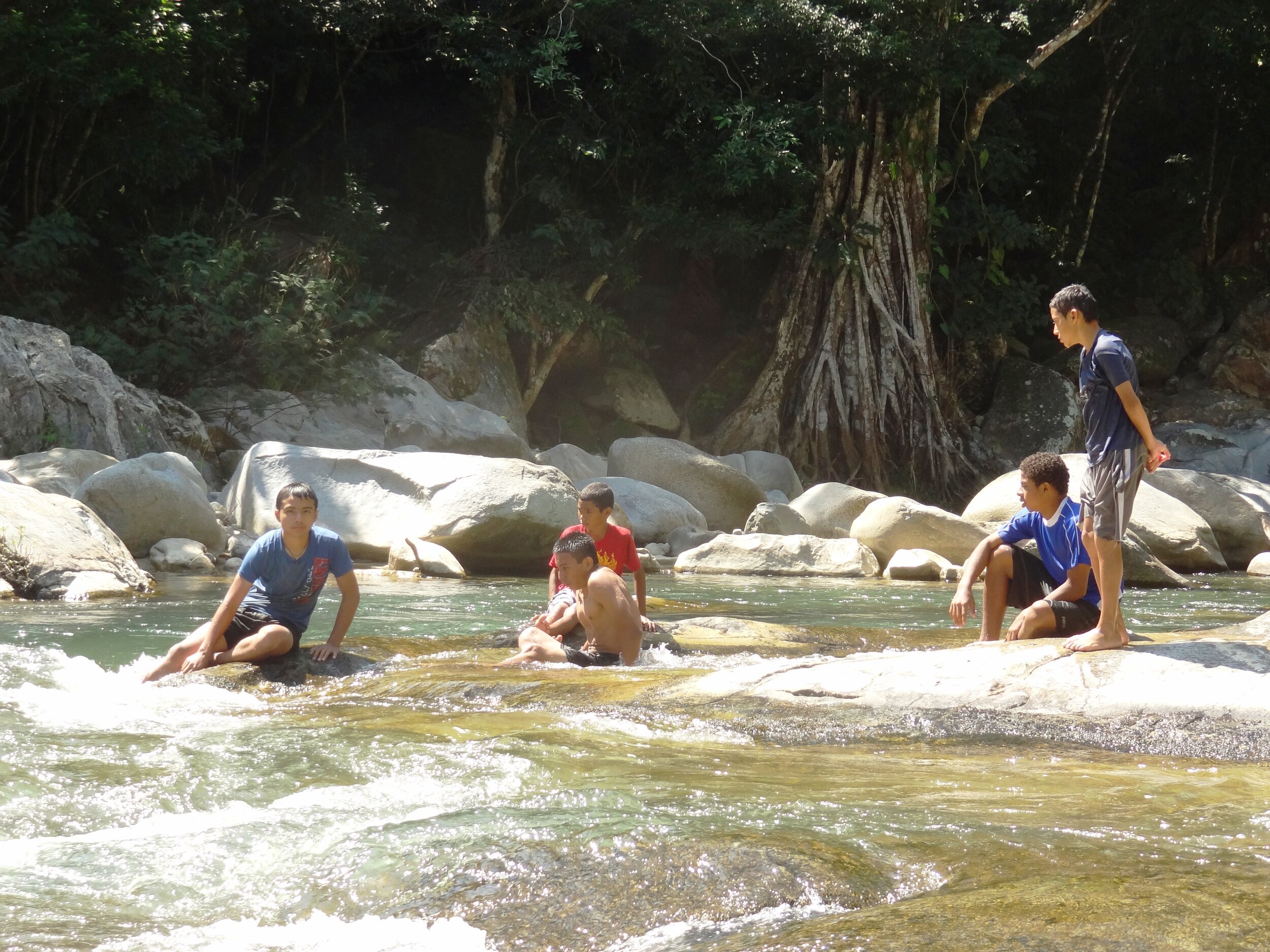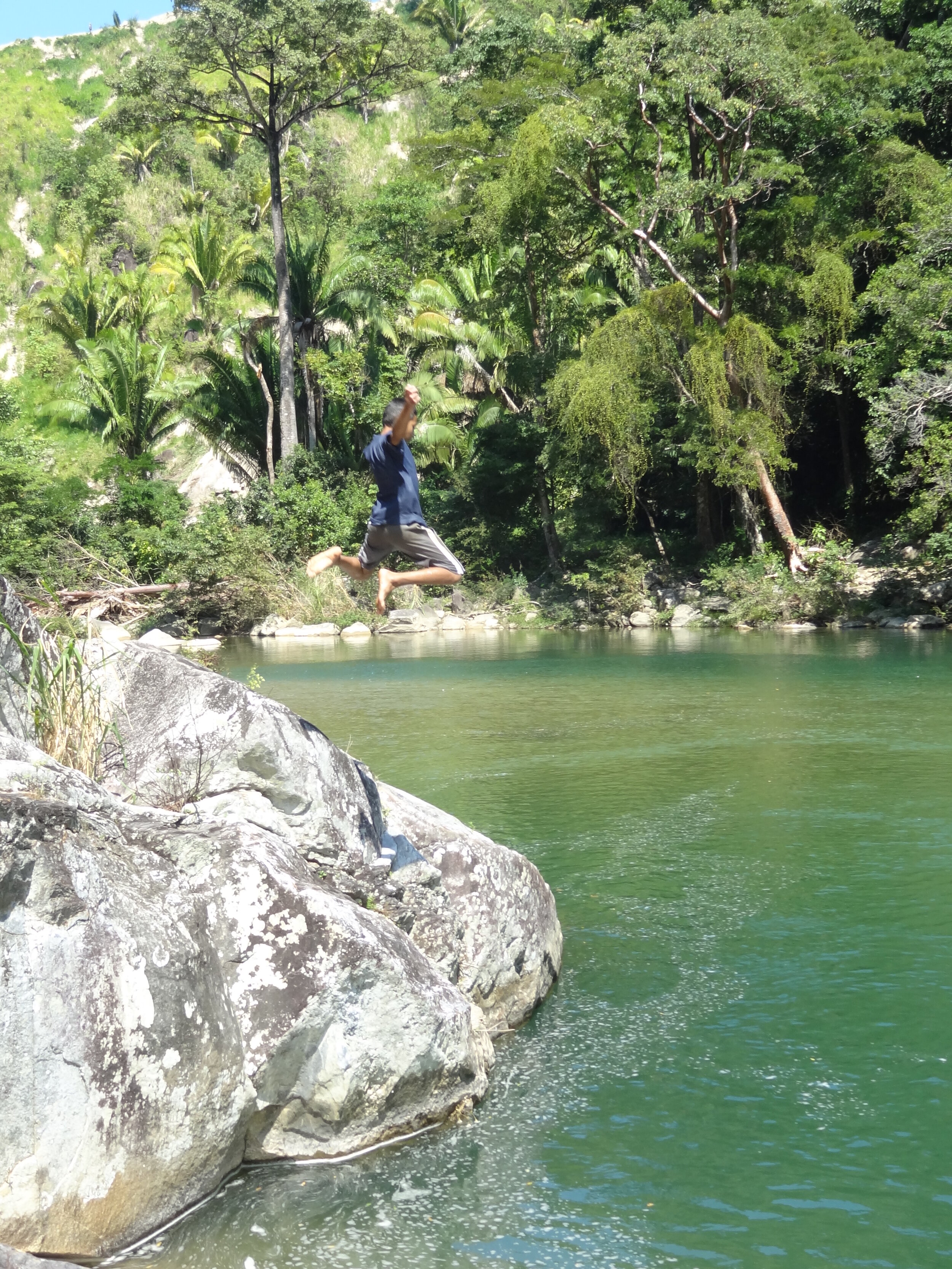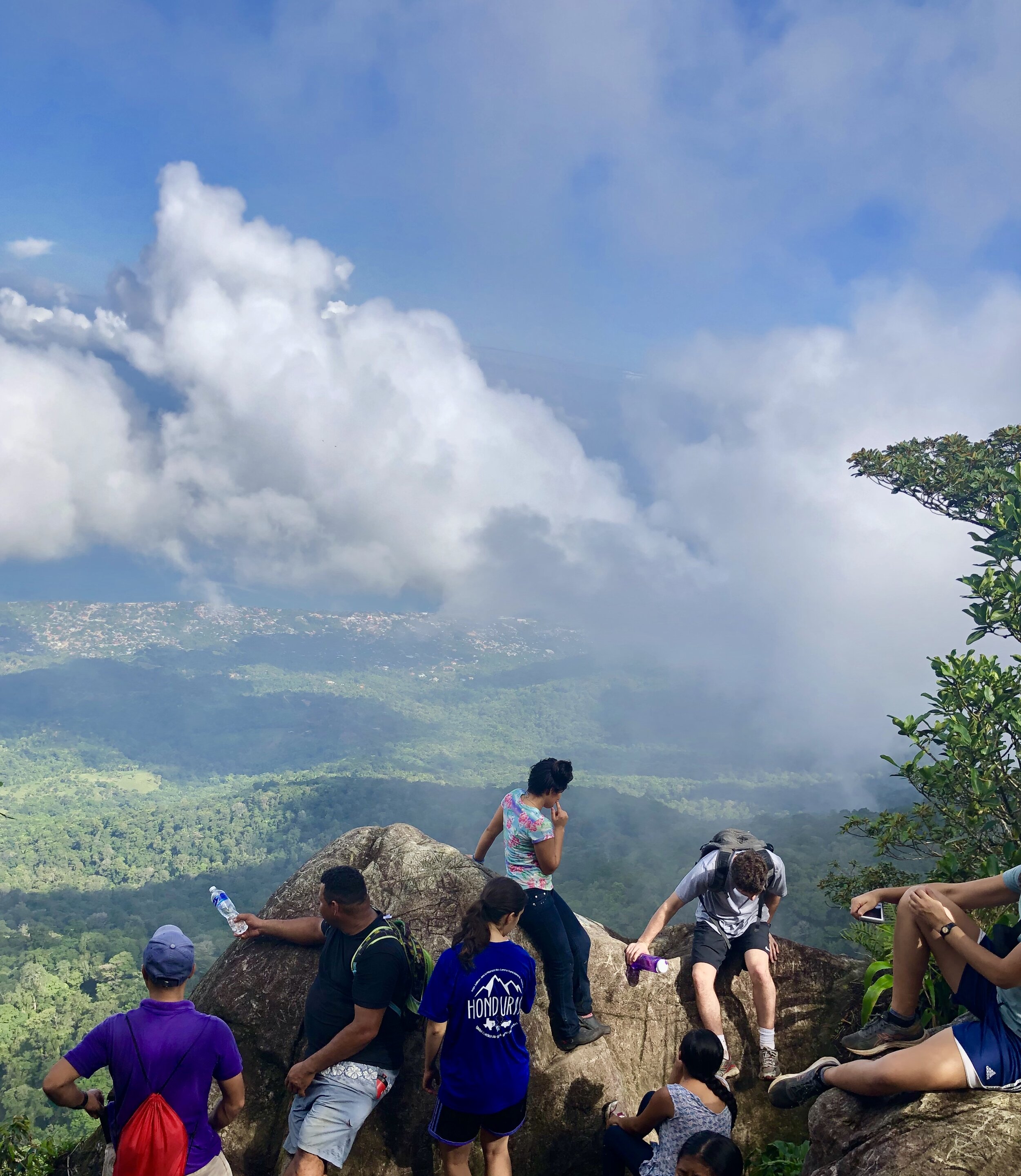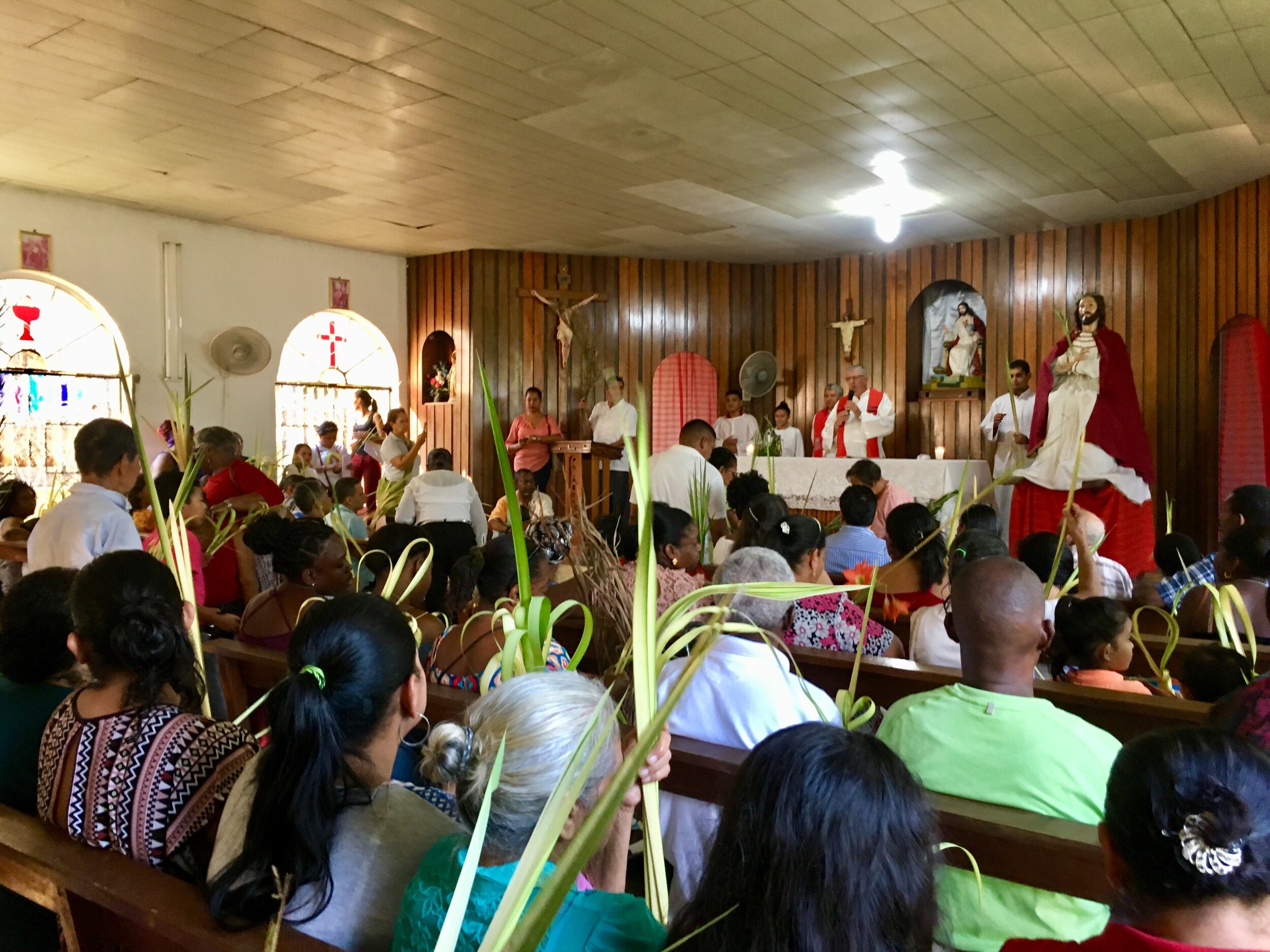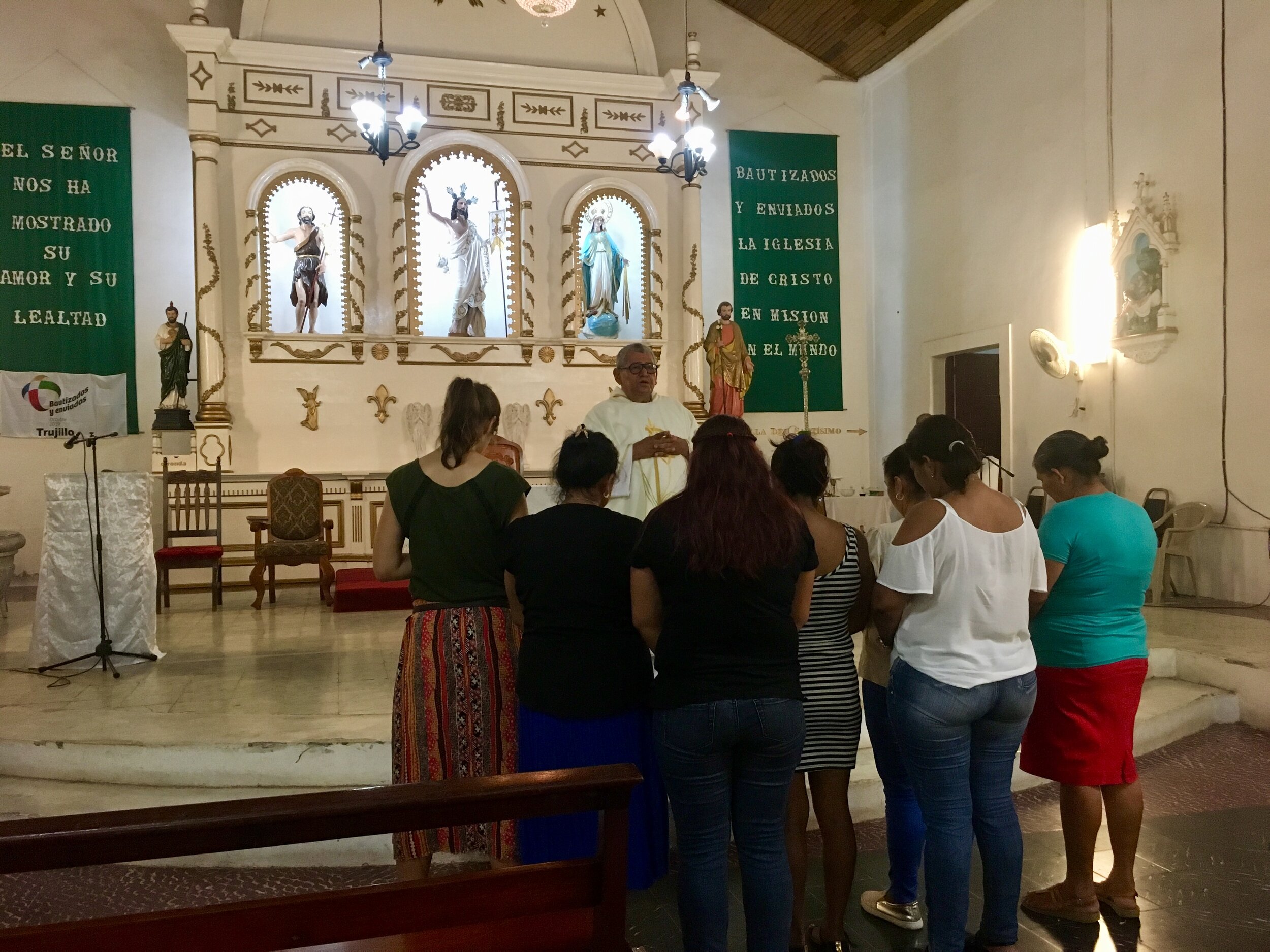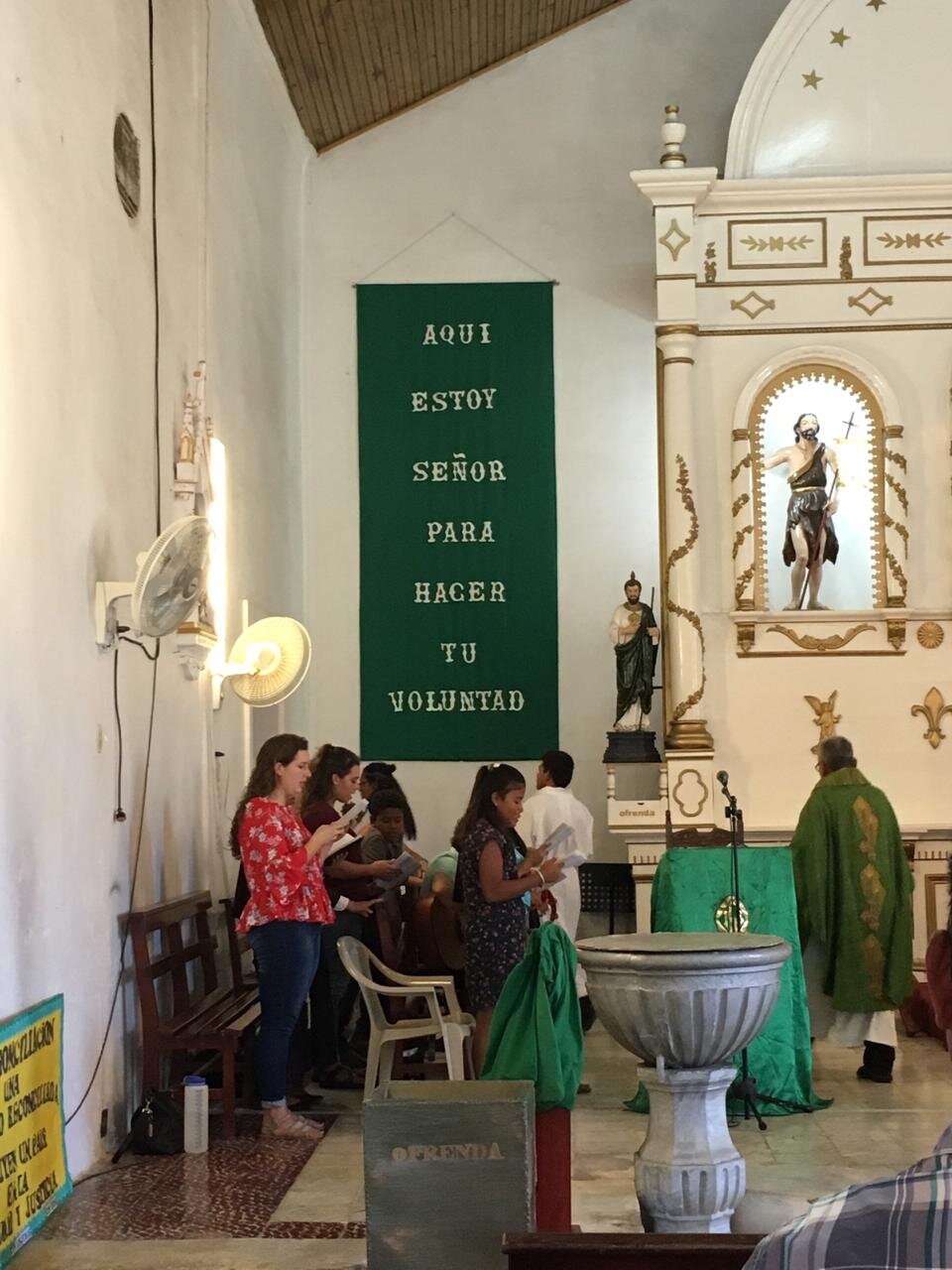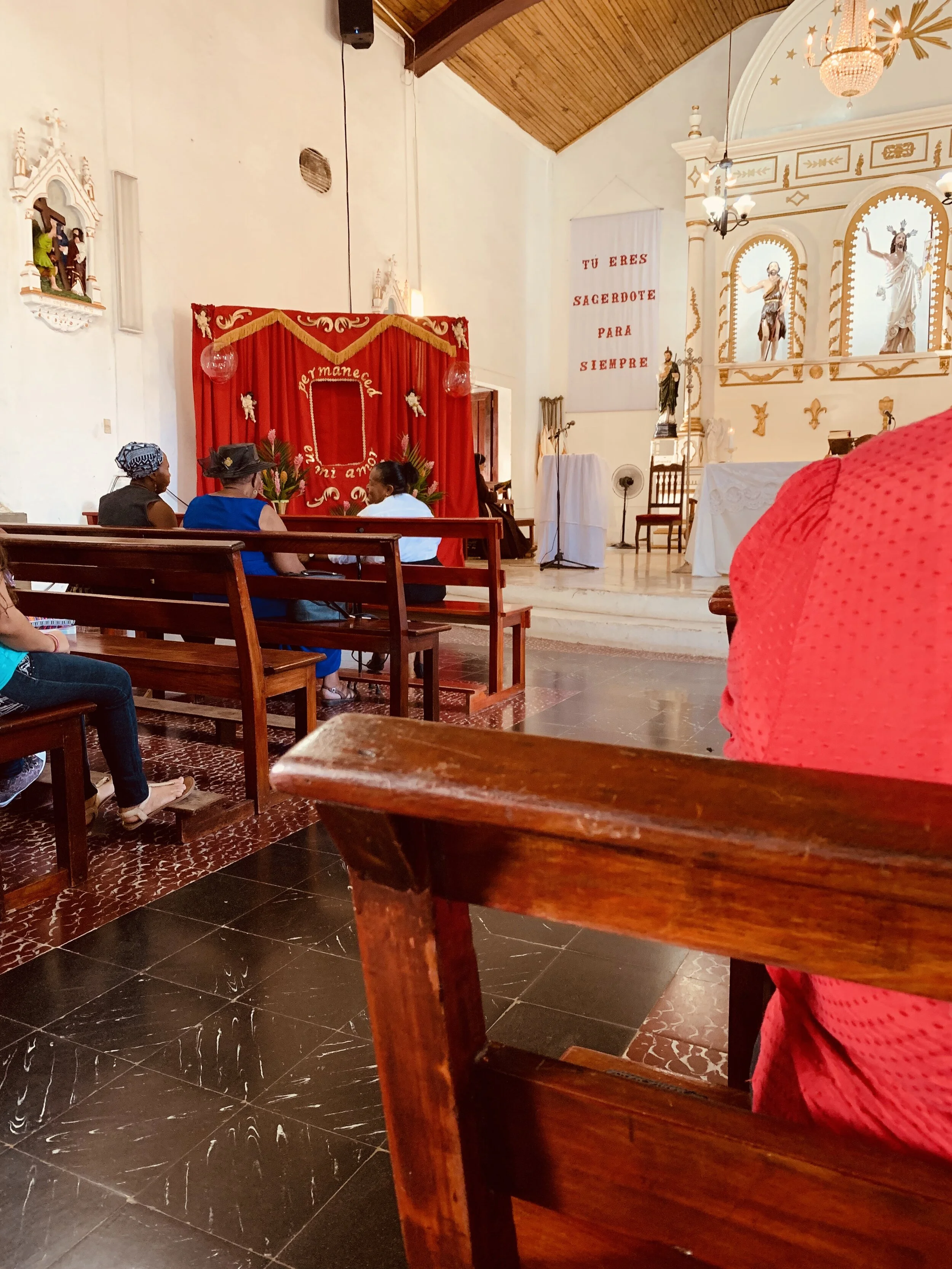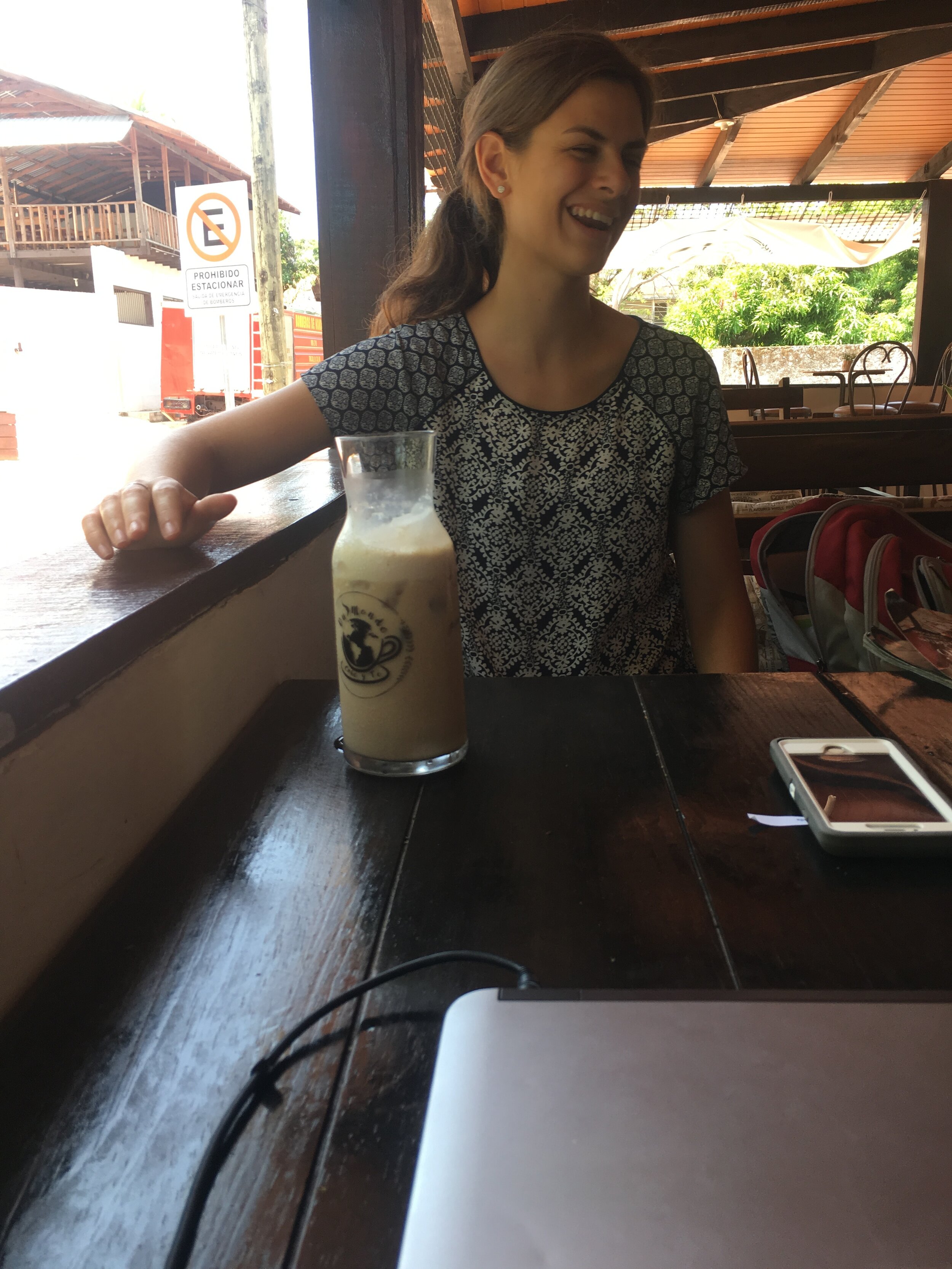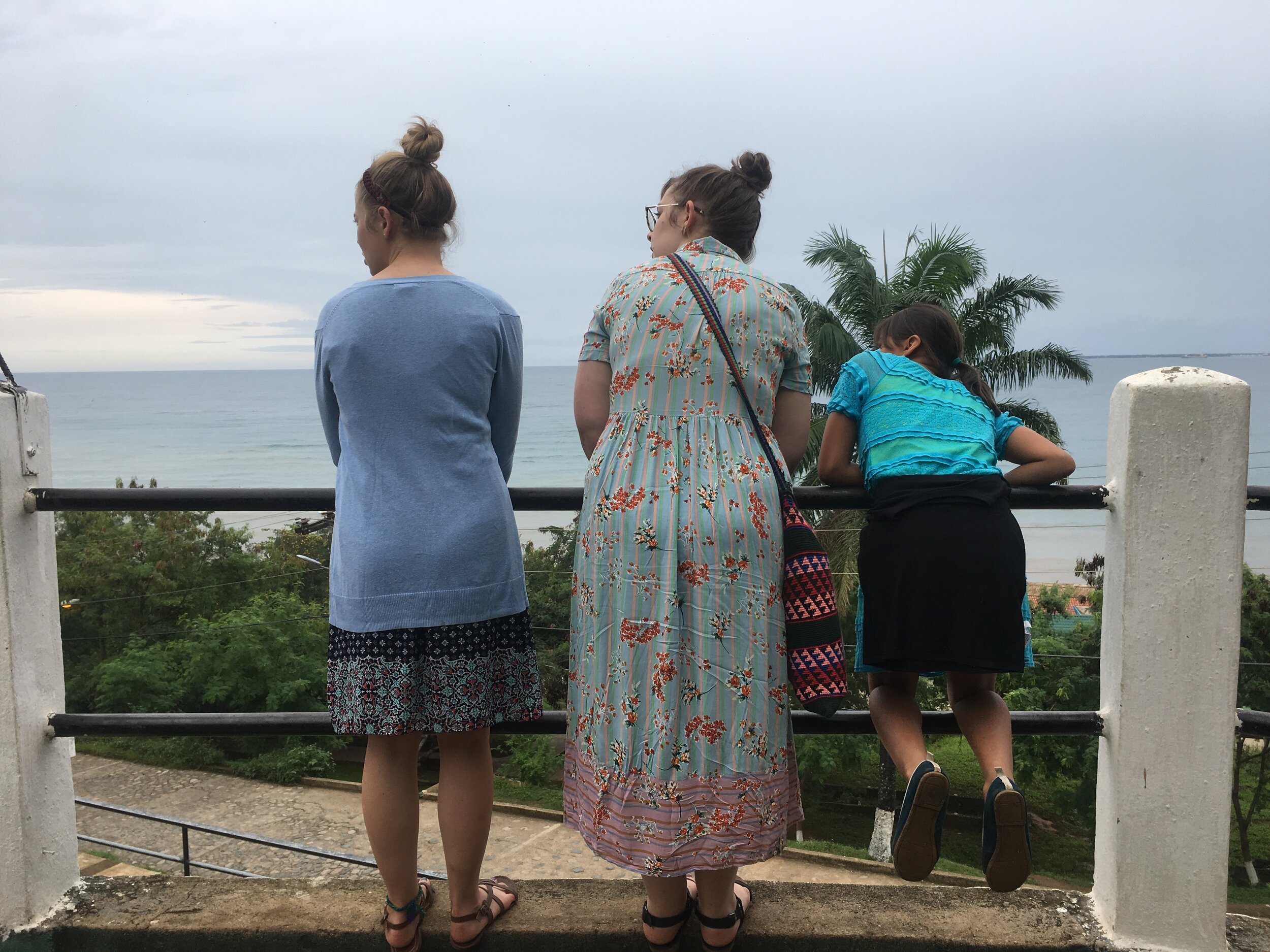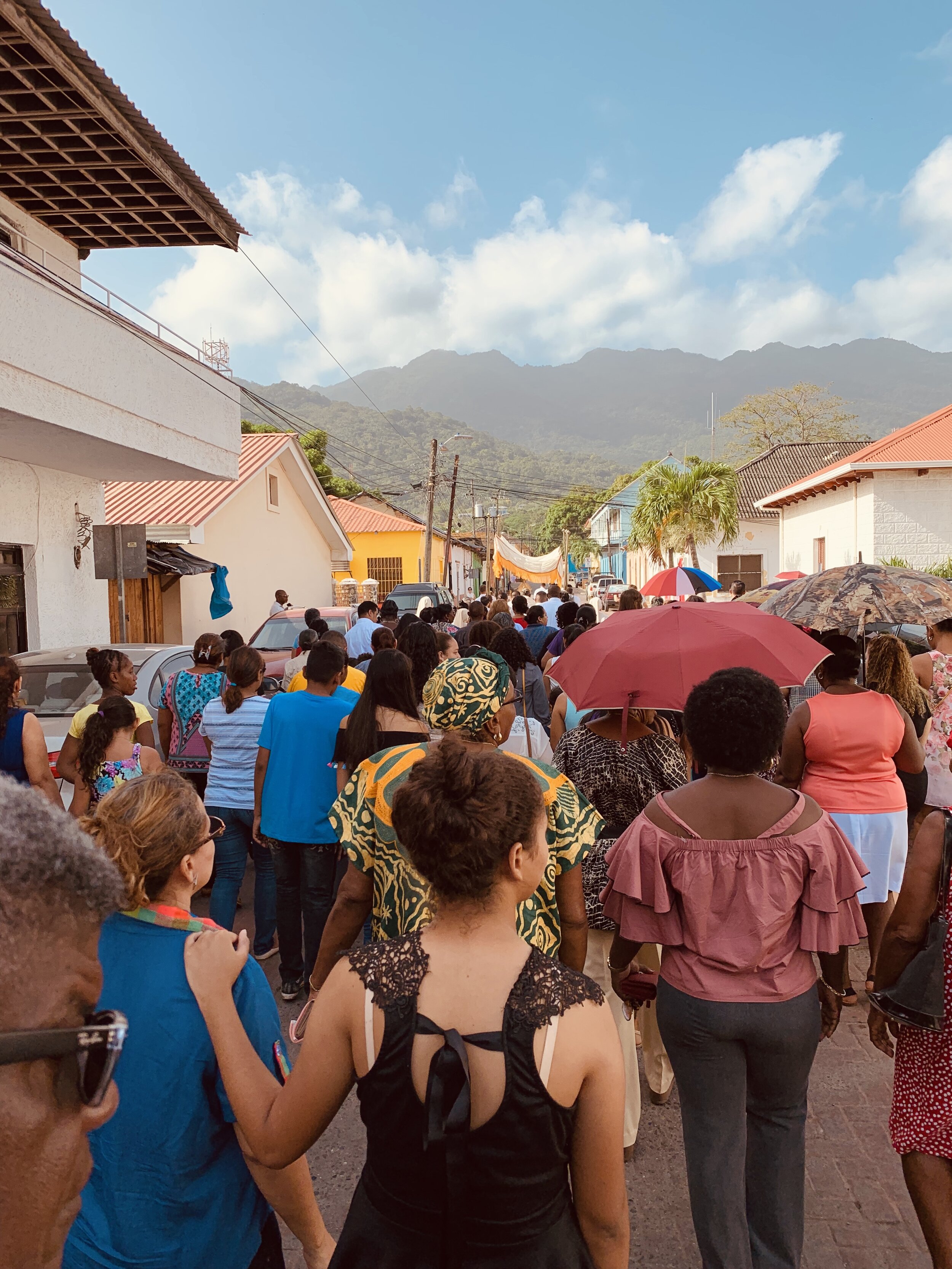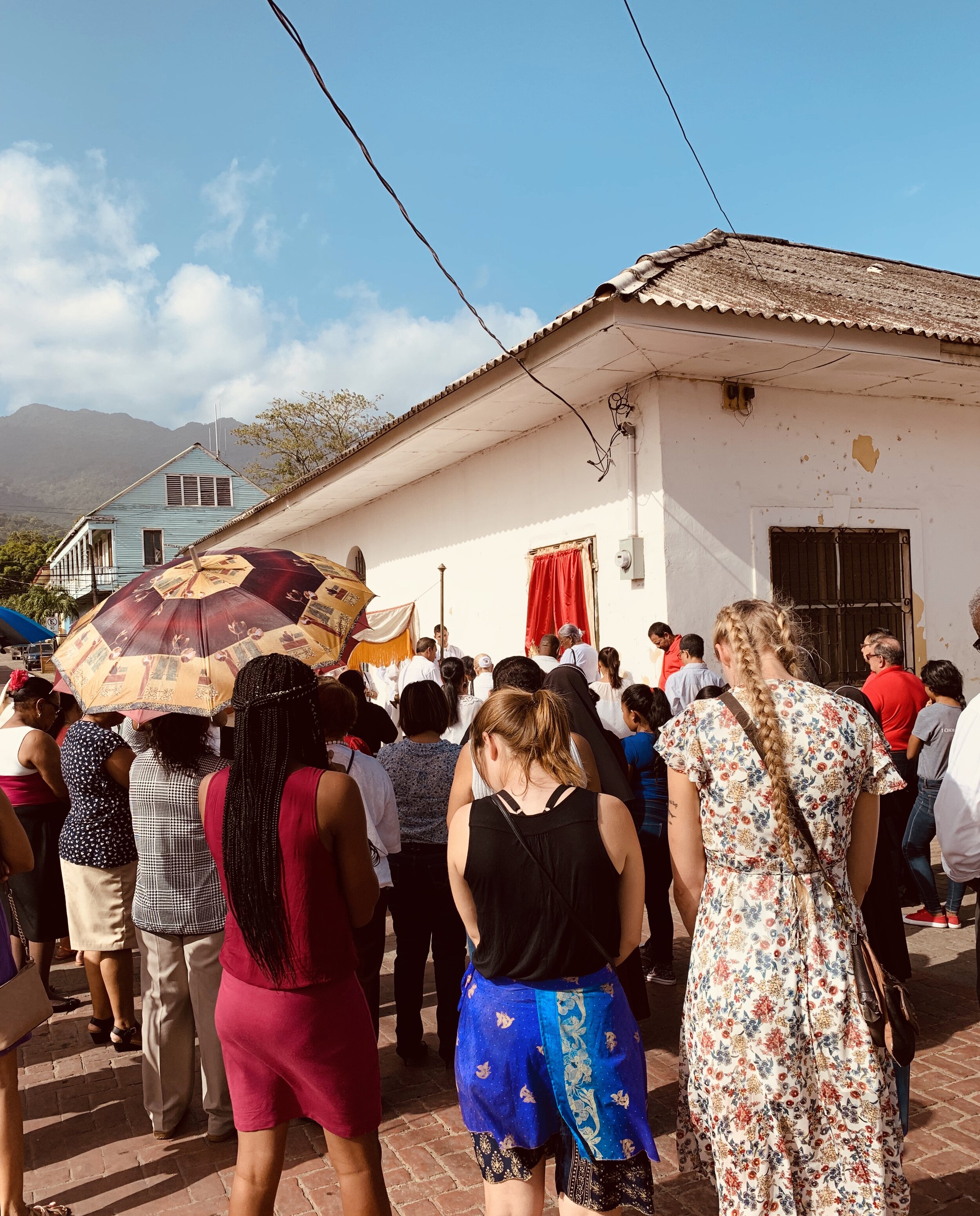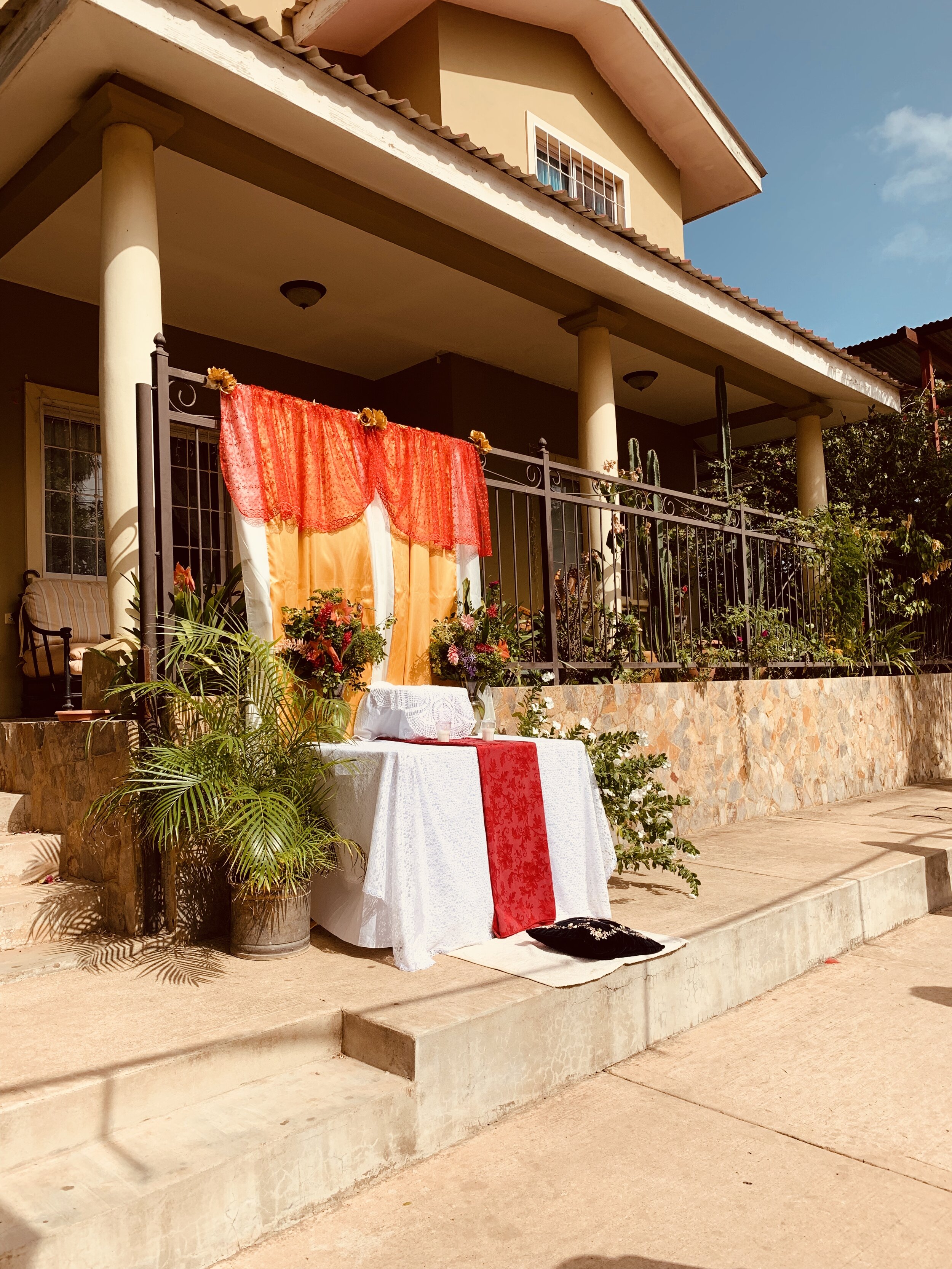Artwork created by Ally Bartoszewicz, former Finca missionary (2018-2019) and professional artist.
Welcome home
These are the words hundreds of children hear when they arrive at the Farm. We welcome you to our home, too, and want to take you on a tour. Follow the map above as we wind through our beautiful 22-acre property on the Trujillo Bay. Learn about each stop in the descriptions below and click through the slideshow. If you’re lucky, we might stop to pick up a refreshing mango or coconut while we walk.
#1: Holy Family chapel
La Iglesia de la Sagrada Familia is the heart of the Farm, providing a place to worship as one family. In the morning, children, tías, missionaries, and religious sisters gather to give thanks for a new day at Morning prayer or Communion service. In the afternoon, we gather for the recitation of the rosary, eucharistic adoration, or faith sharing groups. Monthly school masses, feast days celebrations, retreats, and visiting priests enrich the spiritual life of the Farm. Catechesis classes for the children of the Farm and the neighboring communities happen every weekend, culminating in sacramental celebrations every year. Two special areas of the chapel are the tomb of our founder Vincent and a beautiful stained glass window of the Annunciation, donated by friends of the Farm from Sherman, TX in 2004.
#2: Children’s Houses
Our family-style homes are the core of our mission. Between three and seven children live in each home, separated by gender and age. A Honduran woman (tía/aunt) or married couple care for the children 24/7 and live in-residence with them. The front porch has a patio with benches to sit and enjoy the sun. Homes have four bedrooms (three for the children and one for the tía) and one bathroom. The main living space has a large dining table and kitchen equipped with a gas stove/oven and running water. Behind each home are a clothes washing station, clotheslines, and a wood fire stove. Each home has a patron saint and the children celebrate their patron’s feast day with a prayer service and communal meal. These homes are just like yours: full of meals, homework, dancing, game nights, healing care, laughter, and love.
#3: beach
The Trujillo Bay coast is what first attracted our founder Vincent to the tierra (land) of the Farm. Our oceanside property is a natural reminder of God’s marvelous creation. The children, tías, missionaries, and sisters alike love to go to the beach to swim, play volleyball, build sandcastles, sing praise & worship, or walk along the shore. A few blessed times a year, the Farm community celebrates mass or Morning prayer on the beach for double wonder and awe at God’s grandeur! Watching the sunset over the Trujillo Bay is a cherished experience for all who visit the Farm.
#4: franciscan sisters convent
Las Hermanas Franciscanas Cooperadoras Parroquiales de la Asunción have blessed the Farm with three religious sisters since 2000. When our founder Zulena Pescatore left her position as full-time director, the sisters took over leadership of the Farm. While an on-site lay director assumed many responsibilities in 2010, the sisters still hold many important roles, including coordinating the childcare staff, teen programming, and spiritual life. This simple convent has a Blessed Sacrament chapel, a rooftop terrace, and living quarters for the sisters. The children get excited to visit for catechesis class, youth group, a swing in their hammocks, or an afternoon snack.
#5: Administrative offices
This is where our team of missionaries and Honduran professionals (psychologist, social worker, accountant) work throughout the day. Everything from therapy appointments and conflict resolution meetings to budget proposals and staff formation happens here. The clinical team uses this space to discuss the physical, psychological, and social health of each child and to create treatment plans every week. Missionaries spend hours lesson planning, updating clinical notes, and organizing the next Farm-wide scavenger hunt. The entire team enjoys this space for its collaborative environment and access to wireless internet, printers, and office supplies.
#6: Missionary house
With ocean views from the hammock and a perpetual pot of coffee, Casa Santa Teresita is a refuge for missionaries. The kitchen is a place of gringo-Honduran cooking creations and conviviality around the table for breakfast, lunch, and dinner. The sala (living room) boasts of an impressive library, the perfect card-playing table, and a cozy chair to read the Scriptures in the morning. Children frequently visit to borrow a board game or say hello. Living conditions are simple, just like the children’s homes. Each missionary shares a bedroom with 1-2 others and has a twin bed, dresser, and nightstand. Bathrooms run on cold mountain water and we wash clothes by hand. This simplicity begets joy and laughter as missionaries gather weekly for community night, team cooking, house meeting, and movie night.
#7: Maintenance Workshop
Local Honduran men manage this workshop as they care for the Farm’s property Monday-Saturday. They maintain our lush natural landscape, do repair work on all infrastructure, and coordinate new projects for continued improvement of living conditions at the Farm. The workshop is home to many tools, construction material, firewood, the water filtration system, and four vehicles. The maintenance team’s contributions stretch into our after-school program, where they teach the teens valuable skills such as automotive mechanics and carpentry. When we need an outdoor party venue, we move the Land Rovers and use this area to gather for food, fellowship, games, and dancing.
#8: peace garden
This space is a gift from Espíritu Santo Catholic Church in Safety Harbor, FL, who donated the materials and built the space in 2009. Nestled under the trees at the edge of the Farm’s property, the peace garden is a place of quiet reflection. A statue of Our Lady of Grace greets visitors for a rosary, prayer service, or Stations of the Cross. Missionaries come here for silent prayer time and the tías bring their children for a visit to la virgencita. We also use the space for small community gatherings and meetings.
#9: Fields
The Farm’s large property is truly a Caribbean paradise. Ceiba trees, tropical flowers, chickens, birds, and ants are reminders of God’s creation, big and small. Fruit trees cover the grounds, providing fresh snacks of mango, grapes, cocoplum, and coconut. At this spot on the map, a substantial area is set aside for growing our own vegetables. Recent crops include green beans, plantains, yuca, papaya, and radishes. The maintenance team cares for these fields daily and includes the children in their work. In our after-school program, teenagers learn about and are responsible for helping in every stage of the growth process, from preparing soil to harvesting. The pig pen is also among the fields, exciting two-year-old boys and missionaries alike.
#10: casa santa marta anD the director’s office
This building serves two functions for the Farm community. The left wing is guest housing for various visitors, including missionary’s families, benefactors from Honduras and the U.S., and Board of Directors members. It is named Casa Santa Marta in honor of St. Martha who served Jesus with great hospitality in her home. The right wing is the office and home of our current Director, Maria Ofelia. In 2010, a lay director took over leadership of the Farm from the Franciscan sisters and began to live on-site. Maria Ofelia fearlessly leads our Honduran team out of this office. Her role has many responsibilities, including leadership of our clinical team, management of Farm budget, coordination of the various programs and departments, and simply being present to the Farm community at prayer times and meals. We are proud to have a strong, Catholic, Honduran woman directing our program for Honduran children..
#11: Sacred heart clinic
La Clínica del Sagrado Corazón provides health care for the children, students, employees, and missionaries of the Farm and members of the local community. A general medicine doctor comes to the clinic twice a week to hold consultations, serving approximately 1,500 patients every year. The doctor evaluates and diagnoses patients, and missionary nurses administer low-cost, subsidized medications and treatments. Equipped with a dentistry room, local dentists provides dental care at the clinic annually. Throughout the week, nurses organize and clean the clinic, plan doctors’ visits, and attend to the daily health care needs of the Farm and emergency health care needs of the local community.
#12: Soccer field
Our soccer field has seen blood, sweat, tears, cheers, and many bare feet chasing soccer balls. The national Honduran pastime enamors children, tías, and missionaries alike. When homework and chores are done, games of soccer, capture the flag, and tag begin. Missionaries and teenagers join local men’s and women’s soccer teams who host practices and matches on the Farm field. Lovingly referred to as the campo, this is always a great spot to play or sit on the sidelines to cheer on your friends! Occasionally, the community gathers here to pray the rosary or watch the sunset.
#13: PANTRY and clothing storage, Future guest housing
This building has many functions. One area serves as the clothes locker, where we store all clothing donations for the children. When we have donations in abundance, we host a low-cost clothing sale for our neighbors. Another area is the food pantry, where we store the dry goods like beans, rice, and flour, and household items like cleaning supplies and personal hygiene items. Multiple times a week, a missionary or religious sister distributes vegetables, meat, and dairy and each house comes to the pantry to collect their provisions. Each house also has a refrigerator/freezer here. The final area of the building is being remodeled for future guest housing.
After a successful fundraising campaign, we changed the roof of this building in 2020 to fit it for solar panels. While frequent power outages and high electricity bills greatly impact our community today, we plan to install an 11 kilowatt Hybrid (Grid-Tie and Battery) Solar Energy package at the Farm in 2021. This will cover 100% of our electricity bill!
#14: Opening gate
Our security guards welcome all who come to the Farm with a big smile. In order to ensure the safety of all who live at the Farm, a tall fence surrounds the property and all visitors must sign in with photo-id at our front gate. One security guard serves during the day and two guards work overnight and on the weekends. As members of the local community, these men are highly knowledgeable about the local security situation and inform the Farm if any concerns arise.
#15: School library, offices, and classrooms
This building is the focal point of our elementary school Centro de Educación Básica Católica San Pedro and middle school Instituto Vicente Pescatore.
The majority of the space serves as the school library, where students come to check-out books weekly. After school, the library is used for Farm community meetings, movie nights, and studying. There is also a special education classroom equipped with Montessori-style learning tools where a missionary teacher supports students with varying learning abilities. Around the corner, another missionary teacher is busy with building blocks and alphabet lessons in the kindergarten classroom.
Other offices in this building include the principal’s office and teacher’s lounge full of learning resources, craft supplies, and printers. Outside, students gather every morning for school assembly, prayer, and announcements. And throughout the day, many little ones find their way to the park and playset.
#16: Elementary school
The school day begins at 7:20 AM as licensed Honduran and international missionary teachers work side-by-side to educate approximately 75 students. Our curriculum highlights math and Spanish proficiency, along with social studies, science, history, English, computers, art, physical education, and religion classes. Six open-air classrooms comprise the elementary school, serving first through sixth grades. Every classroom has desks for each student, a white board, and fans for the hot summer months. Graduation from elementary school is the typical education level of most Hondurans.
#17: middle school
Observing that many of our sixth grade graduates could not afford to commute to Trujillo for middle school, our colegio was built in 2007. Our 35 seventh through ninth grade students rotate between three classrooms for their studies. At the end of the hallway, the computer lab has 12 desktop computers for typing, English, and computer classes. We use the porch of the middle school for school assemblies and events such as Independence Day and Mother’s Day. When a community celebration requires a dance floor, we retract the folding partition walls that divide the classrooms to create an open space perfect for holiday dinners, graduation ceremonies, and birthday parties.
#18: new classrooms
These new classrooms are an exciting addition to our school. Funded by a grant from the United States military, they were constructed by a group of national guard soldiers in 2019. Our principal is excited to convert these classrooms into an art studio and science lab for the students.
#19: mojaguay
Uninhabited land at the time of the Farm’s founding, families began to construct homes in our neighborhood when they heard about our excellent Catholic school and low-cost medical clinic. Today, approximately 100 families live in this community, including many of our students. Missionaries often form close friendships with their student’s families and visit them during the week. The pulpería, a small store with snacks and groceries, is a popular spot for conviviality and watching fútbol on television. We enjoy visiting St. James Church, constructed by Mojaguay community members in 2018, for feast day celebrations, Stations of the Cross during Lent, and a women’s faith sharing group that meets weekly. Our friends in Mojaguay remind of the beauty in community and simple trusting faith.
#20: trujillo
The nearest town is Trujillo, Colón, approximately 5 miles from the Farm. The original capital of Honduras, this charming town has a diverse combination of colonial roots, Garifuna culture, and beachfront hospitality. We travel to Trujillo throughout the week to buy groceries, pay bills, collect mail, and offer transportation for our staff who live in town. High school students attend classes here and other teenagers attend vocational school classes in electricity, cooking, or mechanics. The whole community attends mass weekly at the Cathedral of St. John the Baptist. Once a month, the Farm coordinates the liturgy, complete with lectors, altar servers, and a choir. We enjoy excursions into town for special feast day liturgies, trips to a restaurant, and the Independence Day parade.

